
- Latest Stories
- Our Commitment
- Customer Reviews

The 15 Best Treks of the Himalayas

Wondering what the 15 greatest treks in the Himalayas are? Home to the world’s highest mountains most trekkers head straight for Everest Base Camp and while it’s a great option the opportunities for adventure abound among the peaks of the Himalayas of which over 100 exceed 7000m or 24000 feet. Here is a quick rundown of 15 great treks from Bhutan to India starting with Nepal.
The Greatest Treks of Nepal
Nepal lies almost in the middle of the Himalaya and while it’s a small country it hosts 8 of 14 of all the world’s mountains over 8000m.

#1: Everest Base Camp
This has to be our all time favorite trek in the Himalayas. Great views of Everest, a good trail, wonderful tea houses to stay in and almost continuous views of some of the tallest peaks in the world will keep your attention during what is typically an 11 day trek. The trail ends at Everest Base Camp where you can look directly up the ice fall of the Khumbu Glacier towards the peak of Everest which is still an impressive 3500m above you. On the way you will see 3 of the worlds 10 tallest peaks which asides from Everest also include Cho Oyu (8201m/26,906ft) and Lhotse (8,516m/27,940ft). Just as spectacular although not as tall are the ice laden walls of Pumori (7,161m/23,494ft) and Ama Dablam (6,812m/22,349ft). Trekking is possible from September to June and although it’s cold in December and January its probably one time of year you can find solitude.
Booking Information: Everest Base Camp 14 Day Trek Related Reads: Everest Weather , Treks in the Everest Region , Everest Blog Posts

#2: Poon Hill and the Annapurna Base Camp
This is really two treks that can either be done separately or together. Like the Everest Base Camp trek this one offers a great trail and fabulous tea house lodging for those looking for a little comfort. If you have just four or five days the trek to Poon Hill is one of the best short treks in the Himalayas and offers fantastic up close views of Annapurna. If you have a little more time make the journey to Annapurna Base Camp lying in the famed Annapurna Sanctuary where you can see a fantastic view of the south face of Annapurna I (8,091 m/26,538 ft) the 10th tallest peak in the world. The route approaching the base camp provides great views of the hanging glaciers and sheer cliff face of Machapuchare (6,993m/22,943ft) known locally as “Fish Tail or the Matterhorn of Asia.” Fish Tail is sacred to the locals and off limits to climbers.
Booking Information: Annapurna Base Camp 14 Day Trek , Poon Hill 9 Day Trek Related Reads: Trekking the Annapurna Region

#3: Manaslu Circuit
The Manaslu Trek is a 14 to 16 day tea-house trek which encircles the world’s 8th highest peak. In recent years the tea houses and trail have been improved and the trek is quickly becoming a popular alternative to the Annapurna Circuit. The total number of visitors in the past few years has been around 2000 with most coming in October. This is one of Nepal’s great treks and it gets you away from the crowds at the same time. The trek remains in a restricted area meaning that a $50 per/week fee is charged to trekkers.
Booking Information : Manaslu Circuit Trek 18 Days

#4: Makalu Base Camp Trek
It’s a 16 day trek to the base camp of Makalu (8463m) the worlds 5th tallest peak. Unlike the treks mentioned so far this is not a tea house trek and it requires organizing for camping. The trek starts from 435m and so transverses through a range of environments as it heads up the Barun Valley to the Makalu base camp. It’s a true wilderness experience with some of the last remnants of untouched forests and beautiful alpine meadows.
Booking Information: Makalu Base Camp 23 Days

#5: Upper Mustang Trek
The Upper Mustang Trek highlights the desert beauty and ancient Tibetan cultures of Nepal. The 18 day trek heads north from Jomsom on the far side of the Annapurna Range. A special permit is needed to enter the area and the trek needs to be arranged as a combination tea house and camping trek. Very few tourists (maybe 1000 a year) make the journey to see this remote part of Nepal. Some of the highlights of the trek include the ancient “Forbidden City” and the ancient monasteries and caves. The dry mountainous landscape might seem more similar to Ladakh in India then the other treks in Nepal.
Booking Information: Upper Mustang 18 Days
The Greatest Treks of India
The Himalayas span across northern India from the Indian state of Arunachal Pradesh in the east to Kashmir in the west. Sikkim in eastern India is famous for several trekking that skirt the base of Kanchenjunga the world’s third tallest mountain. Sikkim is one of the wettest places in the Himalayas and the culture is dominantly Buddhist. The central portion of the Indian Himalayas which includes the states of Himachal Pradesh and Uttarakhand is famous for its trekking routes many of which are also Hindu Pilgrimages that go high into the Himalayas. Ladakh in the west is one of the driest regions of the Himalaya and provides good trekking options when the rest of the region is experiencing Monsoon rainfall. Kashmir occupies the westernmost portion of the Himalayas and has often been referenced as “heaven on earth” for its beautiful alpine meadows and majestic pine forests although the beauty is at times overshadowed by security risks.

#6: Goecha La Trek
The Goecha La trek is an 8 day trek in the eastern India state of Sikkim. This is one of the wettest portions of the Himalayas due to the proximity with the Bay of Bengal and direct line of influence from the Indian Monsoon. The journey is at first up an often muddy trail through thick rain forests and then gradually the lowland forest is replaced by beautiful Rhododendron forests which are in full bloom in early May. The first view points are from Dzongri Top where you can see both Kangchenjunga and Mount Pandim. Dzongri is itself a stopping point for many but its worth trekking onwards to the Samiti Lake a sacred lake whose crystal waters are the source of the Prek River. Goecha La (16,000ft/4876m) itself serves as a basecamp for those looking to scale the southeast face Kanchenjunga. Here are 4 other great treks in Sikkim.

#7: Gangotri Glacier Trek
This 6+ day trek (pilgrimage) takes you to the source of the most sacred river in India the Ganges River. The trek starts at the end of the road near the temple town of Gangotri and heads 18km to Gomukh which is considered the source of the Ganges at the base of the glacier. The landscape here is spectacular with views of Mount Shivling and the Bhagirathi group of mountains. This is a great trek to see beautiful peaks, one of the largest glaciers in the central Himalaya.
Related Reading: Greatest Treks of Uttarakhand

#8: Frozen River Trek
An ancient route along the frozen Zanskar River this 6 day trek connects the villages of the Zanskar Valley with the village of Chilling which lies on the road to Leh (Ladakh, India). It is best to take this trek in late January and early February when the conditions are coldest and the frozen river can be used as a pathway. It’s a wonderful and beautiful trek if you can brave the average -10 C temperatures the day which fall as low as -20 to -25 C at night. The trek can be difficult in places where the river is not completely frozen over and a new path must be forged over the snow laden banks. It is certainly a once in a lifetime experience.
Related Reading: Ladakh Blog Posts

#9: Markha Valley
The Markha Valley trek is a 6 to 8 day trek and one of the most famous and easiest to organize in Ladakh, India. Trekkers also have the option of choosing to climb Stok Kangri (6,153 m). This is a trekking peak and since the top can be reached relatively quickly one must be careful to properly acclimatize. The trek itself involves crossing three passes – Stok La (4848 m), Kongmaru La (5274 m) and Gandla (4878 m) and follows the banks of the scenic Markha River valley. Camping near the base of Kang-Yutze peak is one of the highlights as well as getting a glimpse of Tibetan culture.
Related Reading: Ladakh Blog Posts , Climbing Stok Kangri
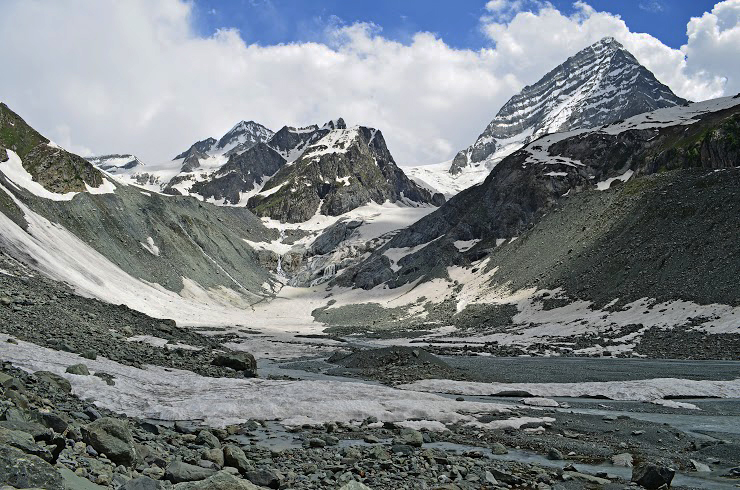
#10: Kolahoi Glacier Trek
Trekking in Kashmir is like nowhere else in the Himalayas with its beautiful mountain meadows and majestic pine trees it has often been compared to the Alps of Switzerland. The 3 day trek up Lidder Valley to Kolahoi Glacier is easily accessed from Srinigar and a good option for a first trek in Kashmir. The trail follows the course of the Lidder River and offers panoramic views of the surrounding snow laden peaks and meadows abound with wildflowers. During the summer the canyon is home to the Gujjars a nomadic people who have herded sheep in the region for centuries. If you make it all the way to the head of the valley you will be rewarded with fabulous views of the Kolahoi Glacier.
Related Reading: Trekking in Kashmir
The Greatest Treks of Tibet
The Himalayas of Tibet are much drier and colder than in India and Nepal and the best time to Trek is from May to September. Getting to Everest Base Camp in Tibet is more a drive than continuing upwards to the advanced base camp offer a once in a lifetime experience and is as high on Everest as you can go without a climbing permit.

#11: Kailash Circuit
The symmetrical mountain is one of the most beautiful and sacred of the Himalaya and the Kailash Circuit is famous as being one of the most difficult treks for religious pilgrims in the world. The mountain is considered by Hindu’s as the abode of Lord Shiva and is geographically and culturally important as the source of the giant rivers of India which include the Brahmaputra and Indus. Ancient texts refer to the mountain as the center of the world. A journey around the mountain will free pilgrims from endless cycles of birth and death. Pilgrims having been making the trek to the region in a tradition that dates back at least several thousand years. The journey is made in a clockwise direction by Hindus and Buddhists while followers of the Jain and Bönpo religions travel the 52km trek around the mountain in a counterclockwise direction.
Related Reading: Best Treks of Tibet

#12: Advanced Everest Base Camp
When most people think of Everest Base Camp they are referencing the base camp on the southern side of the mountain in Nepal which is much more popular as a trekking route. If you want to get to Everest Base Camp in Tibet you can actually drive all the way but the route beyond base camp is where it gets interesting. The route to Mount Everest Advance Base Camp (EABC) at 6,340m / 20795 ft is the highest that one can go on Everest without a climbing permit. This route covers the first 3 camps used by climbers as they approach the summit of Everest via the Northeast Ridge and is considered the world’s highest trek. The route has to Mount Everest Advance Base Camp is a challenging but beautiful trek through a stunning mountain landscape. The journey to EABC starts in Lhasa (11,975ft/ 3,650m) the capital of Tibet where it’s best to spend a few days acclimatizing before heading out towards Everest.
Booking Details: Trek to Advance Base Camp Related Reading: Best Treks of Tibet , The World’s Highest Trek
The Best Treks of Bhutan
Bhutan lies in the western portion of the Himalayas and is often shrouded both in mystery and literally in clouds. Arranging a trek here isn’t as simple or Nepal or India but Bhutan certainly presents some interesting trekking options (Read more – Best Treks in Bhutan ).

#13: Chomolhari Trek
This 10 day trek starts in Paro Valley and heads to the base camp of Chomolhari (7,326 m) the second tallest peak in Bhutan. The mountain is sacred to Tibetan Buddhists and restrictions mean few have ever climbed this beautiful peak. The trek combines beautiful mountain scenery with the unique culture of Bhutan where outsiders have had limited access for years. This is a camping trek that reaches a high point in elevation of almost 5000m.

#14: Snowman Trek
The Snowman Trek is a 25 day journey that traverses the spine of the Himalaya between Bhutan and Tibet. Crossing over 11 passes of which four are over 5000m in height the trek is often called the worlds most challenging. Asides from the passes the trekker most also deal with generally inclement weather and be prepared for almost complete isolation from the outside world. Starting in Paro, the trek generally traverses the spine of the Himalayas between Bhutan and Tibet. If you are thinking of going the best bet for good weather is during October before the snows come to the high passes and just after the monsoon ends.
Image credit: Christopher Fynn
Technically the mountains lying to the west of the Indus River are not considered part of the Greater Himalayas so the Karakoram should be viewed as a distinct mountain range. Security is always a concern trekking or climbing in Pakistan and we don’t recommend it but the beautiful trek up to the K2 Base Camp is certainly on our to do list if the situation improves.

#15: K2 Base Camp Trek
K2 (8611m) is the second tallest mountain in the world and this 20 day trek to the base camp is a once in life experience. The journey starts with great views of Karakoram Ranges with Nanga Parbat but the real highlight may be Concordia which is often called the “the Throne Room of the Gods.” Concordia is at the junction of the Godwin Austen and Baltoro glaciers and is ringed by 4 of the 14 highest peaks in the world. Those looking to summit Gasherbrum II, Gasherbrum IV, Chogolisa, Mitre Peak, Masherbrum, Broad Peak and the Trango Towers all pass this same route. This is not an easy journey to organize but it could not be left out as it must be one of the most impressive journeys in the Himalayas (One with the founders of Himalayanwonders).
Have some suggestions of great treks that we have left off this let us know as we will be updating and revising it.
About the Author Robert Hatch
Rob is an outdoor enthusiast and traveler who got tired of staring at the mountains from his desk, he now spends every minute he can on them instead. He fell in love with Nepal on his first visit and has looked for every opportunity to get back to the Himalayas ever since. He helps our guests find and plan their perfect Himalayan adventure.
Contact the author
XHTML: You can use these tags: <a href="" title=""> <abbr title=""> <acronym title=""> <b> <blockquote cite=""> <cite> <code> <del datetime=""> <em> <i> <q cite=""> <s> <strike> <strong>
Click here to cancel reply.
29 comments
Popular treks.

What’s Hot

- Climate and Weather (3)
- Everest Base Camp (2)
- Himalayas (8)
- Himachal Pradesh (1)
- Kashmir (3)
- Uttarakhand (1)
- Annapurna (4)
- Eastern Nepal (1)
- Everest (15)
- Kathmandu (4)
- Langtang (4)
- Staying Healthy (2)
- Training & Preparation (2)
- Trekking Peaks (3)
- Trekking Tips (6)

- Choosing a Trek
- Tea House Trekking
- Trekking Tips
- Flying to Lukla
- Packing List
- Fitness Training
- Travel Insurance
- Arrival & Visas
- Best Time to Go
- Staying Healthy
- Meet the Team

- Privacy Policy
- Terms & Conditions

Discover the Himalayas
Get our free monthly newsletter highlighting the best treks in the Himalayas.
Get our free monthly newsletter highlighting the best treks in the Himalayas. Get Inspired by amazing photos and our practical trekking advice.
Trek The Himalayas

- See all photos

Similar Experiences

Most Recent: Reviews ordered by most recent publish date in descending order.
Detailed Reviews: Reviews ordered by recency and descriptiveness of user-identified themes such as wait time, length of visit, general tips, and location information.
Trek The Himalayas - All You Need to Know BEFORE You Go (2024)
- International edition
- Australia edition
- Europe edition
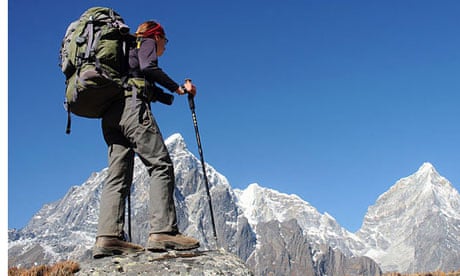
Trekking in the Himalayas: how to do it
H indu scriptures say that in "a hundred ages of the gods" you could not do justice to the Himalayas. So where do mere mortals start? Knowing where to go in an area 10 times the size of France is daunting, especially when just getting there is expensive. Everest gets most of the headlines, but the Himalayas are vast, especially when you include mountain ranges west of the Indus – the Pamir, Hindu Kush and Karakoram.
This 4,000km crescent, stretching from Kyrgyzstan to Burma, is a geography of superlatives – the highest mountains, the deepest gorges, tracts of wild forest, the rolling high plateau of Tibet plus, in Bhutan and the Indian state of Assam in the eastern Himalayas, some of the greatest biodiversity on the planet.
Then there are the people. It is true that in some areas the Himalayas are wild and barely populated, but in most there is an incredible diversity of cultures that have adapted to surviving in an environment that can be exceptionally hostile as well as incredibly beautiful.
These huge peaks are also the meeting point for three of the world's great religions: Islam in the west, Hinduism to the south and Tibetan Buddhism to the north.
It's an incredibly dynamic region. New roads and airports are making some areas more accessible, while diminishing the appeal of others, like the famous Annapurna Circuit in Nepal.
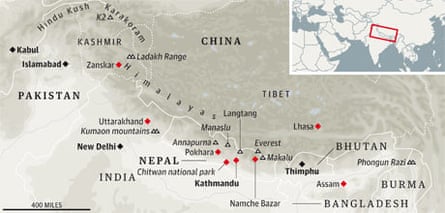
Political change has also altered horizons. Mountains along the northern border of Burma have recently become accessible for the first time in decades, while visa restrictions and unrest in Tibet have made travelling there more difficult.
Trekking is also changing. Many assume walking in the Himalayas is only for rugged types who enjoy roughing it. That was true in 1953, when Everest was first climbed and trekking tourism didn't exist. Now there are new ways to experience the Himalayas: luxury lodges for those looking to take in the views with a bit of comfort; treks that focus as much on culture as scenery; and new lodges and homestays for those who want to relax and get beneath the surface of Himalayan life.
The walking itself is usually not too difficult, no more so than in the Lake District – apart from the altitude, of course. It's the altitude, along with problems of travelling in one of the least developed regions of Asia and fears about hygiene, that put some people off. Staying healthy in the Himalayas is certainly more difficult than it is at home, but if you're used to walking and are cautious about gaining altitude then you're unlikely to have any problems. And the rewards are spectacular.
Where, when and how
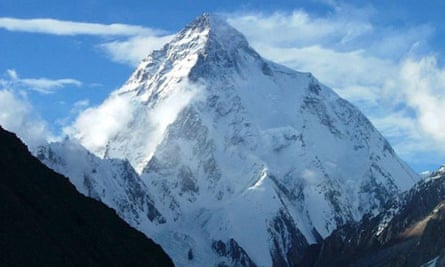
The summer monsoon is much heavier in the eastern Himalayas than it is in the west, and so the most popular trekking periods in much of India, Nepal and the region east of there are April and October. Skies tend to be clearer in the autumn, although it's colder too, but that's when Everest and other popular treks are at their busiest.
If you want to trek in the summer holidays, then look further west. Zanskar and Ladakh, largely Tibetan Buddhist in terms of its population but politically part of the Indian state of Jammu and Kashmir, are north of the Himalayan chain and enjoy much better weather in July and August. These are also the best months for K2 and the rest of the Karakoram, including Kashmir, and the Hindu Kush.
The most popular trekking areas – like Everest, the Annapurna region and Ladakh's Markha valley – have a network of basic lodges to stay in, opening up these areas to independent trekkers who don't want to carry a tent and are on a more limited budget. It's also possible to reach Annapurna, or Nepal's Langtang region, by bus, without the need for costly internal flights.
For those with a bit more to spend, there are off-the-peg itineraries from specialist travel agents in the UK. The best of these use good local outfitters and provide a guide, either western or a local who speaks good English. For those who don't want the hassle of organising transport and accommodation, this kind of trip is perfect – and for camping treks in remote areas, they're essential. You can also approach a local agent directly, which is useful if you have a group of friends who want to trek together.
- Mount Everest

Since Nepal's civil war ended in 2006, the number of trekkers visiting the Everest region has more than doubled to 35,000 a year. At the height of the season, around 60 flights land at Lukla airport each day. The Sherpa town of Namche Bazaar, the gateway to Everest base camp and used for altitude acclimatisation, now has better mobile coverage than much of Snowdonia. So if you go in peak season, expect a crowd. If you have a group of mates who all want to see Everest, most companies will organise a private tour.
World Expeditions is one of the biggest operators, running over 20 treks this year, with accommodation a mixture of camping and lodges on the classic standard trek to Everest base camp. An 18-day trek costs £1,650, which it can also arrange. Some of its autumn departures are already full, so hurry if you want to go in the diamond jubilee year of the first ascent.
If you prefer a bit more comfort, there are now two chains of luxury lodges on the way to base camp, Yeti Mountain Homes and Everest Summit Lodges . We're not talking five-star spas here, but an en suite bathroom and a hot water bottle are a big step up from standard lodges.
Specialist trekking company Mountain Kingdoms offers a 19-day package starting at £2,245 that also offers nights at Kathmandu's stunning heritage hotel, Dwarika's .
If you're looking to beat the crowds, trekking guide Bonny Masson has this advice: "If you've got the time, do the original trek the British expedition took in 1953." This started in Kathmandu, but a bus will now take you to the end of the road just beyond the town of Jiri. The trail beyond is a tougher walk than the stages from Lukla, which most people now reach by air. "You'll get a better slice of life in Solukhumbu and the trails are quieter." Alternatively you can trek out of season, in December or February, when numbers are down and the trails are quieter. But you should be prepared for lower temperatures.
Adventurous types can trek to the little-visited east face of Everest inside Tibet via the Kama valley, one of the least known but most beautiful approaches to the world's highest peak. Unlike the Nepalese side, this wild valley has hardly changed at all. In recent years, the visa situation in Tibet has been inconsistent, but that now seems to be settling down. KE Adventure Travel offers a 20-day trip out of Kathmandu, including nine days of trekking, for £2,995.
More than just trekking

Stunning views are what prompt many to go trekking, but the Himalayas is an incredibly diverse region culturally. For those who want to combine great walking with gaining an insight into how people live in such an extraordinary region, there's now a wide range of holidays offering treks combined with other activities.
Wild Frontiers , known for its stylish approach to adventure travel, now offers some excellent journeys that include trekking. It is one of the few companies that will take you trekking in Kashmir , a wonderful place to walk in the summer, and then pamper you on a houseboat on Dal Lake (10 days from £1,690). It also runs an amazing trip, sadly full for 2013, to the Hindu Kush (17 days from £2,395) that mixes a visit to the Kalash area with trekking on the Pakistan-Afghan border, along the Wakhan Corridor.
At the other end of the Himalayas, far to the east, Mountain Kingdoms is one of the first to offer a trek in northern Burma (20-day trip from £2,645) through pristine jungle and along rocky outcrops to reach the snow-capped Mount Phongun Razi. Trekking here mixes the jungle appeal of other parts of south-east Asia with the high drama of the Himalayas – and the opportunity to explore Rangoon and the temples of Bagan. And if you're looking for something a bit less strenuous, there is an alternative itinerary through the foothills.
Gentle trekking

If trekking was developed for explorer types who see disaster as a welcome change of pace, then the industry has done a great deal to broaden its appeal. Young backpackers have been wandering around the foothills of Nepal's Annapurna range for decades now, arriving in Pokhara by bus and surviving on next to nothing. World Expeditions offers an off-the-peg 11-day equivalent for newbie trekkers from £990, which takes in the pretty villages of Landruk and Ghandruk. You won't sleep higher than 2,500 metres but you'll still get stunning views of the Annapurna range and the colossal pyramid of Dhaulagiri, seventh-highest peak in the world.
The Mountain Company offers an 11-day beautiful village walk in India's Kumaon mountains in Uttarakhand. You stay in basic but homely accommodation en route, on easy trails between villages, and end with a few days at the luxurious and very relaxing Himalayan retreat Shakti 360° Leti (a 10-night package including accommodation in Delhi is £2,576pp).
Once kids get over the initial shock of the idea that a walk can last for days, not hours, trekking can be a brilliant family trip option. Exodus offers a great itinerary in Ladakh for families that takes in visits to Tibetan monasteries, rafting on the Indus and a three-day trek that crosses the Sarmanchan La, a pass that reaches 3,750m. Prices start from £1,899, including flights, and the trip is suitable for ages eight plus.
Nepal is also a great place to take children, combining a trek with a visit to Chitwan national park, close to the border with India, where they can see wildlife and ride elephants. Steve Webster is a long-time resident of Nepal who runs Escape2Nepal , a small travel company specialising in "soft" adventures that are just right for children – its 15-day family adventure trip costs £1,720pp. He also has a quiet guesthouse, Shivapuri Heights , on the outskirts of Kathmandu, away from the ever-increasing noise of Thamel, the city's tourist district.
Wild trekking
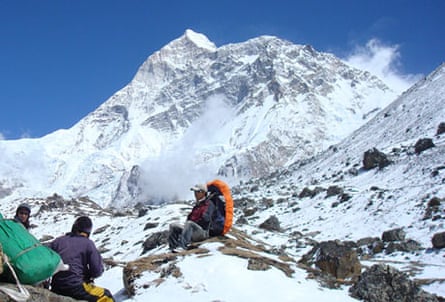
Although tourism in the Himalayas is changing fast, it's still possible to do a big trek in the wildest landscape on Earth. These really are for the hardier trekker, with weeks of camping and a tolerance for serious walking and high altitude. In Pakistan's spectacular Karakoram mountain range, there are fewer villages in the high mountains, and treks feel remote and exploratory.
The jewel in the crown is the trek to K2's base camp, taking you past some of the most beautiful peaks you've probably never heard of, like the Trango Towers and Masherbrum, before reaching Concordia, the confluence of two mighty glaciers with spectacular views of K2 itself. It takes around 15 days, walking eight miles a day, to reach base camp and leave via the Gondoro La, a pass of over 5,400m, into the beautiful Hushe valley. Previous trekking experience is essential. KE Adventure offers a 22-day itinerary starting at £2,495 .
While the Annapurna massif is as beautiful as ever, the construction of a road up the Kali Gandaki, the world's deepest gorge, to link Pokhara with the Tibetan border, has abruptly terminated interest in trekking the well-established Annapurna circuit. No one wants to trek beside a road. A new road is also being driven on the eastern side of the massif, towards the village of Manang.
Luckily for Nepal's trekking industry, the long and arduous trek around Manaslu, higher than Annapurna and just to its east, is plugging this self-inflicted wound. Mountain Kingdoms offers a slightly different route in the early part of this increasingly popular trek that makes each one of the 18 days it takes to loop around the Manaslu Circuit 's remote north side as culturally fascinating as it is spectacular. The trip costs £1,725 and is the perfect introduction to the wilder side of Himalayan trekking.
If those two aren't enough for you, then consider the Great Himalayan Trail , which traverses the length of Nepal's high mountains, broken down into 10 sections, each of which takes around two to three weeks. The Mountain Company is offering the first section – between the world's third-highest mountain Kanchenjunga and Makalu – this October from £3,195.
- Walking holidays
- Nepal holidays
- Mount Everest holidays
- India holidays
- Tibet holidays
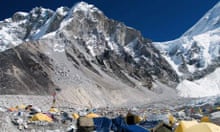
Everest: tourism and climate change provide new challenges

Autumn hiking in La Grave, France
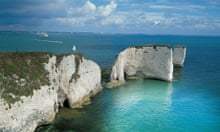
Top 10 UK coastal walks

The first successful ascent of Everest 60 years ago – in pictures

Nepalese man, 81, attempts Everest climb days after 80-year-old set record
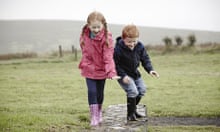
Six of the best National Trust walks
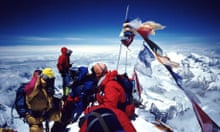
Everest climbers wait more than two hours in queue for summit
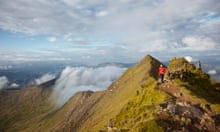
How to climb Mount Snowdon
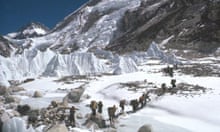
From the archive, 24 May 1963: Editorial: Everest by the West Ridge
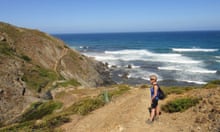
Walking Portugal's Atlantic coast
Comments (…), most viewed.
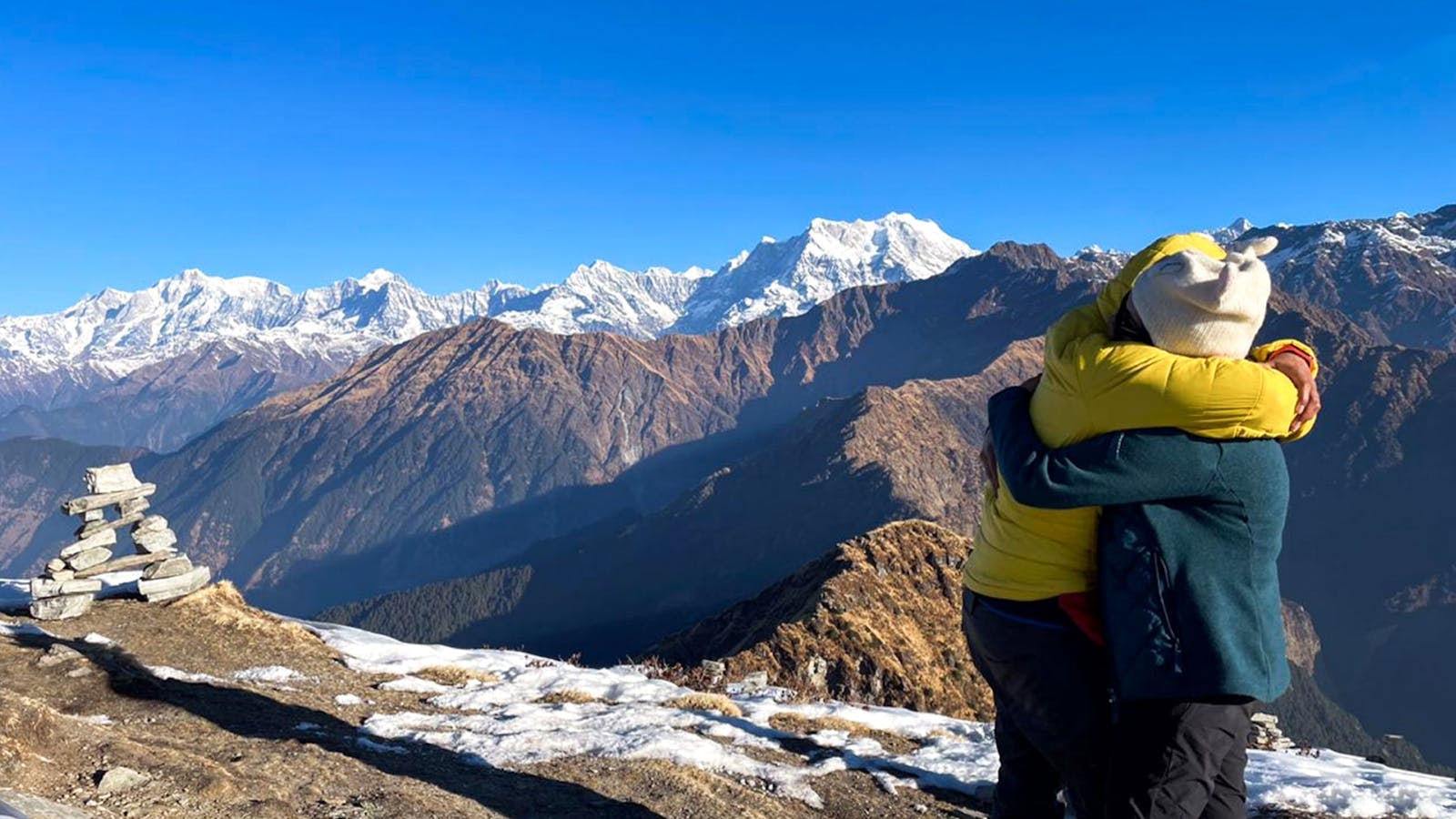
TREKS THAT TRANSFORM LIVES
SEE ALL UPCOMING TREKS
Join 25,000+ trekkers every year on mindfully designed experiences that transform your mind, body and spirit.
See 6,500+ google reviews here.
We have finally opened the Everest Base Camp Trek (Classic Route)!
Now you can trek with the safety, comfort and experience of Indiahikes, on the world-famous EBC Classic Route. View trek
Slots available in October 2024
Why trekking with Indiahikes is different
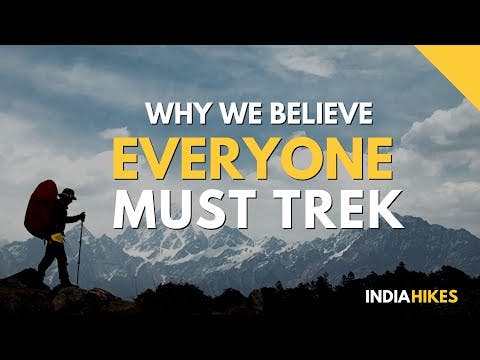
Do you go through this? You find yourself stuck in a situation that doesn't allow you time for adventure. The lack of excitement in your daily life leaves you restless. You long for something more meaningful.
This is where our treks make a difference. Our outdoor leaders conduct sessions that weave mindfulness into your journey. In the lap of the mountains, they engage in thought-provoking exercises that help you reflect and contemplate. Very often, the person you are before and after a trek is different.
Our leaders teach you new outdoor skills that give you the confidence to trek alone anywhere in the world.
All of these happen in the most stunning mountain scenery that you will see in the Indian Himalayas. Our treks are transformative journeys.
Arjun Majumdar
Founder, CEO, Indiahikes
Trekker Reviews

Deepak Gaur
Air Vice Marshal, Indian Air Force Veteran Consultant Aerospace Medicine Vasant Vihar, Dehradun

Founder, Harmony INC Sustainability Professional with two decades of work experience in CSR and ESG space Mumbai
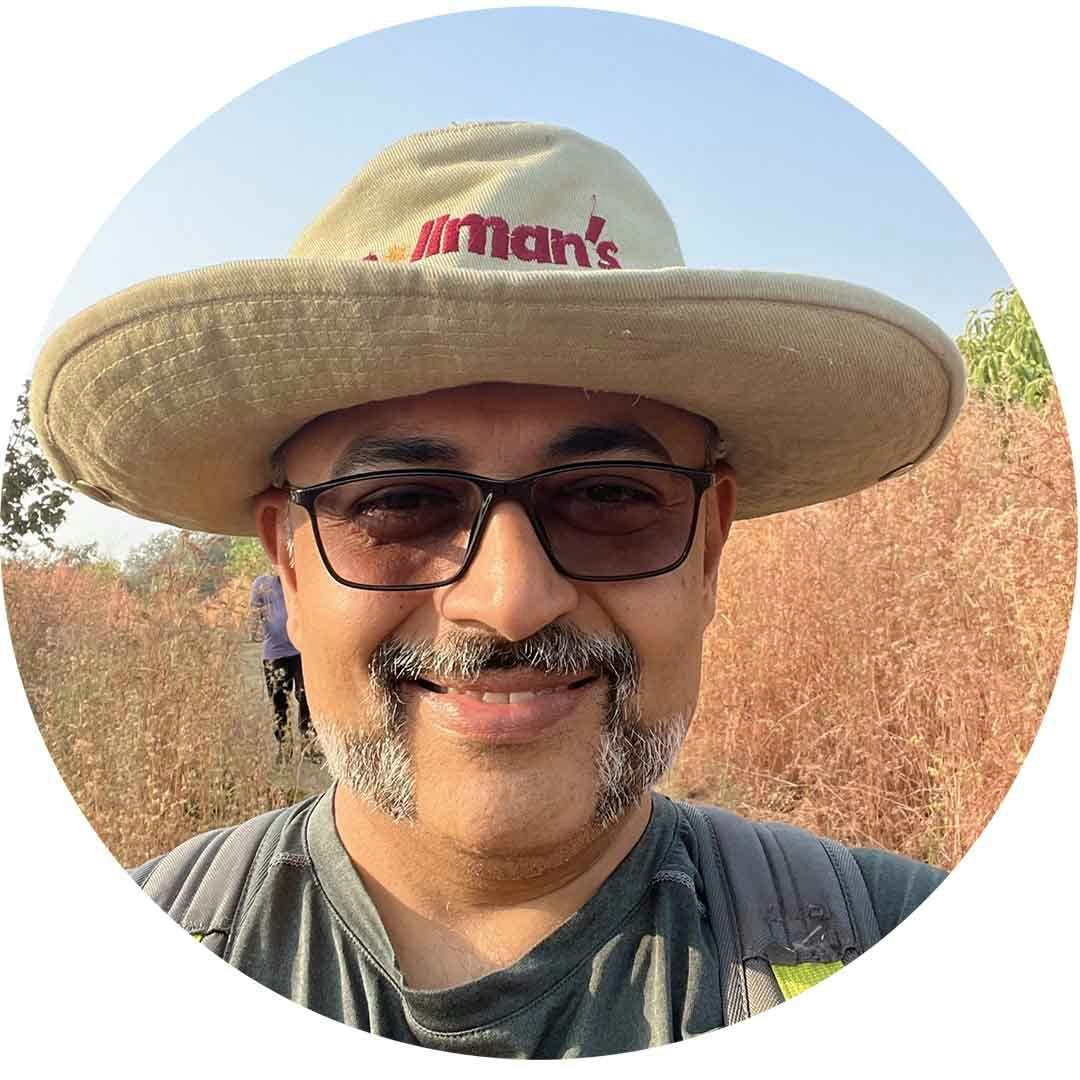
Dr Amit Thadhani
AGM (O&M) Mahindra World City Jaipur

Tarin Patel
Co-Founder Breaking Brand Hyderabad

Akshayarka Alammyan Deka
Senior Data Engineer Becton, Dickinson and Company, Guwahati, Assam
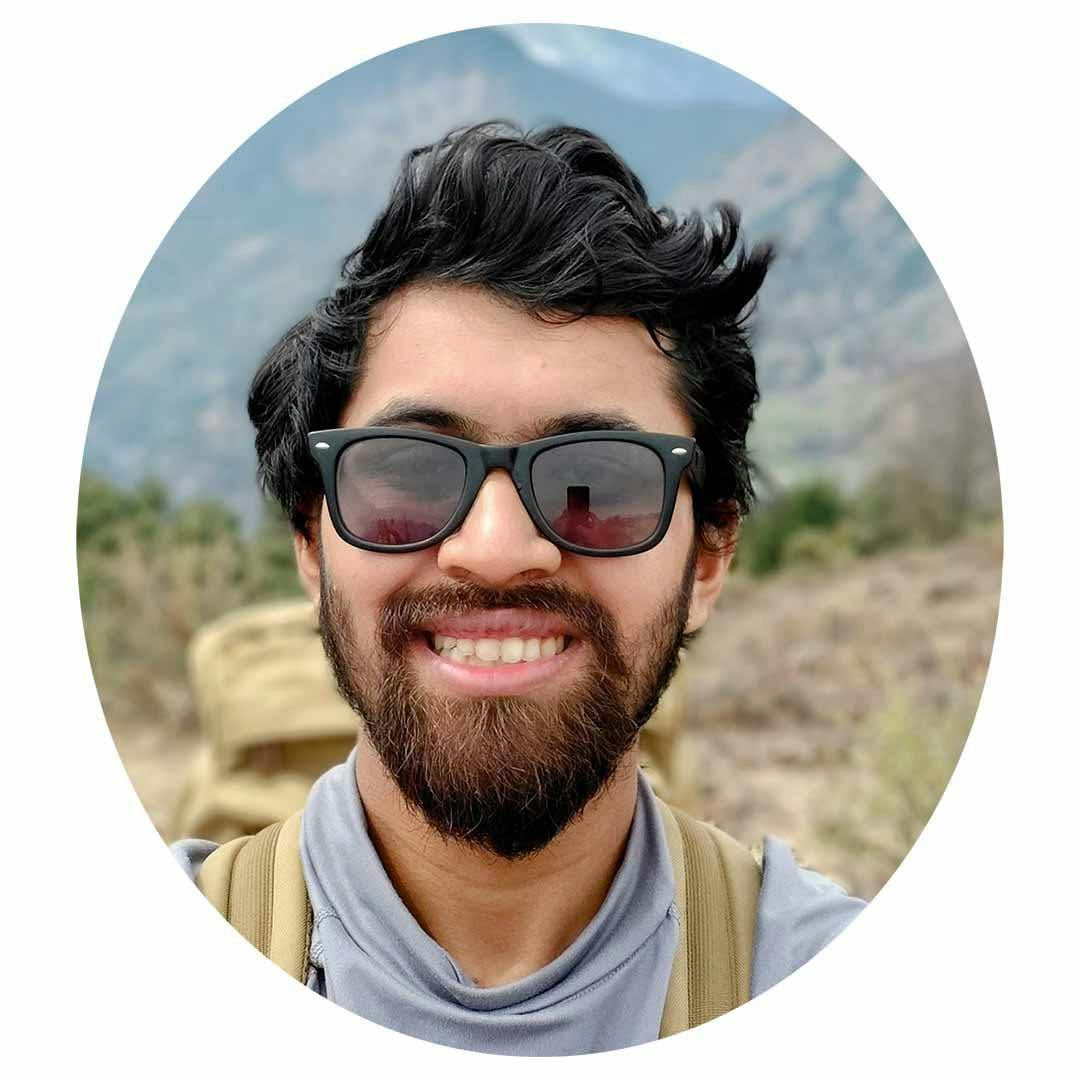
Darshan Shah
Manager, Deloitte Hyderabad
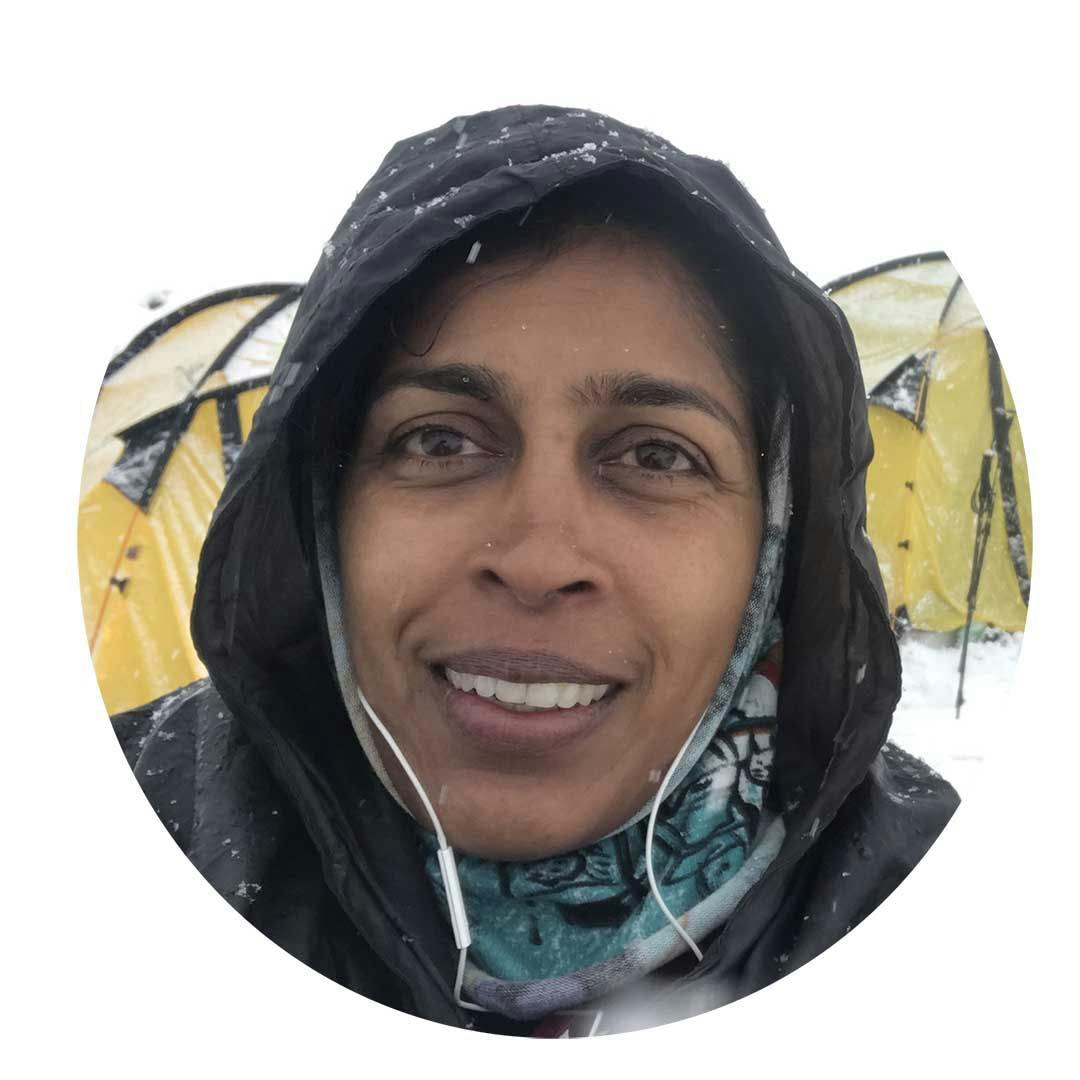
Indu Harikumar
Teacher and Educator, Hyderabad
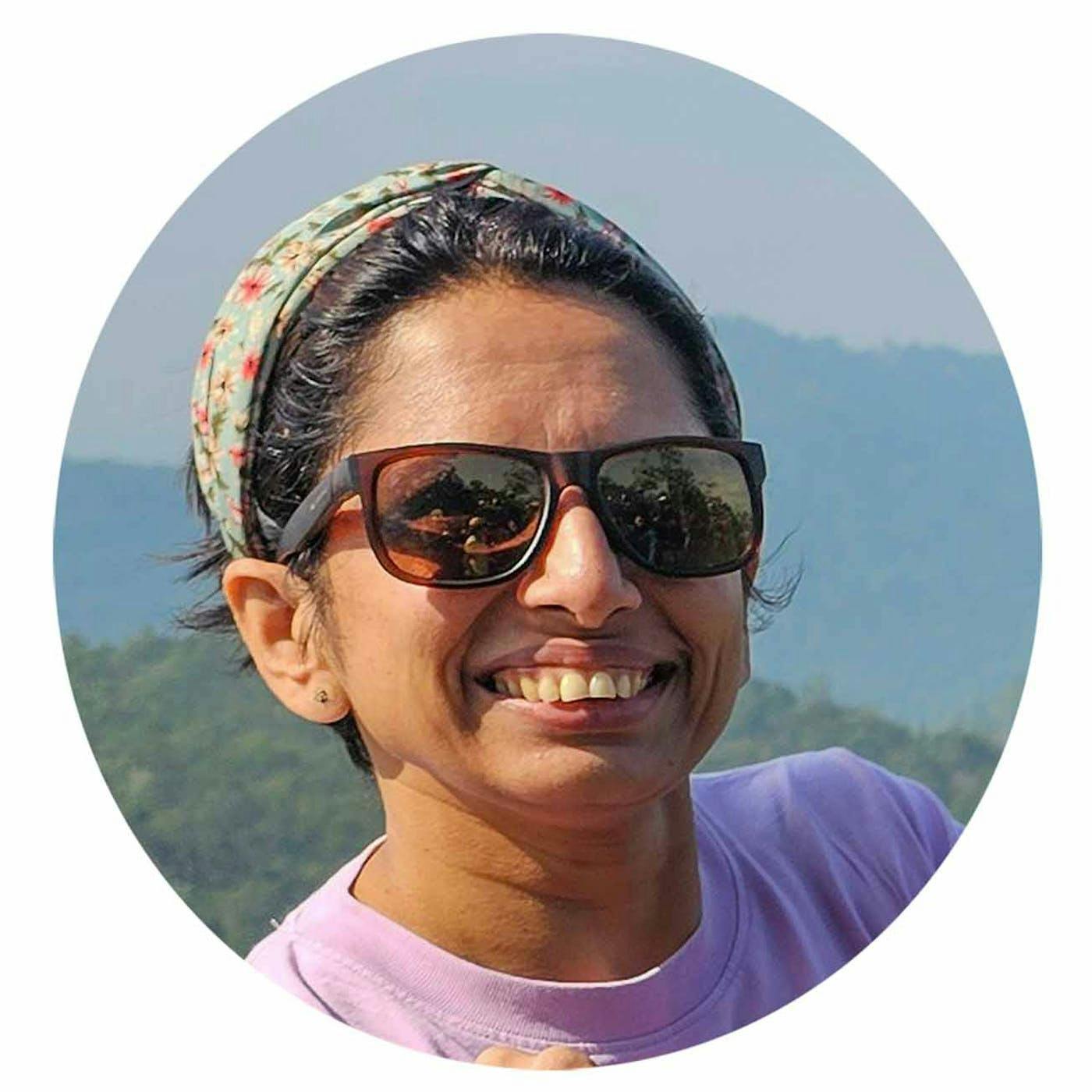
Rittu Panda
Owner Rittu's Fitness Hub Ahmedabad

Aboli Kulkarni
SharePoint Consultant Rotarex Engineering PVT LTD, Panvel
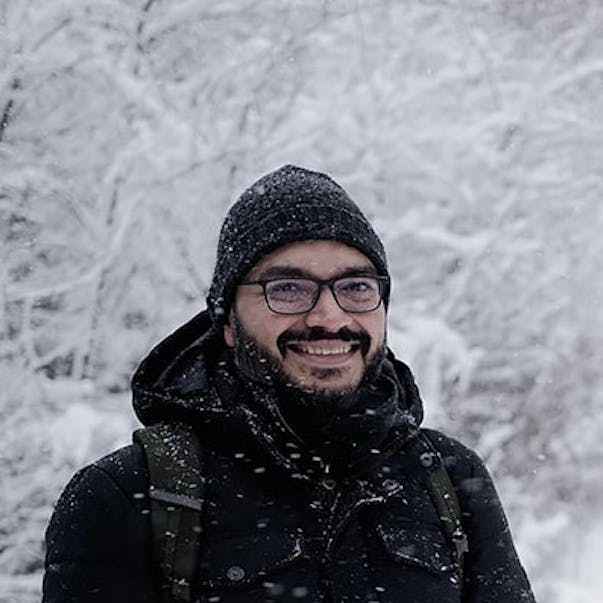
Manoj Prabhu
Data Science/Business Intelligence Freelancer, Aarhus, Denmark

Member of Technical Staff, MachEye Inc Bangalore
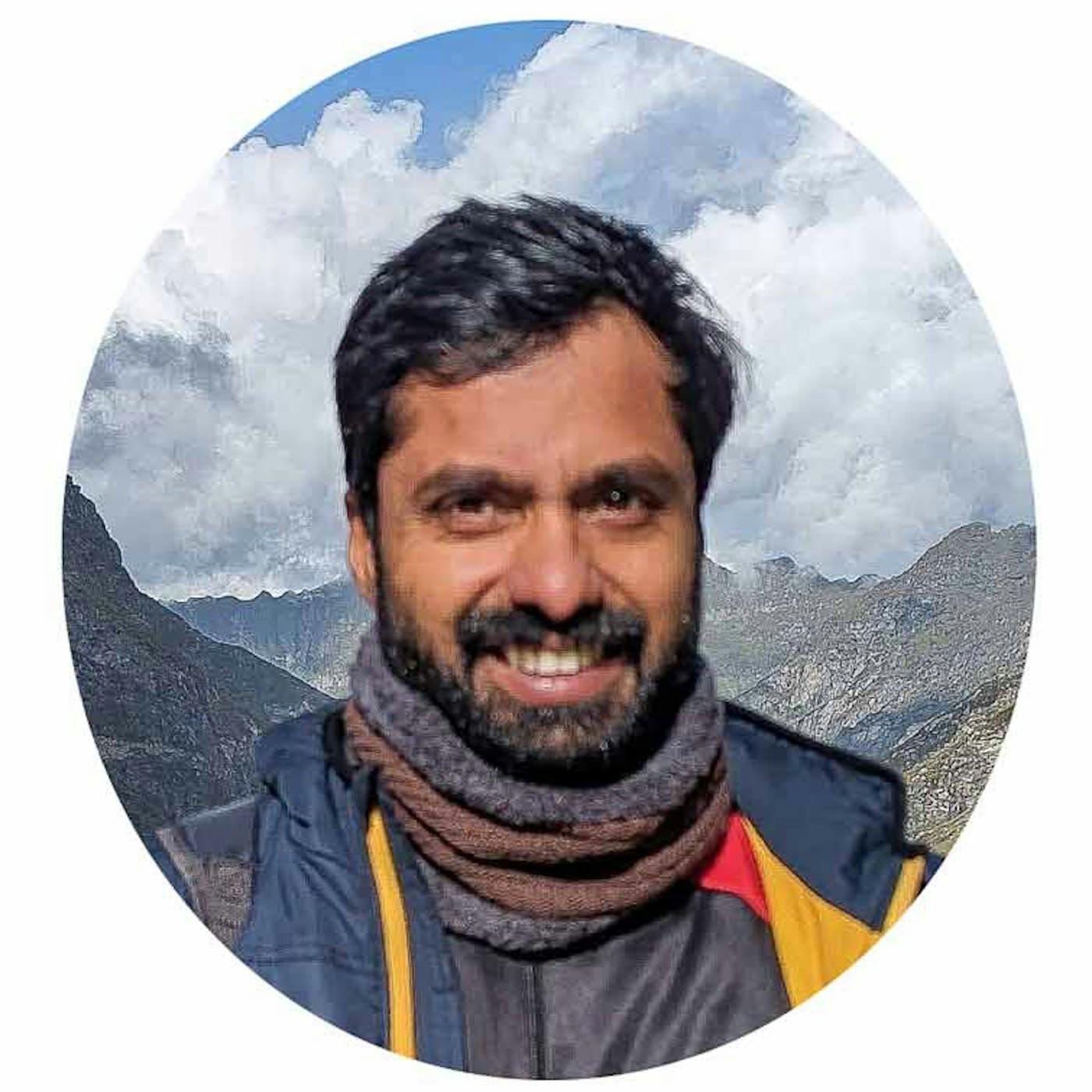
Lijeesh M K
Hardware Engineer Juniper Networks, Bangalore
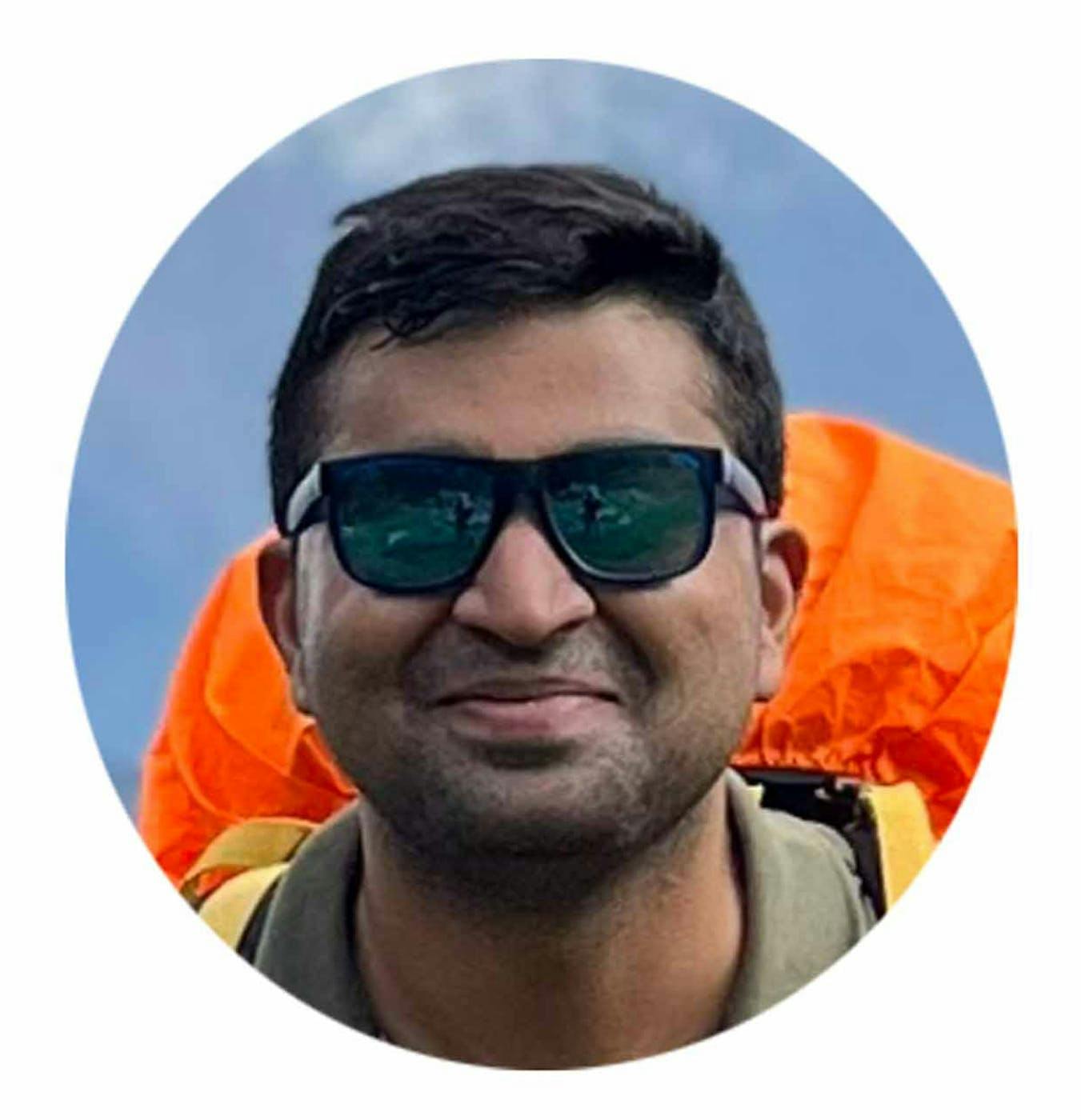
SDE2 at Optmyzr Chennai
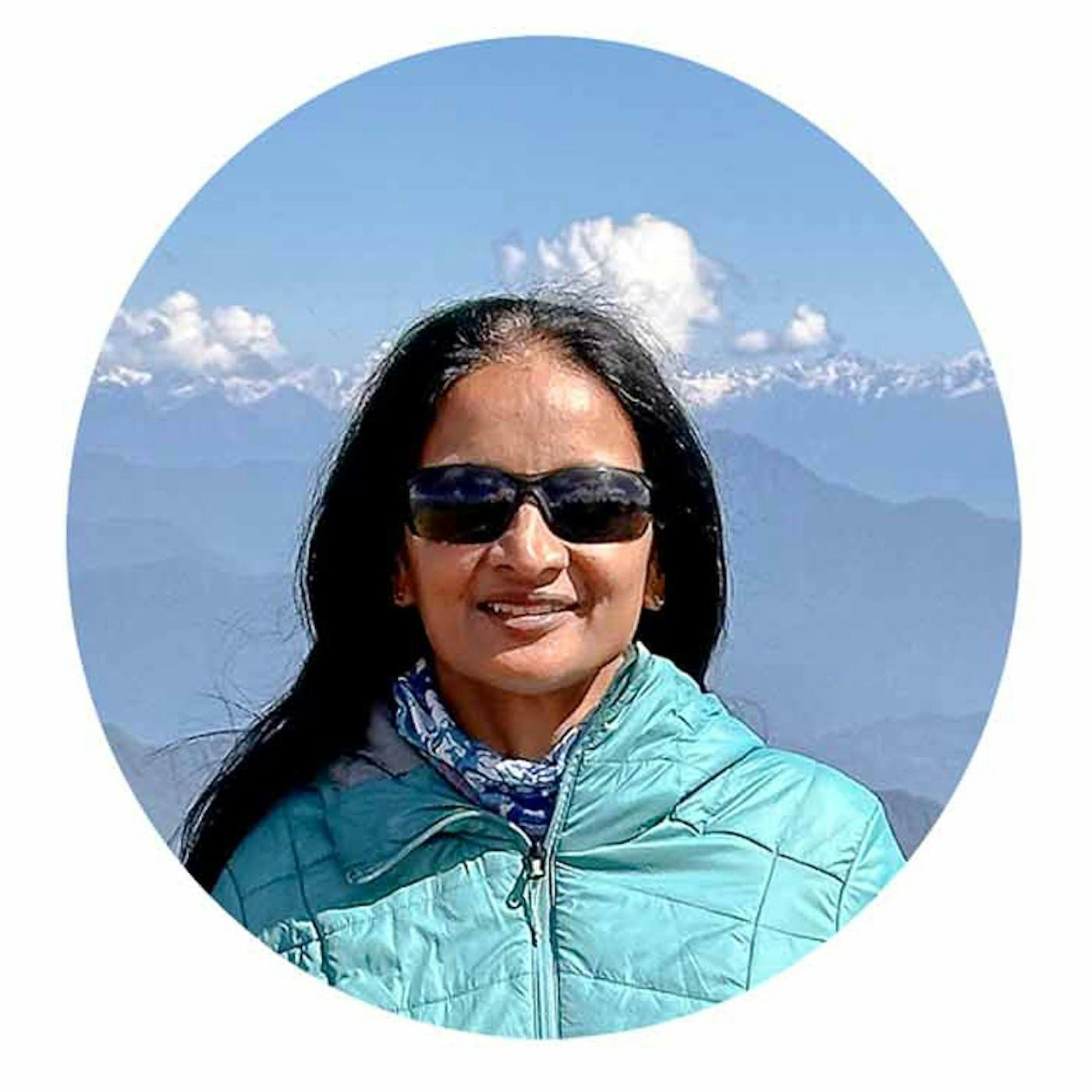
Dr Anne Wilkinson
Associate Professor Pathology NKPSIMS & RC and LMH, Nagpur.
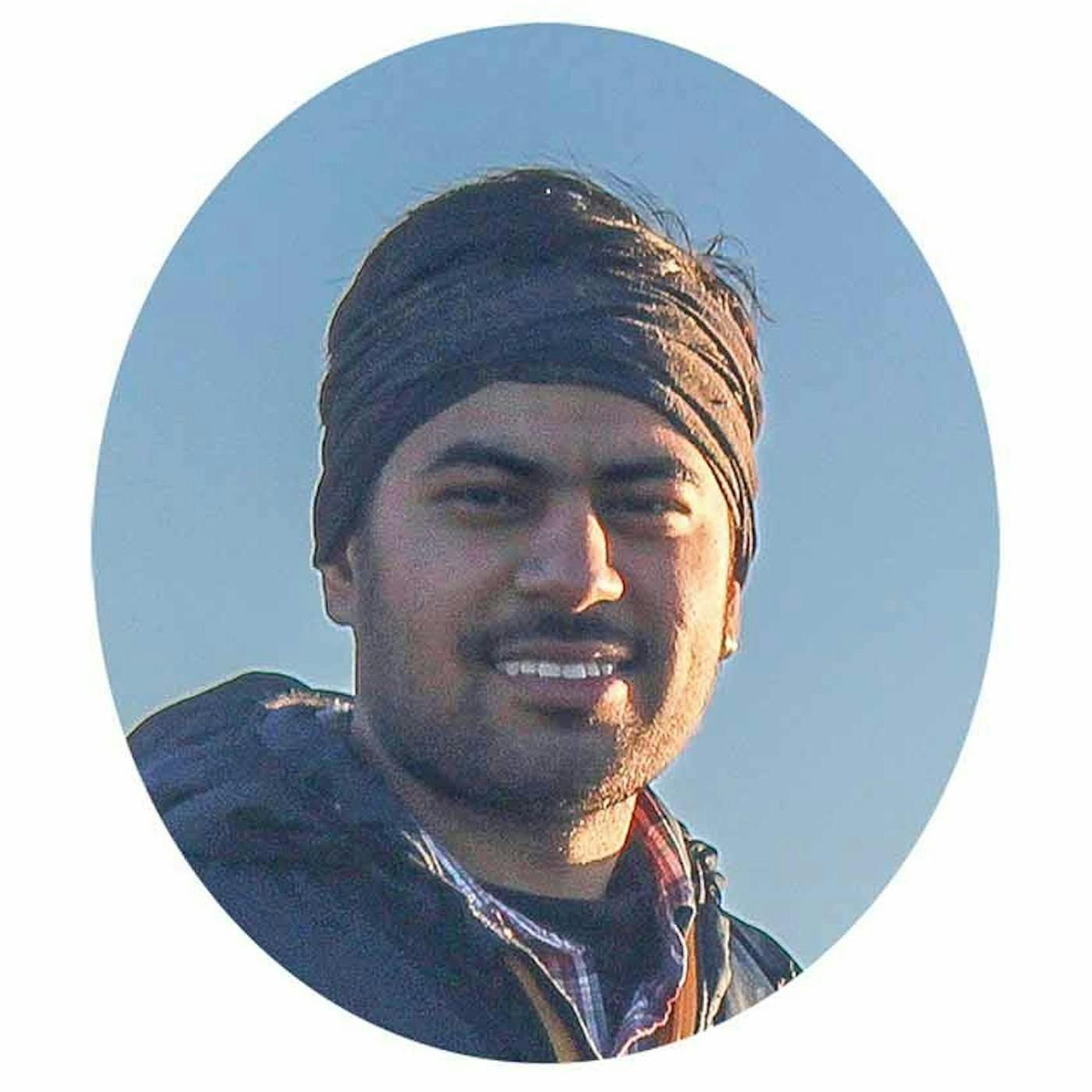
Harsh Kataria
Engineer, Cisco Systems Gurgaon, Haryana
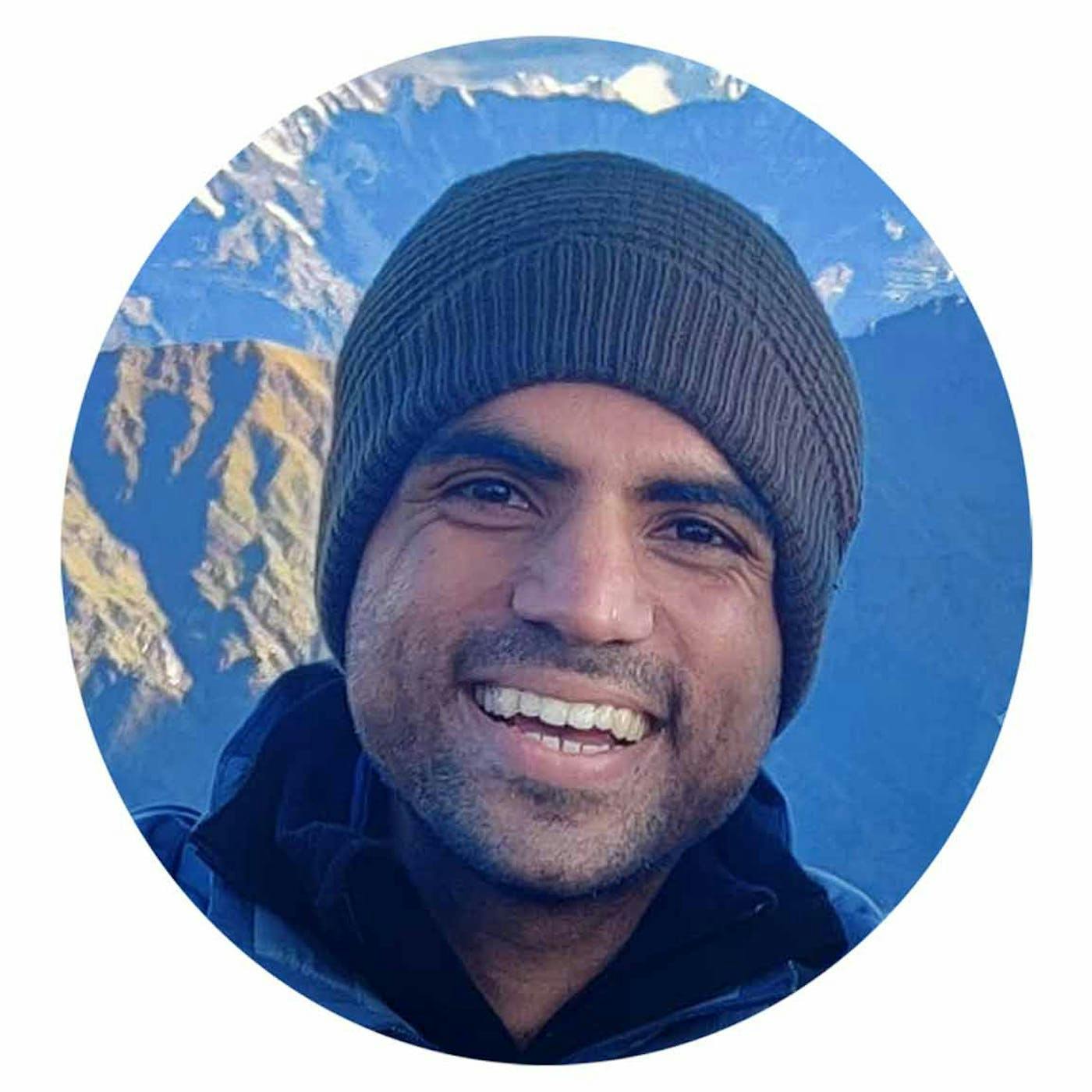
Rahul Adwani
School Leader iTeach Schools Pune

Retired from DuPont as Business Leader Gurgaon
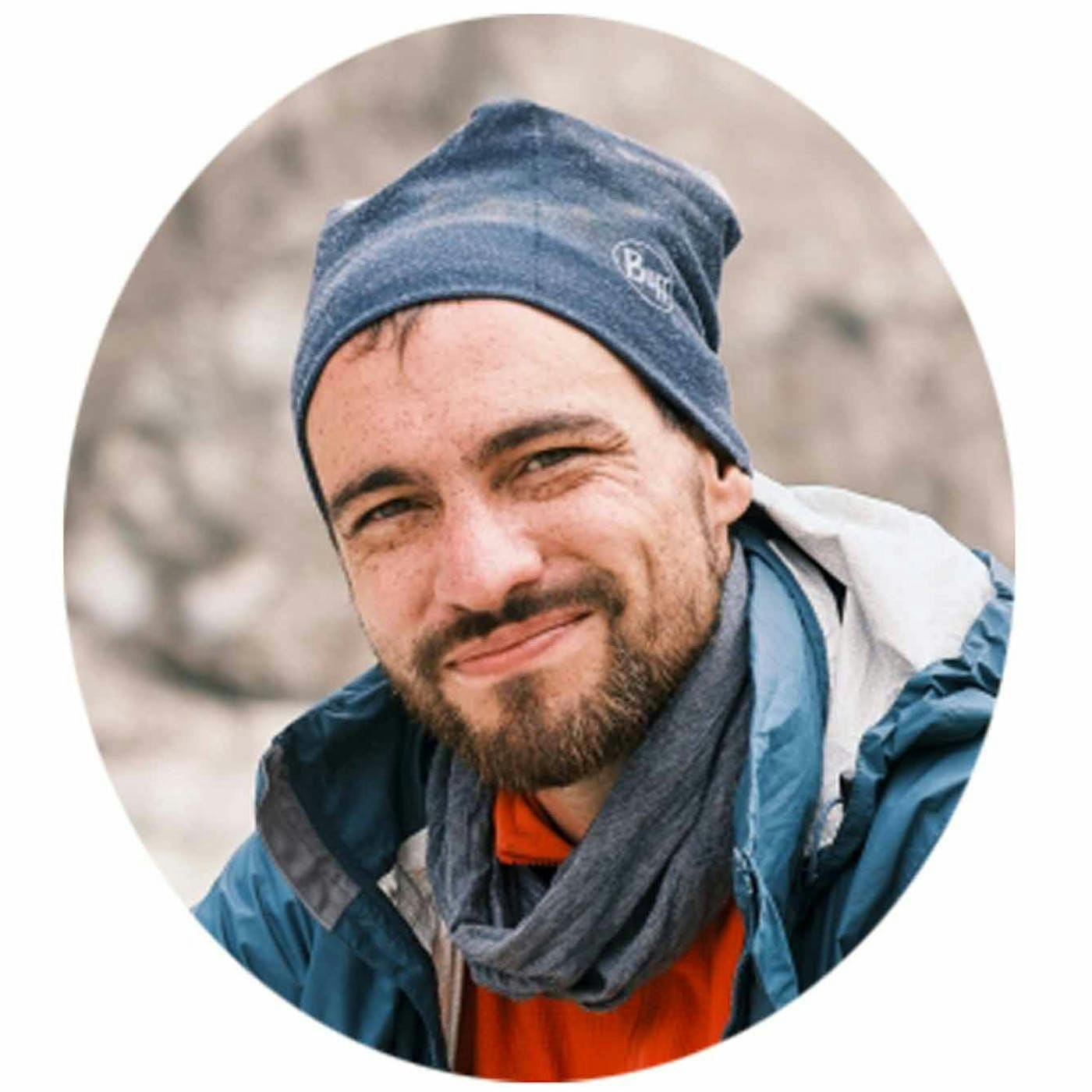
Tamás Csizmadia
Automotive Safety Engineer at Marquardt GmbH, Trossingen, Germany
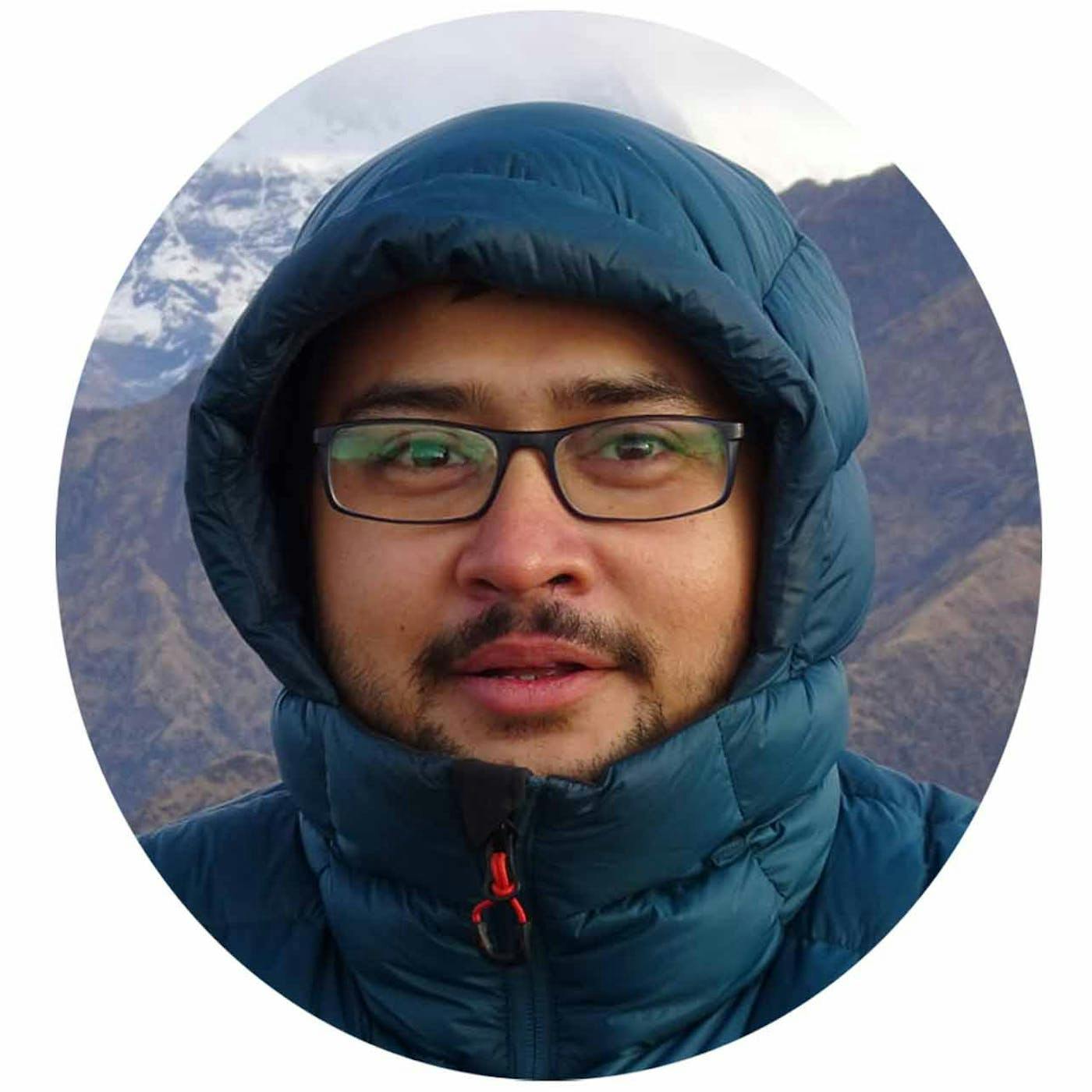
Sabyasachi Mukherjee
Assistant Professor, Dept. of Computer Science and Engineering, Bengal Institute of Technology, Kolkata

Vishal S. Somvanshi, Ph.D.
Principal Scientist Division of Nematology Indian Agricultural Research Institute PUSA Campus New Delhi

Animation Supervisor at Mikros Animation, Bangalore
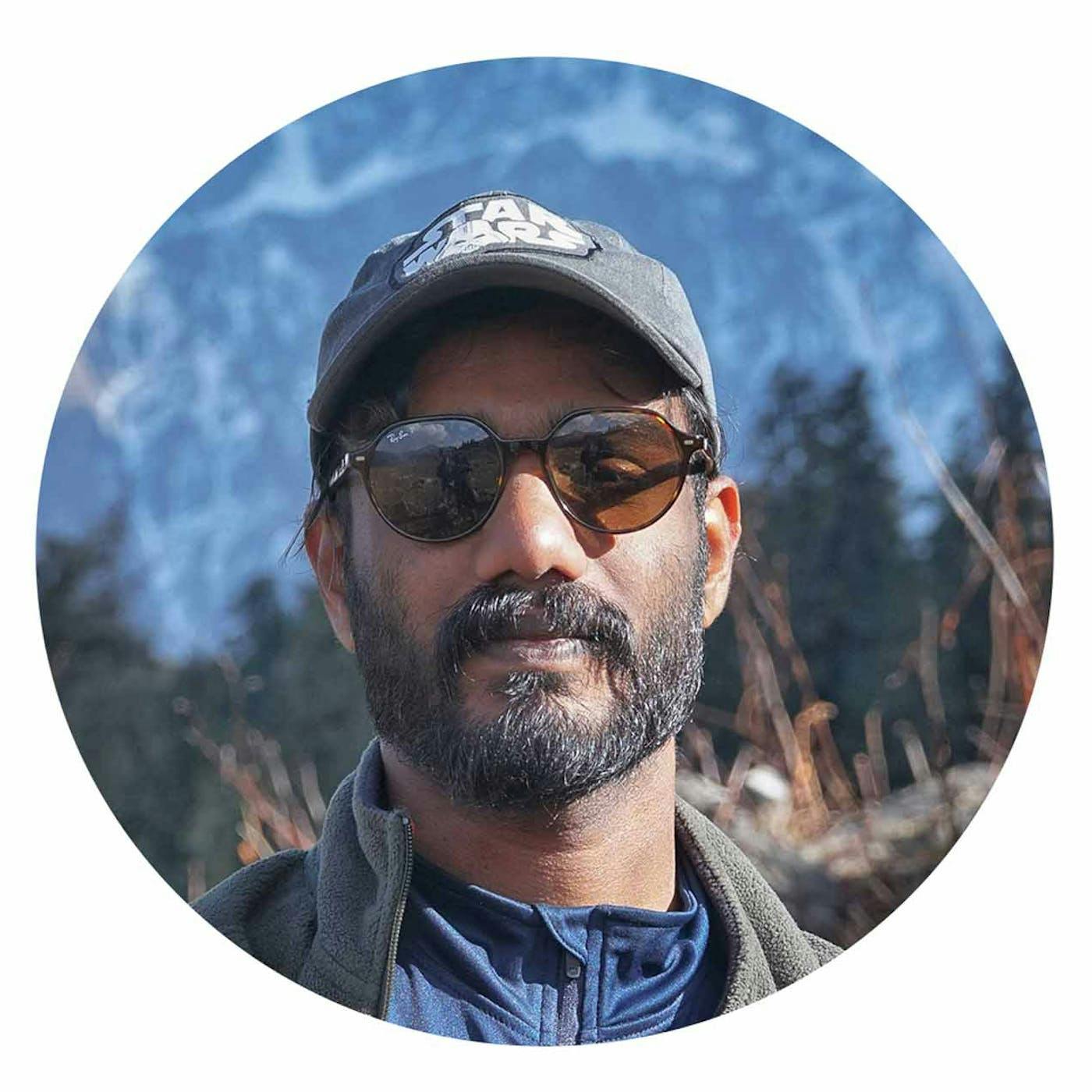
Senior Consultant Capgemini Thrissur, Kerala
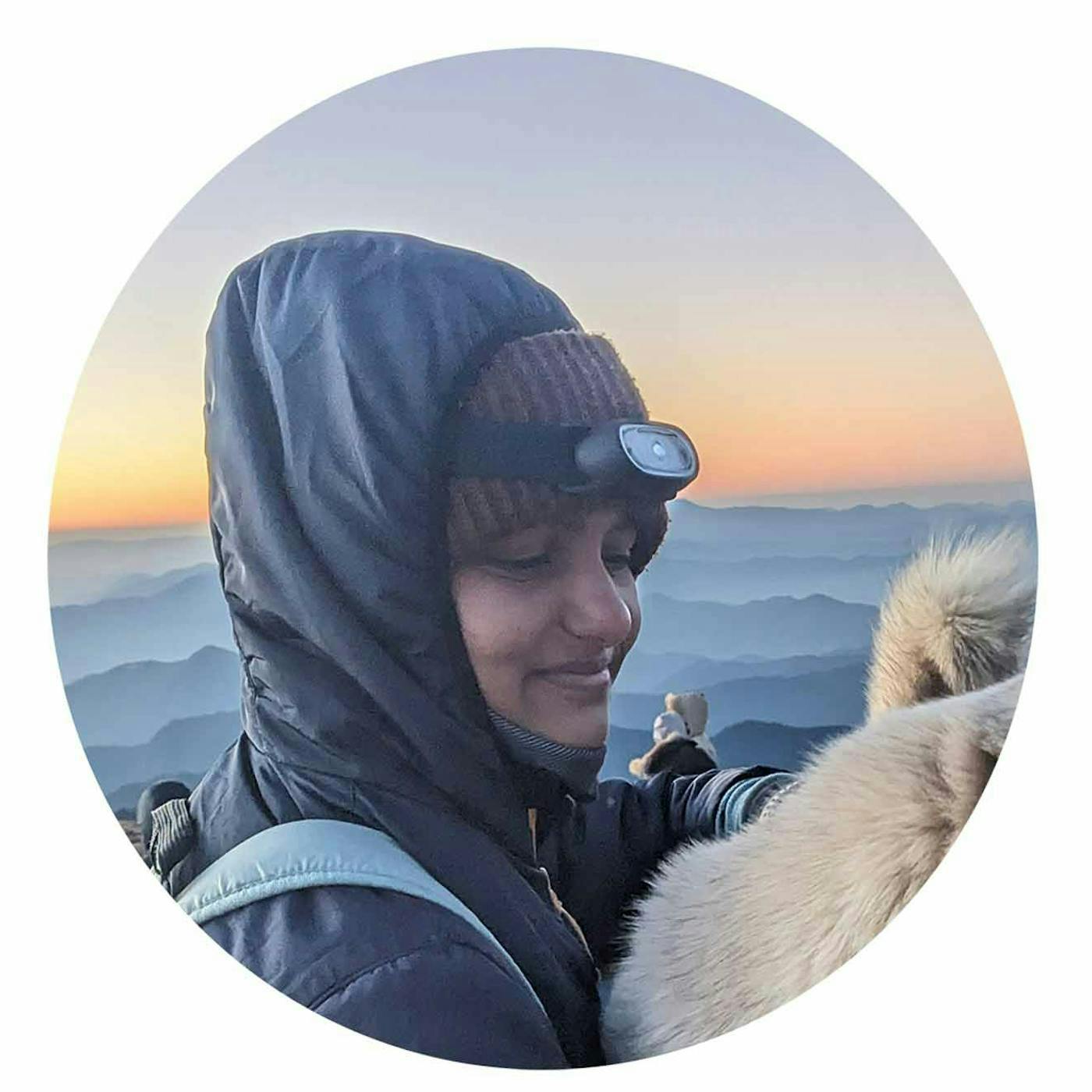
Preethi Viswanathan
Chennai Station Master, Indian Railways
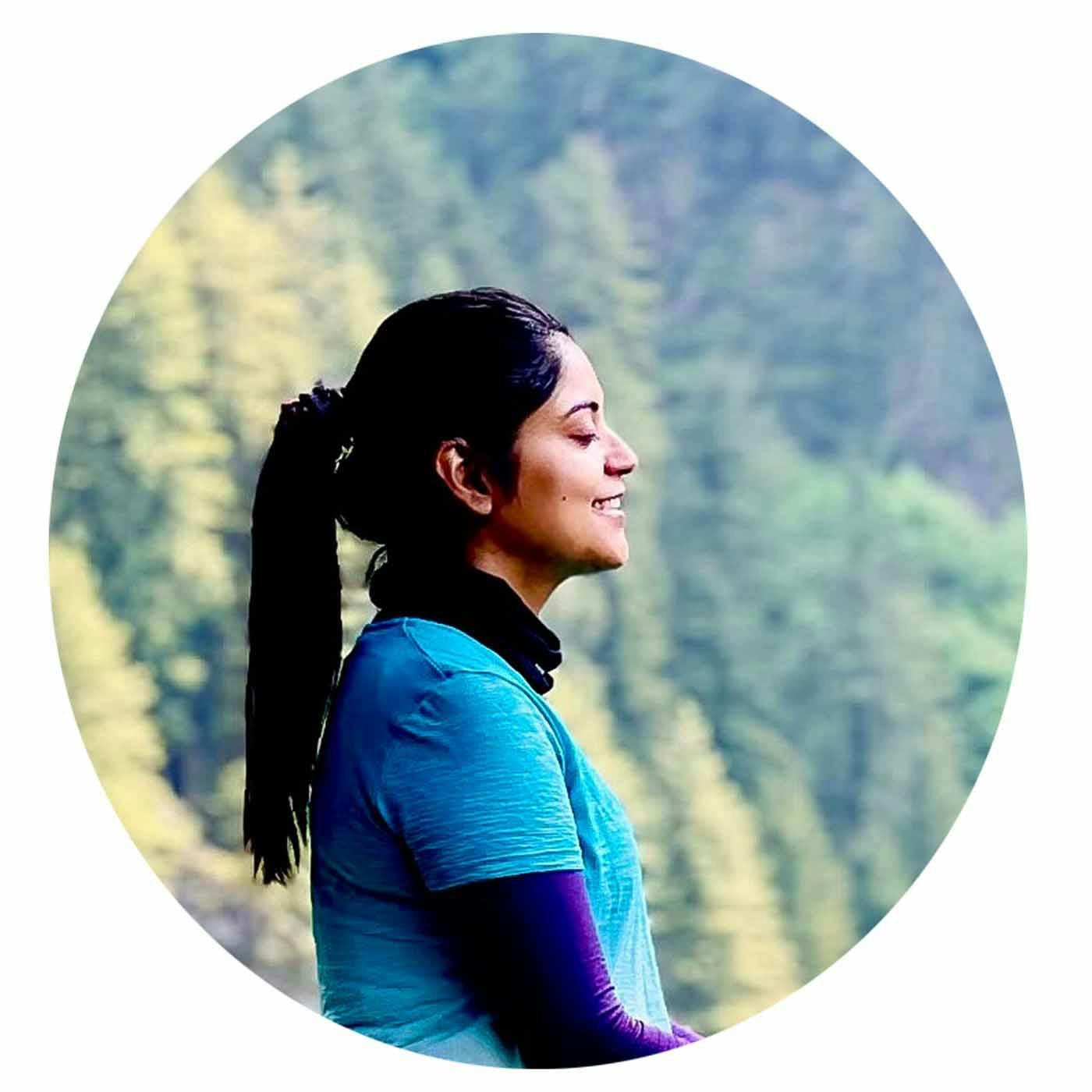
Atreyee Pal
Project Manager Tata Consultancy Services Ltd Kolkata
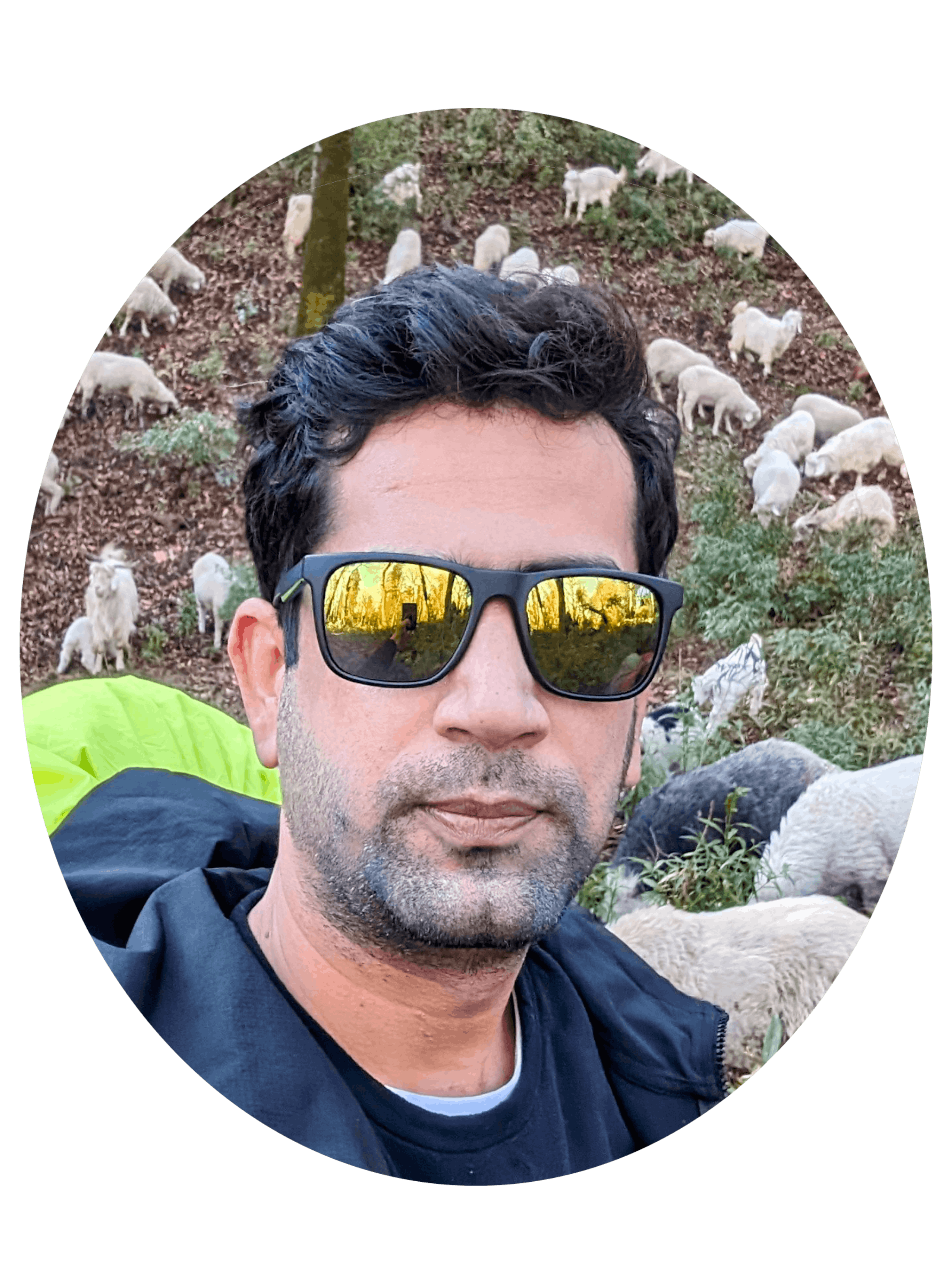
Aakash Tolani
Business Owner, Tolani Travel Assistance Ahmedabad
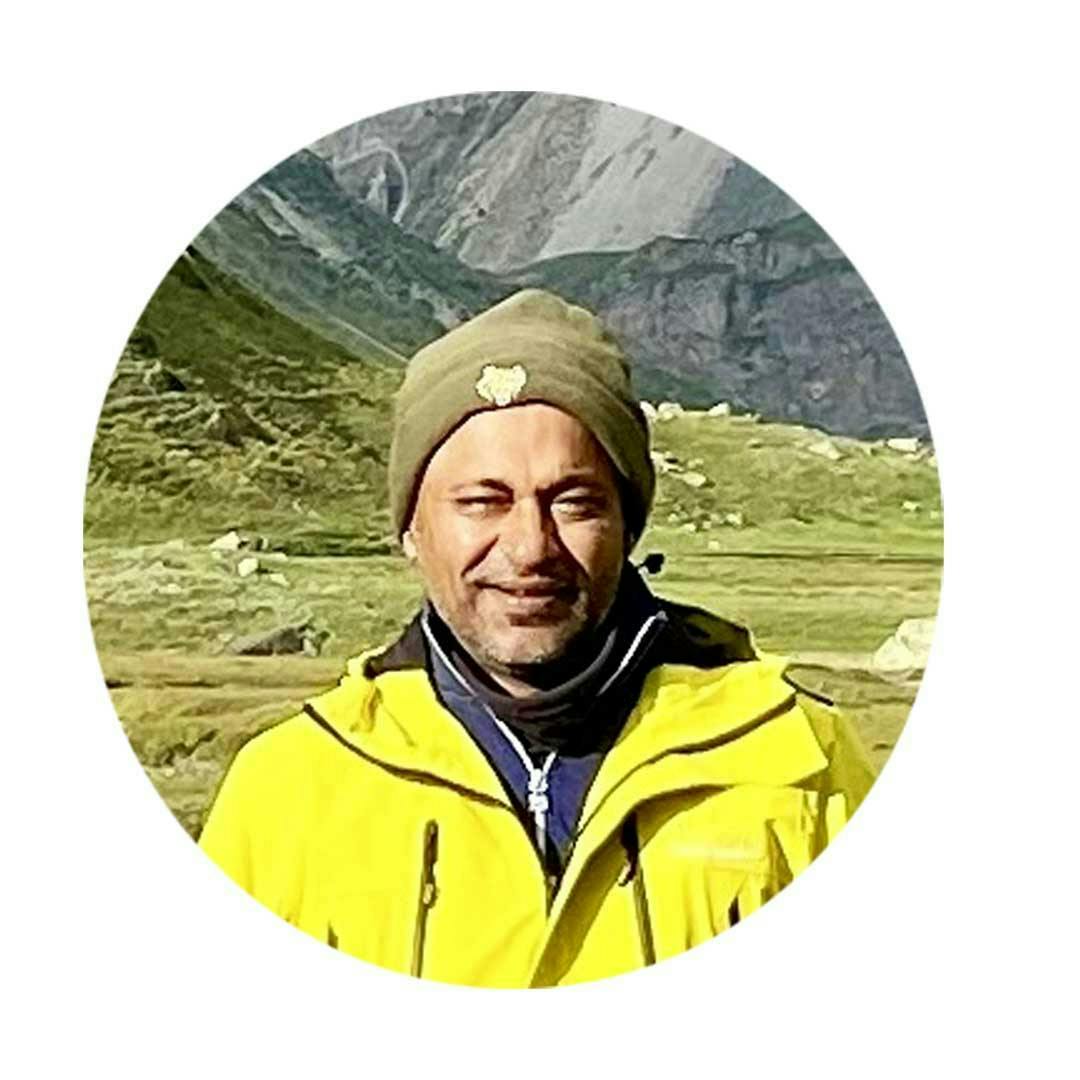
Nishant Gupta
Sita Ram khushal chand HPCL PETROL PUMP Panipat, Haryana
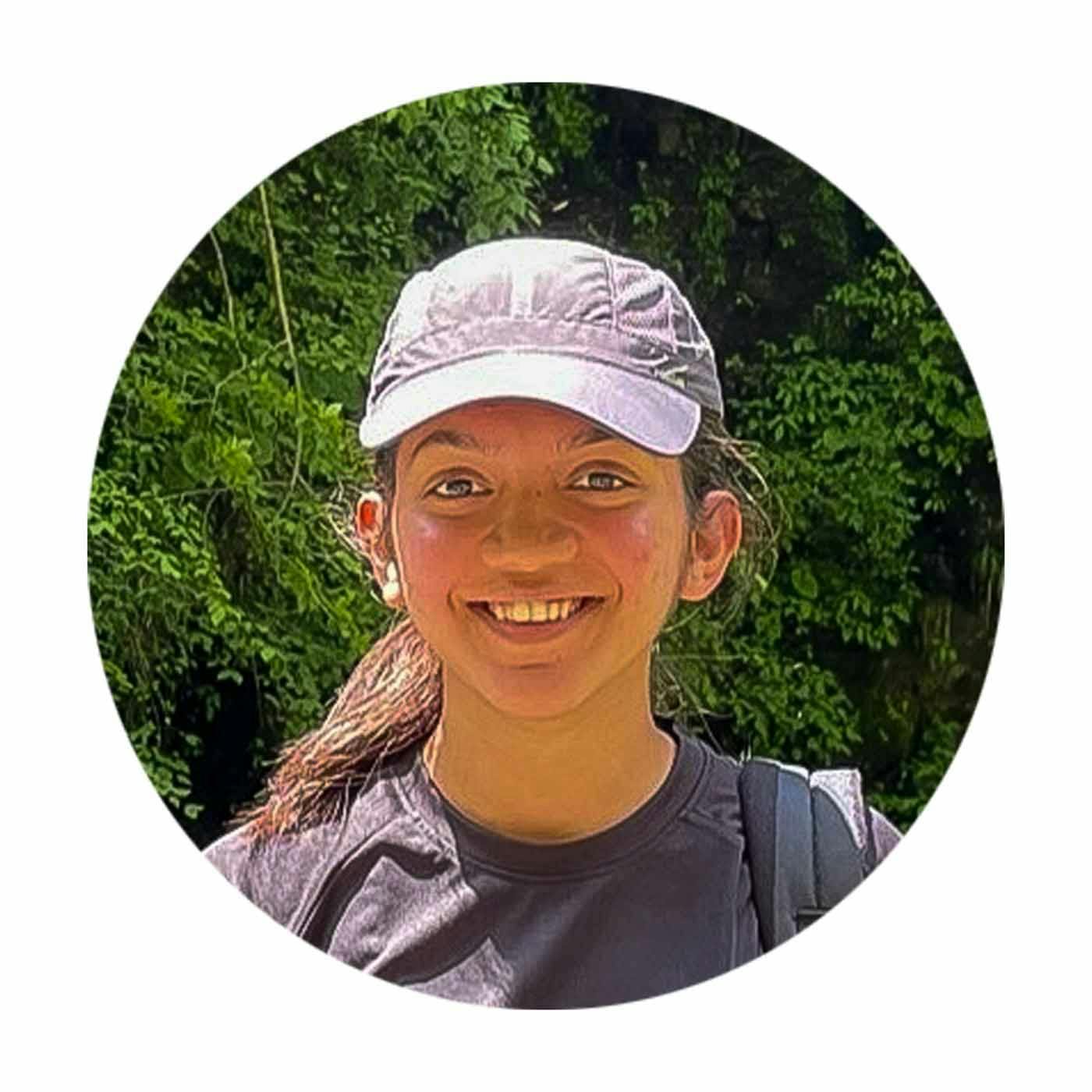
Atika Tantiya
Developer at SAP Labs India, Bangalore
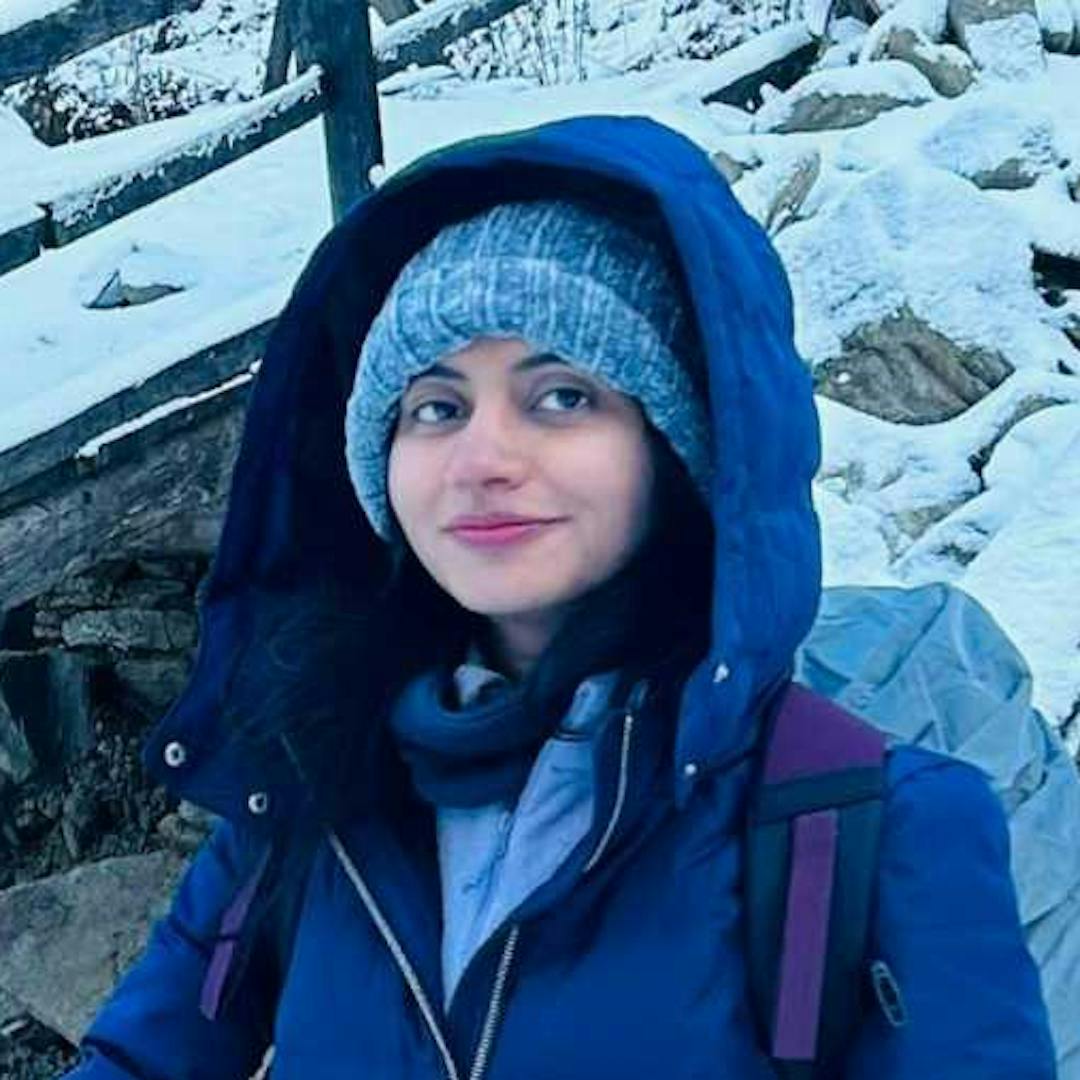
Geetika Doomra
Deputy Manager, Dhanuka Agritech Ltd. Gurugram, Haryana

Maj Prateek Verma (Retd)
Dinesh hinduja, frequenty asked questions.
Many trekkers call and ask us this question. You may notice that our trek fee is marginally higher for some treks, and you may wonder why you have to pay more for the same trek. The answer is straightforward. There's a very big difference in the quality of the experience you will have with Indiahikes compared with anyone else. You'll notice a stark difference in three areas:
1. Safety: Indiahikes is known to be India's safest trekking organisation. There's a reason for this. In the mountains, there are no better safety experts than Indiahikes trek leaders and the Indiahikes team. Whether it is our people, our processes, our equipment, or our protocols, they are watertight. So much so that other organisations come to Indiahikes when there's an emergency in the mountains. This is the level of safety we give our trekkers, and the marginal difference in the trek fee is something you pay for a very big benefit.
2. A mindfully designed trek: When you go on a trek with us, you don't blindly trek from Camp A to Camp B. There are a lot of mindful activities and experiences conducted throughout the trek. Our trek leaders are professional outdoor facilitators who can help you feel connected to yourself and nature. They are of a much higher caliber, and you'll notice this when you meet them.
3. A premium experience: We want trekkers to have a comfortable, premium experience in the mountains. You will notice this in the quality of our facilities. Right from the time you reach the base camp, you stay at our beautiful community campuses and not at cramped lodges. The equipment you use is expedition-grade and made to order by Indiahikes for Indiahikes. The food you eat is freshly cooked and part of a nutritious menu that our team has designed with your health and taste in mind.
There are multiple other aspects, like our hygiene practices, our bio-toilet systems, and our sustainability practices, where you are not harming the environment when trekking with us. There are many differences you'll see in your trek with Indiahikes.
With all these benefits, our trek fee is marginally higher. Many trekkers come back and tell us that our fee must be higher and is not high enough for the kind of experience we design. Yet, we will not veer in that direction because our philosophy is that Everyone Must Trek. After all, we know how good it is for society.
Yes, absolutely. Many solo trekkers join our teams and have wonderful experiences. They end up meeting like-minded people on the trek and don't feel like they have come along on the trek anymore.
Our pre-trek experienced team ensures that you know your entire team well much before you actually head out on the trek.
Additionally, we have several women trekkers who join us solo as well because of the safety they get with the Indiahikes team. You're welcome to join us as a solo trekker too.
Our answer to this is straight. When trekkers say Indiahikes is the safest trekking organisation in India, they are also referring to safety of women. You are going to be completely safe with us for the following reasons:
1. 35% of our trekkers are women. So you will be trekking with many other women in your group.
2. Our accommodation is separate for men and women. You will be sharing your tent / staying space with other women.
3. More and more solo women are trekking with us, so much so that you'll see a solo woman trekker in almost every group. This number is only growing. So you're not alone.
4. We ensure you e-meet your trekkers much before meeting them, in a pre-trek briefing as well as on a Whatsapp group. So you're not meeting strangers on the trek. You already know them.
5. 35% of our trek leaders are women. You might just have a woman trek leader!
6. Our male trek leaders are also trained and sensitised to handle any situations sensitively, including your periods. You're free to approach them for anything.
It is because of all these reasons that more and more solo women trekkers choose to trek with Indiahikes. Our own women team members live and work in the mountains, leading groups and living in a male-dominated industry. It is completely safe, you'll see for yourself.
Many trekkers call us and complain that our groups get filled too quickly. They never get the slots they want. Unfortunately, this is the hard reality. We have observed two things.
(1) It is the more challenging treks that get filled very quickly. Like the Rupin Pass trek or Buran Ghati trek. This is because when it comes to challenging treks, trekkers are very cautious about choosing the right organisation. They know that safety is of utmost importance on such treks and don't want to compromise. That is why you will see these treks getting filled almost 6 months in advance. You too, must plan these treks at least 5 months in advance.
(2) The popular treks always get filled in advance. Treks like Kashmir Great Lakes trek, Tarsar Marsar, Kedarkantha in winter, Deoriatal-Chandrashila in spring, these are blockbuster treks of our country, which you have to plan in advance.
Our advice is that you plan your trek at least 5 months in advance. This gives you three benefits:
a. It gives you a comfortable choice of choosing your most preferred dates, vs the dates that are leftover.
b. It gives you a good cushion in case you need to cancel / reschedule your trek. Your cancellation fee will be almost non-existent, depending on how early you change plans.
c. You have a good amount of time to prepare for the trek and become as fit as a trek leader.
So plan in advance, you'll have the best experience.
It’s wonderful that you’re planning to start trekking in the Himalayas. You’d be happy to know that around 70% of our trekkers are beginners and always get hooked to trekking after their first trek!
Having said that, you must choose your trek wisely — something that is not too difficult, yet will allow you to experience the grand settings of the Himalayas.
These are the treks we find best suited for beginners:
- Manali Kaisdhar Trek
- Chirbatiya Weekend Trek
- Benog Tibba Weekend Trek
- Nag Tibba Weekend Trek
- Dayara Bugyal
- Deoriatal-Chandrashila
- Kedarkantha
If you're in Bangalore, we highly recommend opting for our treks near Bangalore as preparatory treks for the Himalayas. These are the best treks you can do around Bangalore:
- Channarayana Durga Trek
- Minchukallu Betta Trek
If you're unfit or obese, then you must choose the right treks to do. We recommend choosing from our "easy" treks. The Manali Kaisdhar trek is the best one, because the trails are completely flat and will not test your endurance. It is a good stepping stone into the world of trekking.
On the other hand, if you're able to work on your fitness and meet the fitness criteria for any of our treks you're welcome to join our other treks too.
Every trek of ours, starting from our easy-moderate treks, has a certain fitness requirement. Our Experience Coordinators do fitness checks before allowing trekkers on treks. If you're able to get on a fitness routine and share proof of your fitness, you're welcome to join us.
There's a reason why we have strict fitness protocols on our treks. This video will tell you what happens if you're not fit.
On the other hand, several trekkers ask us what is the fitness approval process. Take a look here.
High-altitude trekking is a team sport. When a team of 18 is trekking to the summit, every single trekker's fitness matters. The team is only as strong as its weakest trekker. Often, unfit trekkers slow the team down, drain resources since they need a guide / trek leader constantly with them, they slow the team down.
On the other hand, every high-altitude trek comes with a set of challenges. Steep ascents and descents, uneven terrain, snow walks, stream crossings, pass crossings, and summit climb. Even the easiest of treks have some of these challenges if not all of them. Without fitness, trekkers struggle, get injured easily, lag behind, or simply fail to complete the trek.
At Indiahikes, we take pride in the fact that our trekkers are among the fittest in the country. Those who do not meet the fitness requirements are often sent back. Our philosophy is that trekking and fitness go hand in hand. Without fitness, there’s no trekking.
We have two kinds of waivers and scholarships at Indiahikes.
1. Scholarships for children: At Indiahikes, we strongly believe that children must trek. Children aged 14 and below qualify for a 30% trek fee scholarship. Reach out to us before payment to avail of this offer. Check out this article to learn more.
2. For every ten adult members (aged 15 and above) of the group, we waive off the trek fee for one person. Indiahikes will reimburse the said trek fee after you complete your trek.
The answer for this is not a yes or no. If you have any kind of health issues, please speak to us on a call before registering for a high altitude trek. Whether you can trek depends on the severity of your issue. We'll be able to speak to you and give you some guidance.
On the other hand, please take these two steps first:
1. Watch the "Ask Dr Sree" series, where Dr Sreelakshmi Thirumoorthy, a high altitude trekker and a practicing doctor, covers several health-related topics in her show. Trekkers find her videos to be very helpful.
2. Speak to your doctor about taking on a Himalayan trek and ask them if it is advisable. If they give you a green signal, nothing like it.
Once you're on the trek with us, we will have a safety check-in on the first day of your trek. During this check-in, disclose any health issues that you have to your trek leader, so that they can take extra care of you. Please also carry your medications along on the trek.
This is a big worry among trekkers. But what we have seen is that most trekkers start their treks by worrying about toilets but return feeling so comfortable with the toilets that they want the same toilets in the cities!
We have bio-toilets, researched and designed by Indiahikes for high altitudes. These toilets are designed with two things in mind: (a) your comfort and (b) care for the environment
What are bio-toilets? Biotoilets are deep pits dug into the earth, on which we place wooden planks. You squat Indian-toilet style and do your business in the pit, after which you use toilet paper to clean up. Once you're done, you use sawdust to cover up the human waste and leave the toilet clean for the next person. (In case you cannot squat, request your trek leader for a toilet seat. They can make it available.)
How are they comfortable? These toilet tents are placed at a slight distance from the campsite. There is no sight or smell once you enter the toilet. The sawdust doesn't allow any smell to escape and also absorbs all the moisture, keeping the toilet dry and odour-free. It also speeds up decomposition. On the other hand, our toilet tents are sturdy, with zips and good privacy. So you can do your business comfortably.
They are environmentally friendly: These are dry toilets, where we don't use water. There's a reason behind this. Our toilets are designed after extensive research on the decomposition of human waste at high altitudes. Using too much water slows down the decomposition by many months, which is not favourable in such fragile eco-systemsecosystems. (You can read more about the design of the toilet system here ).
5 Reasons Why Indiahikes
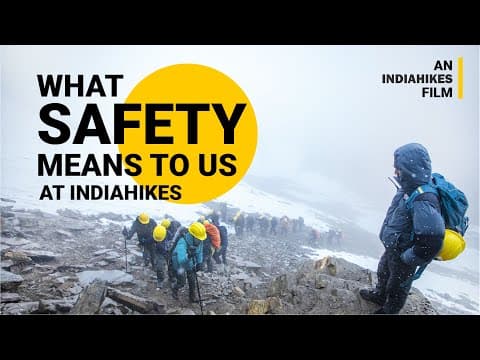
When we brought out new trails in Indian trekking, safety came with us. Back in 2012, we were the first to introduce microspikes, and two years later, pulse oximeters became standard thanks to us. Nobody does safe treks like Indiahikes. In the mountains, emergencies don't care who you're with – everyone knows that when trouble hits, you look for the yellow tents of Indiahikes.
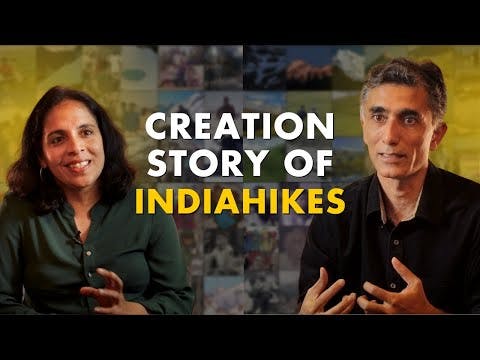
We are pioneers in trekking. Since 2007, we have brought out treks that have become India's most famous treks: Roopkund, Rupin Pass, Buran Ghati, Kedarkantha, Kashmir Great Lakes, Tarsar Marsar, Brahmatal, Phulara Ridge—the list goes on. In 2023 alone, we brought out five new treks in Indian trekking. We know treks better than anyone . This comes directly from the reason why Indiahikes was born: to bring out trek information and enable trekkers to trek on their own.

More than 25,000 people trek with us every year. We are the largest trekking organisation in India. 24% of our trekkers come back to trek with us every year. Over 4,000 students from the top educational institutions trek with us every year. Aside from this, families with children choose to trek with Indiahikes knowing that our treks are the safest. We have taken over 8000 children trekking so far, and the number continues to grow.
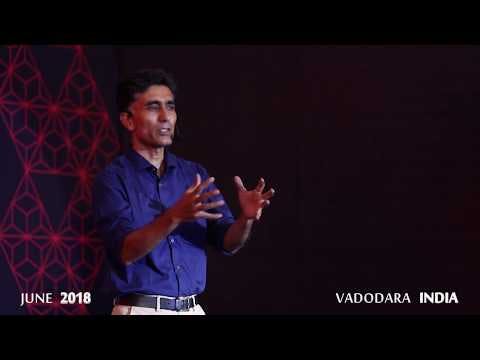
We focus on designing transformative experiences. Our trek leaders conduct thought-provoking exercises that help you reflect and contemplate. This impact stays with you for a long time. Trekkers return feeling energised, more confident, or developing abilities to deal with difficulties. Many have changed careers, rethought their core values, become more humble, shown gratitude to others, or started a new fitness journey.
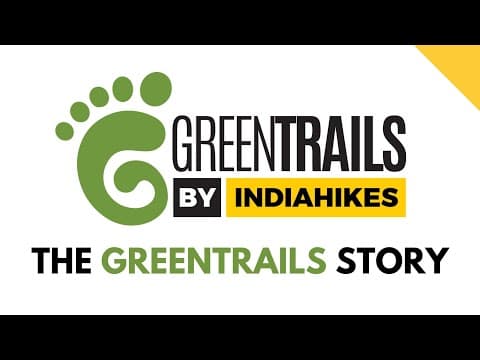
Since 2012, we have pioneered sustainable practices that have become standard in trekking. Using eco-bags, our trekkers have cleared over 120 tonnes of litter from the mountains. We do not carry packaged foods; instead, we serve freshly made food. We do not light campfires; we carry coal to light angethis to keep you warm. Our bio-toilets not only keep our toilets odour-free but also enrich the soil. When you trek with us, you leave mountains better.
The Indiahikes Advantage
You’re guarded with our trek again philosophy
If you are unable to complete a trek, or if you love a trek, you can repeat it with us anytime. You don’t have to pay us for it. See our thoughts behind this here.
Get expert guidance even before you start the trek
Get personalised support from our expert Experience Coordinators. From registration to departure, they'll prepare you every step of the way.
Join any group, they are all women-friendly groups
With around 30% of our trekkers being women, all women, including those travelling solo are comfortable to join any of our groups.
Meet like-minded trekkers
Indiahikes carries with it a strong spirit of trekking, one that comes with fitness, minimalism, mindfulness and a deep love for nature.
Avail a 30% scholarship for children aged 8-14
We want to see more children trekking. Indiahikes will sponsor 30% of your child’s trek fee. Let them explore nature, build confidence, and create memories.
Trek Together, Save Together: 10+ Group Waiver
Sign up for an Indiahikes trek with 10 or more trekkers, and one lucky member gets their trek fee waived entirely! You only pay for 9.
Sign up to be notified of new treks, tips and trail information
Join 120,000 other trekkers. Less than 0.01% unsubscribe.
Treks by Categories
Treks by season, treks by month, treks by duration, treks by difficulty.
- Easy - Moderate
- Moderate - Difficult
Treks by Region
- Uttarakhand
- Himachal Pradesh
- Lahaul and Spiti
- Jammu & Kashmir
- West Bengal
- Chhattisgarh
Treks by Experience
- Family Treks
- Stargazing Treks
- Senior Treks
- Adventure Therapy
- Summer Camps
- Youth Camps
- Cancellation policy
- Work with us
- Our sustainability practices
- Privacy Policy
- Terms & Conditions
080 468 01269 Mon to Sat - 9.30 AM to 7.30 PM Sun - 9.30 AM to 6.30 PM
Bengaluru Office
139, Defence Colony Road, Defence Layout, Sahakar Nagar, Bengaluru, Karnataka 560092
Dehradun Office
No.85/10, Neshvilla Road, Dehradun - 248001
© 2024 Indiahikes Private Limited
All images are copyrighted by their respective authors.
How to Trek the Himalayas for $30 a Day

T he Points & Miles Backpacker is a weekly column appearing every Monday. TPG Contributor Brian Biros , who has backpacked the globe for the past 15 years, discusses how to fund this adventurous, budgeted and increasingly popular form of travel with points and miles. He'll also explore all things backpacking-related. Read his story here and his high-level approach here .
There are mountains, and then there are the Himalayas. No disrespect to the Rockies, Alps and Andes, but there's really no feeling that compares with being dwarfed by the towering, jagged peaks of Nepal. And you can get that sensation without breaking your back or your bank, because treks through the Everest and Annapurna regions of the south Asian nation can be surprisingly accessible and affordable.

Of course, summiting Mount Everest is an accomplishment very few will ever attain. It's not only physically treacherous, but also prohibitively expensive. Climbers wishing to summit the highest mountain above sea level can dish out $20,000 to the Nepalese government in fees alone, and the cost of a full expedition starts at double that price, and can run well over $100,000.
But nontechnical trekking through the Himalayas is much, much more reasonable on the same lower altitude paths used by professional mountaineers. Nepal is a long way away, but it's reachable on points, too, putting it well within reach for savvy points travelers. Once there, it really is possible to live on $30 a day or less while trekking through the most magnificent mountain landscape on the planet.
Daily Budget
Lodging : $0 to $5 Food and Drink : $20 to $25
And that's about it. "Teahouses" provide lodging and cost nearly nothing because it's expected that you'll eat dinner and breakfast there during your stay. But food is plenty cheap around Nepal, too. I felt like a hobbit eating breakfast followed later by second breakfast. But even at four meals a day, I was rarely spending more than $25 total on food and tea. Just bring plenty of Nepalese rupees — no one takes credit cards and you'll find zero ATMs on these treks.
You can also skip the beers until the trek is over. Transportation costs drive the price of booze high, and it's a pain to dispose of the cans and bottles. Plus, you'll already be challenged to stay hydrated with the extreme elevation.

Up front costs are also reasonable. Nepal's entry visa costs $40 and hiking permits are around $40 and $50. But you don't want to cut corners on the preparation. You'll definitely need traveler's health insurance with medical evacuation, and quality hiking shoes, clothes and gear.
Bring your own methods for treating water , and don't buy bottled water . Hiking is the main event, and the continuous 360-degree views are all free. Obviously, there are plenty of good opportunities to spend more than this budget, but the point is you can trek through the Himalayas for less than what it costs to stay at home.
How to Get to Nepal on Points
Round-trip economy award tickets to Kathmandu (KTM) cost about 80,000 American AAdvantage miles, 85,000 United MileagePlus miles or 90,000 Delta SkyMiles. The best value and availability may be found using AA miles on Etihad, Qatar or Cathay Pacific. Business class costs are roughly double, and availability is much more scarce.
However, cheap economy cash fares can be found, too, which you can pay for with points. The standard cost is $1,000 to $1,200 but can drop as low as $600 round-trip. Using Chase Ultimate Rewards points , that's only 40,000 points round-trip!
Consider a Guide
One of the most common questions about trekking the Himalayas is, "Do you need a guide?" But the better question is, "Do you want a guide?"
I trekked the Everest region with two friends, and we split a guide and a sherpa. Years later, I trekked the Annapurna Circuit with two friends, and we didn't have either. There are advantages to both. It's simply a matter of preference.
Hiking With a Guide
If you don't have trekking experience, a guide can ease a lot of the logistical burden. However, the main benefit of hiking with a guide is that he or she should have a deep knowledge of the area. Aside from textbook facts about tectonic plates, the culture of the local population is fascinating. If you have a curious mind, a skilled guide should have an answer to nearly every question that comes to mind. So don't be shy.

Of course, hiring a guide and maybe a sherpa to help carry supplies will double the baseline daily cost or more, but that is still only $60 per day. And you're directly supporting the local population where the average monthly salary is roughly the cost of a nice dinner in the US.
Hiking Without a Guide
If you're content wandering through the mountains unsupervised and comfortable with the weight of your pack, you don't need to hire a guide to trek the Himalayas. Generally, the routes follow a valley or river, so it's hard to get too lost (save for the occasional wrong turn). Just make sure you have a reliable guidebook and a large, detailed map.
While guides are flexible and usually willing to adjust routes as you go, they may be less flexible with trip duration. You may find yourself in a village, for example, where you want to rest your feet and relax for a few days. Or you may want a multiday side trip. Or you may decide on the backside of the Annapurna Circuit you're over it and want to fly the rest of the way from Jomsom. You likely won't get money back if you decide to cut your trip short. And while guides are generally willing to extend treks to work longer, they may run into scheduling conflicts with the short trekking seasons, which only last from April to May and late September to early November.

Get a Good Guide Book and Map
If you are trekking the Annapurna region, I highly recommend " Trekking the Annapurna Circuit & Trekking South of Annapurna: Along the New NATT Trails Which Avoid the Road ." Sure, it definitely loses some style points with that title, but it does clearly explain what makes the book so great.
Years ago, the trail along the first several days of the Annapurna Circuit was converted to a road. This was much more convenient for locals who previously had to hike to get anywhere and relied solely on sherpas for outside goods. For hikers, however, a walk on a road is much less appealing.
Fortunately, new trails have been created that, as the title mentions, avoid the roads and make the Annapurna Circuit a true trek once again. The German and Nepalese hikers that created and marked these new Natural Annapurna Trekking Trails (NATT) also wrote the guide book. The fourth edition is available on Kindle in the US, otherwise some Amazon UK listings will ship internationally. You'll also want the map to accompany the book. Both the book and map can be bought locally in Nepal, but it's best to get them long before for planning.

For a great overall guide to trekking Nepal, including the Everest region, check out " Lonely Planet Trekking in the Nepal Himalaya ."
Even if you hire a guide, a good guide book and map is still highly recommended. Start reading, planning, shopping and prepping well beforehand.
I know no one ever says to "pack heavy" for a backpacking trip, but this suggestion is especially important when you are carrying the weight of your belongings on your back for weeks at elevation.
Halfway through day one of the Annapurna Circuit, I paid a local man $10 to carry a small bag of stuff I really didn't need back to my hotel. My friends also shed things along the way. Anything in the "maybe" pile should be left behind long before you begin. If you don't, you'll end up leaving it behind a week into your trek and never see it again.

Save the Shower
Showers are available at some teahouses, but you usually have to pay for the wood or gas to heat the water. You'll quickly get used to not needing a shower every night. In general, don't worry too much about hygiene. Splash your face with water, wipe down with a wash cloth and save the shower for after your trek. You will get smelly, and no one will care.

Merino wool garments are lightweight and can hold up against odor for much longer, meaning you'll pack less and trek longer before you start to miss your shower.
Rent Equipment Locally
You'll need a warm sleeping bag (negative 10 degrees Celsius), but you can rent this in Kathmandu for about a dollar per day from many places including, most likely, your lodging. Even though you'll be wearing layers within the bag, a silk sleeping bag liner will provide a few extra degrees warmth (and peace of mind if you don't trust the cleanliness). I've mentioned my love for silk liners' usefulness and versatility before, and it's definitely a worthy piece to add to your travel arsenal.
I'm also a fan of trekking poles that can also be rented in Kathmandu for a dollar per day. They ease the impact on your knees and will help you up the long, steady inclines. They also saved me from falling on my face on more than one occasion.

The one thing you don't want to rent on arrival? Boots. Make sure your hiking boots are well broken in before your trip, and always wear two pairs of socks — one inner liner pair and an outer pair for warmth (no cotton)! I got blisters a few days into the Annapurna Circuit and hiked in my friend's imitation Crocs for four days while wearing my other friend's liner socks. Please learn from my mistakes. Someone needs to make that experience worthwhile.

Annapurna Circuit Tips
If you're trekking the Annapurna region, the Annapurna Circuit is rightfully the most popular option. Three weeks is suggested for the trek, but it's possible to cut out a week or more by making some tough sacrifices.
- Don't Bypass the Beginning: Many trekkers will use the new roads to jump in a jeep and bypass the first few days of the circuit. But the hike from Besisahar to Chame is the greenest portion of the entire trek. Don't sacrifice these days in the jungle just because you can. Follow the NATT trails and you'll spend minimal time hiking the road.
- Take the Side Trek to Tilicho Lake: This is arguably the most beautiful portion of the entire Annapurna Circuit, and a highlight you don't want to miss.
- Explore the Mustang Territory: After you cross the Thorong La Pass, you'll want to relax for a couple nights in the next town of Muktinath. This is also the heart of Mustang territory. But you won't find any Ford vehicles here. A day trip to the Mustang villages is like stepping back 300 years.
- Abbreviate the Backside: If you're short on time, you can always jump in a bus or jeep on the backside and get down to Pokhara quickly. Once you pass Thorong La and leave Muktinath, the trek becomes much less climactic.
- Unwind in Pokhara: The circuit ends in Pokhara, an average-size town on a pretty lake, but a megalopolis compared to what you've seen on the circuit. Relax here with a few days on the lake, or even try some cheap adventure sports if you have the budget.

Everest Region Tips
- Don't Just Go to Base Camp: When I arrived in Kathmandu the first time, I had every intention of trekking to Everest Base Camp, but that's where people challenged me with the question, "Why?" Nepal's Everest Base Camp (not be confused with Tibet's Everest Base Camp which was recently closed to tourists ) isn't a pretty viewpoint of Mount Everest. In fact, you can't even see it from camp. It's a strategic acclimatization camp for climbers preparing to summit Mount Everest, and makes a great stop on a trek with multiple passes and peaks. But as a sole destination, there are better options.
- Summit Gokyo Ri: The best alternate to the Everest Base Camp Trek is the trek to Gokyo. The path diverts away from Base Camp a few days before and arrives in the picturesque town of Gokyo and its famous lakes. The nearby summit of Gokyo Ri, which is the same elevation as Everest Base Camp, has a 360 degree view that includes four of the 14 highest peaks in the world — Mount Everest included. Like Everest Base Camp, this trek is roughly 12 days long.
- Take the Three Passes Trek: This route wasn't well established when I trekked the area, but it looks like one of the best treks to see the highlights of the Everest region, including Everest Base Camp and Gokyo. Set aside at least 16 to 18 days for this trek, with three weeks or more being ideal.

The beauty of the Himalayas isn't reserved for the Sir Edmund Hillarys of the world. Logistics are easier than you'd expect and Kathmandu is definitely reachable on points. Be sure to look out for Acute Mountain Sickness (AMS), which I discussed in an earlier article on climbing Mount Kilimanjaro, but almost anyone can get into shape and save up the few bucks necessary to experience the world's mightiest mountains.
I f you're looking to back that pack up and get some guidance, send your questions to [email protected] !
All photos courtesy of the author.
Trek The Himalayas

- See all photos

Similar Experiences

Most Recent: Reviews ordered by most recent publish date in descending order.
Detailed Reviews: Reviews ordered by recency and descriptiveness of user-identified themes such as waiting time, length of visit, general tips, and location information.
Trek The Himalayas - All You Need to Know BEFORE You Go (2024) - Tripadvisor
Trekking In Himalayas: Best Himalayan treks
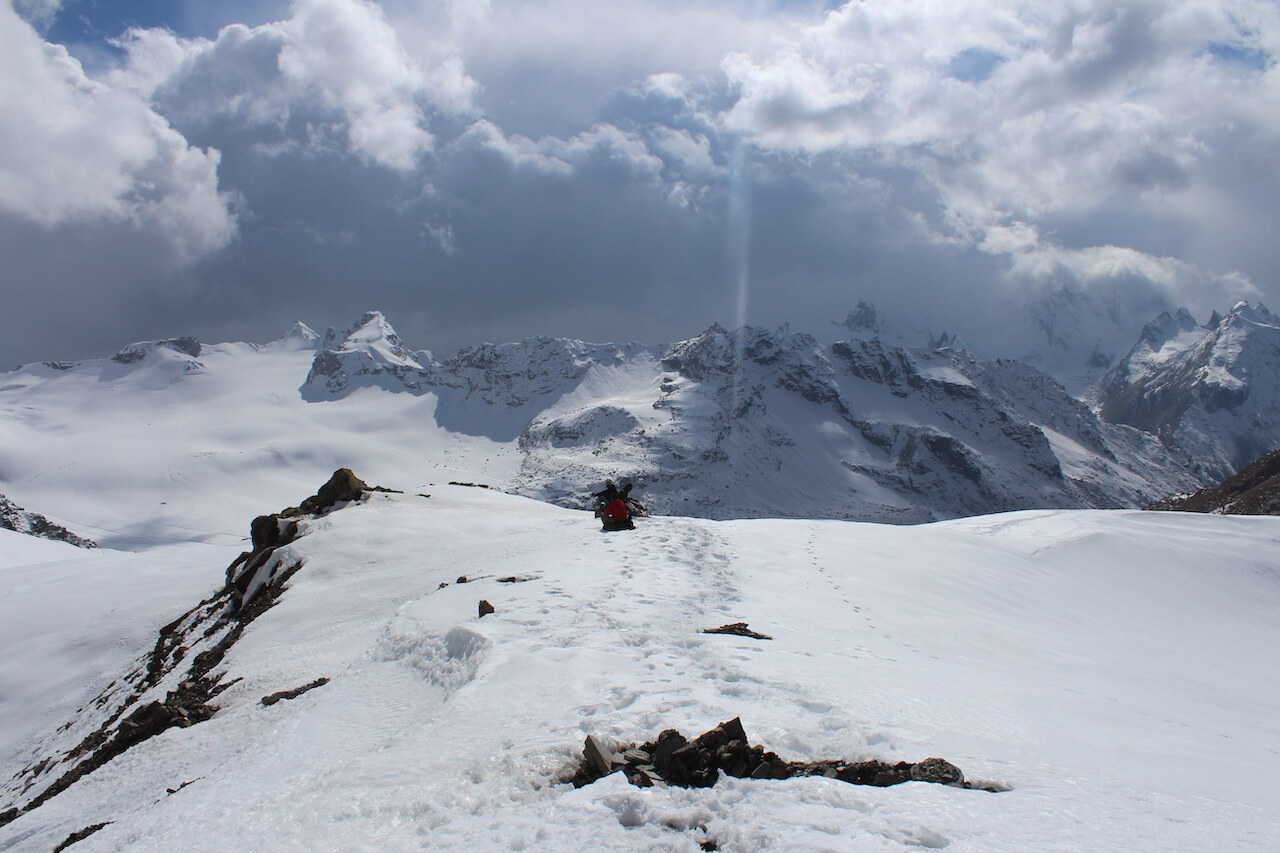
It is rightly said, "If the Ganges is the mother, Himalayas is the father. One nurtures and nourishes, the other provides and protects." The Himalayas, the name that translates to the " Abode of Snow ", is the mountain range in Asia which houses many of the world's highest mountains such as the Mount Everest and Kanchenjunga. The Himalayas cover a distance of approximately 2,400 km and are stretched across India, Pakistan, Afghanistan, China, Bhutan, and Nepal. The Himalayas cover approximately 75% of Nepal.
Himalayan weather changes throughout the year in each part of the Himalayas. The temperature ranges from 30 degree Celsius in summers to 18 degree Celsius in winters in the southern foothills of Himalayas whereas the temperature is 25 degree Celsius in summers to really cold winters in the middle Himalayan valleys. The higher ranges of Himalayas record 15 to 18 degree Celsius in summers while winters record temperatures below freezing point.
The Himalayas have a diverse topography which includes jagged terrains, high elevations, steep ascents, gentle slopes, rugged trails, and gradual descents. This demands strong physical fitness and good stamina. One needs to work on building cardiovascular endurance and strength endurance. Undertaking a trekking specific training is also mandatory.
Trekking as a recreational activity/adventure sport has gained immense popularity in India and worldwide. Trekking in India has also grown extensively in recent years. Blessed with unique geography and interesting topography, India boasts of some spectacular trekking routes. If you're looking for gentler and smaller trails with hikes that are less arduous then trekking routes in the Western Ghats or Aravalli ranges can be your best bet. On the other hand, if you are an adventure junkie seeking to explore the unexplored and discover the magic of some mysterious trails then the Himalayas are your true calling. The imposing peaks of Himalayas allure the wanderer in you with a magnetic charm that is hard to resist.
The Himalayas are dotted with imposing peaks, placid lakes, incandescent glaciers, and rich biodiversity. Mount Everest at a staggering elevation of 29,029 feet is the highest peak in the Himalayas as well as on the entire planet. The Himalayas are home to other famous peaks like Mount Kailash, Nanga Parvat, Karakora (K2), Annapurna and, Manasklu.
Three major river systems of Asia, the Indus, the Yangtze, and the Ganga-Brahmaputra find their source in the Himalayas. The famous rivers of Ganges, Indus, Yarlung, Yangtze, Yellow, Mekong and Nujiang originate from the Himalayas.
With around 15,000 glaciers found in the Himalayan range, the Himalayas are the third-largest deposit of ice and snow in the world. Siachen Glacier, Baltoro, Nufra, Biafo, and Hispur are the notable glaciers located in the Himalayas.
The Himalayas are rich in biodiversity, the diverse eco-regions are interconnected, with vegetation ranging from alpine shrubs and meadows at 10,000 to 16,400 feet to coniferous forests of pine, hemlock, spruce and fir at 8,200 to 13,800 feet and temperate forests of oaks and maples at 6,600 to 9,800 feet. Plants like rhododendrons, orchids, lichen, and ferns also thrive in the mixed forests of the Himalayas. Tropical broadleaf forests located at 1,650 to 3,300 feet have deciduous trees.
Animals like snow leopard, Himalayan tahr, musk deer and pikas are found in the higher elevation of the Himalayas. Medium elevation Himalayan ranges are home to red pandas, takins and musk deer. Mixed forests in the lower elevation of Himalayas boast of a wide range of wildlife with over 500 species of birds. Golden langur monkeys have made these forests their primary home.
Tigers and Asian elephants are found in the tropical broadleaf forests.
With such rich topography, diverse offerings, and picturesque beauty, Himalayas have beckoned trekkers from all over the world. Let's take a quick peek at some awesome treks that the Himalayas have to offer-
Here are the list of best Himalayan treks
Best himalayan treks in india.
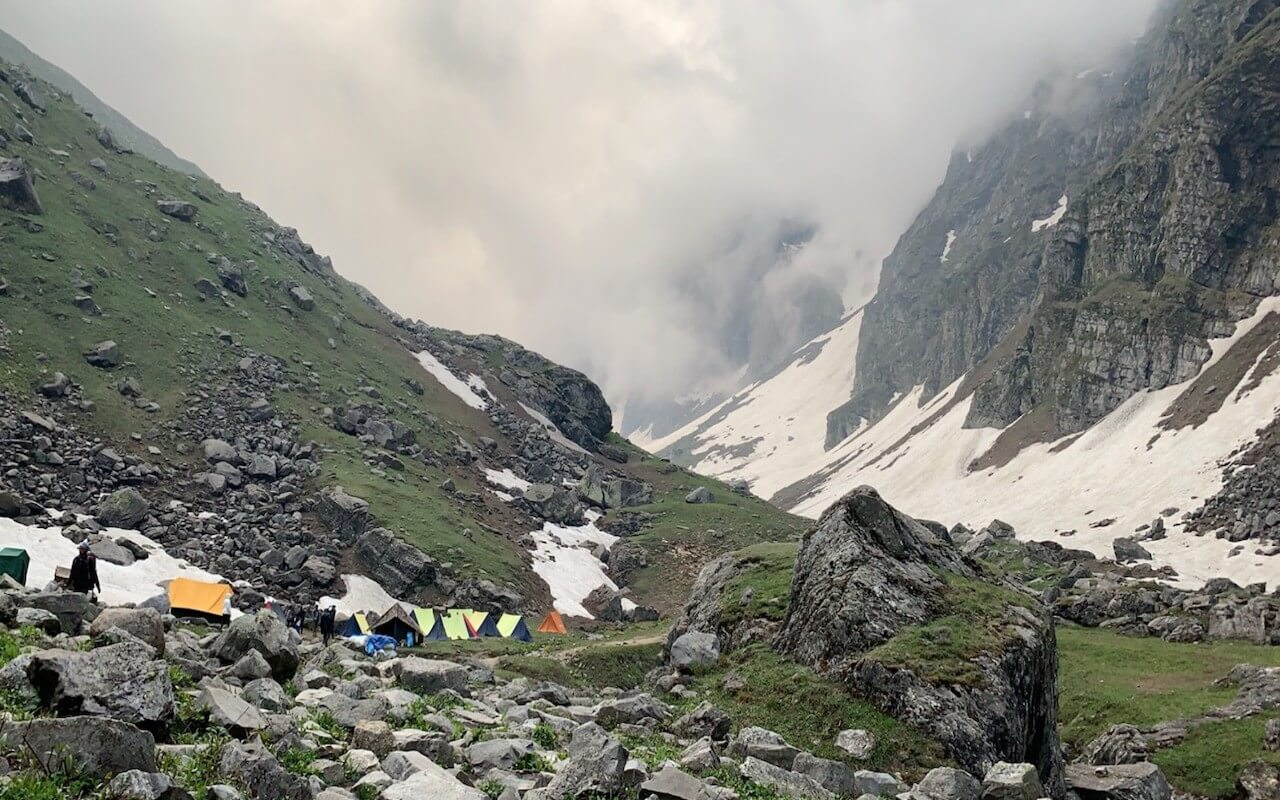
- Region- Uttarakhand Himalayas
- Trek Level- Moderate to Difficult
- Altitude- 11,700 feet
- Distance- 47 km
- Duration- 7 days
- Start Point- Dehradun
- End Point- Dehradun
- Best Season- April to June; September to December
- How to reach-
- By road- Dehradun is well connected with major Indian cities by motorable roads.
- By train- Dehradun railway station is well connected with major Indian cities.
- By flight- Dehradun can be reached by air (Jolly Grant Airport)
Har ki Doon or Valley of God offers a divine experience to trekkers with its gorgeous settings of lush green meadows, hamlets, pine forests, rugged terrains, melting glaciers and majestic Swargarohini peak. What makes this legendary Himalayan trek special is that Pandavas took this trail via Swargarohini peak on their way to heaven.
Kedarkantha
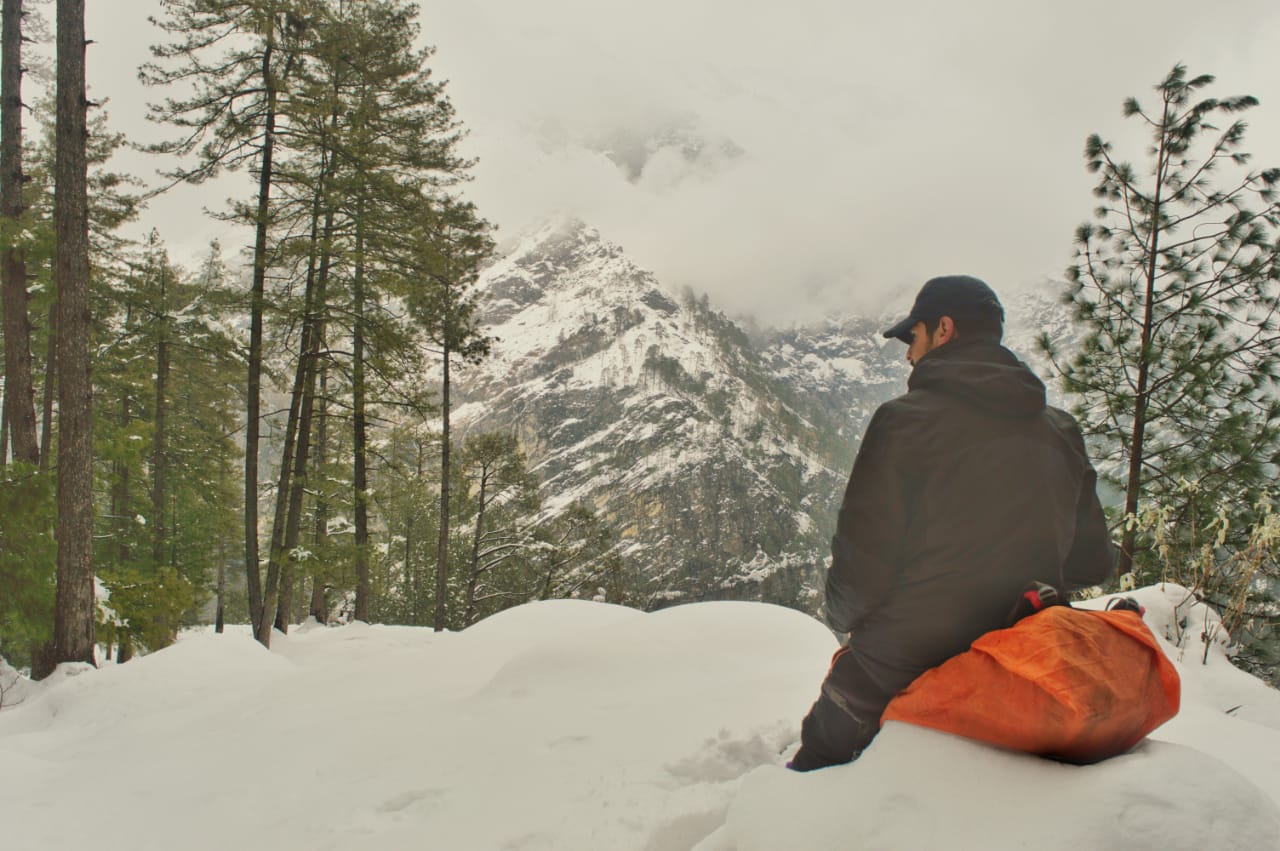
- Altitude- 12,500 feet
- Distance- 20 km
- Duration- 6 days
- Best Season- All season trek except June to September
Picturesque campsites, glacial mountain lakes, 360- degree view of colossal mountain peaks like Bandarpoonch, Swargarohini, Kala Nag, Gangotri, Yamunotri, and Dhauladhar ranges are the ultra selling points of this beautiful Himalayan trek. Mythology states that Lord Shiva meditated near the mountain lake called Juda ka Talab. It is believed that the water droplets from Lord Shiva's hair (Juda) fell on the ground and formed the lake (Talab).
Brahmatal Trek
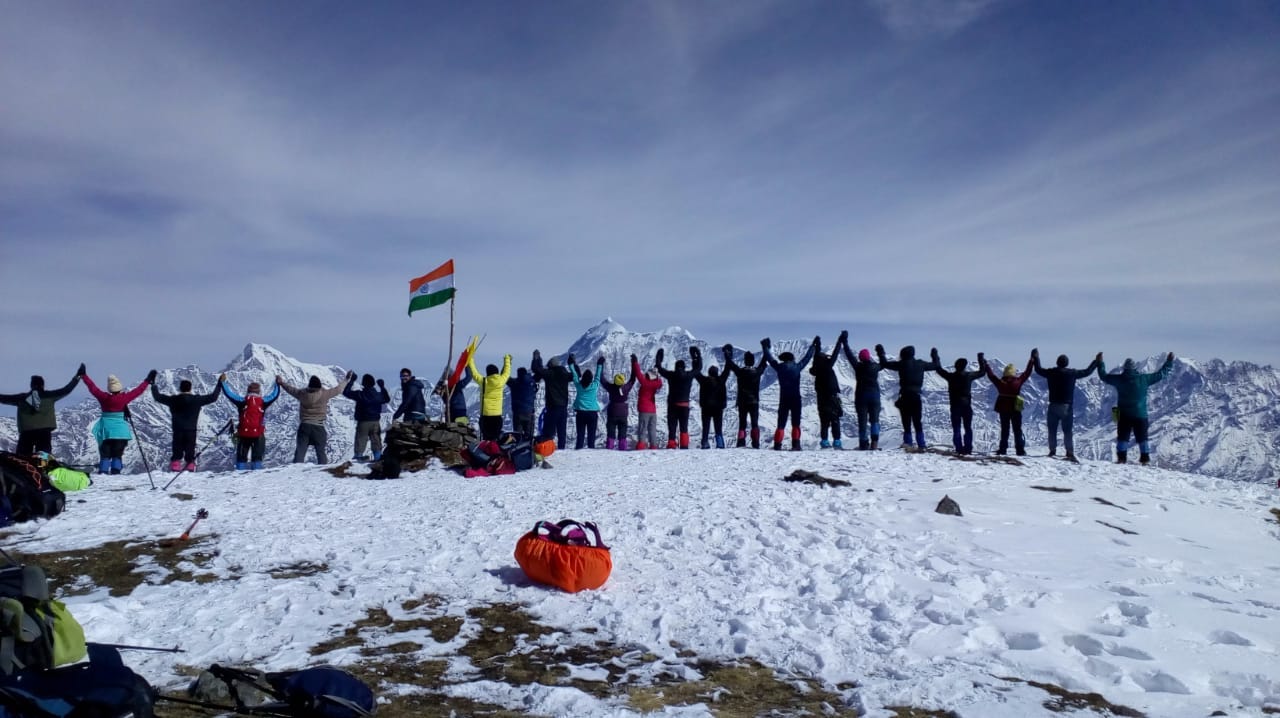
- Trek Level- Easy to Moderate
- Altitude- 12,100 feet
- Distance- 30 km
- Start Point- Kathgodam
- End Point- Kathgodam
- Best Season- Mid-November to March
- Kathgodam can be reached by motorable road or by train
Brahmatal is among one of the few trek to the Himalaya that boast of lakeside camping beside two mountain lakes, Bekal Tal and Brahmatal. This Himalayan trek is soaked in mythology; it is believed that Lord Brahma meditated on the banks of Brahmatal. Scintillating views of sacred Nanda Devi peak, Mount Trishul and Mount Kamet offer a spiritual bliss to the trekkers. Also this Himalayan trek will take you through the beautiful groves of rhododendrons and thicket of oak trees also offers stargazing opportunities under the moonlit sky.
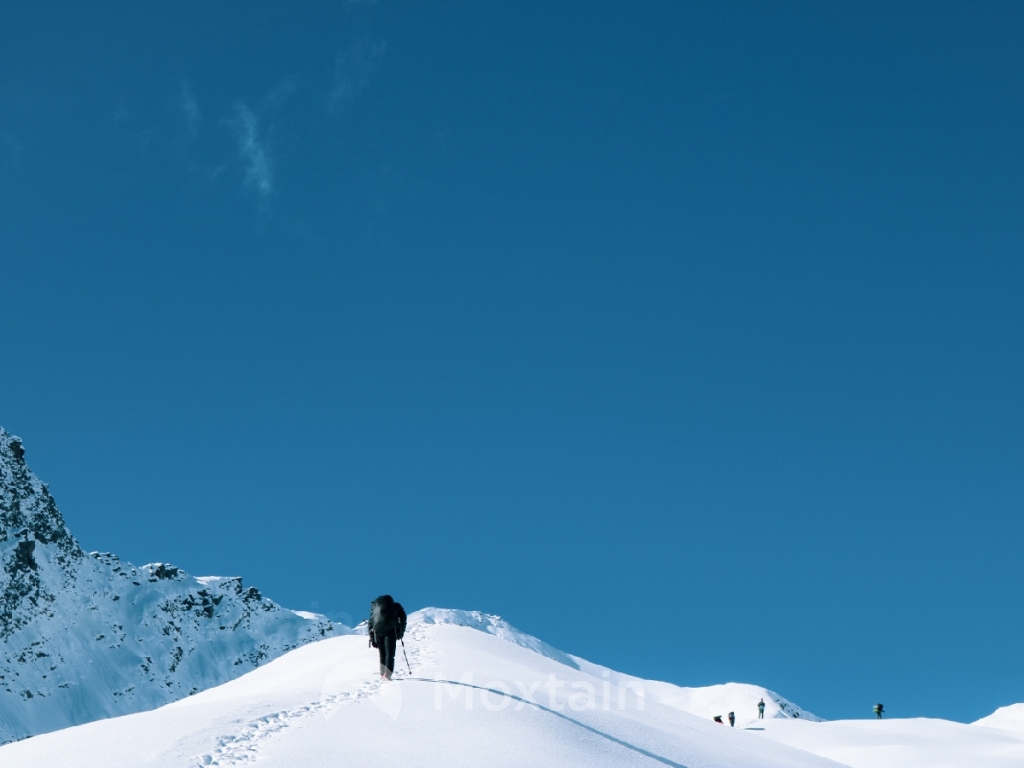
- Trek Level- Difficult
- Altitude- 16,240 feet
- Distance- 64 km
- Duration- 10 days
- Start Point- Sankri
- End Point- Janki Chatti
- Best Season- May to June; September to October
- By train- Reach Dehradun by train. Drive to Sankri (210 km)
- By flight- Reach Dehradun by air (Jolly Grant Airport). Drive to Sankri (210 km)
This high altitude trek to the Himalayas enchants you with the effervescence of Tons, Yamuna and Supin rivers. Sacred Ruinsara Lake, Yamunotri Shine, and frozen Saptarishi Kund are other highlights of this beautiful Himalayan trek which is steeped in religious ambience. In addition to this, stunning views of Kala Nag, Bandarpooch, and Swargarohini peaks are added delights of this amazing Himalayan trek.
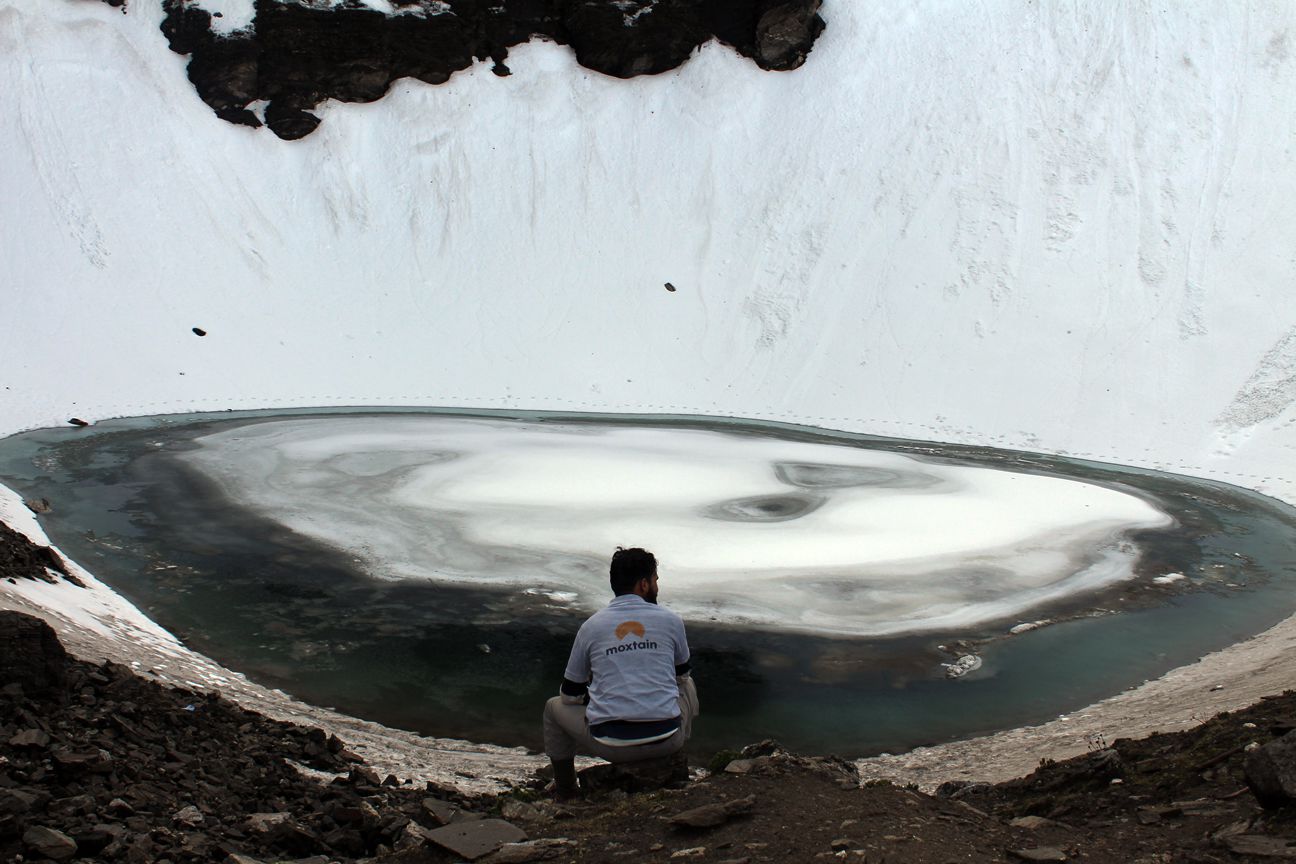
- Altitude- 15,700 feet
- Distance- 53 km
- Duration- 8 days
- Best Season- April, May, June;
Roopkund trek features " The Skeleton Lake " which is rooted in mystery. It is believed that around 500 skeletons belonging to the Paleolithic age are found around Roopkund Lake. Meadows of Ali Bughyal and Bendi Bughyal offer a pleasant change from the rugged terrains and dense forests. Scintillating views of Mount Trishul and Mount Nandagunti, Neelkanth, Chaukhamba, Kedarnath and Kedar Dome are worth capturing. Pindar river keeps you captivated with its luxuriant waters during this trek in Himalayas.
Rupin Pass Trek
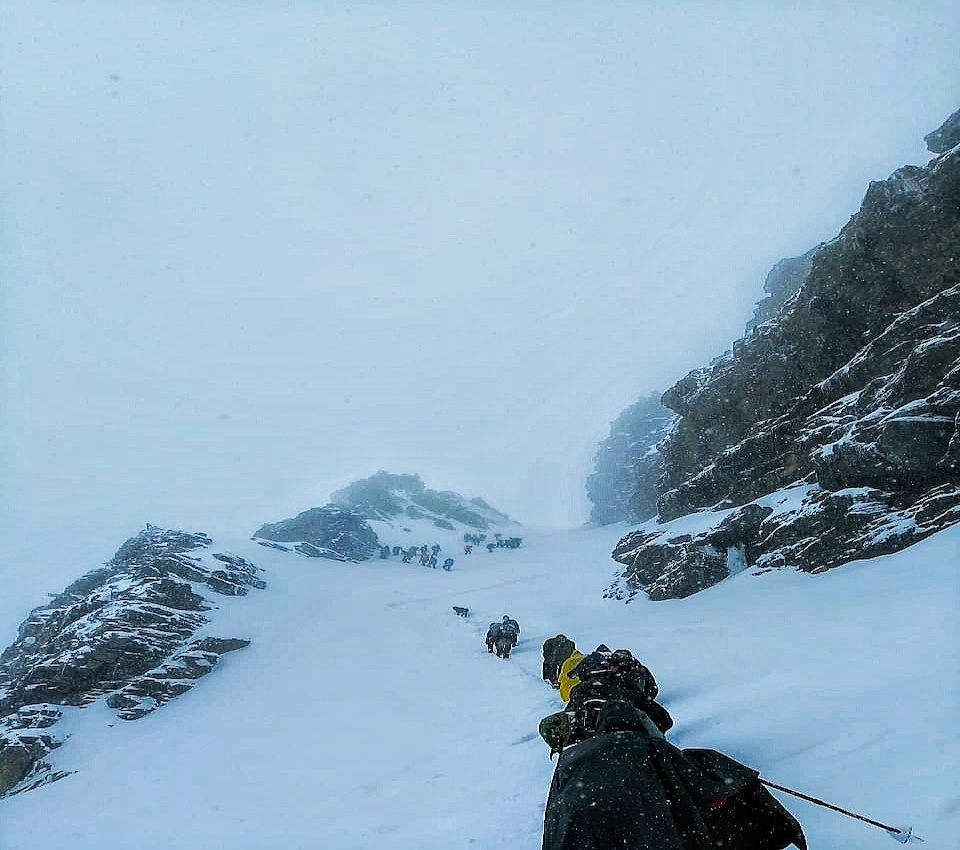
- Region- Himachal Pradesh and Uttarakhand Himalayas
- Altitude- 15,250 feet
- Distance- 52 Km
- End Point- Shimla
Rupin Pass trek floors you with the beauty of two of the most beautiful states of India, Uttarakhand and Himachal Pradesh. Fabulous scenery of the Himalayas, rhododendron forests, conifers, cascading waterfalls wooden bridges, intermingling cultures, and traditions of two states and beautiful temples make this Himalayan trek uniquely magnificent.
Ali Bedni Bugyal Trek
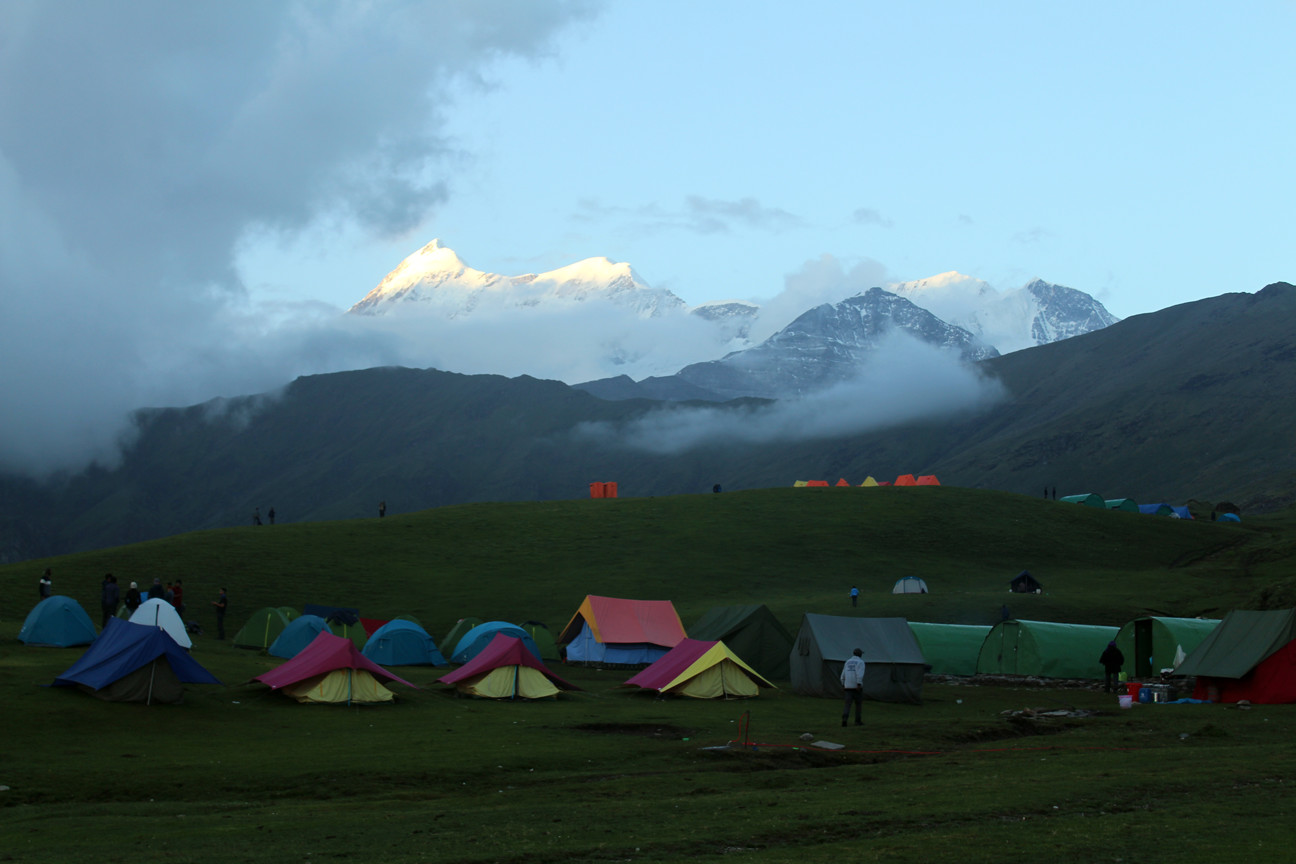
- Trek Level- Moderate
- Altitude- 12,000 feet
- Start Point- Uttarkashi
- End Point- Uttarkashi
- Best Season- All seasons except monsoon
- By Road- Uttarkashi is a 6-7 hours drive from Dehradun or Haridwar
The enchanting trek in the Himalayas takes you to the most beautiful Bughyals (high altitude meadows), bubbling streams, sprawling grasslands and offers mind-blowing views of the Trishul Parvat, Bandarpooch, Black peak, Gangotri range and the Greater Himalayas. It has been described as the fairy-tale trek in the Himalayas which offers some amazing ski slopes during winters.
Hampta Pass Trek
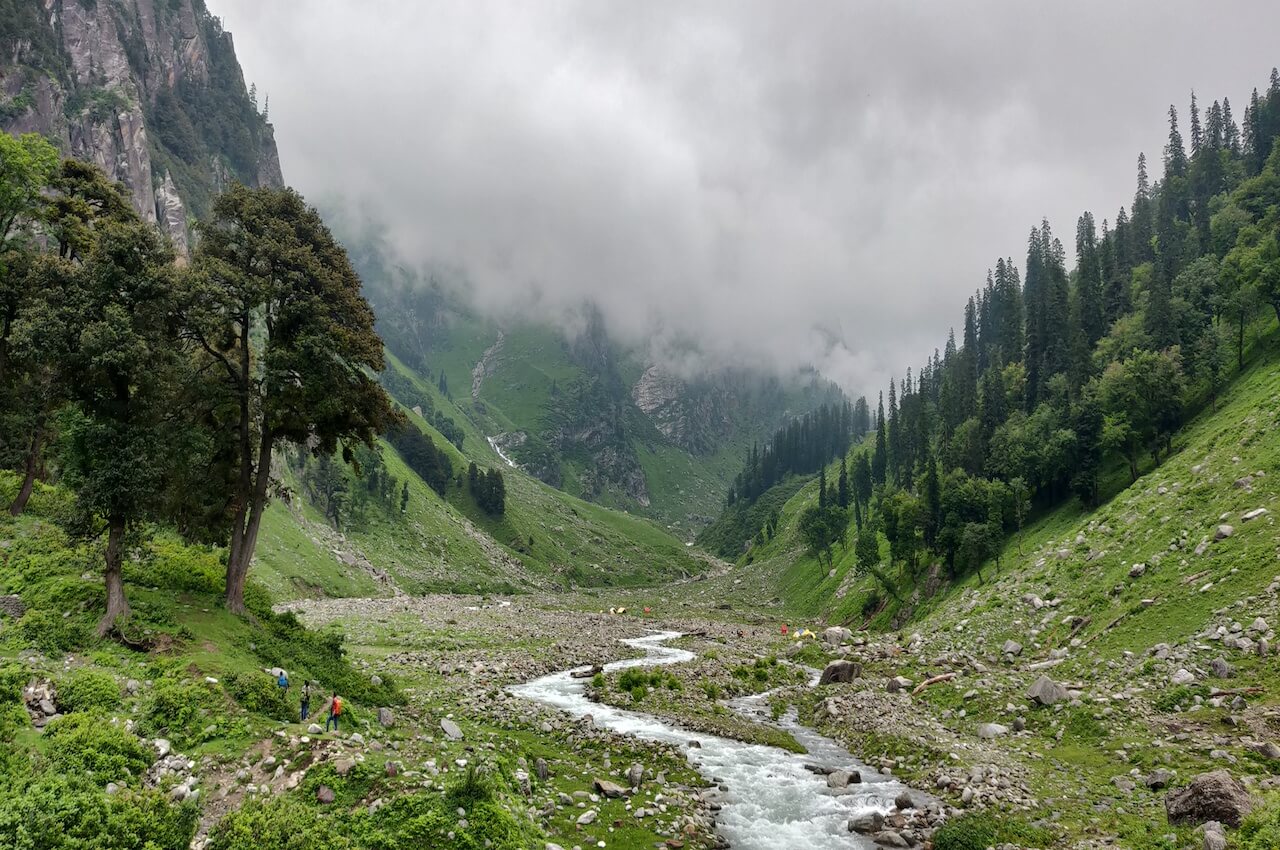
- Region- Himachal Pradesh Himalayas
- Altitude- 14,010 feet
- Distance- 28 km
- Duration- 5 days
- Start Point- Manali
- End Point- Manali
- Best Season- Mid-June to Mid-October
- By road- Manali is well connected to major cities by road
- By air- Bhuntar is the nearest airport which is 52 kilometres from Manali
Hampta pass treats you to dense pinewood forests, expansive meadows, effervescent mountain streams, wild flora, snow-clad mountains, spectacular valleys, and placid lakes, particularly everything a Himalayan trek can offer. The confluence of three trails Hampta Pass, Spiti and Rohtang Pass will take you to the most picturesque Chandratal Lake which is the highlight of this amazing trek in the Himalayas.
Goecha La Trek
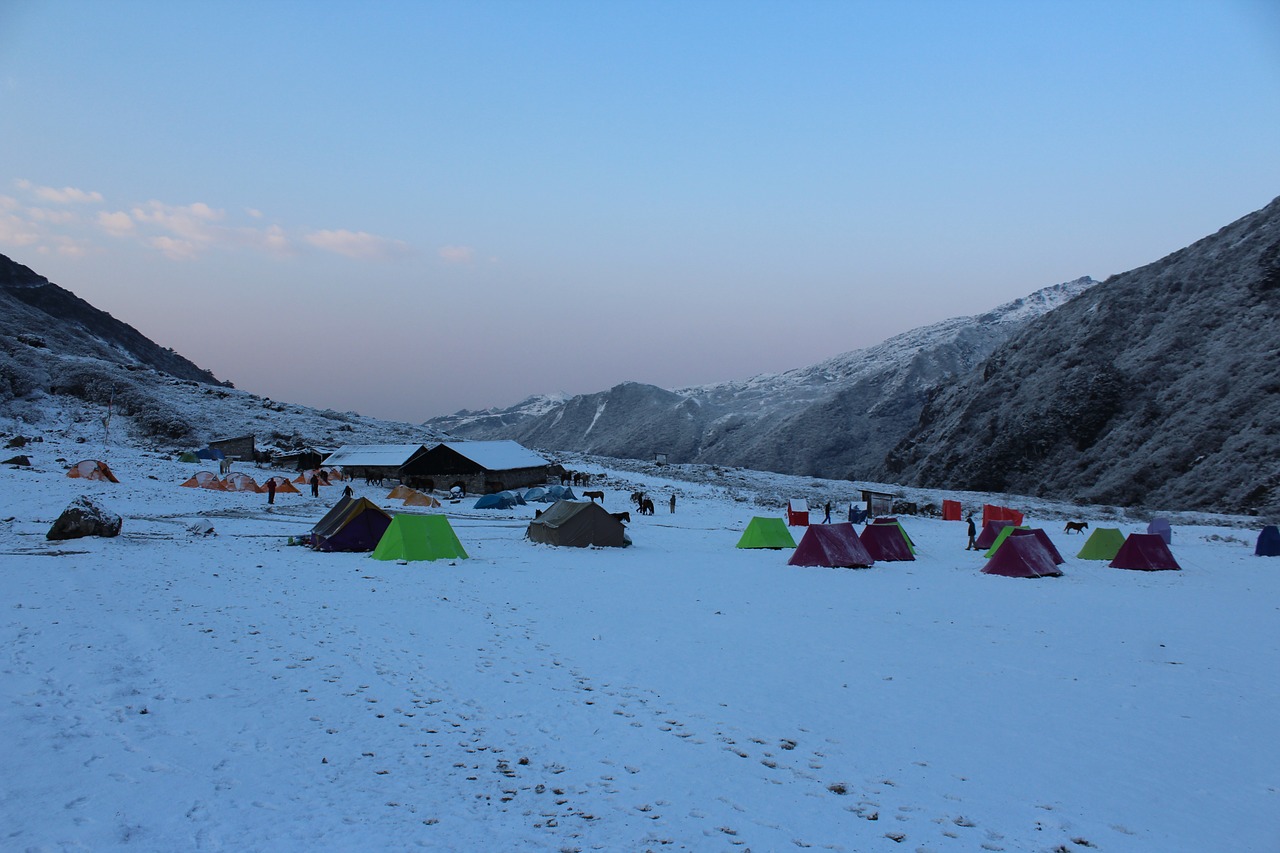
- Region- Sikkim Himalayas
- Altitude- 15,100 feet
- Distance- 100 km
- Duration- 11 days
- Start Point- New Jalpaiguri
- End Point- New Jalpaiguri
- Best Season- All season trek
- By train- Take a direct train to New Jalpaiguri or reach Kolkata by train. Many trains from Kolkataconnect to New Jalpaiguri.
- Flight- Take a flight either to Bagdogra or to Kolkata. From Bagdogra, reach New Jalpaiguri by road. From Kolkata, reach New Jalpaiguri by train.
Goecha La Trek is a delight as it offers an extravagant palate to its trekkers. Beautiful orchards, an exotic variety of flora and fauna, dense forests, rugged terrains of the northeast, stunning view of the majestic Kanchenjunga and 16 other mountain peaks from the Dzongri top make Goecha La one of the most spectacular trek in the Himalayas. The tranquil Samiti Lake is the star attraction of the Goecha La Trek.
Sandakphu Trek
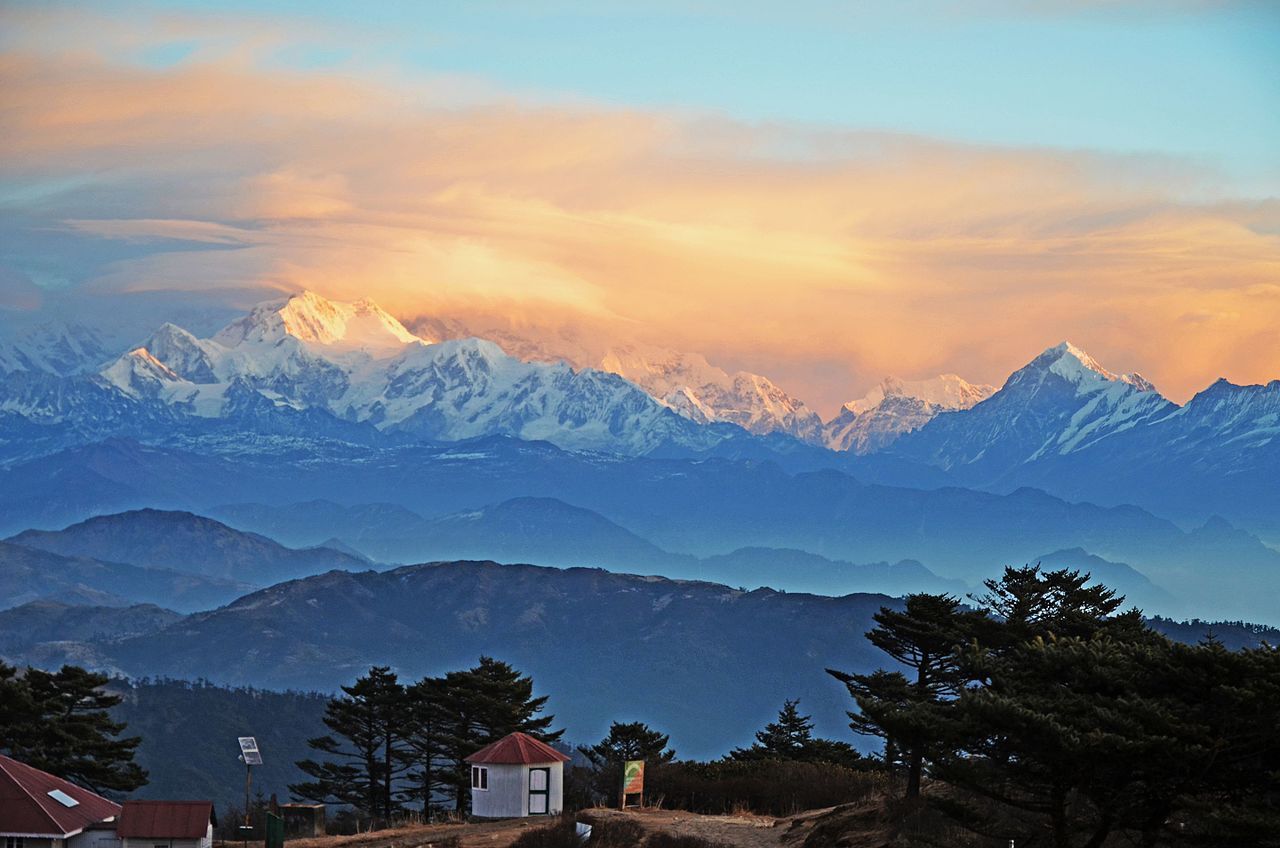
- Region- West Bengal Himalayas
- Altitude- 11,941 feet
- Duration- 6 Days
- Best Season- April to May; October to early- December
- By train- Take a direct train to New Jalpaiguri or reach Kolkata by train. Many trains from Kolkata connect to New Jalpaiguri.
One of the most enchanting Himalayan treks that traverse through Sikkim and Nepal. You explore the culture of two countries from close quarters. Stunning views of Mount Everest, Mount Makalu, and Mount Lhotse truly enthrall you and so do the unexplored terrains of this mountainous region. Crystal vision of Mount
Kanchenjunga as sunlight streams upon its icy summit at sunrise and sunset is the prized moment of this trek. Kalipokhri or the " Black Lake ", is a serene and stunning site encompassed by the colossal mountainous terrain and with the imposing Kanchenjunga at a distance.
Gangotri Glacier Trek
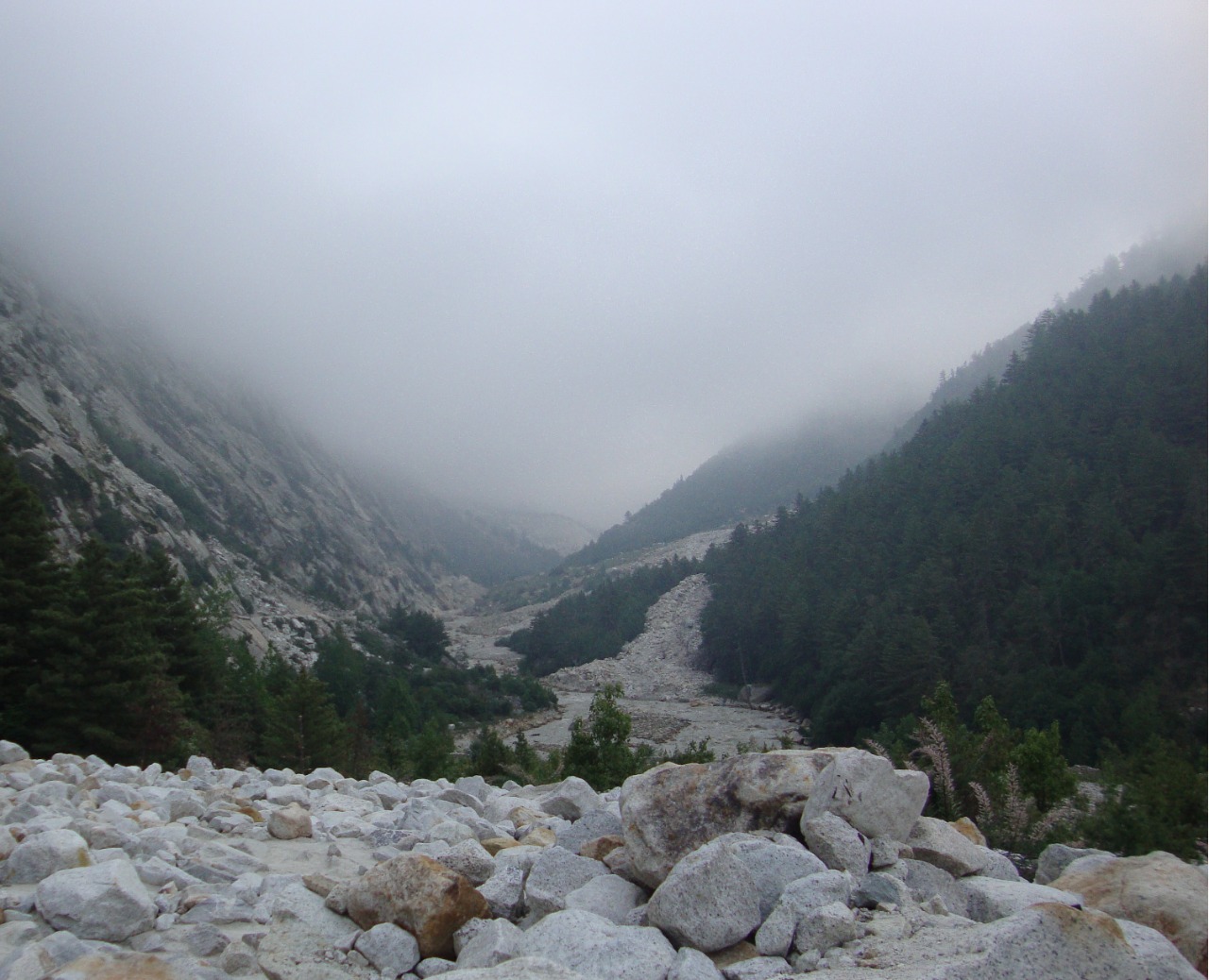
- Altitude- 14,638 feet
- Distance- 17 km
- Start Point- Haridwar
- End Point- Haridwar
- Best Season- May to June; mid-August to October
- By train- Board Dehradun Shatabdi train for Haridwar
- By flight- Take a flight to Jolly Grant Airport Dehradun. Drive to Haridwar (1.5 hours)
This challenging trek in the heart of Himalayas journeys from Gangotri to Gomukh (cow's mouth), by the banks of river Bhagirathi. Gomukh is the source of river Ganga. Visit the shrine of Gangotri, the holy place of Hindus. The many glaciers such as Gangotri Glacier (largest Himalayan glacier), Meru Glacier and Kirti Bamak Glacier are exclusive to this Himalayan trek. Witness the beautiful views of Mount Shivling peak, Gangotri group of peaks, Bhagirath group of peaks and Kedardome peak.
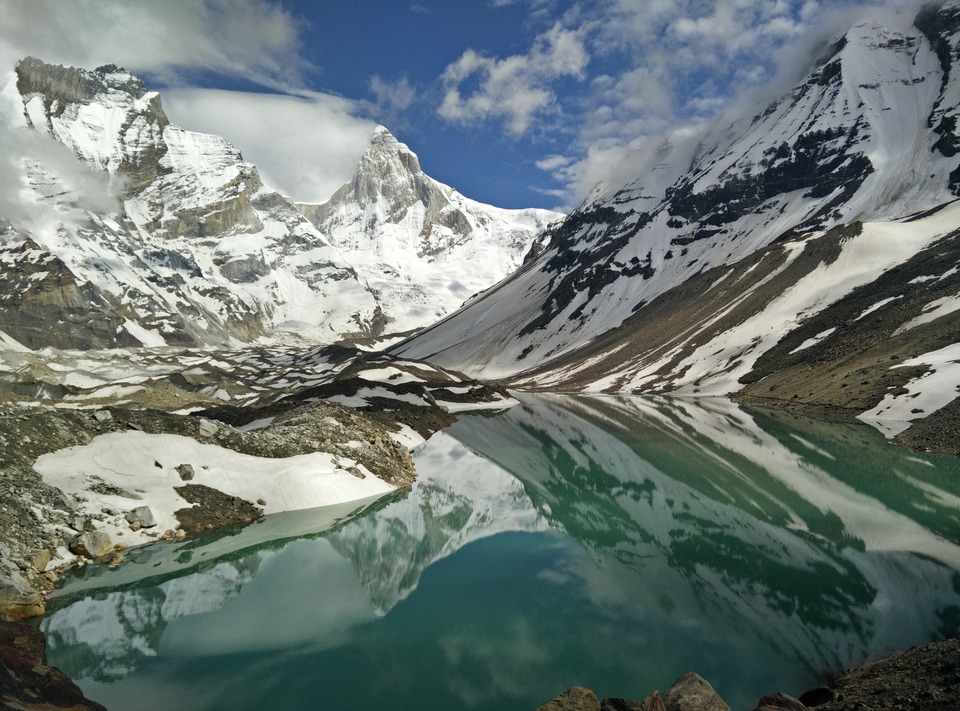
- Altitude- 15,485 feet
Kedar Tal or 'Lake of Lord Shiva', is one of the highest lakes in Uttarakhand nestled at the base of the Thalay Sagar peak and Bhrigupanth peak. This glacial lake is one of the star attractions of Kedar Tal Trek. The reflection of Thalay Sagar peak on the crystal clear waters of Kedar Tal is an out-of-the-world sight.
One of the hardest trekking routes, Kedar Tal trek journeys through grassy valleys, effervescent river streams, and waterfalls to take you to the holy site of Gangotri before breaking to an uphill and steep journey of rugged terrains. This challenging yet rewarding trek to the Himalaya offers breathtaking views of snow-clad gigantic mountains like Mount Thalay Sagar Mount Bhrigupanth, Manda Parvat, Mount Jogin, and Mount Gangotri.
Best Himalayan Treks in Nepal
Everest base camp trek.
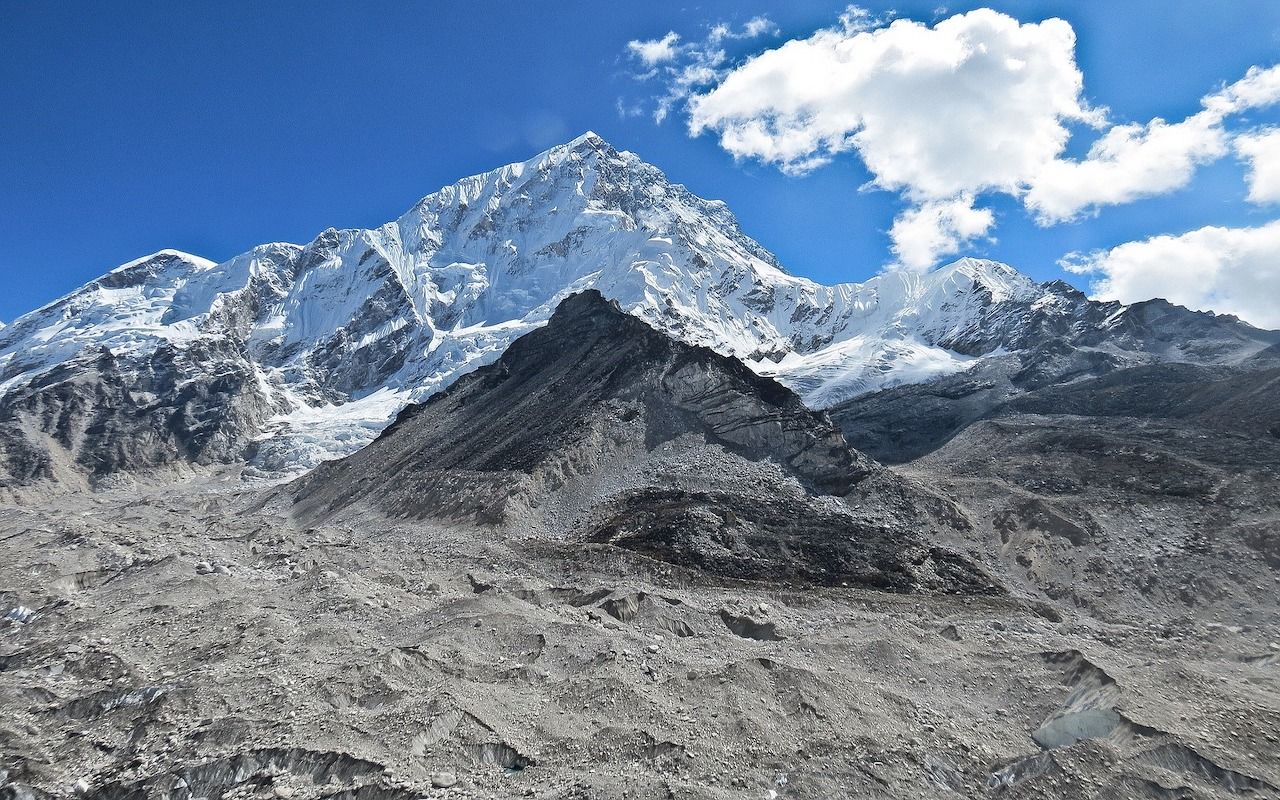
- Region- Khumbhu (northeastern side of Nepal)
- Trek Level- Difficult and Strenuous
- Altitude- 18,513 feet
- Distance- 130-km round trip
- Duration- 15 days
- Start Point- Kathmandu
- End Point- Kathmandu
- Best Season- April, May, early-June, September October and early-November
- By flight- Fly to Lukla from Kathmandu, flight time is 35 minutes.
Treacherous passes, rocky terrains, challenging treks and sub-zero temperatures with a lot of snowfall, the Everest base camp Trek is a wholesome package of thrill for adventure junkies. It is the closest that you can get to the majestic Mount Everest peak by trekking on a trail that was once journeyed by the legendary Tenzing Norgay and Sir Edmund Hillary.
Explore the distinct culture of " The Mountain People ", called Sherpas, familiarise yourself with colourful Buddhist and Hindu traditions and visit the colourful city of Kathmandu.
Culturally rich Namche Monastery, Namche Museum, Dingboche Monastery, and Tengboche Monastery are the unique highlights of this classic Himalayan trek.
Annapurna Base Camp Trek
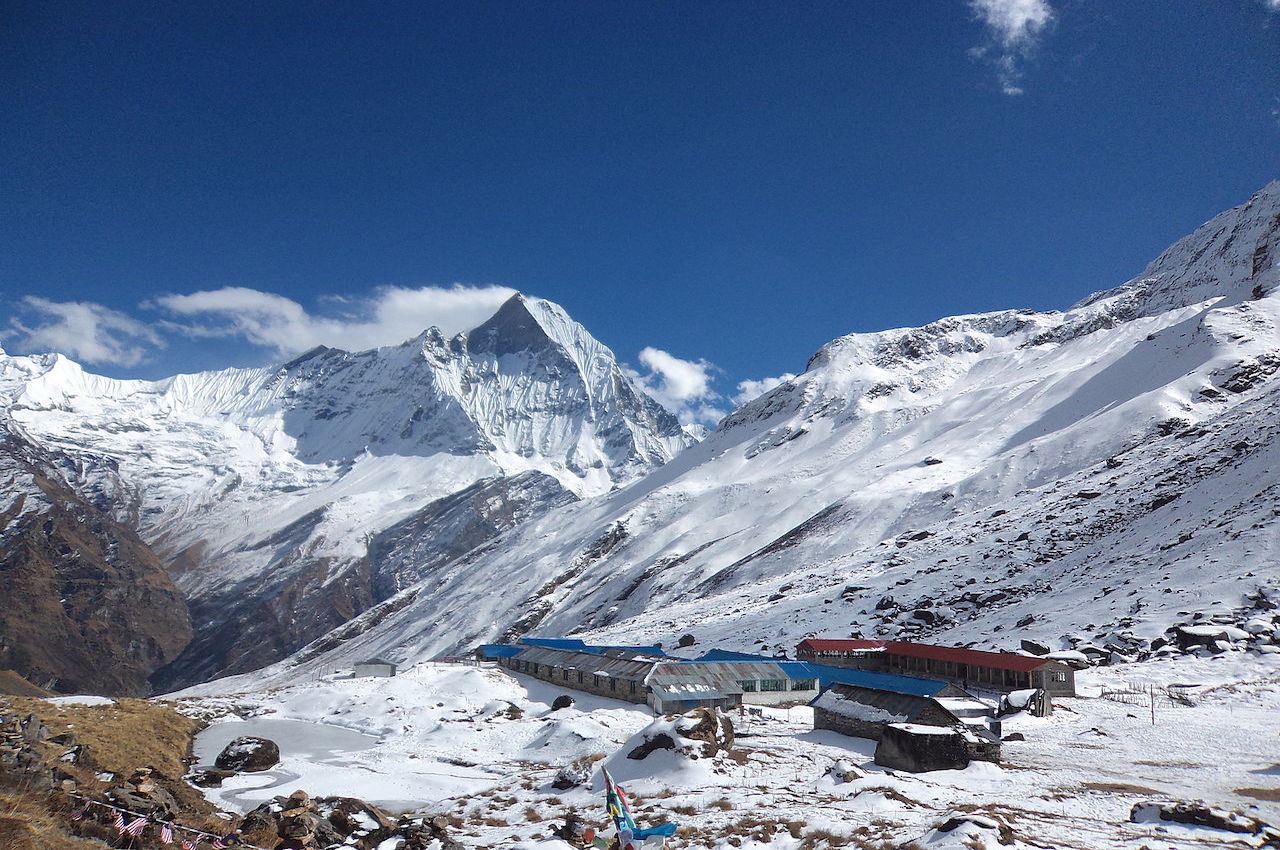
- Region- Nepal Himalayas
- Altitude- 13,545 feet
- Distance- 160 km
- Duration- 9 days
- Start Point- Pokhara
- End Point- Pokhara
- Best Season- April and October
- By road- Reach Pokhara by bus from Kathmandu and from Sunauli, which is next to the Indian border.
- By flight- Pokhara has a small airport. It is best to reach Kathmandu by flight and take a connecting flight to Pokhara.
Spectacular, challenging and somewhat formidable, that is Annapurna Base Camp trek is for you. Challenging snowy summits of Machapuchare Annapurna South and Huinchuli, diverse landscapes, cascading waterfalls, placid lakes, quaint villages, and lush forests all leading to Annapurna base camp, give you a memorable experience. You also discover hot water springs, explore ancient Buddhist monasteries, learn about Buddhist and Hindu traditions and visit UNESCO World Heritage Sites. The magical view of Annapurna massif, which is the 10th highest mountain peak in the world, leaves you spellbound. Machapuchare, the 'fish-tailed mountain', glorifies you with its spectacular view. This mountain is believed to be one of the abodes of Lord Shiva.
Makalu Base Camp Trek
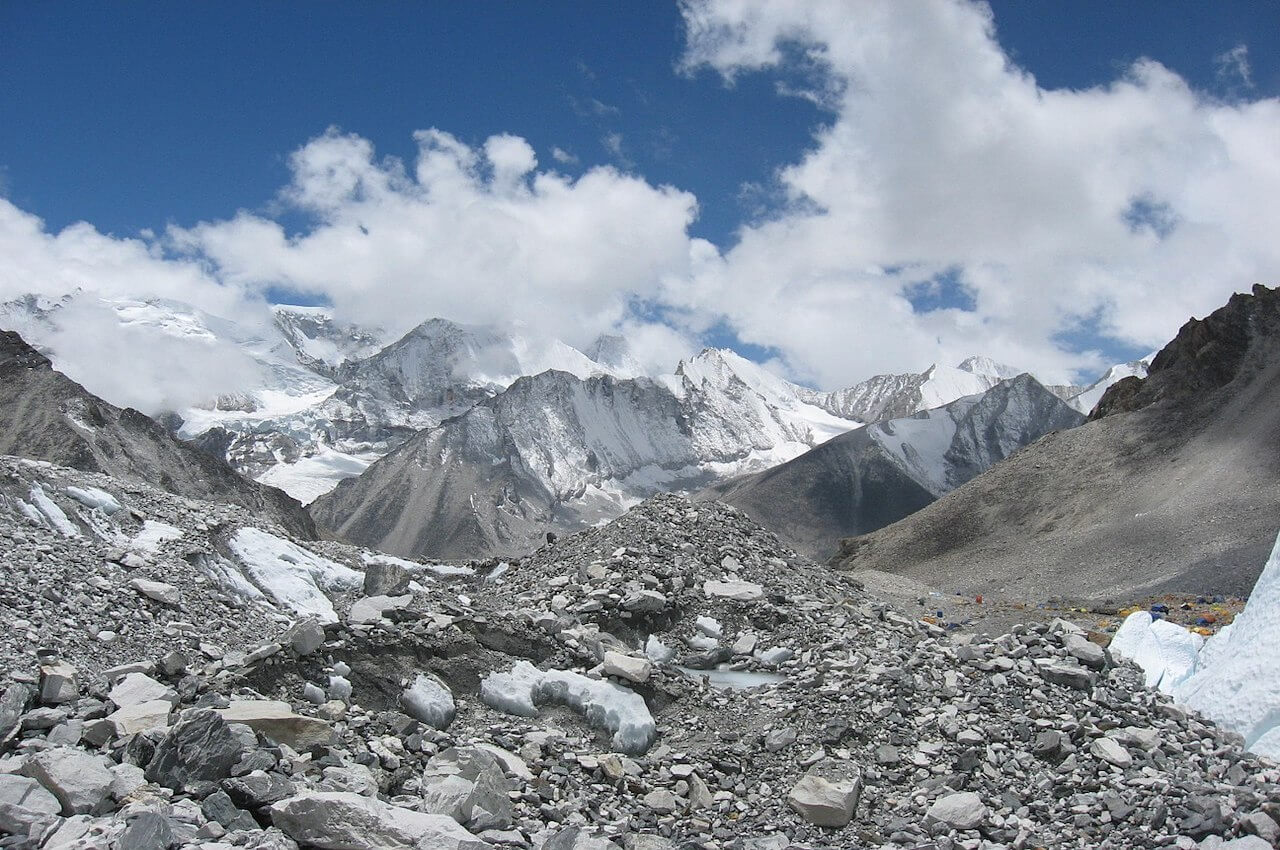
- Altitude- 15,978 feet
- Duration- 22 days
- Best Season- March to May; September to November
- By flight- 1-hour flight from Kathmandu to the small airport at Tumlingtar. Drive to the starting point of the trek, Chichila.
Soak in the scenic beauty of the fifth highest mountain in the world , Mount Makalu. Extraordinary temperate passes such as KeKe La Pass and TuTu La Pass, Shipton La Pass, Arun river Basin, the beautiful Barun river valley and the view of Nepal giant peaks are the main highlights of this challenging Himalayan trek. Experience remote landscapes like steep granite cliffs, cultures of Rai people (an ethnic group in the hills of eastern Nepal) and Sherpas (an ethnic group from Tibet who live near Everest). Get spectacular views of the rarely seen Kangshung face of Everest as well as Mount Lhotse, Chamlang and Kanchenjunga.
Gokyo Lakes Trek
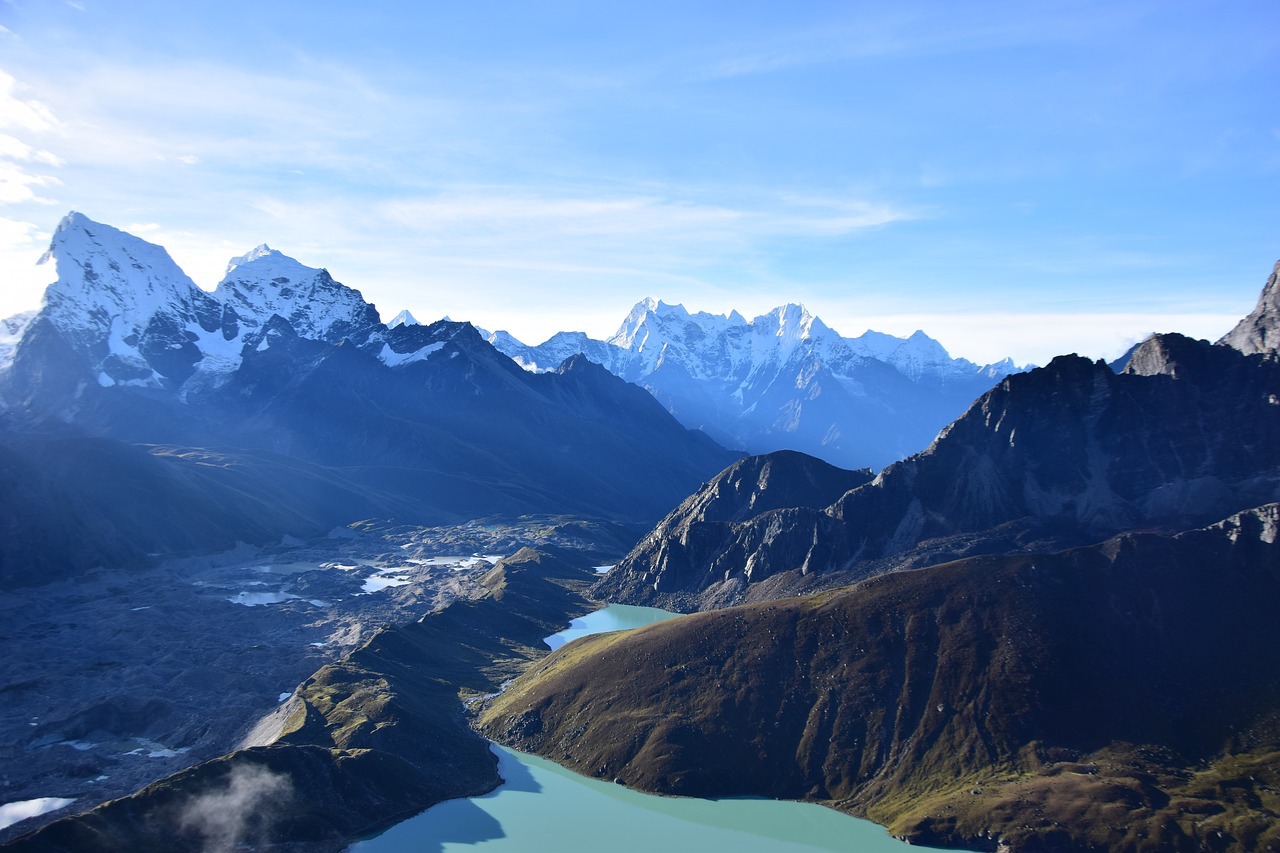
- Altitude- 17,575 feet
- Duration- 14 days
- Best Season- March to June; September to November
- By flight- Take a scenic flight of 35 minutes from Kathmandu to Lukla
19 crystal clear turquoise and green lakes of Goyko form one of the highest freshwater lake systems in the world and stun you with their sheer beauty.
This trek to the Himalaya will take you to the world's greatest icy mass called Ngozumpa Glacier.
Ethereal views of the colossal mountains of Mount Makalu, Mount Lhotse, Mount Cho Yu and Mount Everest in a single range are the USP of this beautiful and amazing Himalayan trek. Journey along the off-the-beaten paths of the Everest to reach the stunning Gokyo Valley. The steep climb to Gokyo Ri to view the majestic Mount Everest is one of the prized highlights of Goyko Lakes Trek.
Explore the iconic town of Namche Bazaar. Trek to the neighbouring Khumjung village to visit the school set up by Sir Edmund Hillary.
Deals And Offer
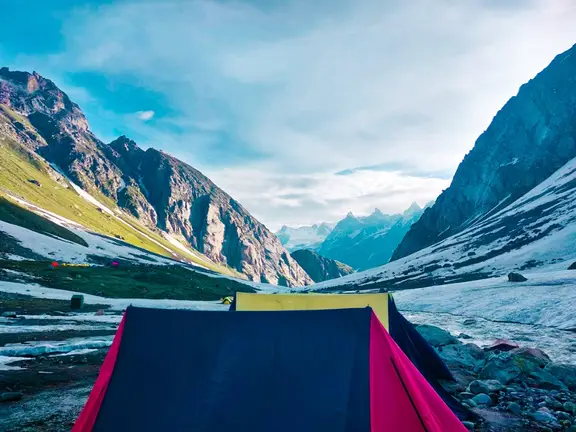
4.87 ( 438 )
Hampta pass trek 2024 - chandratal lake trek | moxtain, free cancellation till 30 days prior trek, rental & gear available on rent, book with 20% initial amount.
See Dates / Book Now
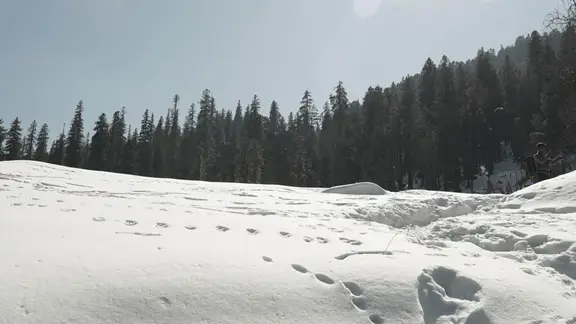
Dayara Bugyal Trek
4.85 ( 398 ), dayara bugyal trek 2024 - 6 days trek | moxtain.
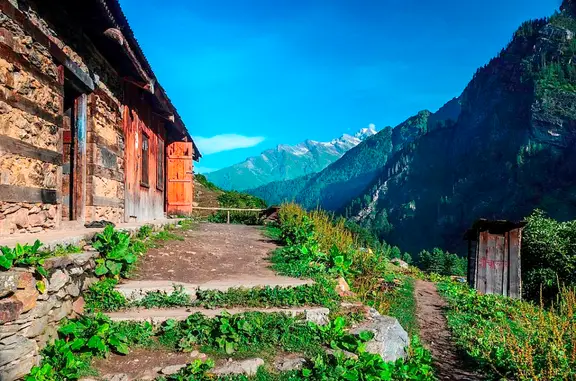
Kasol-Kheerganga-Tosh-Malana-Trek
4.56 ( 24 ), similar blogs.
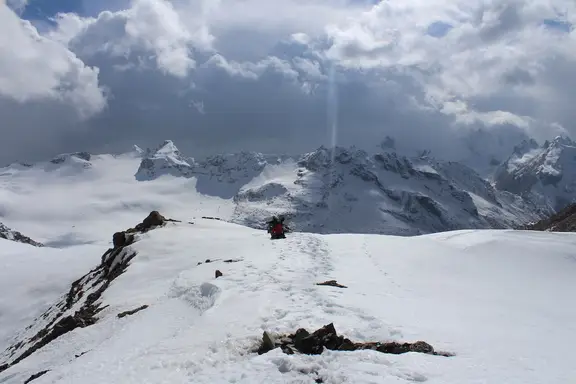
Trekking In India - Best Treks In India
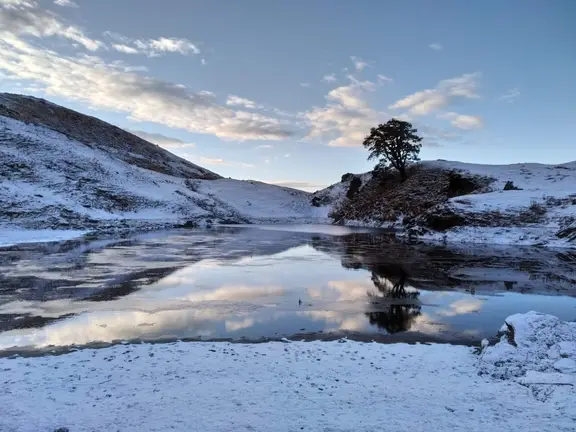
Brahmatal - Best Winter Trek
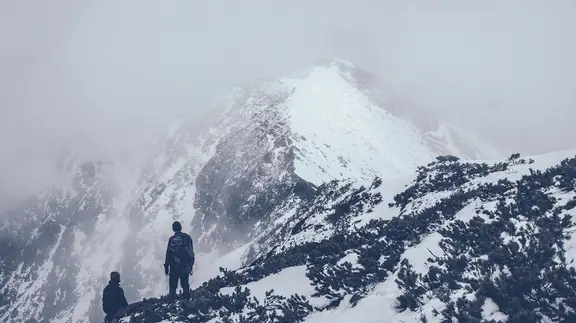
Winter Treks in India-Best Winter Treks in India
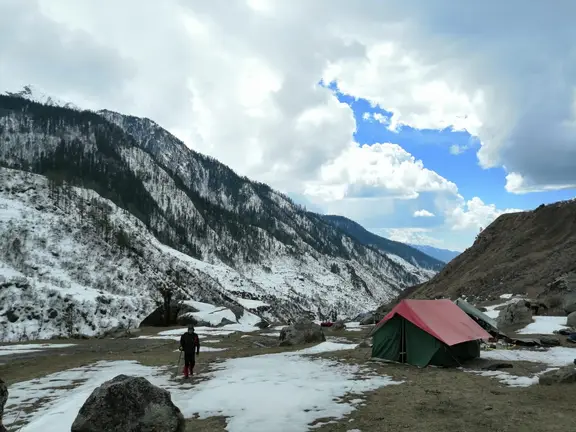
Har ki Dun Vs Kedarkantha
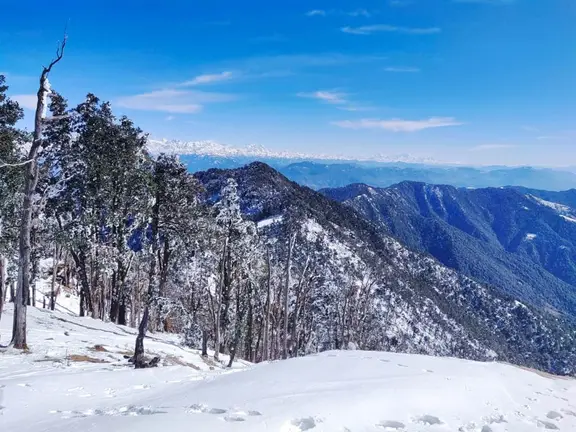
Nag Tibba Trek: Everything you want to know
Similar trips, stok kangri, goechala trek, nag tibba trek, deoriatal chandrashila, sandakphu phalut trek, bara bhangal, mayali pass.
- Information Centre
- Client Login
- Book a Free Consultation

- Trip Calendar
- Why The Mountain Company?
- Our Operations
- Responsible Tourism
- Risk Assessment and BS8848
- Testimonial and Awards
- The Himalaya
+44 (0)1647 433880
What Is The Best Trek In The Himalayas?

Trekking In The Himalayas
At The Mountain Company, we have a passion for exploring off-the-beaten-track treks in the Himalayas. Our favourite trekking holidays in the Himalayas are camping-style trips . Whereas the more popular trails in Nepal use a network of teahouse lodges . As a result, the Everest Base Camp trek and Annapurna Base Camp trek will be very busy with lots of walkers during the peak seasons. These are still good treks to do especially for a first-time visit to the Himalayas. You will find well-maintained trails and a range of accommodation including luxury lodges . This makes walking in the Himalayas accessible for a wider range of people. Read our Blog How Busy Is The Trek To Everest Base Camp?
For experienced hikers, going on a camping trek means you can get away from the busier trails of Everest and Annapurna. When camping, you can access remote areas where you are unlikely to see many (if any) other groups. Many people do not realise that it is still possible to find rarely trekked trails in Nepal! On a camping trip, you will have a more adventurous experience. The trails are rugged and often there are no bridges to cross rivers. You will meet locals from the villages that rarely see foreigners and are curious to meet you. The first groups trekked to Everest Base Camp in the 1960s and had this kind of experience. These days you need to travel further afield to find real adventure in the highest mountains of the world.
What Factors Make A Great Himalayan Trek?
We have brainstormed what makes an exceptional experience while trekking in the Himalayas. A great route will include the factors as follows:
- Remoteness.
- Diversity of landscape.
- Physical Challenge.
- Flora and fauna.
Best Three Walking Holidays in the Himalaya
Using these factors we scored the Himalayan walking holidays organised by The Mountain Company. We shortlisted the best three trekking itineraries from our portfolio of 38 hikes. We called these the “Big Three” !
Two out of our “Big Three” trekking trails are in Nepal . One is in the Far East of the country starting in the Kanchenjunga region near the border with India. The second is in the mid-West of the country in the Upper Dolpo region. The third trip is in Bhutan and travels to the isolated Lunana valley.
All three of them explore along sections of The Great Himalaya Trail (GHT). Many hikes in Nepal are Circuits whereas GHT traverses the Himalayan range from end to end. You get a real sense of journey as you cross valleys and passes.
Lunana Snowman (Bhutan)

1. Remoteness. Score 8/10.
2. diversity of landscape. score 9/10., 3. physical challenge score 8/10., 4. cultural score 7/10..
You will meet the Layap people in the village of Laya and the Lunaps in the valley of Lunana. They have a unique culture in isolated communities. They also wear traditional hats. The Layaps' hats are conical shaped and made from bamboo. Whereas the Lunaps' hat is made from yak wool and helps keep them warm during the Winter months.
5. Flora and fauna. Score 8/10
The most well-known and sought-after sighting is the snow leopard. In practice, you are unlikely to see but our past groups have spotted snow leopards from a distance. They have also seen evidence of their presence such as pugmarks and scat. There are plentiful herds of blue sheep grazing on the grassy slopes. There are also Himalayan bears.
Upper Dolpo to Jomsom GHT (Nepal)
Our Upper Dolpo to Jomsom GHT trek in Mid West Nepal and starts with a flight to Juphal airstrip. It finishes 25 days later at Jomsom in the Kali Gandaki valley on the Annapurna Circuit trek . For more information read our Blog article Is Upper Dolpo One of the Most Remote Treks in Nepal?

We visit remote communities of Upper Dolpo that currently have no road access. Roads have recently reached Lower Dolpo and over the next 5 to 10 years will be built to Upper Dolpo.
2. Diversity of landscape. Score 7/10.
3. physical challenge score 7/10..
Our Upper Dolpo trek crosses many high passes out to Lower Mustang in Kali Gandaki valley. The crux of the route is crossing Kang La pass at 5,380m over to Shey monastery. We have given this trek a difficulty grade of Strenuous .
4. Cultural. Score 9/10.
The Upper Dolpo region is one of the last enclaves of pure Tibetan culture. There are Bönpo (shamanistic pre-Buddhist) monasteries including the important Shey Gompa. Pilgrims come to walk a religious circuit known as a kora around the nearby Crystal Mountain.
5. Flora and fauna. Score 8/10.
Like on The Snowman there are snow leopards in Upper Dolpo. Some of our previous groups have seen these beautiful animals on this Himalayan trek.
Kanchenjunga BC to Makalu BC GHT (Nepal)

1. Remoteness. Score 9/10.
Very few locals or trekking groups ever walk on some of these sections of The Great Himalaya Trail. Having knowledgeable and experienced guides is very important. This is probably the most remote section of the GHT in Nepal.
2. Diversity of landscape. Score 8/10.
This route has varied scenery and spectacular views. The itinerary starts at a lower altitude than Upper Dolpo. We see a transition from the lush sub-tropical forest up to the alpine zone. Up high there are mountain lakes like at Kalo Pokhari. Incredible views of two 8,000m mountains, Mount Kanchenjunga and Mount Makalu.
3. Physical Challenge. Score 9/10.
By crossing the Lumba Sumba pass at 5,160m you enter the Arun Valley. The next section to Makalu Base Camp involves hiking through very rugged terrain. We have given this trek a difficulty grade of Strenuous .
4. Cultural. Score 7/10.
Visit remote communities at Olangchungola, Thudam and Hongon villages. The people are mainly Tibetans as there are trading passes over to Tibet from these places.
5. Flora and fauna. Score 9/10.
And the winner is.....
We have added up the total scores for our shortlisted “Big Three” Himalayan treks. The results are as follows:
* The Winner* Kanchenjunga BC to Makalu BC GHT (Nepal). Total score: 42/50 * Second Place* Lunana Snowman (Bhutan) . Total score: 40/50 * Third Place* Upper Dolpo to Jomsom GHT (Nepal). Total score: 39/50
As you can see our winner of the best trek in the Himalayas (by only one point!) is the epic trek from Kanchenjunga BC to Makalu BC GHT in Nepal. Of course, in practice, all three are amazing trips and there is not much separating them. Any serious trekker would dream of doing one or more of these Himalayan walking holidays. We suggest you consider walking any (or all) of the “Big Three”! Exploring remote trails when trekking in the Himalayas is a truly wonderful experience. Please let us know whether you agree with the selection of our favourite treks in the Himalayas? We would love to hear more about your experience of hiking in the Himalayas.
Cookie Policy
We use cookies to ensure that we give you the best experience on our website. If you continue to use this site we will assume that you are happy with this.
Treks of Himalaya
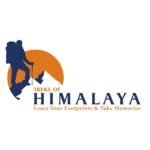
Himalaya's largest treaking organization
About treks of himalaya.
With over two decades of experience and expertise in trek leading, mountaineering expeditions, high pass crossings, learning-based camp programs, cycling tours, snow skiing, and more, we are the Top-rated trekking company in the Himalayas. Our qualified and experienced team of local guides, trek, expedition leaders, and cooks is dedicated to providing exceptional service during your trekking and peak climbing expeditions in Himachal Pradesh.
Accommodation
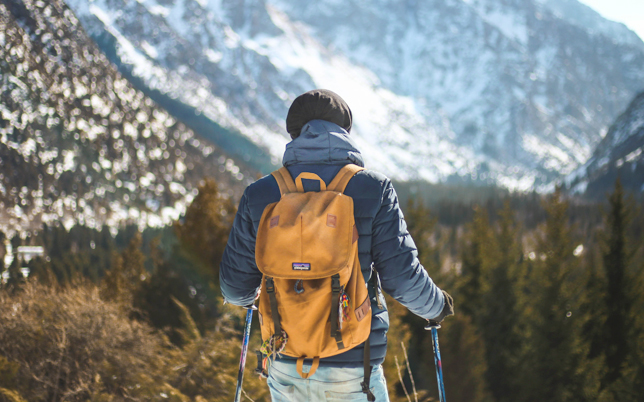
India's Leading Trekking Platform
We are local leaders for himalayan trips throughout the entire himachal pradesh that we 100% trust. our specialty is we plan the program according to what our valuable clients as par like to do., our gallery.
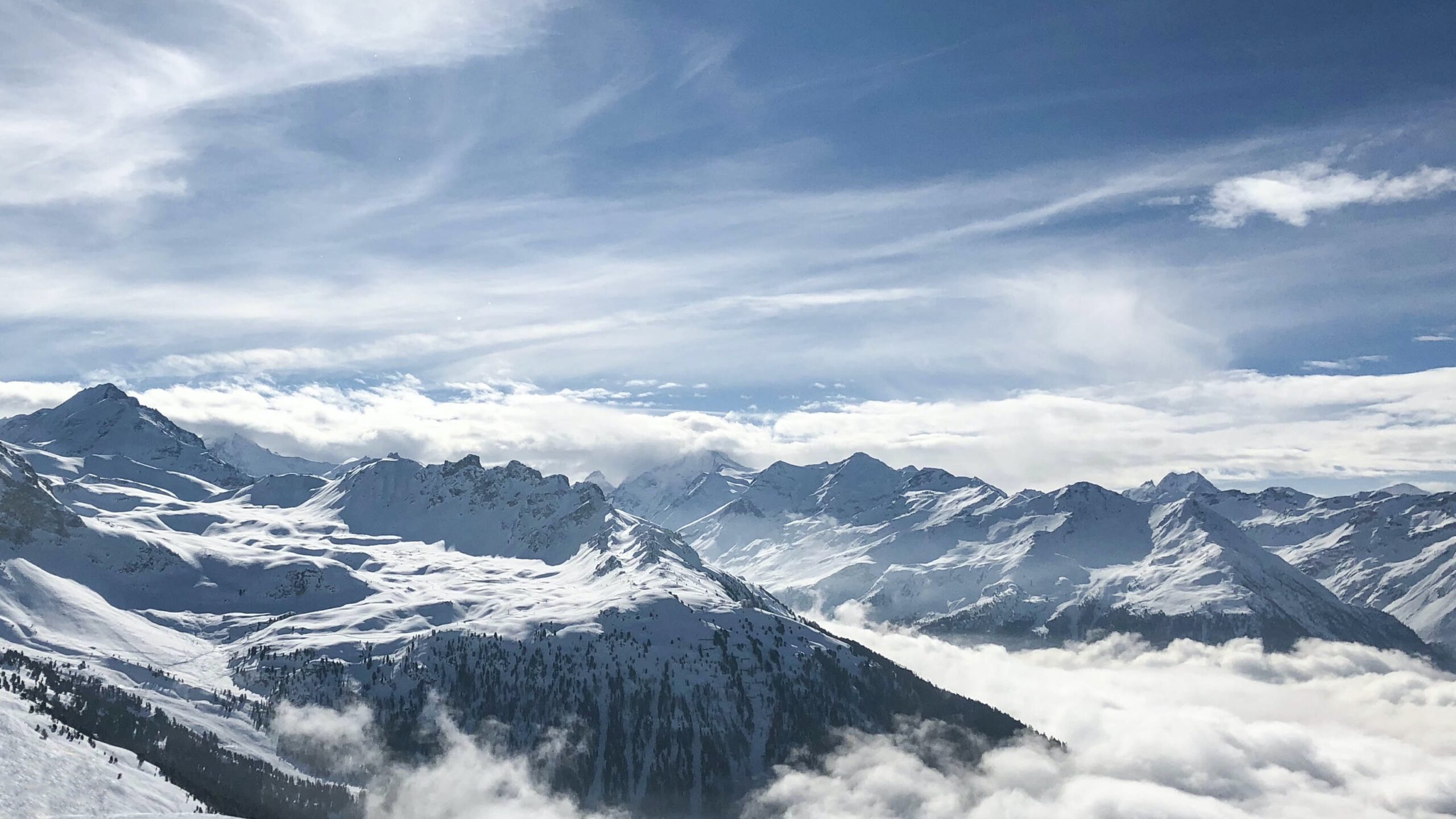
Outdoor Adventures for Young People
No matter clients are beginners or professional mountaineers we are here for their physical and mental safety, that's our first preference., check our upcoming treks, recommended camps by our instructors.
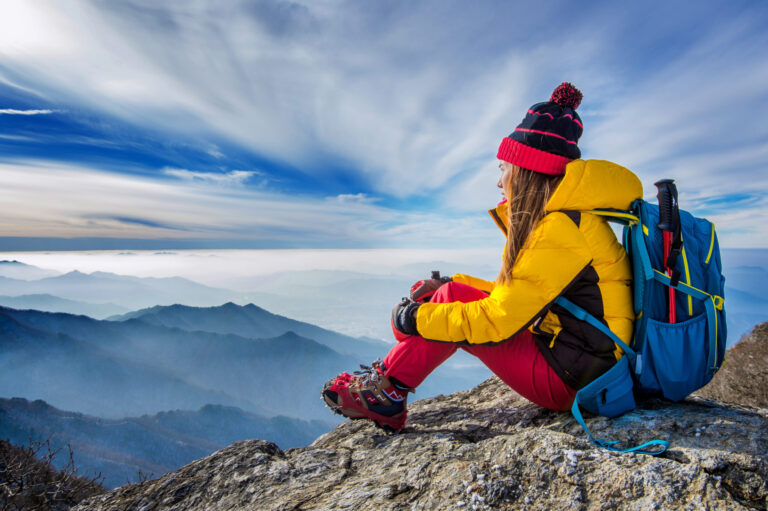
Our Treaks Gallery
Why trekkers love treks of himalaya, at treks of himalaya, our primary goal is to provide authentic and adventurous experiences of nature to our clients. our expert team members are always prepared to deliver just that..
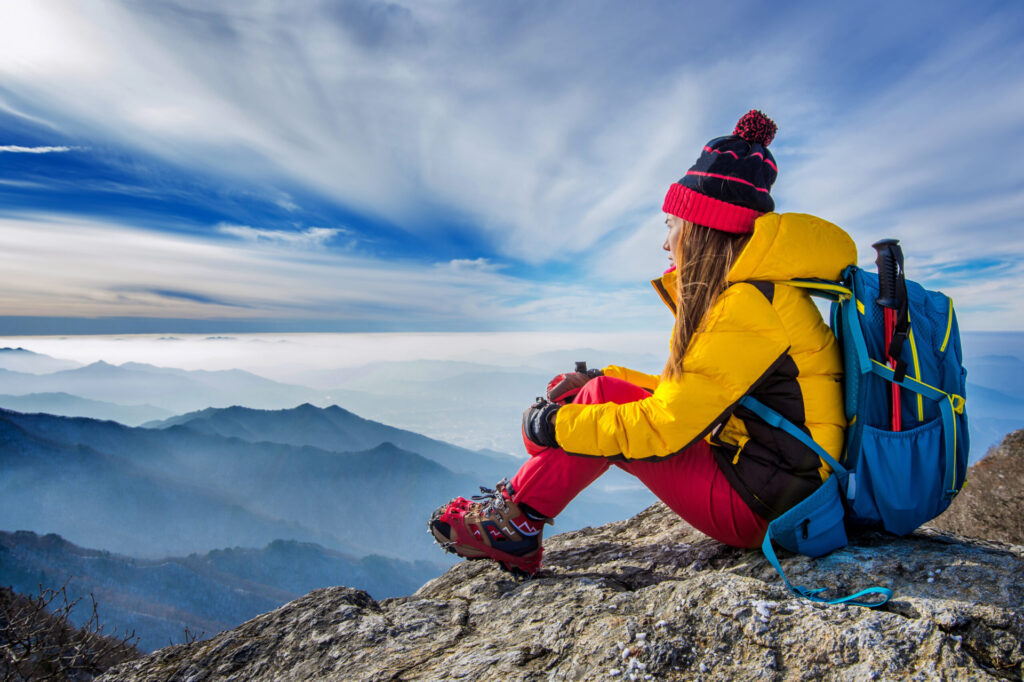
Too Young for Adventure Treks?
Dream. explore. discover, expert local guides.
Our team consists of expert local guides who hold MOI and wilderness qualifications and have a minimum of 5 years of experience in outdoor activities. Rest assured, our guides are well-prepared to offer you the best possible experience during your trek or expedition.
Excellent Food
We take pride in offering delicious and nutritious meals throughout your journey, ensuring that you are well-fed and energized for the trekking ahead.
Happiness Guaranteed
We guarantee your happiness because our programs are customized to meet the preferences and needs of each individual client. Rest assured, we prioritize your satisfaction and enjoyment throughout your entire trekking or expedition experience.
Personalized Itineraries
We work with our clients to create customized itineraries that cater to their specific interests, abilities, and schedules, ensuring that each trek or expedition is tailored to meet their unique needs.
Tales from the Mountains
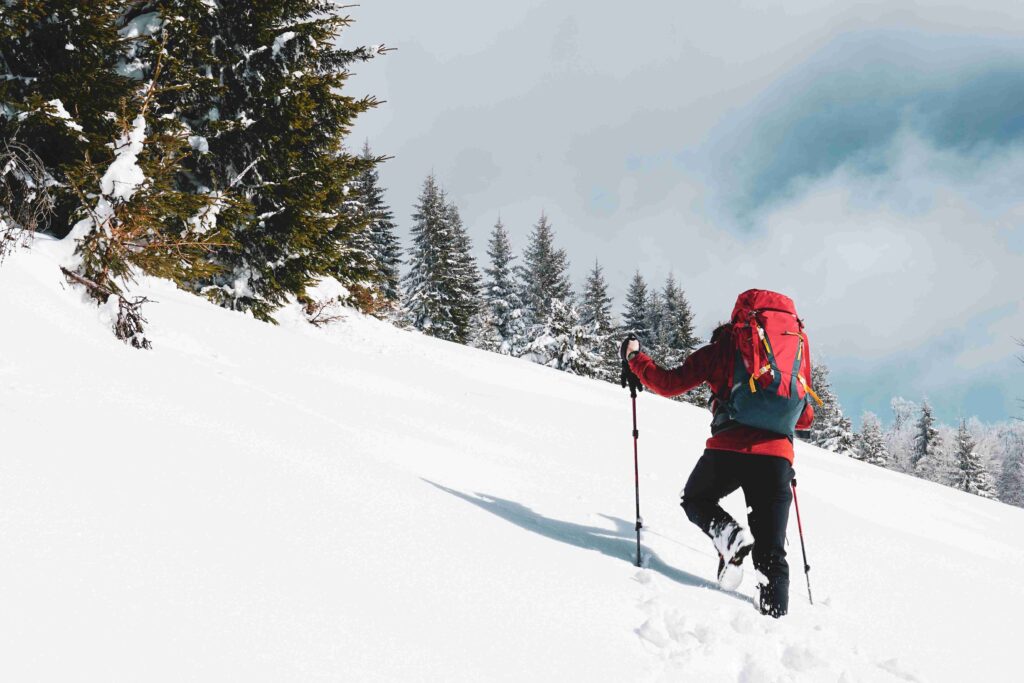
Rani Sui Lake
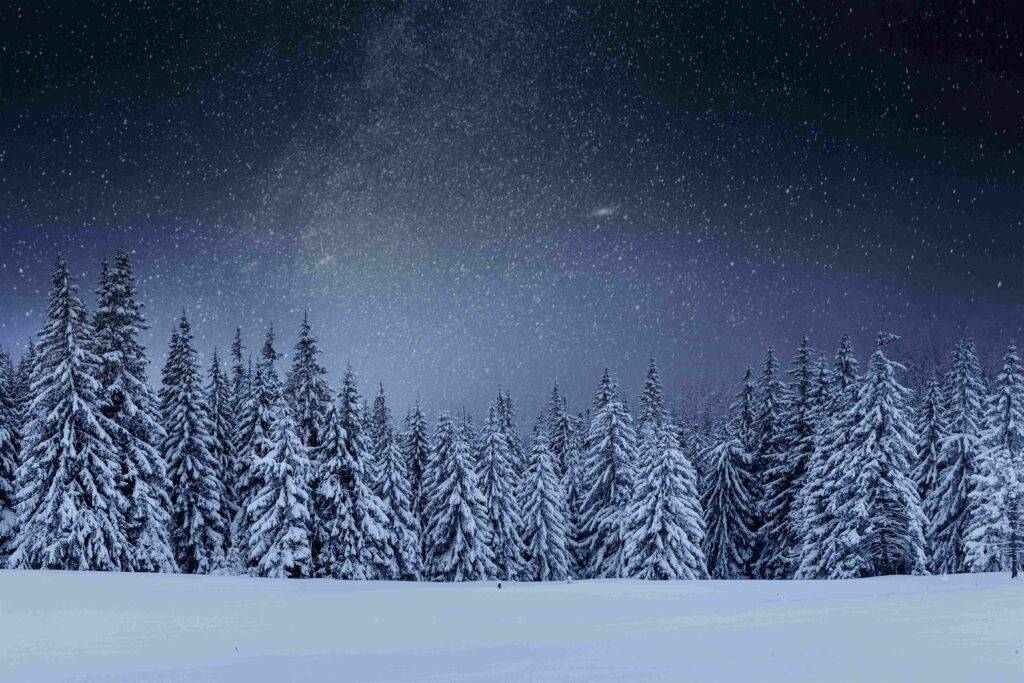
Bhrigu Lake
A Complete Guide to Trekking Tours in India
India Tours
International tours, destination wedding, medical tourism, plan your trip.
- Trekking in India
- Best Treks Himalayas
Trekking in Himalayas
Trekking enthusiasts looking for the ultimate adventure trekking tours in the Himalayas can check out our best Himalayan trekking tour packages, which are available at reasonable prices & offer you a wholesome adventure experience. The Indian Himalayan states like Uttarakhand, Himachal, Ladakh and Sikkim, offer plenty of exciting trekking trails for all kinds of trekkers. Be It Summer, Monsoon or Winter, the mighty Himalayas always offer plenty of challenges & adrenaline rush to the mountain lovers. During trekking in the Himalayas, you also get an opportunity to explore the rich landscape dotted with several lakes, valleys, meadows, snow-capped mountains, green dense forests & witnessing the rare wildlife of the Himalayas. Along with the adventure travel experience, the Himalayas journey also introduce you to the amazing lifestyle, culture, traditions & customs of Himalayan people.
Best Selling Himalayas Trekking Tour Packages
8 Nights - 9 Days
Kuari Pass Trek
4 Nights - 5 Days
Chopta Chandrashila Trek
Hampta pass trek.
08 Nights - 09 Days
Adi Kailash Trek
12 Nights - 13 Days
Frozen River Trek
9 Nights - 10 Days
Stok Kangri Trek
5 Nights - 6 Days
Brahmatal Trek
15 Nights - 16 Days
Green Lake Trek
6 Nights - 7 Days
Dzongri Trek
11 Nights - 12 Days
Bara Bhangal Trek
Kareri lake trek, gangotri tapovan trek, discover the best trekking tours in the himalayas.
- Uttarakhand
Fixed Departure Tours
Uttarakhand himalaya trekking packages, nag tibba trek, darma valley trek, sunderdhunga bc trek, panchachuli bc trek.
10 Nights - 11 Days
Kafni Glacier Trek
Ladakh himalaya trekking packages.
14 Nights - 15 Days
Junglam Trek
Sham valley trek, markha valley trek, snow leopard trek.
24 Nights - 25 Days
Darcha Lamayuru Trek
Ladakh monastery trek, sikkim himalaya trekking packages, singba rhododendron sanctuary trek, singalila - sandakphu trek.
16 Nights - 17 Days
Singalila Ridge & Goecha La Trek
Sikkim and kanchenjunga trek, kanchenjunga base camp trek, yuksom to dzongri & goecha la trek, himachal himalaya trekking packages, beas kund trek, manimahesh kailash trek, kinner kailash parikrama trek.
7 Nights - 8 Days
Bhrigu Lake Trek
Sach pass trek, kashmir himalaya trekking packages, kashmir great lakes trek, chattargul mahlish gangabal trek, bandiopra gangabal naranag trek, tulail gangabal naranag trek, tral narastan marsar trek, sonmarg vishansar naranag trek, pahalgam tarsar marsar trek, sonamarg vishansar bandipora trek, other popular adventure in himalayas, peak climbing, mountain biking, jeep safari, motor biking, river rafting, skiing tour, camel safari, frequently asked questions, q. what is the best time to go trekking in indian himalayas.
In India, each season has its own specialty when it comes to trekking in the Indian Himalayas. There are treks for every season: summer, winter and monsoon. Summer & monsoon is a good time for trekking in Kashmir, while summer & winter is ideal for trekking in Sikkim. In Himachal and Uttarakhand, you can enjoy trekking throughout the year.
Q. Will you provide an expert guide and trekking equipment during the trekking tour?
Yes, we will provide an expert guide and trekking equipment during the trekking tour, along with all other requirements.
Q. Is there snowfall in Indian Himalayas in April?
.Snowfall stops in most places in Indian Himalayas by mid-March, so you won’t find any snowfall in the lower altitude treks. However, you will come across ice and snow on trekking trails of high altitude treks.
Q. Where will I stay during the course of my treks?
You will be staying in camps/tents during the course of your trekking expedition.
Q. What are the famous trekking mountain peaks in the Indian Himalayas?
Some of the famous trekking mountain peaks in the Indian Himalayas are Kang Yangtse II and Stok Kangri in Ladakh, Pangarchulla Peak in Uttarakhand and Friendship Peak in Himachal Pradesh.
Q. Can you tell me some of the amazing treks for winters in the Indian Himalayas?
Some of the amazing treks for winters in the Indian Himalayas are Chadar Trek (Ladakh), Brahmatal Trek (Uttarakhand), Har ki Dun (Uttarakhand), Kuari Pass (Uttarakhand), Prashar Lake Trek (Himachal Pradesh), Kareri Lake Trek (Himachal Pradesh) and Dodital Lake Trek (Uttarakhand).
Q. Which treks in the Indian Himalayas are best suited for the summer season?
Some of the treks in the Indian Himalayas best suited for the summer season are Auden’s Col, Kedartal & Roopkund Treks in Uttarakhand, Nubra Valley, Stok Kangri & Darcha Padum Treks in Ladakh, Buran Ghati, Indrahar Pass, Pin Parvati Pass and Prashar Lake Treks in Himachal Pradesh, and Rhododendron, Sandakphu and Kanchenjunga Base Camp Treks in Sikkim.
Q. Tell me some of the most amazing treks in the Indian Himalayas during the monsoon season?
Some of the most amazing treks in the Indian Himalayas during the monsoon season are Valley of Flowers, Hemkund Sahib and Chopta Chandrashila Treks in Uttarakhand, Hampta Pass, Beas Kund and Pin Parvati Treks in Himachal, and Darcha Padum, Sham Valley and Stok Kangri Treks are the most famous treks in Ladakh.
Q. What are some of the picturesque nature treks in the Indian Himalayas?
Valley of Flowers Trek, Sandakphu Phalut Trek, Brahmatal Trek, Bhrigu Lake Trek, Nubra Valley Trek and Hampta Pass Trek are some of the most picturesque nature treks in the Indian Himalayas.
Q. Are there any offbeat treks for adventure lovers in the Indian Himalayas?
Some of the offbeat treks for adventure lovers in the Indian Himalayas are Brahmatal Trek (Uttarakhand), Indrahar Pass Trek (Himachal Pradesh), Bagini Glacier Trek (Uttarakhand), Kalicho Pass Trek (Jammu and Kashmir), Tso Lhamo Lake Trek (Sikkim) and Gwaru Pass Trek (Himachal Pradesh).
Q. Which treks in the Indian Himalayas offer opportunities for snow leopard sightings?
Some of the treks in the Indian Himalayas for spotting the snow leopards are the Snow Leopard Trek and Nanda Devi Trek (Uttarakhand).
Q. When does Valley of Flowers trek open for tourists?
The Valley of Flowers Trek is open for tourists from June to October every year.

Q. Do you provide all the necessary equipment for trekking in the Indian Himalayas?
Yes, we provide all the necessary equipment for trekking in the Indian Himalayas.
Why TMI for Trekking Holidays
Experienced.
An experienced trekking tour operator, with a team of an experienced adventure enthusiast ensure to give our clients well-designed trekking tour packages.
We are certified by major tour and travel associations in India and world like IATA, IATO, TAAI, IMF & MOT (Ministry of Tourism, Govt of India).
Happy Customers
TMI has received numerous accolades from its happy customers for its excellent services and best adventure holidays.
Local Offices
We have local office in Ladakh, Uttarakhand, Sikkim, Jammu & Kashmir, & Himachal Pradesh for our customers to find assistance anytime and anywhere.
About Trekking Tours in the Himalayas
Browse our top Indian Himalayan trekking tour packages which are for both amateur as well as advanced trekkers, as there are easy, moderate & difficult treks to choose from. We make the best arrangements for a trekking expedition in the Himalayas including expert guidance, which ensure that you have a hassle free experience.
Uttarakhand, Sikkim, Himachal and Ladakh are some of the Indian Himalayan states that attract trekking enthusiasts in large numbers every year, and that’s hardly surprising! Trekking in the Himalayan states, which are blessed with a magnificent beauty evenly spread across their spectacular landscape, offers a delightful mixture of adventure, sightseeing & views that remain etched in your memory for a long time.
Trekking in the Ladakh Himalayas, or the famous Chadar Trek, which involves walking on the frozen River Zanskar, offers you amazing sightseeing opportunities & adventure, where you can visit monasteries with treks like Lamayuru to Alchi & Padum to Darcha, Nubra Valley Trek where you can see the two humped Bactrian camels.
Uttarakhand & Himachal are two of the best Himalayan trekking destinations in India, thanks to their numerous trekking trails. Uttarakhand’s alpine meadows, views of the Nanda Devi (the second highest mountain in India), religious sites & mountain passes like Kalindi Khal, all these can be explored with famous treks in Uttarakhand like Binsar Trek, Nag Tibba Trek, Valley of Flowers trek, Rupin Pass Trek & Auden’s Col trek.
Trekking in Himachal Himalaya is a different experience altogether, with its lovely trekking trails, dotted with rhododendron & apple orchards, sprawling meadows, ancient villages & lakes, which can be explored with treks like Hampta Pass Trek, Pin Parvati Pass Trek & Friendship Peak trek.
Kashmir, one of the most beautiful places in India, is one of the best places for adventure lovers to enjoy trekking. It offers trekking options for everybody. One can opt for short treks like Aru Valley to Pahalgam, Sonmarg to Thajiwas Glacier, or challenging treks like the Great Lakes Trek, Tarsar & Marsar Lakes trek & Gangabal Lake Trek. Advanced trekkers can also take the Kolahoi Glacier Trek, one of the highest treks in Kashmir.
Sikkim is also a trekker’s paradise with its lush landscape, high altitude mountain passes, sacred lakes & views of Mt. Kangchenjunga. One can opt for easy treks like Darjeeling Trek & Yuksom-Dzongri-Goecha La Trek, challenging ones like Singalila Ridge, Goecha La & Green Lake Treks & those that give the ultimate adrenaline rush like Sikkim Kanchenjunga & Kanchenjunga Base Camp Trek, which rewards you with views of several mountain peaks like Frey, Koktang & Kabu.
More about trekking in India
Our latest informative travel blogs, explore the hidden natural treasure of himalayas with these unexplored treks in uttarakhand, india trekking guide: best informative blogs on india himalayas trekking tour, where to visit in uttarakhand and himachal for adventure, chilling, and finding peace for a post-lockdown holiday, india trekking information at a glance, trekking destinations, special interests treks.
- Wildlife Treks
- Spiritual Treks
- Weekend Treks
- Cultural Treks
- Family Treks
Best Time for Trekking in India
- Best Time to Do Ladakh Trek
- Best Time to Do Uttarakhand Trek
- Best Time to Do Sikkim Trek
- Best Time to Do Himachal Trek
- Best Time to Do Kashmir Trek
- Best Time to Do Garhwal Trek
- Fixed Departure for Ladakh
- Fixed Departure for Uttarakhand
- Fixed Departure for Sikkim
- Fixed Departure for Himachal
- Fixed Departure for Kashmir
Seasonal Treks
- Spring Season Treks
- Summer Season Treks
- Monsoon Season Treks
- Autumn Season Treks
- Winter Season Treks
Essential Links
- Things to Carry
- Terms & Condition
- Trekking Equipment
- Trekking Permit
How It Works
- Tell us details of your holiday plan.
- After you submit the form, one of our travel experts will get back to you with customised holiday package based on your requirement, within 24 hours.
- Grab the deal and start packing your bags for an indelible holiday with Tour My India.
Call Us for details
+91-9212553106
Request a quote.
.png?w=auto&h=400)
Best Short treks in Himalayas
About short treks in himalayas.
Himachal Pradesh is the land of snow-capped mountains, long trails, and ice sheets; it is the dream destination of every hiker. Whether you’re an expert trekker or taking your first step into the world of trekking, short treks in Himachal are the best escape. Himalayas ranges have something to offer everyone, which will surprise you with their scenic beauty. Searching for the best Short treks in North East, look no back and head to the Himalayas. It houses the world’s most stunning peaks and places to experience the adventure. Starting from a 1 day trek to a 2-3 days trek, there is something for everyone in this hiking destination of India.
Short treks in the Himalayas are comparatively easier, less risky, and more fun! These are located at an elevation of 7000 to 14000 feet from the sea level. Some favourite short treks in Himalayas are Kheerganga Trek nestled at 13,000 feet or Tungnath Trek situated at an elevation of 12,000 feet and others. Surrounded by alpine forests, wild orchards, and pristine meadows, the beauty of these treks will soothe your senses! If you have a long weekend coming your way or you’re planning a two-day trip with your friends, go on short treks in Himachal Pradesh.
Popular Short Treks to do in Himalayas
The Indian Himalayas are green and drenched , making it a magnificent and adventurous to trek. You can thus satiate your wanderlust soul by going on a number of excursions in the Himalayas. Among the best treks to go on short treks in Himalayas are the Kheerganga Trek, Triund Trek, David Scott Trail, Hatu Peak Trek, Tosh Trek, Bijli Mahadev Trek to mention a few. These treks appeal to the adventurous needs of all types of travelers as the Himalayas' temperatures are at their ideal level for trekking at this time of year.
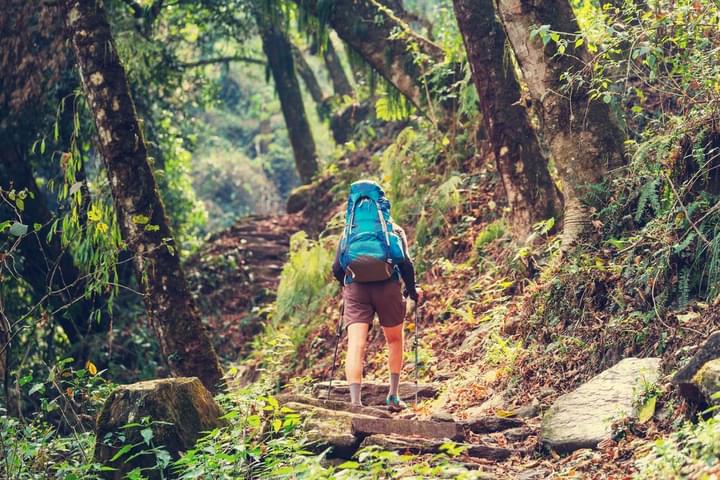
Starting the list with the most famous short trek in the Himalayas, Kheerganga Trek. Nestled at the height of 13,000 feet from sea level, it is a moderate trek which take 5 to 6 hours where visitors get a chance to enjoy both the destination and the journey. Trek through oak forests, majestic waterfalls and pine forests while crossing a tiny village called Nakthan. At the Kheerganga trek summit, there is a small hot water pool called the Parvati Kund.
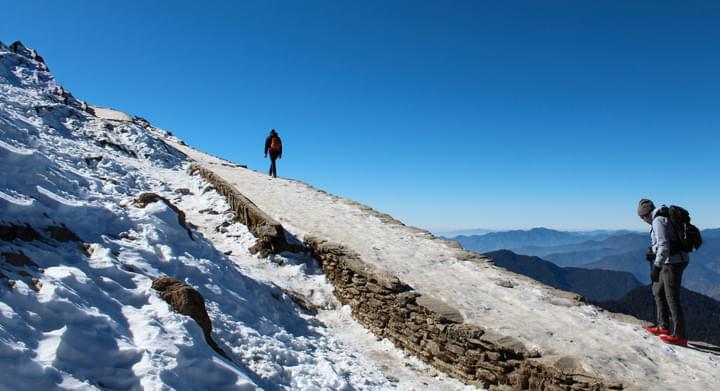
An explored trek located amidst the himalayas, Tungnath Trek is one of the most thrilling short treks in Himalayas, located at the height of 12,000 feet. It is an easy to moderate level trek ideal for amateurs as well. You hike through the world’s highest Shiva temple to feel the utmost serenity. Surrounded by greenery and forests, catch a glimpse of famous peaks like Kedar Peak, Nanda Devi, Trishul Chaukhamba Peaks and Bandarpunch. You will have nearly 5 hours to complete this trek.
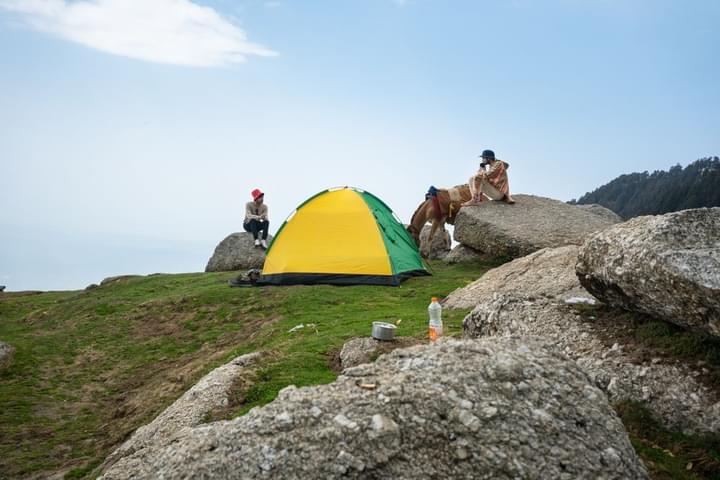
Starting from Mcleodganj, Triund Trek is a Short treks in the northeast with a maximum altitude of 9,350 feet from sea level. With mesmerising views of the Dhauladhar and Kangra Valley, trekking here is not difficult for a physically fit person. You can also enjoy a bonfire and overnight camping at Triund under the starry sky amid misty peaks in Himachal Pradesh. The summit of the Triund Trek is simply breathtaking! You will need 5-6 hours to reach the trek’s summit.
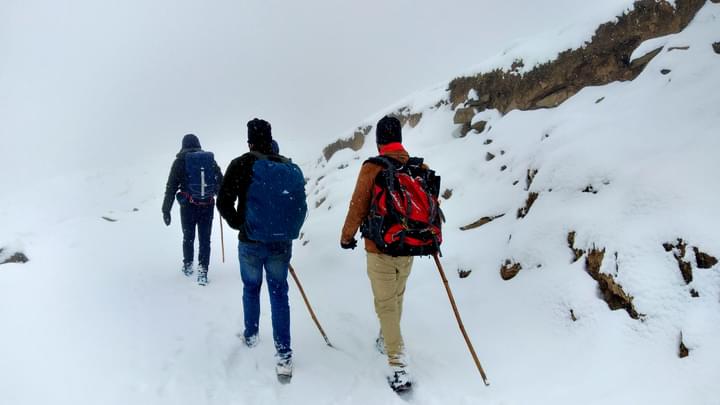
Yet another amazing short trek located amidst the himalayas is the famous Prashar Lake Trek. Located at an elevation of 8,960 feet, it is regarded as one of the easiest short treks which lasts for 4 hours. Located in the famous Kully Valley, you can take either of the two routes, including Jwalapur Village or Baggi Village, to reach Prashar lake. On your way, you will come across a mesmerising local temple of Sage Prashar standing beside a mesmerising blue lake.
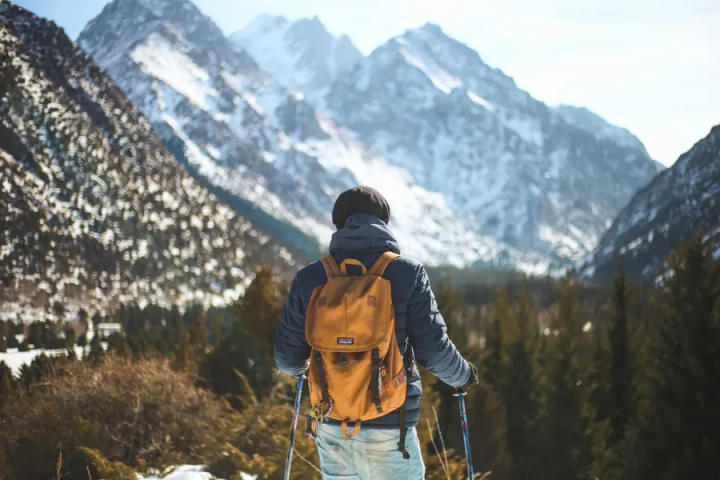
A spectacular short treks in northeast, Beas Kund Trek is preached at a high altitude of 3,810 metres from the sea level. According to experienced trekkers, it is one of the easiest treks available in the Himalayan region, which promises astonishing views of misty hills, beach rivers, cascading waterfalls, and lush forests. It is an easy to moderate level trek which can be completed within 4-6 hours only If you want to spend some time in the lap of nature, this is the place to be!
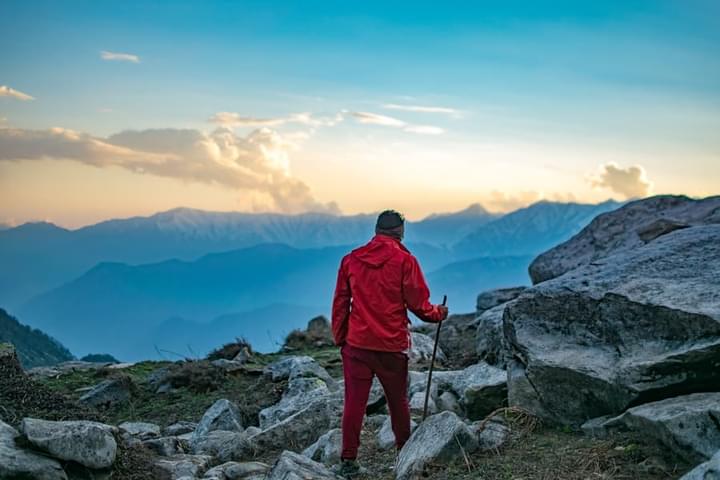
Set at an altitude of 11972 feet, Kareri Lake Trek is an easy to moderate level trek which take 6-7 hour short treks in North East starting from Dharamshala, Himachal Pradesh. On your way, catch a glimpse of the famous Shiva temple, which stands at the top of the Karkeri Lake as a protector. The lake is surrounded by lush greenery, majestic mountains and cascading waterfalls.
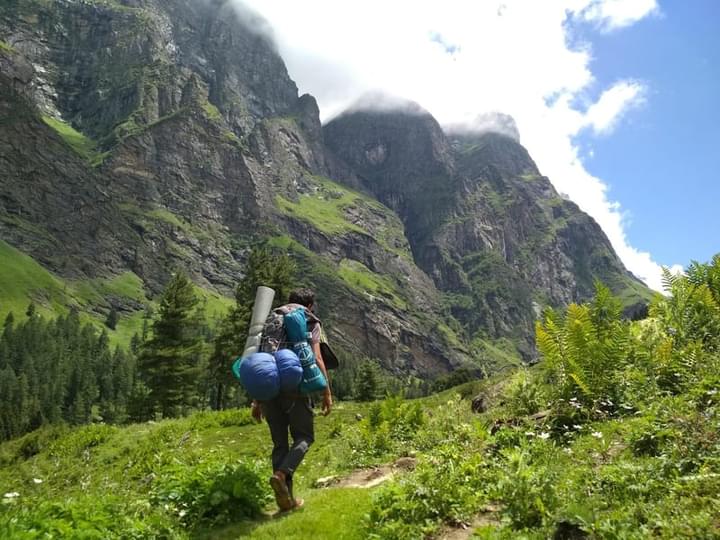
Another popular short trek in Himachal is the Bijli Mahadev Trek lying at the height of 2560 metres. Trek your way to the ancient Bijli Mahadev Temple to seek blessings. On your way, witness the spectacular views of several mountain peaks, long trails and green forests. The summit is the Kinja village in Kullu, where you can get friendly with the locals.
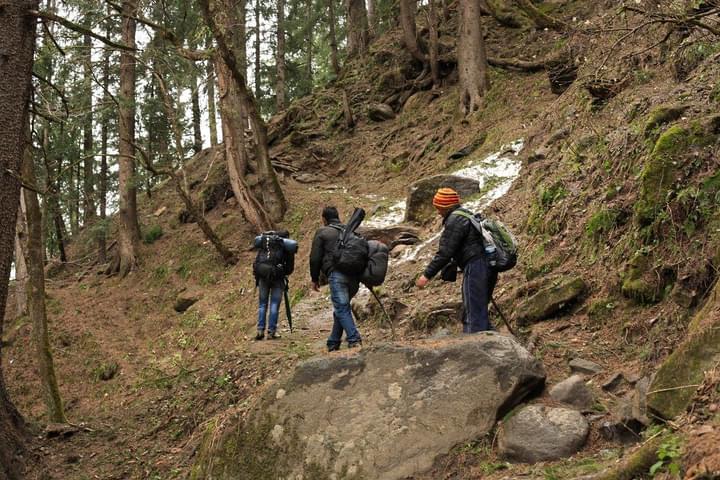
An offbeat trek located at an altitude of 7874 feet from sea level, this trek allows you to explore several stunning trails combined with a colossal springs lake. Get on this fun-filled trekking journey which starts and ends at Barshaini. It is a two-day trek to Tosh Valley, also called the tributary of the river Parvati.
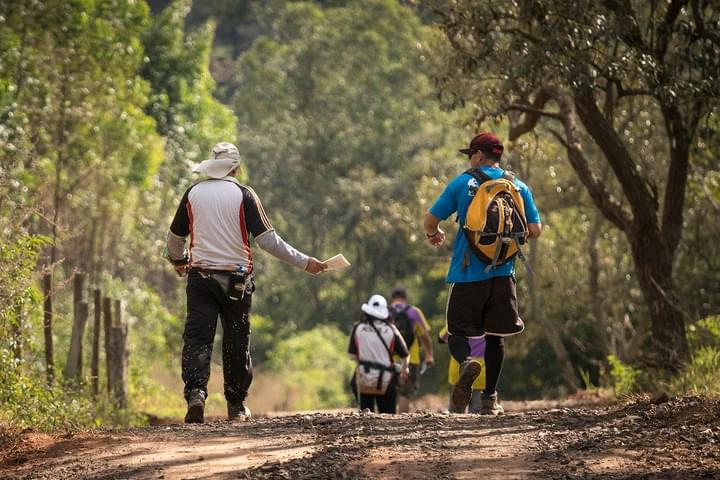
Surrounded by massive landforms and thick vegetation, Serolsar Lake in Himachal Pradesh is a mesmerising beauty standing at the height of 10,171 feet. Nested in the Kullu, a trek to this place is ideal for amateurs as well. The total trek is 11.6 km long.
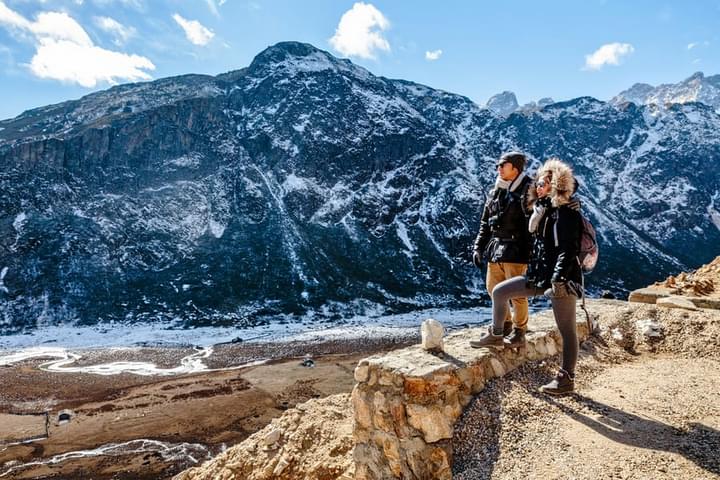
A popular winter trek located close to the coniferous and oak forests, which will keep you spellbound through the day. On your way, catch a glimpse of the famous Nanda Devi, the second-highest peak in India. Additionally, admire the beauty of Alaknanda Valley, snow-covered meadows and rivers for mesmerising views.
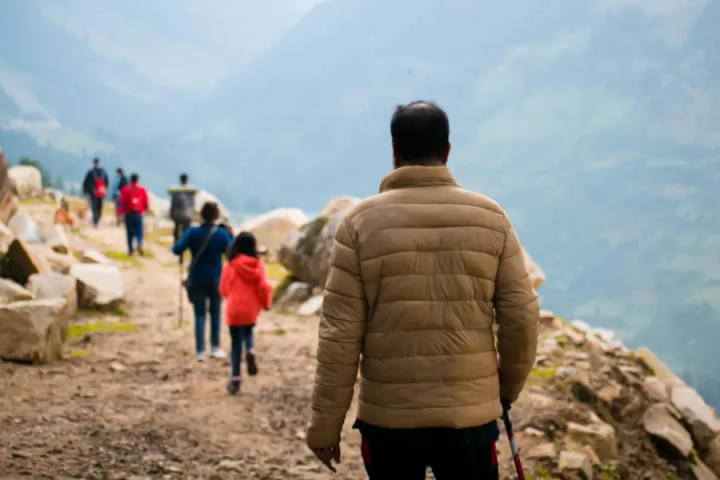
A hidden gem located in the lap of nature, Hatu Peak Trek is a one-day trek from Delhi that is ideal for a small weekend getaway. It is a 7 km long trek which starts at Narkanda. To reach the final summit, you pass through Blue pines, Deodars, Firs and Spruce trees. From the peak, you can enjoy a mesmerising 360-degree view of the Himalayas.
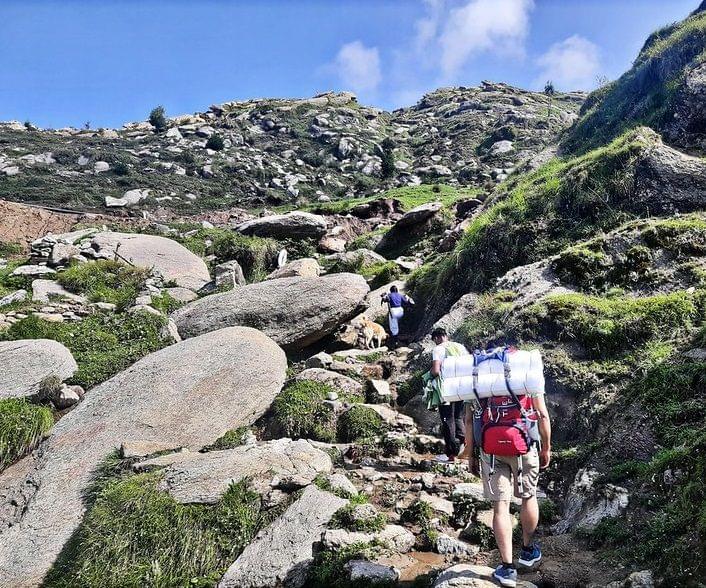
Churdhar peak is often called Churi Chandni, which means bangles of snow mountains. Get a view of two of India’s most sacred shrines, namely the Kedarnath and Badrinath temples. Located at a maximum height of 12,000, on your journey, you will grasp beautiful sights of flora and fauna, lush green mountains, and dense forests, which will melt your heart. The total trek time is 2-3 hours.
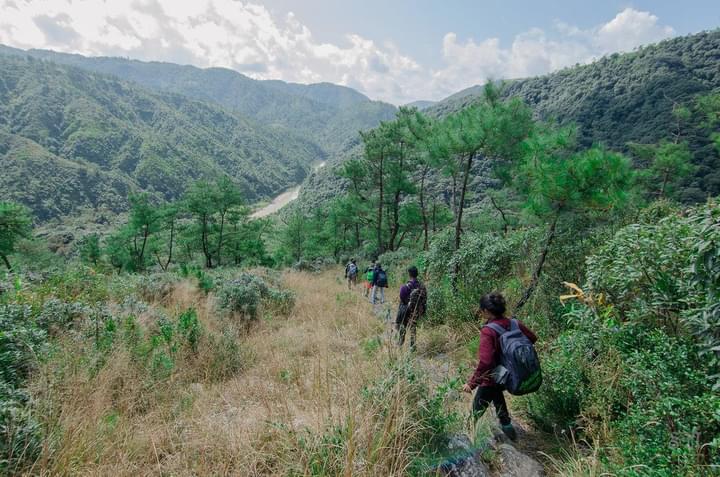
An unusual Himalayan trek located at the height of 4,892 feet from sea level. It is one of the easiest treks in the list set up by amateurs. David Scott Trail is a mesmerising trail located in India’s north-eastern part. To trek here, you can either start your journey at Mawphlang or complete it at Lad-mawphlang. On your way, there are ample majestic mountains covered with dense vegetation, alluring rivers and stunning valleys.
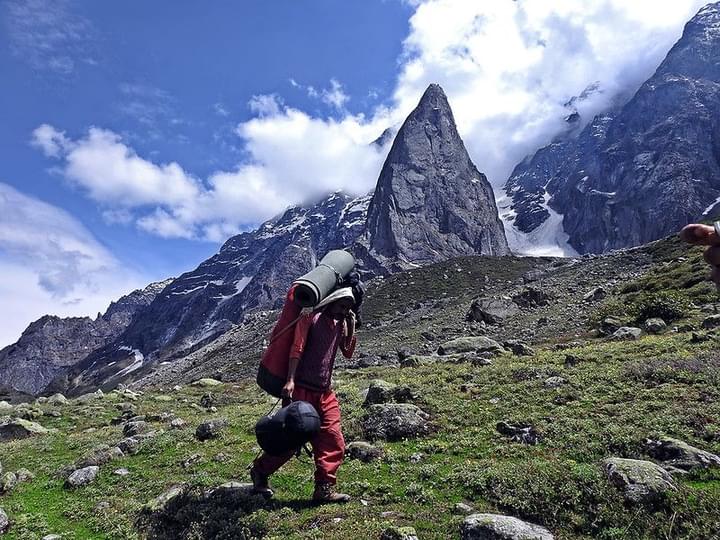
One of the most mesmerising short treks in Himalayas, the Deoria Tal trek is located at a maximum elevation of 12,083 feet which requires 6-8 hours to reach the summit. On the completion of this trek, you will visit the world’s highest Shiva temple, namely the Tungnath temple. On your way to Deoria Tal, delve deep into the holy aura of sacred spots in India, such as Rishikesh, Devprayag, and Rudraprayag.
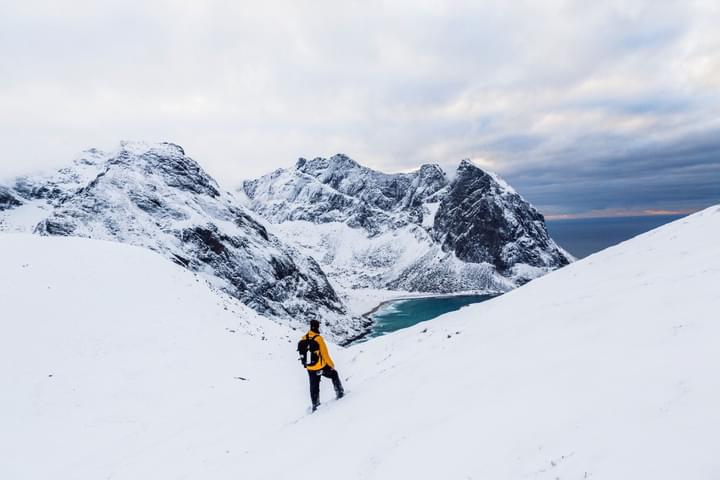
Tucked neatly in the lap of nature, Hatu Peak Trek is a one-day trek from Delhi, which includes a 7 km long journey from Narkanda. To reach the final summit, you pass through Blue pines, Deodars, Firs and Spruce trees. The total trek time is 7-8 hours. From the peak, you can enjoy a mesmerising 360-degree view of the Himalayas.
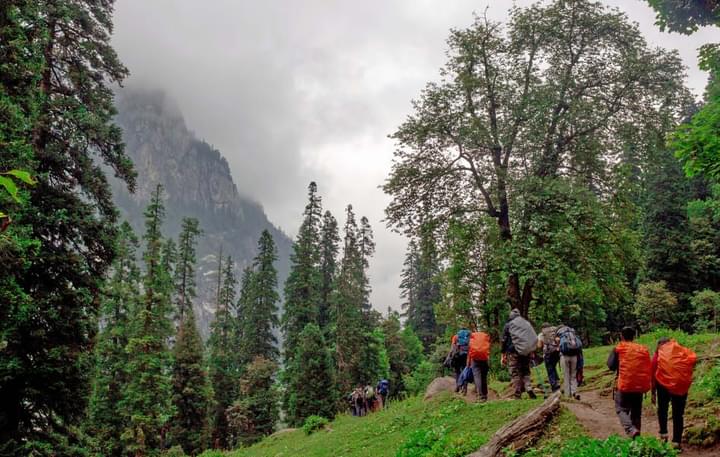
Nestled at an elevation of 9,850 feet from sea level, Deoban Trek is one of the most popular small treks in the Himalayas, where you can grasp magnificent views of 55 big peaks, including Nanda Devi, Swargarohini, Bandarpoonch and others. Here, hikers go through several mountain peaks, long trails and green forests to reach the final summit. The trek begins at a famous tourist destination known as Chakrata.
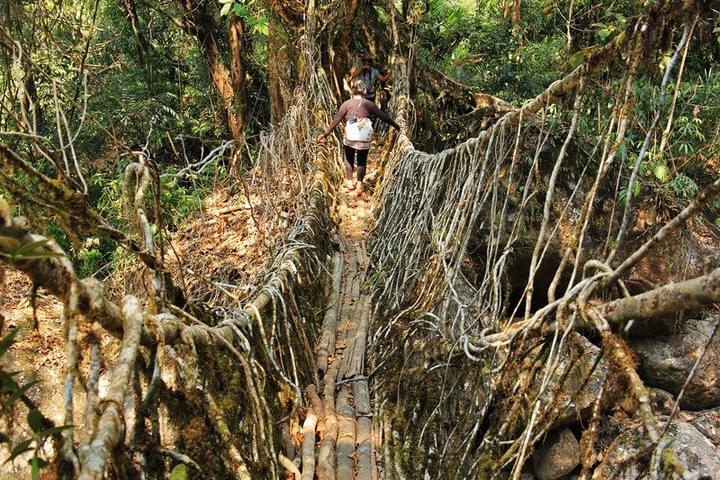
Known for offering mesmerising views of rainbow waterfalls, Living Root Bridge Trek is one of its kind, which best looks during afternoons. To attain maximum thrill, one can indulge in adventurous activities like cliff jumping. There are tons of water bodies around the bridge to relax and unwind. It is an easy trek which lasts for only 1.5 hours from the base camp.
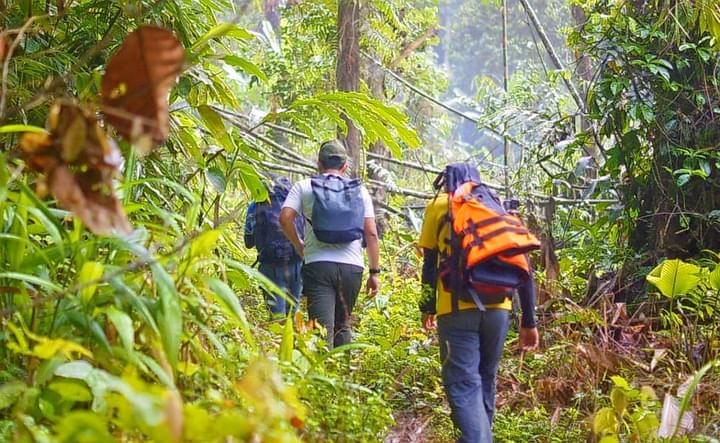
Bhubhu Pass Trek is a 2-3 day trek located at the height of 9,800 feet from sea level; it is one of the most famous short treks in Uttarakhand among thrill-seekers. The trek summit is located amidst multiple forests, rivers, waterfalls and rare flora and fauna, which enhances the overall beauty. On your way, you will come across some popular villages like Bir Billing and Barot.
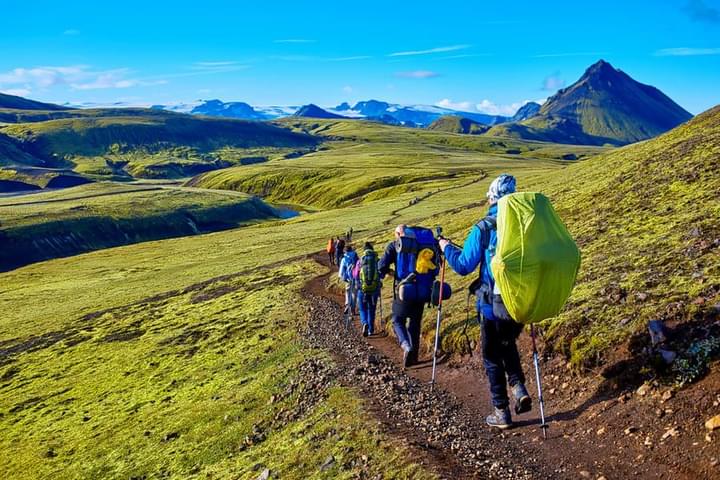
Preached at an elevation of 9,900 feet from sea level, Lamadugh Trek; the trek starts from the Manu temple in Old Manali. The total time to complete the Lamplugh trek is 5 hours. Among many short treks in Himachal, Lamadugh Trek is regarded to be one of the most famous ones. On your way, soothe your eyes with the views of several peaks like Hanuman Tibba, Deo Tibba, and Indrasan Peaks.
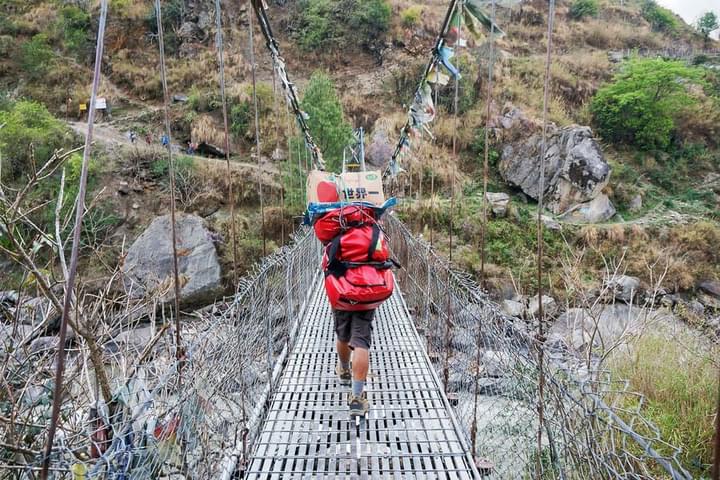
A shining jewel amidst several prominent short treks in Himalayas, Karol Tibba Trek is preached at a height of 6,900 feet from sea level. It is an easy to moderate trek which starts from concrete roads to grasslands, rivers and dense forests of pine and deodar. The trek timing ranges from 4-6 hours only. The best time to explore Shali Tibba is from March to September. Also known as the heavenly abode for nature and photography lovers, this place will heal you.
FAQs About Short treks in Himalayas
Which is the shortest trek in nepal.
Langtang Valley Trek is regarded as the shortest trek in Nepal. It starts from the Kathmandu Valley and takes around 4-5 days to complete.
Which are the short treks near Delhi?
There are several popular Short treks in North East near Delhi like Lansdowne Trek, Chakrata Trek, Benog Tibba Trek, Bijli Mahadev Trek, Prashar Lake Trek, Kuppar Peak Trek, Kareri Lake Trek and Khar Mundyari Trek. It will take 2-3 days to complete this trek.
What to pack for short treks in Himalayas?
Some essentials to pack for short treks in Himalayas are 2-3 pairs of socks, warmers, trekking poles, sunglasses, sunblock, a cap, a hat, a water bottle and so on.
Which are the short treks in Himachal Pradesh?
The most famous short treks in Himachal Pradesh are Kheerganga trek, Prashar Lake trek, Beas Kund trek, Triund trek, Kareri Lake trek, Bhrigu Lake trek, Indrahar Pass trek and Tosh Valley trek.
Which are the short treks in Uttarakhand?
Some famous short treks in Uttarakhand are Gurson Bugyal Trek, Deoria Tal Trek, Rudranath Trek, Chopta Trek, Dayara Bugyal Trek, Nag Tibba Trek and Binsar Trek.
.png?w=auto&h=400)
The content and images used on this site are copyright protected and copyrights vests with the respective owners.
© 2024 www.heyhimalayas.com All rights reserved.
- +91 8828004949
- [email protected]

- Event Category Trekking Camping Road Trips North Treks Cycling Tiger Safari Biking Offbeat Tours Photography Tours
- Corporate Trek
- About Us The Company The Team Client & Media Testimonials Social Initiatives Environmental Causes
- Blog Explore More Forts of Maharashtra Travel Blogs Green Treks and Trails Event FAQ Things to carry
- Contact Us Career List your Campsite List Your Property List your Event
Trekking in the Himalayas
Contact treks and trails india.
- Adventure Guides
- Destination Highlights
- Forts of Maharashtra
- Health and wellness
- Nature and Scenery
- Spiritual Journeys
- Team building and Personal development
- Travel Blogs
- Uncategorized
Recent Posts
- Poland Tourist Visa Requirements For Indian Citizens
- Explore the Common and Exciting Adventures of Lonavala and Shirdi at India’s biggest and most loved adventure and theme parks
- Top 8 Hindu Pilgrimage Sites in India
- Tirthan Valley: A Guide for First-Timers
- Kashmir: The Land of Beauty and Mystery
- April 2024 (3)
- August 2023 (6)
- May 2023 (1)
- April 2023 (1)
- March 2023 (16)
- February 2023 (6)
- January 2023 (8)
- December 2022 (3)
- October 2022 (5)
- September 2022 (2)
- August 2022 (3)
- July 2022 (8)
- September 2021 (1)
- August 2021 (3)
- July 2021 (3)
- June 2021 (8)
- May 2021 (2)
- February 2021 (1)
- September 2020 (14)
- August 2020 (8)
- July 2020 (13)
- June 2020 (13)
- May 2020 (9)
- April 2020 (4)
- March 2020 (7)
- February 2020 (9)
- January 2020 (1)
- December 2019 (1)
- November 2019 (8)
- October 2019 (6)
- September 2019 (15)
- August 2019 (8)
- July 2019 (13)
- June 2019 (15)
- May 2019 (2)
- April 2019 (4)
- March 2019 (1)
- February 2019 (1)
- January 2019 (15)
- November 2018 (1)
- October 2018 (71)
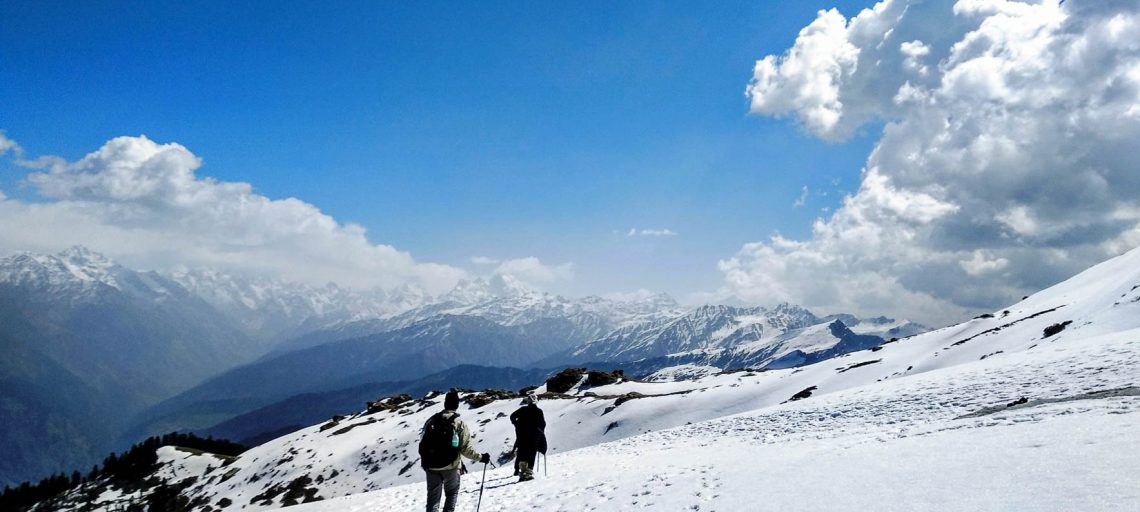
Trekking in the Himalayas One of the significant features of any Himalayan Trek is its basecamp. The quietness of a campsite is the thing that sets the temperament and gets your adrenaline siphoning for the trek that you are anticipating. These basecamps are tucked between transcending mountains and valleys with the sound of the close by spouting stream that elevates your state of mind and makes the ideal setting. Such is the magnificence of one specific village in the Western Garhwal district of Uttarakhand, Sankri. Sankri is an exciting settlement in Uttarkashi locale in the lower regions of the Himalayas. Situated inside the Govind Pashuwildlife sanctuary this hamlet resides at a tallness of 6400 feet above ocean level. Sankri is an incredible spot for a tranquil occasion in the mountains or on the off chance that you are a trekker. Sankri is socially rich with wooden engineering and the great perspective on the Himalayas.
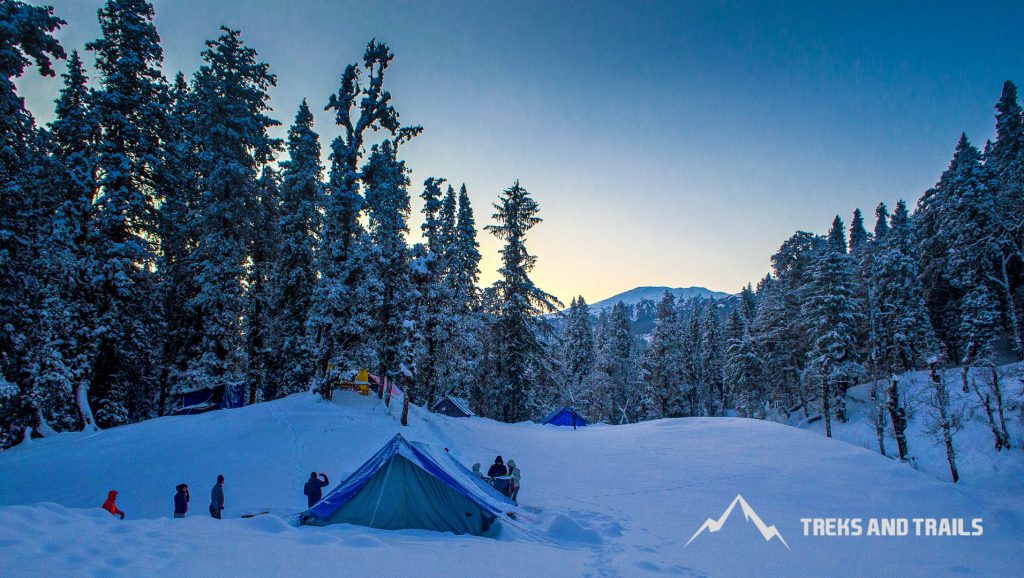
About Sankri Uttarakhand
How to reach Sankri one can reach Sankri from Dehradun. Sankri is at a distance of 200 km from Dehradun, the capital city of Uttarakhand. It takes around 10-12 hours to reach Sankri from Dehradun by street relying upon the method of transportation. One can settle on State transport transports or private cabs to reach Sankri. The route is Dehradun-Vikasnagar-Selaqui-Nougau-Purola-Netwar – Sankri. In any case, Sankri to Dehradun is an excellent excursion going through the profound pine backwoods and colourful vegetation. The Sankri Village is the last street head to the Govind Pashu Wildlife Sanctuary.
Scintillating Views You See During the Treks from Sankri
Sankri offers gorgeous vistas of the Himalayan horizon and plenty of mountain tops, looking at you from far away. The mountain ranges containing Swargrohini, Bandarpoonch, Kalanag or Black pinnacle, Gangotri, Yamunotri, are not many of the numerous pinnacles and ranges that one sees while travelling the passes and valley of this district. Moreover, high knolls, a horde of landscapes, fascinating risings and plummets, extraordinary passes and valleys with beautiful foliage and wild fauna, dubious restricted path are numerous highlights when you plan one of the treks from Sankri.
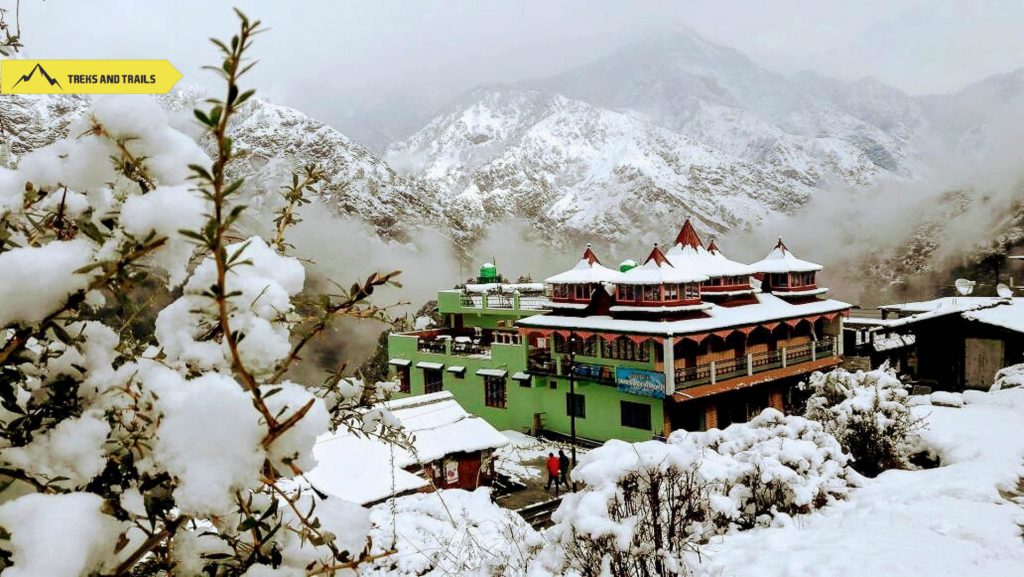
The best Himalayan treks in the Uttarkashi region that sets out from Sankri, It functions as the basecamp to a significant number of 35 Treks. But for now, this blog will give you a comprehensive overview of 18 treks that one can embark on from Sankri. The referenced treks will take you over the absolute most stunning scenes, mountain perspectives, and adventures that are a heaven for any trekker. The rundown in the order of their altitude, low to high, introducing an all-encompassing number of treks from Sankri for a wide range of adventurers.
Pushtar Bugyal trek
The lesser-known yet amazing trek to the Pushtar Bugyal through Phulara Ridge is soul enthralling. Pushtar Bugyal is one of the uncommon treks in Uttarakhand and barely offered by the trekking firms around. The trek has a base camp of the unblemished Mori River. Indeed, there is nothing better than camping close to the overflowing river and enjoying the morning errands in the free-streaming water! Pushtar Bugyal is one of the fascinating and relaxing spots for outdoor camping by Rive Mori which cannot be missed.
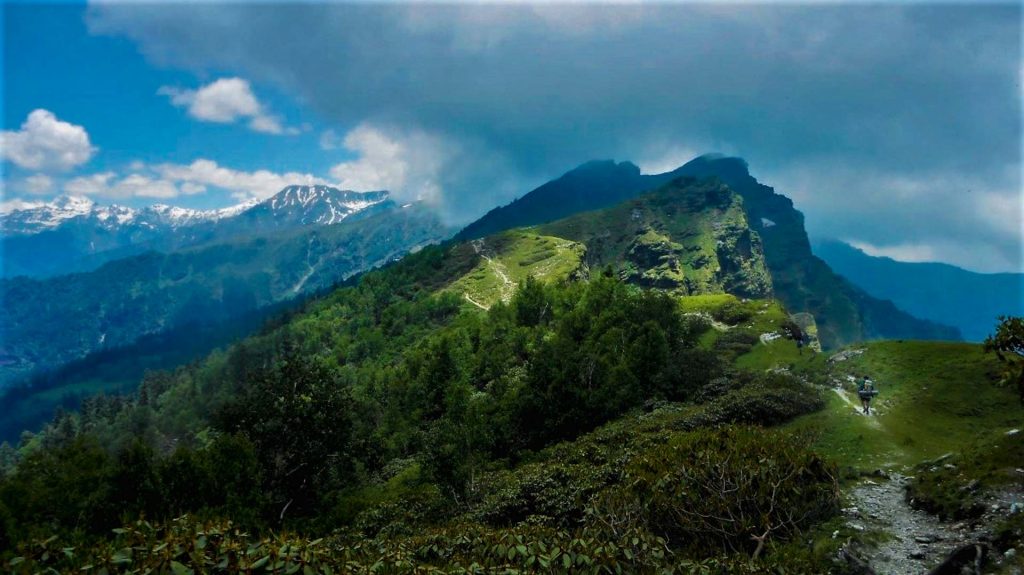
What makes this trek one of a kind is the landscape that one traverses through. Ridges are very exceptional in the Indian Himalayas. Yet, this path takes one on a stroll atop a ridge that goes on for about two hours! Porch ranches, wildflowers, mountain streams, nearby residents playing out their everyday errands and top of the world view are few of the exquisite features of this simple trek in the Himalayas. Trekking in the Garhwal region and exploring the Pushtar Bugyal is an extraordinary experience.
Trek Information
- Pushtar Bugyal Altitude 11581 feet above sea level.
- Best months to visit May and June as well as August to October
- Trek Duration 7 to 10 days
- Trek level Moderate
Chaainsheel Bugyal trek
Chaainsheel Bugyal is a hidden meadow trek in Uttarakhand that has escaped trekkers for an extended period. Chaainsheel Bugyal trek will present you breathtaking perspectives on Deodar woods, a breadth of rhododendron and silver birch as a treat. Chaainsheel Bugyal lies on the edge of Uttrakhand and Himachal Pradesh and is perched at an ascent of 3600 meters. The feature of this trek is that the course bestows one with a ton of cascades, natural pools, and streams. Besides, the Gujjar houses on the trail are an exemplification of indigenous design and artistic.
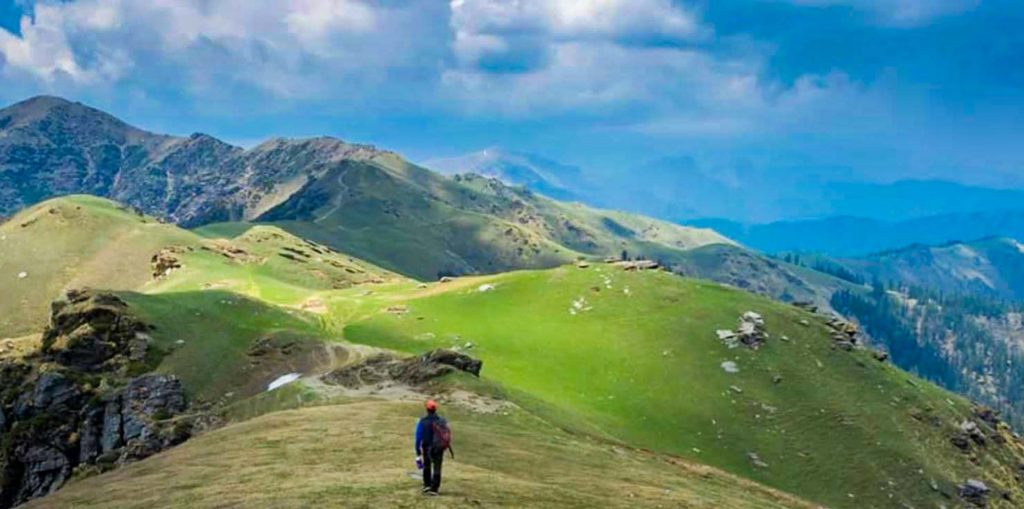
The lush green glades at Chaainsheel valley in the Uttarkashi region boasts of unparalleled perspectives on the glorious Himalayan peaks of Bandarpoonch, Kalanag, and Swargarohini. Aside from these, one could likewise get stupefying glimpses at Pir Panjal, Kinnaur and Dhauladhar ranges. The Chaainsheel Bugyal, which is over the treeline, has stunning 360-degree views over the encompassing valleys. The Chaainsheel Bugyal is brimming with wild blossoms of striking shades and offers undulating sumptuous green meadows.
- Chaainsheel Bugyal Altitude 11811 feet above sea level.
- Chaainsheel Bugyal Best months to visit May and June as well as September and October
- Chaainsheel Bugyal Trek Duration seven days
- Chaainsheel Bugyal Trekking level Moderate
Ruinsara Tal trek
Ruinsara Tal is a high elevation freshwater glacial lake at a tallness of 3500 meters. It is situated in the Govind Pashu National Park close to the Har Ki Dun valley. The Ruinsara Tal is a holy lake positioned at the foothills of Black Peak (Kalanag) and serves as its base camp. Ruinsara Tal is the birthplace of the lovely Supin River. Beginning from Sankri, the Ruinsara Tal trek follows the same trail as that of Har Ki Dun trek and Bali pass. However, it digresses from the campground of Seema. The Ruinsara Tal trek takes one over the beautiful hamlets of Seema and Osla, exhibiting their exquisite culture and customs.
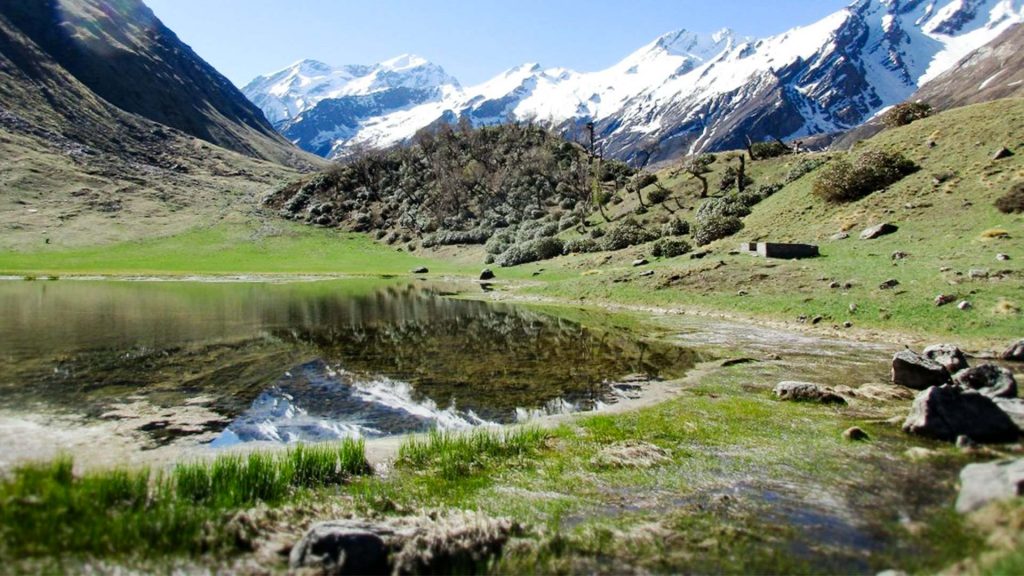
Resting underneath the Bandarpoonch Glacier, the Ruinsara Tal is encircled by snowcapped fields, wildflowers and rhododendron trees. One of the most beautiful lakes in the Garhwal Himalayas of Uttarakhand, the Ruinsara Tal offers unrivalled perspectives on Bandarpoonch Peak and Dhumdhar Kandi Pass toward the East, Swargarohini toward the north, and Kalanag toward the south-east which are hypnotizing and surreal. The Ruinsara Tal Lake is esteemed to be sacred by the inhabitants of this beautiful valley as it is considered as one of the pathways that the oldest Pandava sibling, Yudishtra took while he was venturing out to Swargarohini looking for heaven.
- Ruinsara Tal Altitude 11975 feet above sea level
- Ruinsara Tal Best months to visit March to June as well as September to December
- Ruinsara Tal Trek Duration 7 to 8 days
- Ruinsara Tal Trekking level Moderate
Rupin Supin trek
The trek commences at the Rupin River and concludes at the Supin River. Hence, the name of the trek is Rupin Supin. An offbeat trek, the trail is a unique one situated in the northwest corner of Uttarakhand and on the fringe with Himachal Pradesh. The trail boasts of the gorges which are grand and delightful. Additionally, the rich green foliage that encompasses this valley is one of the kind. Rupin Supin is a lesser-known and far off zone in the Garhwal Himalayas, and you will get an opportunity to cross the two valleys in a fantastic trek over high edges, overlooking the mighty Himalayan Mountains mostly the Kinnaur Kailash Range. The trek to Rupin Supin will astound you at each progression and each turn you take, be it the dramatic scenes, the snow-topped mountains or the far off valleys of Garhwal and Kinnaur.
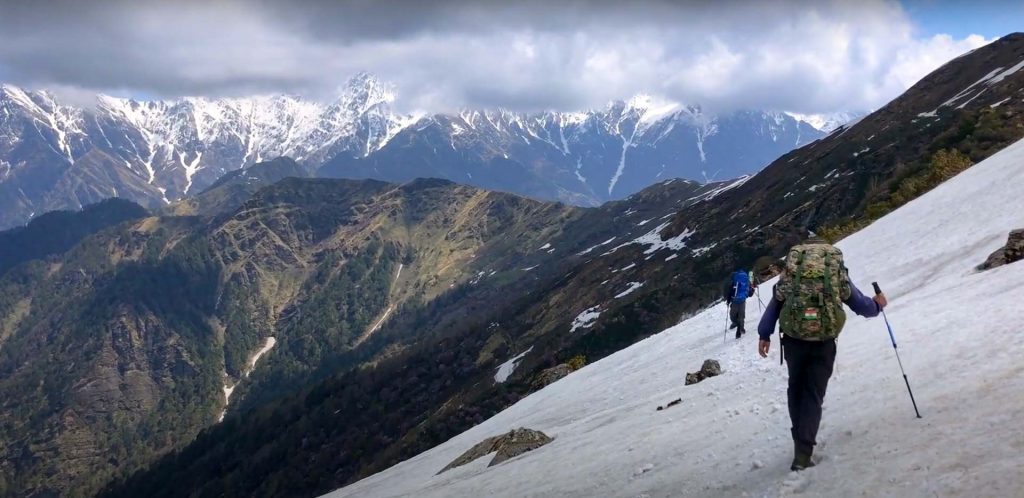
The Rupin Supin trek begins at Bheetri in Uttarakhand. From that point, it will divert to Kurla Thaach from where you will cross some forests to reach Rikatik Odi. It is the intersection point of Rupin and Supin Valleys, so take a couple of seconds and devour the unique perspectives on the valley from here. Cross a couple of more Himalayan hamlets to get to the Supin Valley deserting the Rupin valley. The Himalayan vistas on this trek will undoubtedly entrance you and leave you in amazement. Trekking along the Rupin River inside the Govind Pashu National Park will be a paramount experience.
- Rupin Supin Altitude 12287 feet above sea level.
- Rupin Supin Best months to visit March to June as well as September to November
- Rupin Supin Trek Duration seven days
- Rupin Supin Trekking level Moderate
Har Ki Dun trek
One of the most exceptional valleys of the Uttarkashi region in Uttarakhand, Har Ki Dun signifies as the valley of Gods. Situated at the foothills of Fateh Parvat (3556 M), the Har Ki Dun valley is one of the most popular treks in the Garhwal Himalayas of Uttarakhand. The Har Ki Dun path runs analogous to the colossal Thamsa River, offering exotic vistas of Swargarohini, Bandarpoonch, Black Peak and Hata Peak. The trek takes you through the enchanted Govind Pashu National Park which has a rich showcase of widely varied vegetation and avian species and is nothing less than a paradise for nature enthusiasts. One can likewise discover the state bird of Uttarakhand which is the beautiful Himalayan Monal that lives in this life-rich valley just as Golden eagles and Himalayan griffins.
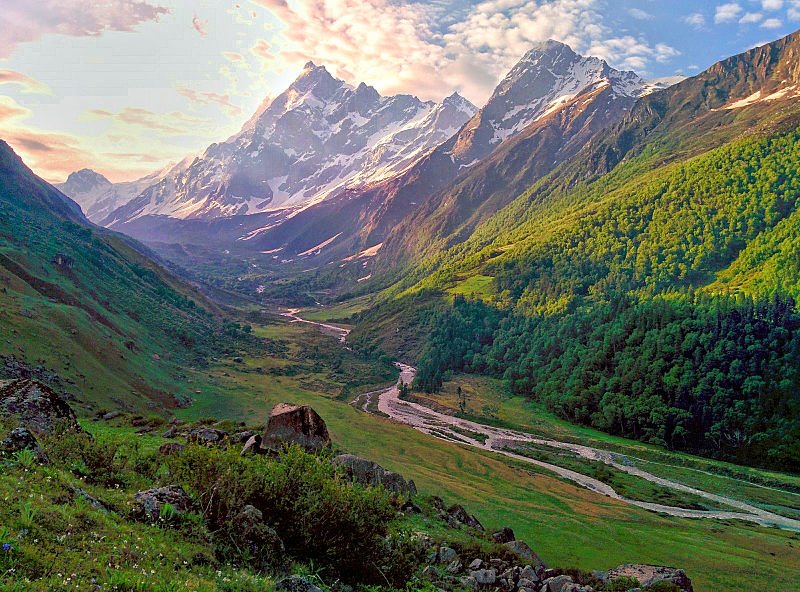
The Pandavas are believed to have dwelled in this valley, that's why the title "Valley of Gods". Legend has it that the Pandavas embarked on the similar course in the pursuit of heaven towards Swargarohini peak. While it is excellent in summers overlooking the lush verdure of the Har Ki Dun valley, it is likewise entrancing in winters. Har Ki Dun trek offers the adventurers with the opportunity of trekking in the close by Jaundhar Glacier and Maninda Tal Lake regions. A simple and relaxing trek, Har Ki Dun is ideal for novice trekkers who wish to wander on a path that not just offers lofty perspectives on the encompassing vistas. Still, the other hand is saturated with folklore.
- Har Ki Dun Altitude 12467 feet
- Har Ki Dun Best months to visit April to June as well as September to December
- Har Ki Dun Trek Duration 6 to 7 days
- Har Ki Dun Trekking level Moderate
Kedarkantha trek
Outstanding amongst other winter treks in the Himalayas, the Kedarkantha Trek is an easy trek, ideal for both amateurs and experienced trekkers. Delightful campgrounds, surreal snow and the exciting summit, are some of the many extraordinary highlights of the Kedarkantha trek. The trek begins from the Sankri itself and is perhaps the most popular trek in Sankri. The second campground of Juda Ka Talab is a frozen lake to chill around, and the third campground is at the picturesque Hargaon hamlet. Best implied for snow admirers, the peak of Kedarkantha does not require any earlier trekking experience which makes it all the more intriguing.
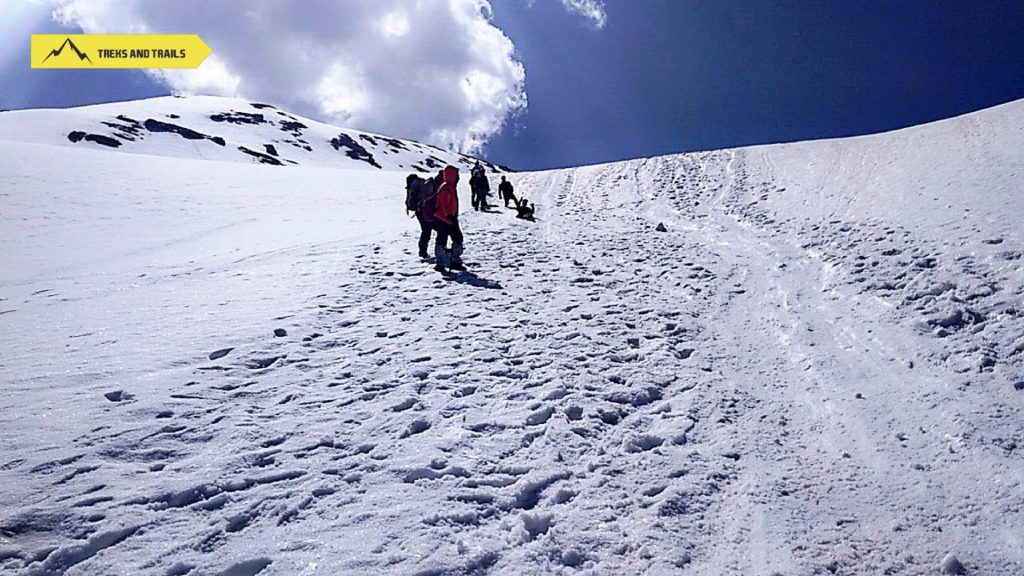
With the path totally under a thick cover of snow, Kedarkantha summit at 12,500 feet, Offers an all-encompassing view of divine mountains like Swargarohini, Bandarpoonch, Black Peak and some more. With a complete excursion of just five days from Dehradun to Dehradun, the Kedarkantha trek is the best getaway you can embark on to quench your trekking thirst and chill in the snow while basking in the Himalayan sparkling sun. While December is the most energizing chance to the summit to this thrilling mountain, you can likewise anticipate a lovely time, here in summers. Kedarkantha's temperature makes it suitable trek all-round the year.
- Kedarkantha Altitude 12500 feet above sea level
- Kedarkantha Best months to visit May to June as well as December to February
- Kedarkantha Trek Duration 6 to 7 days
- Kedarkantha Trek level Moderate in winter and Easy in summer
Dev Kyara Bugyal Trek
Dev Kyara Bugyal Trek was esteemed as the 'Trek of the Year in 2019' by Times of India. The completely invigorating Dev Kyara Bugyal Trek is one of the most pristine and immaculate trails in the Sankri Range of Uttarakhand. Dev Kyara Bugyal Trek is the best alternative to the swarmed Har Ki Dun trek. The Dev Kyara Trek takes you through thick pine and oak backwoods, lavish green glades, surreal campsites, numerous streams and stones intersections, moraine edges, uncountable cascades, huge valleys, and massive snowcapped tops as well as glacial basins. The Dev Kyara Bugyal Trek begins from Sankri and further goes through the hamlets of Jakhol, Obra and Bhawa. The path kisses the thundering Dibra Gad River, which is the tributary of Supin River. The course then takes you to the staggering campground of Dev Kyara Bugyal situated at the foot of the humongous Ranglana Peak (5554 Meters) with a few snowcapped peaks encircling the campsite.
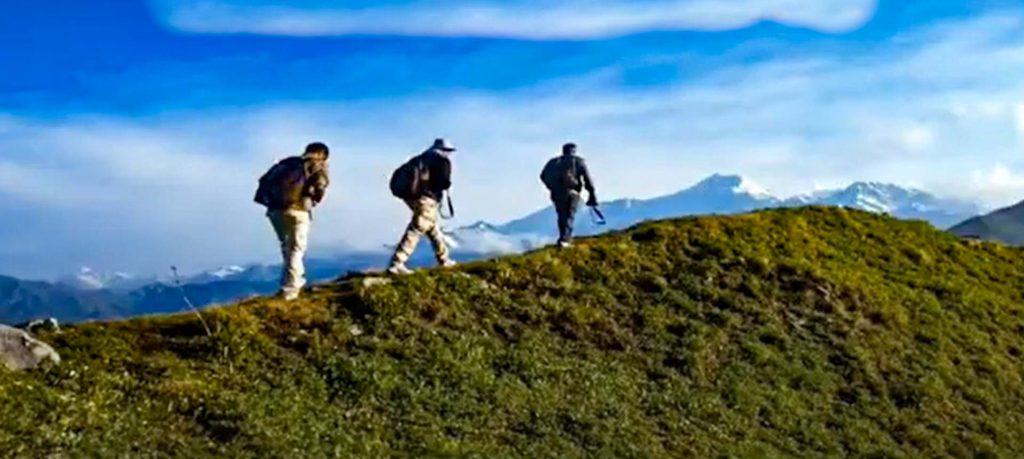
Dev Kyara meadow offers unparalleled sights of different unknown mountains. The Dev Kyara valley reveals hypnotizing views that consist of wild strawberries, wild mushrooms, and colourful blossoms. If you wish to go for an offbeat trek with marvellous scenes and appealing magnificence, then Dev Kyara Bugyal Trek is the trek for you. It is a path amid the emerald knolls of Himalayas and one of the serene treks compared to the other coveted ones.
Trek Information:
- Dev Kyara Bugyal Altitude 13452 feet above sea level.
- Dev Kyara Bugyal Best months to visit May to June and September to October
- Dev Kyara Bugyal Trek Duration 7 to 10 days
- Dev Kyara Bugyal Trek Difficulty Grade level Easy
Saru Tal trek
The Saru Tal trek is two-in-one trek as it is an amalgam of two treks. A stopover to the summit of Kedarkantha and the surreal Lake of Saru Tal. In the Garhwal Himalayan locale, there are numerous trails which no one has walked on yet, and numerous treks were discovered by the shepherds who went there looking for green meadows. Saru Tal is one of the treks which was found by a shepherd, a great lake amid the knolls, and it lies in Govind Wildlife Sanctuary. The Saru Tal is a perfect, glorious blue lake situated in such a region where the temperature at the day time is balmy though the evenings are cold. Saru Tal is at full blossom in the long stretch of June and October, green knolls and wildflowers bloom on the trail. In winters it gets all blanketed by the snow and becomes a mystery pearl covered up in the Western Garhwal Himalayas. Saru Tal is prosperous in vegetation, and it is home to various creatures and winged animals, which makes it a utopia for bird watching and untamed life photography.
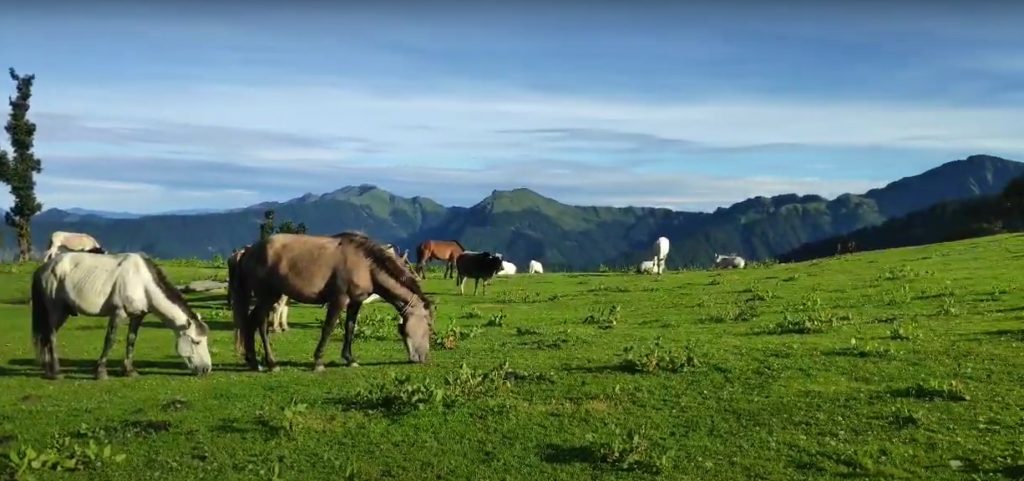
The trail of Saru Tal is the only trail from where one can witness Swargarohini – I, II, III, Bandarpoonch, Black peak, Dhumdarkandi pass, Borsu pass, Fachukandi pass, all together. One can likewise sight the Ruinsara Lake, Rupin Valley, Bali Pass journey, Khimloga Peak, Baraadsar Lake peaks from here. This trek is dominatingly a ridge stroll over the long Kedarkantha Bugyal, and Dunda bugyal glade extends offering broad perspectives on the Gangotri tops. The Saru Tal at the top is a gorgeous lake with the snowcapped mountains reflected in its calm waters. The Saru Tal lake horizon is a shimmering silver magnificence that will leave you spellbound.
- Altitude: 13780 feet above sea level.
- Best months to visit: June and October
- Trek Duration: 9 to 10 days
- Trek level: Moderate
Fachu Kandi trek
The stupendous Fachu Kandi pass is located close to the striking Saru Tal Lake. Gone unexplored by the adventurers, the virgin path is to be sure immaculate, tranquil, and worth a shot. Fanchu Kandi is a bold blend of high edges, and steep risings, trekkers, would savour this while extinguishing the thirst at streams on the way. One traverses through the Kedarkantha and Sarutal just to move further and witness the inconspicuous zones to reach Fachu Kandi Pass. These two are popular treks in Garhwal Himalayas, and the path consistently stays swarmed. On the journey to Fachu Kandi Pass, you will go through these perfect spots and ahead the paths are virgin because very few individuals know about the existence of this high pass.
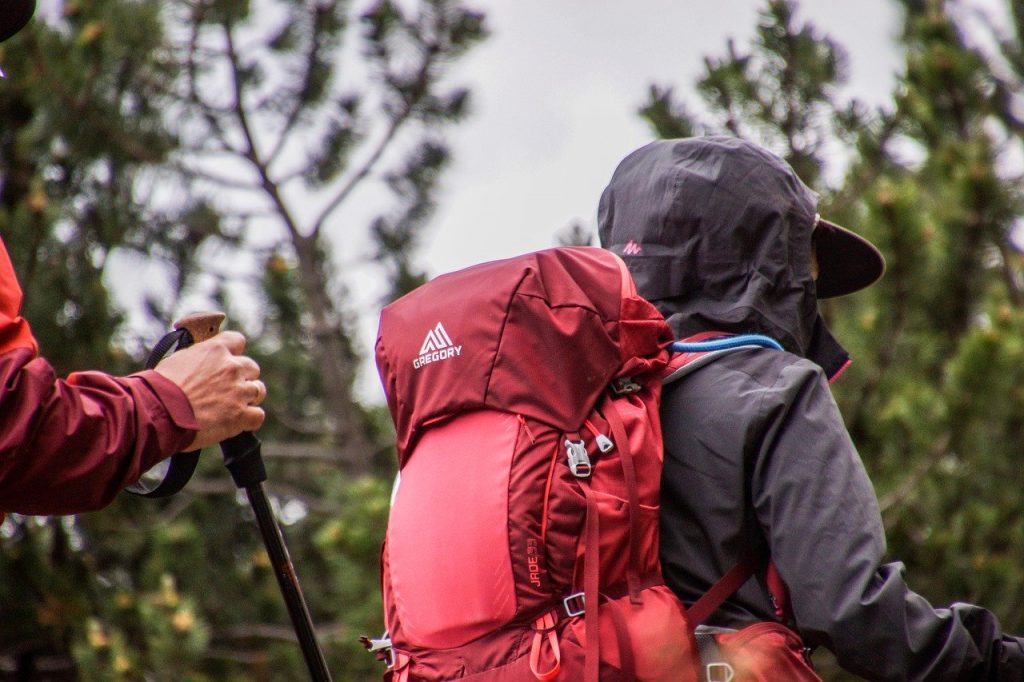
Sankri is the base camp, and the endpoint is Hanuman Chatti in Chamoli. The Fachu Kandi Pass trek gives an incredible chance to all trekkers to see the beautiful excellence and witness the life of distant towns like Saur, Sankri and Yamunotri Garhwal Himalayas. Strolling across thick backwoods of Oaks, Pines, Indian pony chestnuts, maple, pecan, deodar and Rhododendronsmakes the trek satisfying. The path comprises of huge glades which have a lot of vegetation. Alongside vegetation, there are wild creatures like Himalayan Mountain bear, panther, and wild pigs and so on. One will experience undulating knolls with the sight of stunning snow-clad mountains, like the tranquil Har ki dun valley, Swargarohini, Banderpoonch, Yamunotri valley, Rupin-Supin valley, Khimloga pass and Vijay top.
- Fachu Kandi Altitude: 14291 feet above sea level
- Fachu Kandi Best months to visit May and June as well as September to November
- Fachu Kandi Trek Duration 9 days
- Fachu Kandi Trek level Moderate
Baraadsar lake trek
The Baraadsar Lake is huddled up between the Rupin and Supin valleys in the Garwhal Himalayas. Believed to be sacred by its inhabitants, the Baraadsar lake trek is one of the most unconventional treks in the Sankri Range of Uttarakhand. Located at the outskirt of Uttarakhand and Himachal Pradesh, the Baraadsar Lake Trek takes you across enormous glades, exciting edges, beautiful campgrounds, thrilling summit climb and the shining glacial Lake of Baraadsar at a significant elevation. The trek includes a persistent ridge stroll with all-encompassing perspectives throughout. The views and the tranquillity make Baraadsar Lake an ideal location for camping and guarantee an ecstatic time.
The ridge divides the Supin and Rupin Valley, presenting trekkers' with unrivalled visions of Swargarohini, Bandarpoonch, Kalanag, Hata Peak, Kedarkantha, Lisani Pass, and Lamkhaga Pass. You will also get to peep at other anonymous mountains toward the East alongside the fabulous Rupin range, and Kinnaur Mountain ranges toward the West. With beautiful campgrounds and an enamouring icy mass cross to arrive at the summit, the Baraadsar Lake Trek has a progression of steep risings. It drops taking you through rhododendron stacked paths and oak woodlands, This trek is intended for seasoned trekkers with earlier trekking experience. Baraadsar Lake Trek is the perfect alternative to the crowded Roopkund Trek and must be on every adventurist's list.
- Baraadsar lake Altitude: 15,092 feet above sea level.
- Baraadsar lake Best months to visit June and September
- Baraadsar lake Trek Duration 9 days
- Baraadsar lake Trek level Difficult
Rupin pass trek
Rupin Pass trek starts from Dhaula, an old-world settlement in Uttrakhand and concludes in the excellent Sangla Valley in Himachal Pradesh. Rupin pass trek is a full bundle that includes, neighbourhood hamlets, frozen knolls, snowfields, invigorating cascades, and an astonishing past. The high elevation is not merely the sole purpose behind its ubiquity among adventurers, the distinguished number of landscapes and abrupt variety in trails additionally draws in numerous nature enthusiasts. You will begin trekking your course from greener and hot scenes and move towards and through the coldest of regions over the snow as you reach the end. Start the trek by paying homage to the Pokhu Devta.
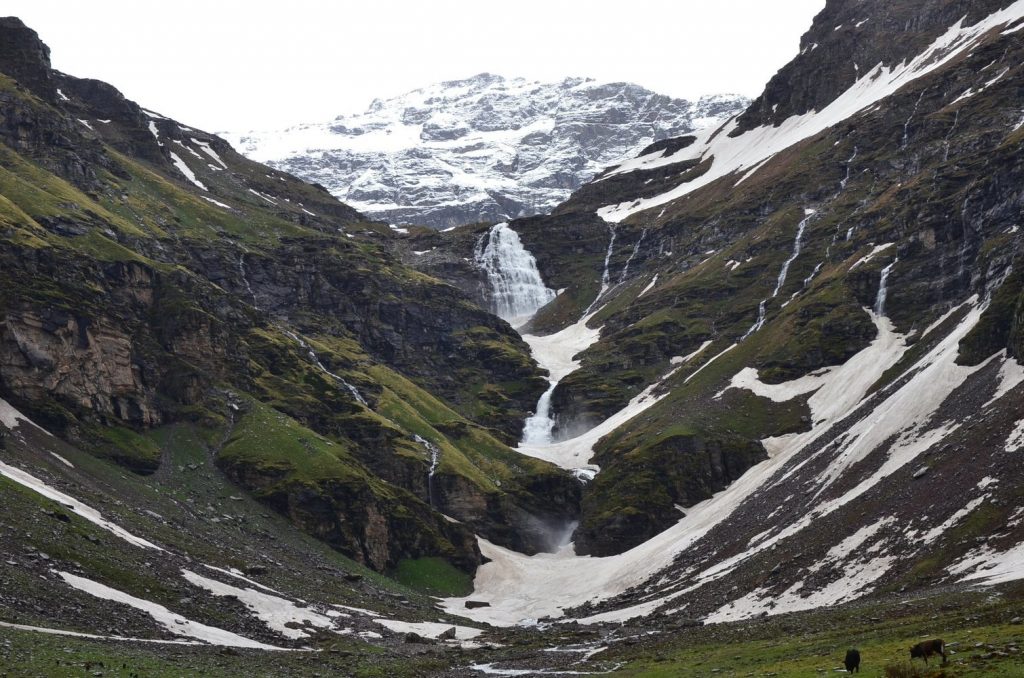
Enchanting you across ever-changing scenes from dynamic knolls specked with wildflowers to thick wildernesses, cascades to an elating pass cross, the Rupin Pass Trek shows you the difference in the two states and its way of life. You will encounter numerous cascades and stream on the trek. The three-phase Rupin cascade at a tallness of 11,500 Ft. is perhaps the best sight which leaves trekkers awestruck. The trek takes you through the customary towns of Sewa famous for the two-story sanctuary of Kinnauri culture. Keep travelling, and you will run over various snow spans. The journey at different places likewise goes through the backwoods of fir, Rhododendron and Oak. Treat your eyes to the extraordinary Jhaka village, which is a remarkably hanging village at the most extreme edge of the mountain. You will get entranced by the perspectives on grandiose Kailash Peaks while you reach towards the end of Rupin Pass trek.
- Rupin pass Altitude 15279 feet above sea level.
- Rupin pass Best months to visit March to June as well as September to November
- Rupin pass Trek Duration 8 to 10 days
- Rupin pass Trekking level Difficult
Nalgan Pass trek
The Nalgan Pass Trek is a trek through the excellent glades of the Himachal and Garhwal locale of the Himalayas. It is situated in the northeastern part of Uttarakhand beginning from Himachal fringe, travelling east and afterwards south. The trek is an energizing adventure in the Garhwal and Himachal Himalayas, where you get the chance to discover the broad scope of verdure of both these territories, alongside magnificent knolls of Himachal Pradesh. Nalgan pass is a gorgeous site near the Rupin Pass, suggested uniquely for experienced trekkers. Aside from glorious standpoints on intense mountains, the trekkers can either camp or chill on the banks of Kanasar Lake. You will begin to encounter the great glades, and the indescribable appeal of the Himalayas will take your breath away right from the start of tis trek.
An exotic high pass in the Himalayas, Nalgan Pass trek begins from Dhaula and concludes at Chitkul; it is roosted at a tallness of 4450 meters. Relatively few individuals are aware of this pass, the magnificence and the great perspectives are still undercover. Nalgan Pass offers extraordinary sights of the high Himalayan pinnacles in their brilliance along with vivid views of Kinnaur in Himachal and of Garhwal side. The scenic landscape of snowcapped mountain tops will leave you mesmerized. Traverse through the far-flung locales to stumble upon the fantastic Kanasar Lake that lies in transit which can be seen during this trek. In the event that you have done the Kedarkantha trek, then this could be your ideal next dare to investigate.
- Nalgan Pass Altitude 14600 feet above sea level.
- Nalgan Pass Best months to visit: May and June as well as September and October
- Nalgan Pass Trek Duration 8 to 10 days
- Nalgan Pass Trek level Moderate
Maldaru Trek
Ruinsara Tal, Baradsar Tal, and Maldaru Tal are triad lakes of the Garhwal Himalayan zone. Maldaru is a cold lake and is about 300m long. Maldaru Lake is viewed as propitious and revered by the inhabitants. In past when drought struck Osla, the locals pleaded Maldaru Lake for the downpours and their desire was satisfied, from that point onwards they began worshipping Maldaru Lake. Maldaru Lake is viewed as a goddess among natives. Encircled by anonymous pinnacles, this Lake sits with its clear waters, imbibing on the shades of the sky above. There is a stunning quietness in this area. The sentiment of remaining here, in its quiets and its chilling cold, is a setting endowed from divine beings.
The way to the Lake via the woodlands, antiquated towns and formal settings, is no less of a sight to behold. The Maldaru lake trek near the Har Ki Dun-Ruinsara Valley Trek. To such an extent, you see the valley and its encompassing reaches on various events from Rashi Top, from Maldaru basecamps and the shoulder of the anonymous pinnacles encompassing the Lake. The campsites of knolls Rashi and Vishkhopri knolls make for the perfecting relaxing spot. The Maldaru Tal Trek is a late spring delight that will leave you struck by wonder as a result of the flawlessness of the colossal Himalayan valley. The Maldaru Tal Trek provides excellent perspectives on Bandarpoonch, Black Peak and Swargarohini with a lot more pinnacles of Himalayas. There are Phen Kamal and Brahma Kamal in plenitude around this Lake. Being one of the challenging treks of the Uttarkashi region, it is advisable for only seasoned trekkers.
- Maldaru Trek Altitude 14763 feet above sea level
- Maldaru Trek Best months to visit May and June as well as September to November
- Maldaru Trek Trek Duration 8 to 10 days
- Maldaru Trek Trek level Moderate
Singha Ghati trek
The Singha Ghati pass is arranged at the fringe of Uttarakhand and Himachal Pradesh. Singha Ghati ends in the town Rakcham in Himachal Pradesh. The River Shaeoni/Shaoni nala streams down the south edge of it which is situated on the other side of the village Rakcham at the Baspa Valley in Himachal Pradesh. There are three passes Lamea/Lamia (5200m), Chhotae (5050m) and Singha Ghati (5090m) situated close to the source of this brook. The Singha Ghati pass is a new and unexplored hidden trail. No trekking company provides a trek here due to its difficulty and obliviousness. Singha Ghati is a high-altitude pass, preferably for the experienced trekkers. The top of this mountain is immaculate; you will feel like a hawk gazing at the panoramic views of the surrounding.
The immense snowfield, icy glades and perhaps precipices and crevasses make this trek treacherous. The trek isn't regularly explored even by its locals, and in this manner, it is one the less desired and swarmed. The trek holds a portion of the great perspectives on the area with the snow-topped mountains and the verdant valleys. All through, you will be welcomed with the incredible landscape, for example, falls, verdant knolls, snow-kissed mountains, beguiling villages and huge waterways. Go for the Singha Ghati experience to take in the magnificence of the Himalayas and to take in the new mountain air!
- Singha Ghati Altitude 16700 feet above sea level.
- Singha Ghati Best months to visit May and June as well as September to October
- Singha Ghati Trek Duration 12 to 15 days
- Singha Ghati Trekking level Difficult
Borasu Pass trek
Arranged at the outskirts of two astoundingly extraordinary north-Indian states of Himachal and Uttarakhand, Borasu is a high mountain pass. This trail is likewise found nearer to the outskirts of Tibet and is stuffed with excitement and experience. The Borasu Pass Trek is perhaps the best trek in India which lets you hybrid from Uttarakhand to Himachal Pradesh. Taking you over the broadly Har Ki Dun path, the Borasu Pass Trek proceeds ahead to cross into Chitkul in Himachal Pradesh. Associating the Tons Valley with the Baspa Valley, this trek is a thrilling adventure to stunning tallness.
The path takes you through thick backwoods of chestnut and pecan, far and broad lavish fields, terraced mountain fields. This trek is for experienced adventurers who wish to test their cutoff points on a virgin path that has figured out how to keep itself secluded from the world. The trek offers thick timberlands of Willow, Chinar, Chestnut and some more. Going through the coniferous trees and rich green glades, the Borasu Pass trek is anything but a moderate one. The high elevation will consume your calories. On the path, you will discover trees of Bhojpatra, the uncommon Brahma Kamal, and vivid widely varied vegetation. You can see different birds like Rosefinch, Redstart, Tit, Warbler, Babbler, Thrush and some more. One can see Kalanag, Bandarpoonch, Ruinsara tops and the glorious Swargarohini even before one arrives at the pass.
- Borasu Pass Altitude 17224 feet above sea level.
- Borasu Pass Best months to visit May and June as well as September and October
- Borasu Pass Trek Duration 8 days
- Borasu Pass Trek level Difficult
Dhumdhar Kandi Pass
Dhumdhar Kandi Pass, natively known as the "Smoky Ridge Forest", is a high elevation pass linking the sacred pilgrimage destinations of Gangotri and Yamunotri in Uttarakhand. Dhumdhar Kandi Pass sits toward the north of the Bandarpoonch massif and connects the Bhagirathi valley with Rawaeen, part of the upper Tons Valley. Frosty ice sheets flank the path on each side. The Kalanag (Black Peak) ice sheet and the icy mass from Swargarohini and Bandarpoonch on either side of the Dhumdhar Kandi Pass feed the two powerful streams of Bhagirathi and Yamuna, which dribble down the monstrous nose.
The trek begins from the conjunction of Sian Gad and Bhagirathi streams close to Jhala village headed for Gangotri. Zooming through the tricky Kalanag Icefall which later meets the Bandarpoonch Glacier at Dharali Ki Udari. The trek closes a little past Ruinsara Tal in the Tons Valley, at the quiet little town of Sankri. This trek as two marvellous campsites of "Kyarkoti" and "Bank of Ruinsara Lake". TheDhumdhar Kandi Pass trek takes you through lovely mountain towns, by lavish green knolls and through immense snowfields alongside best perspectives on Bandarpoonch, Kalanag, Swargrohini and Yellow Tooth and many peaks of Garhwal. The pass is at the foothills of two eminent mountains of the Garhwal Himalayas, Kalanag and Swargarohini. Known for its entangled territory, new path and aura alongside flighty climate, the Dhumdhar Kandi Pass trek is intended for experienced trekkers.
- Dhumdhar Kandi Pass Altitude 18011 feet above sea level
- Dhumdhar Kandi pass Best months to visit May and June as well as September and October
- Dhumdhar Kandi pass Trek Duration: 12 days
- Dhumdhar Kandi pass Trekking level Difficult
Khimloga pass trek
Khimloga pass is arranged in the Dhauladhar ranges in the midst of Kinnaur and Uttarakhand. The Khimloga pass route was utilized in days of yore for exchanging on silk course which interfaces Baspa Valley and Lewari in Uttarakhand. Khimloga pass is a high-height pass, barely given a fearless endeavour. Khimloga pass trek is must-do if you have the adventure thirst in you and unquestionably need to have a go at something new which gives you an adrenaline surge. The Khimloga pass trek resembles an undertaking given its troublesome design. Khimloga pass contains crevassed icy masses, steep stone precipices to climb, massive snowfields, and extensive edges.
There are numerous edges situated at Dhauladhar which interfaces Baspa to Uttarakhand, yet the path are immaculate and are influenced by the geographical changes. This pass has been navigated by just a single group till date and appears to be unconquerable due to the crevassed icy masses, snowfields and steep, rough dividers. It turns out to be challenging to try and consider navigating Khimloga Pass because not even local people go there. In any case, the individuals who are the genuine mountain aficionados and are having the soul of experience can attempt this daunting expedition. The trek ends in Chitkul which is the last town of Baspa valley. It has developed green fields, and local people live in wooden houses, this is a pleasant town, and from here Nardu Gad can be seen which descends from an edge it looks like a conventional Nala yet its head is Khimloga Pass, the trail of which are virgin and lost.
- Khimloga pass trek Altitude 18740 feet above sea level.
- Khimloga pass trek Best months to visit May and June as well as September and October
- Khimloga pass trek Trek Duration: 9 days
- Khimloga pass trekking level Difficult
- The Company
- Client and Media
- Testimonials
- Social Initiatives
- Environmental Causes
- Registration Process
- Payment Options
- Refund Policy & Cancellation Policy
- User Agreement
- Privacy Policy
43 Nawanagar ICI Shed Ground Floor, Dockyard Rd, Ekta Nagar, Mazgaon, Mumbai, Maharashtra 400010
The payment is encrypted and transmitted securely with an SSL protocol.
Online booking system by VacationLabs --> | © 2018 Treks and Trails India
High ON Himalayas
One source for all your Himalayan Inspiration

Top 10 Treks in the mighty Himalayas | As recommended by Travel Experts
Top 10 treks in the himalayas.
If you are an outdoor person, and love trekking, the mighty Himalayas, have a lot to offer. Avid Travellers and Trekkers themselves have recommended these Top 10 Treks in the Himalayas , which you as an adventure enthusiast, should tick off your bucket list.

Annapurna Circuit | Nepal
By Wendy Werneth from The Nomadic Vegan
Walking the Annapurna Circuit is one of the best things I’ve done in 20 years of traveling the world. The trek begins in Besisahar, which is easily accessed by bus from the popular lakeside town of Pokhara.
It’s a 300km, two-and-a-half week walk which begins through rice fields and pine forests, past endless streams and waterfalls, through Hindu villages and ancient Tibetan Buddhist ones.
As you keep walking up to higher elevations, you will eventually see five 7000m+ peaks with one tilt of your head, with the sky such a deep blue that it’s almost black. At the summit, you will cross one of the highest passes in the world, 4700m higher than you were when you started walking.
The Annapurna Circuit is all that and more, a wonderful journey that changes every day and offers effortless mountain views and beautiful villages, sometimes mixed together in outrageously beautiful scenes that will stay with you forever. If you plan on doing such high altitude treks, you should make it a point to invest in a mountain climbing insurance to be on the safer side at all times.
The best scenery is around the Braga area – with superb views of Annapurna II (7939m), Annapurna IV (7525m), Annapurna III (7555m), Gangapurna (7454m) and Tilicho (7134m) The village itself is also picturesque, with a historic gompa (Tibetan monastery).

My favorite village of the entire trek was Jharkot, with its ruined fortress towers, picturesque old residential architecture, and Buddhist monks playing trumpets on the roof of our guesthouse.
This is a “teahouse trek”, meaning you will stay in and eat at small guesthouses along the way. There’s no need to bring camping gear or food, although it’s wise to carry some snacks. Meals served at the guesthouses include dal bhat and other dishes from the Indian subcontinent as well as more international fare, like spaghetti or chow mein noodles.
Chadar Trek | India
By Amrita and Agniswar from Tale of 2 Backpackers
Chadar Frozen River Trek in Ladakh is one of the ultimate trekking experiences in the Himalayas. Just imagine walking over a sheet of frozen ice with the knowledge that the river flows just below you. With the rugged trans Himalayan ranges on both sides of the river, Chadar Frozen River trek is definitely an experience of the lifetime. In the morning, the temperature is five degrees below zero and in the nights, it can go to as low as -35 degrees. But all the discomforts feel nothing when you ultimately see the frozen Nerak waterfall, or you master the art of walking over the ice after 9 days of the arduous trek. It is true that trekking along the Zanskar River on the Chadar Trek is an experience of a lifetime.
The trek starts from Shingra Koma, an hour drive from Leh town. It is a circular trek ending at the same place. Nerak is the last point of the trek and after that, you return by the same route. The only time you can to do this trek is in January and February when the river freezes completely and there is a thick blanket (chadar) of ice over the river and you can walk over it.
Still not convinced about visiting Leh Ladakh in Winters? Check out these 5 reasons to visit Leh Ladakh in Winters
A word of caution about this trek: The ecosystem in this region is very fragile. Of recent excessive trekking on the Chadar has taken its toll. Too many people walking on the chadar often breaks it at places. Also, the problem of contamination is there. So, while you are off to Chadar, please be a responsible trekker.
Leh is the base camp of the trek. You can reach Leh only by air during January and February.
Also check out 24 Treks for 12 months of the Year – Part 1
https://www.instagram.com/p/Bt5HQ4Lhw0Q/
Everest Base Camp with Gokyo Lake Trek | Nepal
By Michelle Della Giovanna from The Full Time Explorer
The Everest Base Camp Trek is one of the most popular treks in Nepal and for good reason. While it offers several side trek options, a visit to Gokyo Lake is a must. The combined trek for Everest Base Camp and Gokyo is 17 days long. Some people chose to cross the Cho La Pass, but we opted to go south from Gokyo back towards Lukla into less visited villages. From there, we joined back onto the main Everest Base Camp route.
In order to complete the trek in 17 days, you need to fly in and out of Lukla Airport which is known for its level of adventure. You spend a few days hiking to the famous city of Namche Bazaar which sits in a U shape on the side of a mountain. It’s really such a sight to see a city as well built in such an odd area. On route to Gokyo, you’ll pass through small villages and reach the gorgeous turquoise blue lakes. The view from on top of Gokyo Ri is the most beautiful view I’ve seen in my entire life. The water here is considered holy, and it’s said that if you pray during a full moon and touch the water, your prayers will come true.

On the way down from Gokyo, you’ll get to see the small town of Phortse which is usually bypassed by visitors. This makes it an off the beaten path route where few foreigners stay overnight. Finally, you’ll work your way up to Everest Base Camp where mountaineers camp out to climb the highest mountain in the world. You get to walk on the actual glacier and stand in the middle of a historic place with stunning views. This trek offers the experience of a lifetime in one of the most beautiful places in the world.
Ghorepani – Poon Hill Trek | Nepal
By Dave Briggs from Dave’s Travel Pages
Nepal is well known as a major trekking destination in the Himalayas, with treks to suit people of all abilities. Whether you want to trek to Everest Base Camp, or simply take a day hike, there’s something for everyone.
One of the most popular treks in Nepal, is known as the Ghorepani – Poon Hill circuit in the Annapurna region. The exact length, route and stops can differ depending on the length of time hikers have, although 4 nights and 5 days is about the optimal time.
The access point for the Ghorepani – Poon Hill trek, is the outdoor centre of Pokhara. From here, people generally take transport to Nayapul which is an hour away, where the trek will begin. The route is non-technical, and can be completed without a guide or porters if you so wish. The best option though, is to use a qualified guide and porters.
The route follows a loop through the region, passing through various villages along the way, with nightly stops at teahouse. The route could be as follows: Nayapul – Tirkhedhunga – Ghorepani – Hike to Poonhill – Trek to Tadapani – Ghandruk – Kimche – Drive to Pokhara
View this post on Instagram A post shared by Nepal Now (@thenepalnow)
Goechela trek | India
Goechela Trek is one of the grandest treks in the eastern Himalayas. The main reason that we love this trek is because of the varied summits that we get to see on the trek. It’s not just one, but 14 of them. This 11 days trek starts from Yuksom in West Sikkim and traverses Sikkimese Himalayas to Dzongri Top and all the way to Samiti Lake. One of the biggest attractions of this trek is definitely the view of sunrise from Kanchenjunga ranges. Though we are actually not allowed to trek all the way upto the Goechela Pass, but the view from Dzongri top and viewpoint 1 is simply breathtaking.
The big mountains that you see from the trek are Pandim, Kabru, Rathong apart from Kanchenjunga. The Samiti Lake and the reflection of Mt. Pandim is another big attraction of this trek. Goechela is one of the treks where the trail goes through the dense rhododendron forests. During the months of March and April, the whole place seems to be lit up with the different colours of rhododendrons.
To be honest, the trek is a bit challenging but the scenery and landscapes make up for all the hardship. Goechela has the best of mountain views, jungle trails and exotic Himalayan birds. It definitely remains one of our favourites.
Yuksom is the base camp of the trek. You can reach Yuksom from Gangtok by shared cabs. The distance between the two places is about 125 km and takes about 5 hours in the hilly roads of Sikkim.
Hampta Pass Trek | India
By Manu Khandelwal from Harstuff Travel
Region- Manali
Duration- 5 Days
Difficulty level- Moderate
Altitude- 14,100 feet
Hampta Pass is one of the best multiday treks in Himachal Pradesh. The best thing about this trek is that one can easily notice a change in the landscape. This crossover trek commences from lush green Kullu valley from a village called Jobra which is around an hour journey from the most popular hill station of Himachal Pradesh, Manali. The trek continues from Jobra to Chika along the Rani river and further to Balu ka Gera. As one approaches Balu ka Gera, the greenery starts declining.

The pass is crossed on the third day of the trek and the day ends at Sheagoru, which is considered the coldest campsite on the trek. After crossing the Hampta Pass , one enters into the Spiti Valley having cold weather, sour winds and barren beauty. Finally, the trek terminates at Chattru in Lahaul and Spiti Valley. In this trek, one gets to encounter lofty peaks, vast gorges, gushing rivers, blooming flowers and close views of mighty Indrasan peak.
The added advantage of this trek is that one gets to visit the magnificent Chandratal lake. The gradient of this trek is moderate and it can be done by seasoned trekkers as well as amateurs.
Also check out 24 Treks for 12 months of the Year – Part 2
Kheerganga Trek | India
By Arnav Mathur from Eat Travel Live Repeat
Kheerganga is a must do when in Kasol or Manali, India. Kasol, located in the state of Himachal Pradesh is the hippie paradise with the weed growing freely everywhere. Malana, the magical valley producing the best hash in the world is a half day trek from Kasol. The base point of the trek is from Barshani which is 20 km from Kasol and one can reach Barshani via private cabs or via local buses.
The highest point of this trek is 13,025 feet. Kheerganga is also the first halt if you are going for the Pin Parvati Trek . Its a 12-14 km trail one way and it is mostly acclivity for the majority of the part. The trail passes through villages, apple orchards and finally through a mountain trail and there are a lot of cafes en route to grab a quick bite and refresh.

Generally the trail is an easy one but during monsoons it becomes a bit challenging as it is all slushy slushy.We crossed a waterfall and a landslide en route which was an experience in itself. The reward of trekking for 4-5 hours over a distance of 12-14 km is taking a relaxing dip in the hot water springs which are the highlight of the trek.
The springs are sure to relax your muscles and shoo away the tiredness and it is said that the water has some therapeutic properties.
The trail to Kheerganga is not exactly a hike, and not exactly a trek, as its only 12-14 KM’s one way. But nevertheless, its a nice weekend getaway, and the experience of waking up to the mighty Himalayas staring at you is priceless. For anyone who wants to get initiated in the world of trekking, Kheerganga is a nice trail to start off with.
Mera Peak Trek | Nepal
The Mera Peak Trek in Nepal is known as the highest trekking peak in the world. This means that no mountaineering experience is required, yet it reaches a height of almost 6,500m at the summit. It’s a great peak for avid trekkers who want to up their game and reach new heights (literally). While no mountaineering experience is required, you will learn a few basics on the way like how to use fixed ropes, mountaineering boots, and an ice axe.
Mera Peak is located in the Khumbu Region of Nepal near the famous Mt. Everest. From High Camp and the Summit, you can actually see Everest on a clear day. The trek can take between 13 and 16 days depending on the route you take. It all starts with a flight into Lukla Airport which is lovingly known as the “Most Dangerous Airport in the World.” From there, you can either take a roundabout route or go straight over a 4,600m pass on day 2! This trip definitely doesn’t lack adventure.

On the final days headed up to the summit, you get to spend a night in High Camp. On our way there, we were hit with a snow storm which created white out conditions. It was one of the most mentally challenging things I’ve ever done. We had to walk for 8 hours with no idea of how far we’d come, or how far we had left to go. We finally reached High Camp and went to sleep in a blizzard. When we woke the next morning, the sky was crystal clear and the view was beyond my wildest dreams.
Rupin Pass | India
We had fallen in love with the name once we heard it about it. And it is not only in the name, Rupin Pass trek is undoubtedly one of the most beautiful Himalayan treks that has the ability to spring surprises at you at every nook and corners. A cross over trek from Uttrakhand to Himachal Pradesh , Rupin Pass Trek will take you through hanging villages, green forests and glacial meadows as well as the numerous white snowfields. The Kinnaur ranges can be seen at the eye level. The best part of the trek is that the crescendo is built up gradually. The first few days are traversing through the villages and meadows and the momentum rises with the three-stage waterfall of the Rupin. Crossing the Rupin pass is the ultimate experience, a well-earned reward for the difficulty endured for getting to the top of the pass.

Rupin Pass trek has been one of the most memorable treks for us. We loved every bit of the adventure and savoured all the beauty of the landscape during the nine days of trekking. Drinking water from the mountain river or sliding down the snow fields or getting caught in a hailstorm just before passing the cross – all the experiences are cherished.
The trek is a moderate Himalayan trek starting at Dhaula in Uttarakhand. You have to reach Dehradun from where Dhaula is approximately a 10-11 hours’ drive. The trek ends at Sangla in Himachal Pradesh.
Three Passes trek | Nepal
By Juozapas Žygas from Nomad Joseph
Three Passes hike in Nepal is the ultimate trek in Himalayas. Most of the people trekking in Khumbu valley are choosing between Gokyo Lakes and Everest basecamp hikes. Three Passes trek itinerary covers both of them and much more! While trekking Three Passes you will need to go over 3 high passes above 5000 meters. It is possible to start your hike in Lukla or in Phaplu if you want a longer experience. Flying to Lukla is more expensive option, but it is shorter. It is possible to take a jeep from Kathamndu to Phaplu, but the hike will get longer that way. While hiking Three Passes it is recommended to stay at teahouses along the way. You can rest there, get some food and good sleep. Don’t forget warm sleeping bag as the nights in Khumbu get pretty cold!

It is possible to combine your trek with some of the higher Trekking peaks. The most popular one is Island Peak (also known as Imja Tse). Another option might be Lobuche peak. You can rent all the needed gear in the villages near the peaks, pay the fees and hire the guide. While hiking three passes I also climbed to Island Peak and for 2 days climb I paid 500$. This included a guide, a permit, food and tent in the basecamp.

The Himalayas have plenty of treks to offer, and if you have had an amazing experience on some other trek in the Himalayas, do write to us at [email protected] , and we would love to include your contributions in the Part 2 of this list.
Share this:
11 replies to “top 10 treks in the mighty himalayas | as recommended by travel experts”.
Had always intended to visit Nepal for it’s treks. However I had never read beyond the EBC and the Annapurna treks. Had no clue that there were so many more great treks. Thanks for the heads up.
These are some of the best treks in the Himalayas. We have done a few and am dying to do the rest. Wish we had enough leaves to do as many treks as we want!
Spectacular views on each of these trails! Such a cool roundup of different perspectives for these treks. Very informative for planning and what to expect for each of these trails.
Wow, I had no idea there were so many different types of treks you could take in the Himalayas! I’m definitely not a hiker/trekker, so this never really even crossed my mind. That being said, the vistas are so beautiful! I think the idea of drinking from a mountain stream while trekking around one of the most remote mountain ranges sounds like a dream!
Visiting Everest Base Camp is something I’d love to do one day! It’s such an iconic place to visit. I like the idea of trekking but have never had the opportunity yet. This post is great at illustrating all of the other treks available to do. I particularly like the idea of walking on the ice and seeing the frozen waterfall.
This is interesting. The only trek I was very interested in taking up in Himalayas was the Roopkund trek which is currently closed! I’m happy to see these options, but I dunno if any will attract me as much as Roopkund did!!! Thanks for this list! Happy Trekking…..
My partner was just talking about visiting Everest Base Camp. All these treks look amazing for the avid outdoorsman. I’d love to visit this region but I’m happier observing from below. I don’t think I would do well in these cold climates or white out blizzard conditions. I admire all those who have done and have an amazing experience to share!
This is a wonderful list. Very helpful for aspiring individuals like me who are planning to explore the Himalayas. Since we’re quite unfamiliar with the terrain, we’ll start with the easiest first. Thank you for sharing this post.
I would probably choose to experience this amazing natural wonder through Nepal, because as Dave said it’s got something for people of all levels and abilities. I’m not an expert hiker but would still love to have the experience!
Thanks for curating the great list. Some of the treks on my top 10 Himalayan treks are:
1. Lamkhaga Pass Trek 2. 3-Pass Trek Uttarakhand(Patangini Dhar- Mayali Pass-Auden’s Col) 3. Parang La Trek 4. Kinnaur Kailash Parikrama trek 5. Manerang pass trek
- Pingback: 15 Of The Most Beautiful Waterfalls In India | Bucket List Travel Guru
Leave a Reply Cancel reply
Your email address will not be published. Required fields are marked *
Notify me of new posts by email.
This site uses Akismet to reduce spam. Learn how your comment data is processed .
Privacy Overview
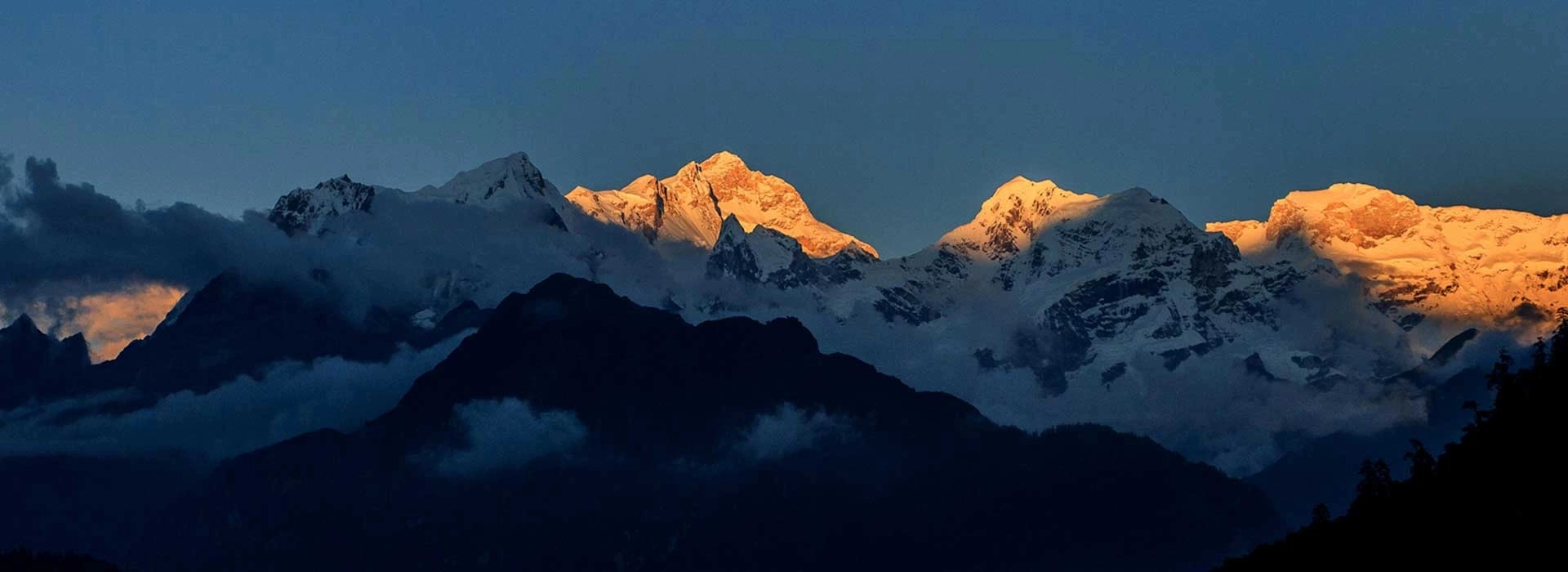
Ready for Adventure in the Himalayas
Trekking and hiking, peak climbing, tours and sightseeing, camping trips, well-being travels, add-on packages, featured trips.
Chosen itinerary by travelers with tweaks of expert, explore the Featured package for eternal memories.
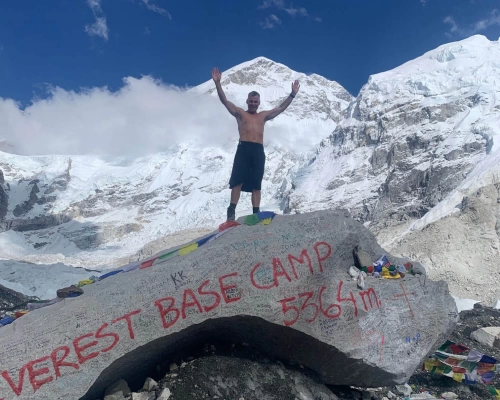
Everest Base Camp Trek
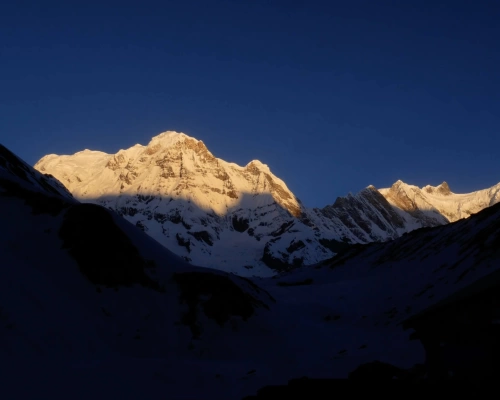
Annapurna Base Camp Trek
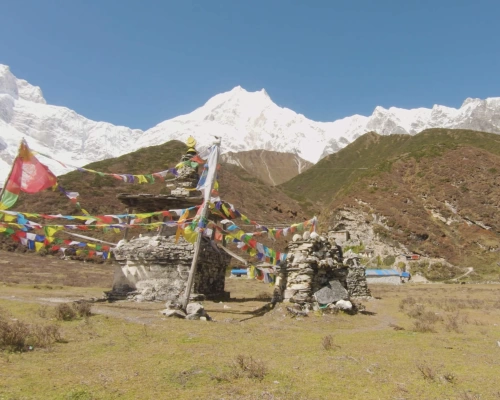
Manaslu Circuit Trek
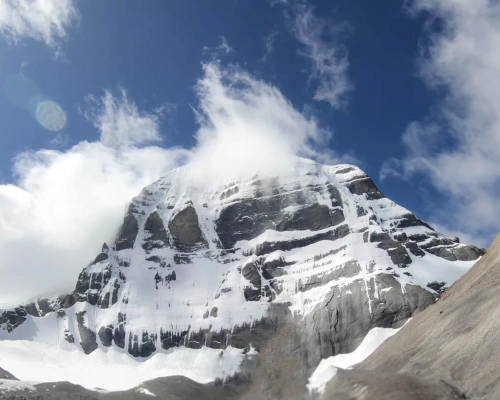
Kailash Overland Tour
Major trekking routes.
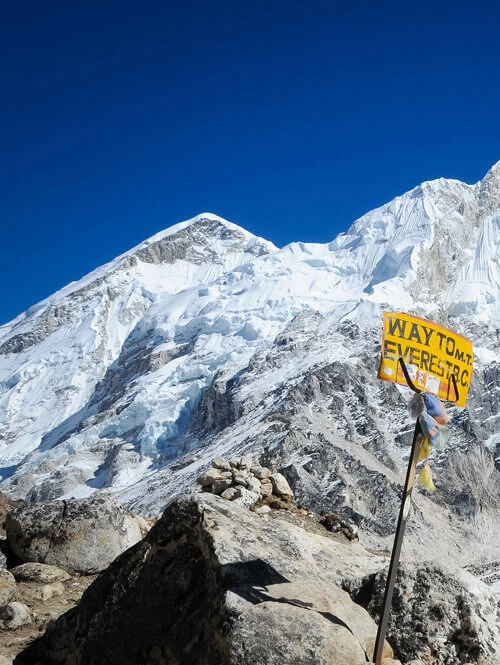
Everest Region
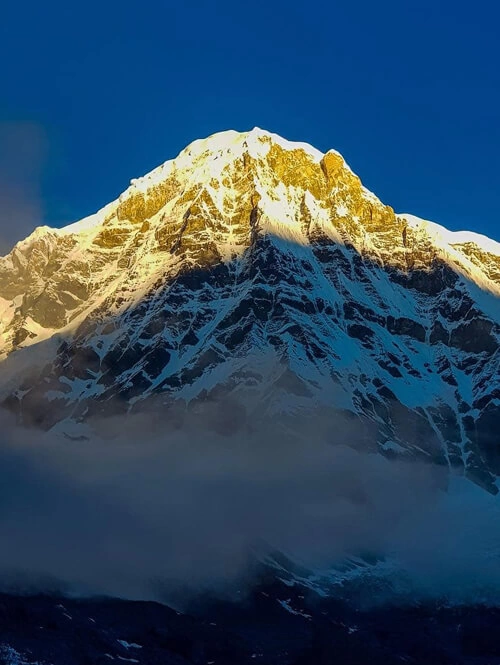
Annapurna Region
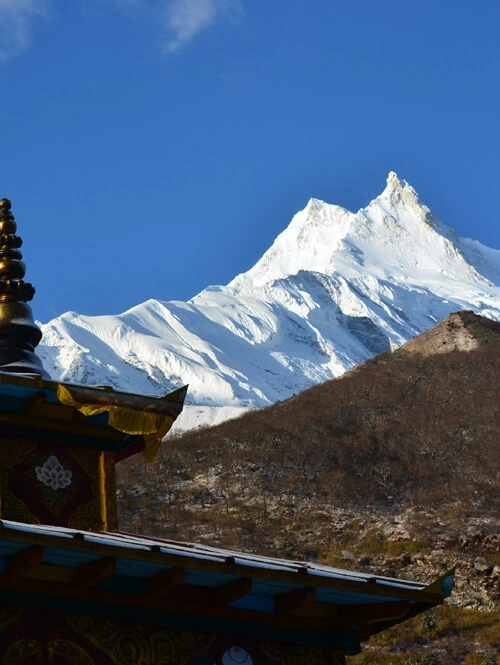
Manaslu Region
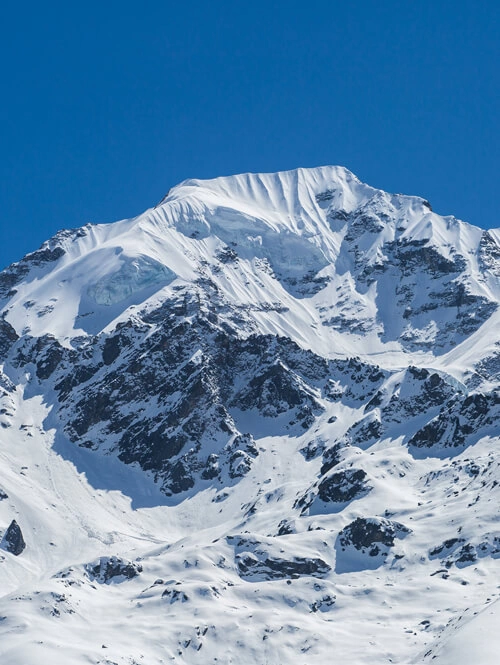
Langtang Region
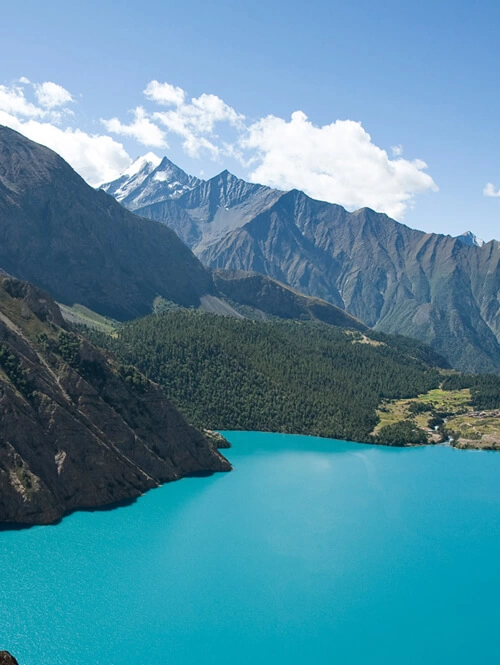
Off the Beaten
Our best sellers.
Select among Extensively sold packages. itineraries experienced by our clients and tested by our Teams.
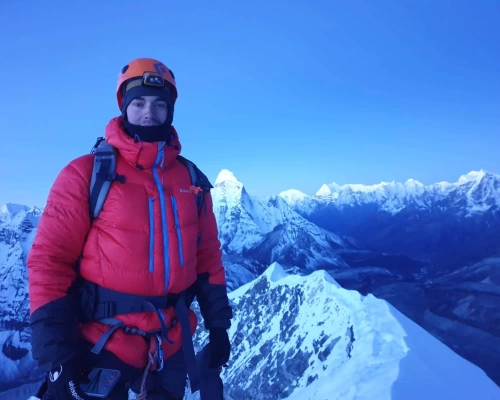
Island Peak Climbing

Everest Base Camp Trek with Gokyo Lakes
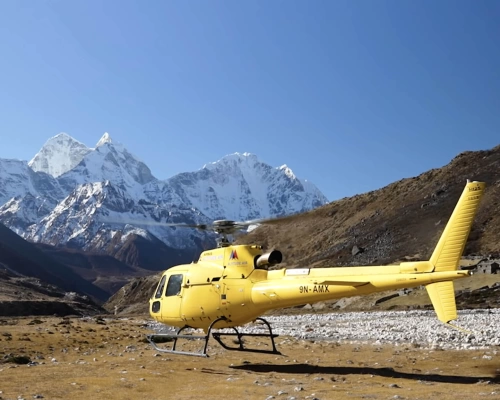
Everest Base Camp Trek with Helicopter Return
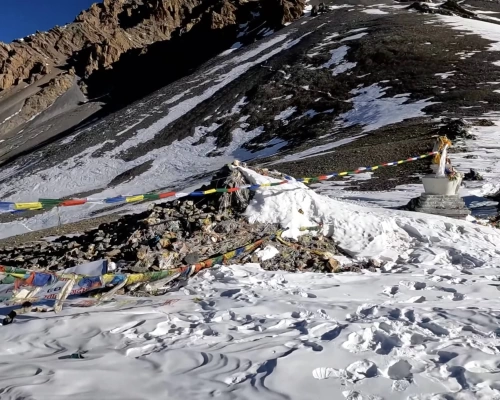
Annapurna Circuit Trek
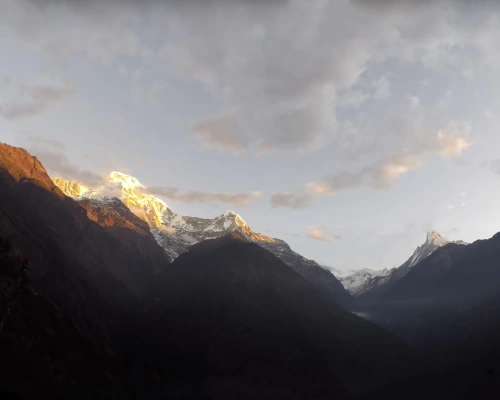
Annapurna Sanctuary Trek
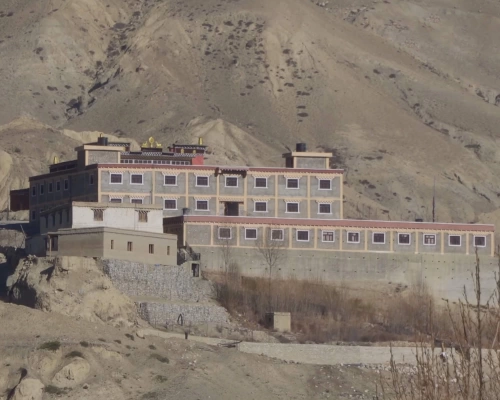
Upper Mustang Trek
Taking you to epic himalayan adventure.
Lets Trek Himalayas , with a team of professional experts who can assist you in overcoming trekking obstacles. We not only keep you safe on your travels, but we also provide you with a unique experience of holidays. Share the Goals, Trek the Himalayas!
- locally based professionals
- Freedom for your plan
- Small and flexible groups
- Unique Operated itinerary

Why Lets Trek Himalayas
Exclusively trained, trusted and tested local leaders and guides at your services.
Operated within a Small size with sufficient guidance to make your travel flexible.
Proudly proliferated to provide an optimum success rate within the industry.
What Our Clients Say

A trip to remember
Suman from Trek Himalayas was very helpful and professional. He was very friendly and very organized and made everything run smoothly. I went on the Everest base camp trek and the views are to die for. We stayed in these Tea Houses there were very nice and cosy, the food was great in the Tea Houses. I did receive a helicopter return from Gorekshep was breathtaking, to have the opportunity to see the views from the helicopter and to experience the whole adventure is something I will never forget. I would highly recommend Lets Treks Himalayas.
Experience during Three Passes Trek
Firstly, I was worried about the trek with my family, our experience during Everest Three Passes Trek was beyond the limit. Suman who was my Guide during the Trek was professional and he was dedicated to our wellness and satisfaction though the trek was difficult he encouraged us to go forward. Good Job and totally satisfied. Thank you Lets Trek Himalayas, Suman, and Sameer.

Great supportive trip
I was not sure if I would enjoy the trek initially because I had never done a foreign trek before. However as the trek went on, the team at Lets Trek Himalayas was very helpful in navigating and answering my questions. They always put the client's needs first and made sure my trek was 5 stars! Well done and thank you!

Mountains Calling
Had a great experience on Everest Base Camp Trek, and enjoyed the trip with full confidence because of the Team in the Himalayas. Suman, I must say he is a great leader and Sameer was super responsive
Dreams Do Come True
This dream of reaching the Everest base camp wouldn’t have been possible without the guidance and relentless support of the let’s trek Himalayas. From the first day, they provided me with all the guidance and made me realize that anything is possible if you have the backing of a professional team. Special thanks to Suman dai for not leaving any stone unturned for making me feel comfortable. I come from the beautiful island of Mauritius located in the Indian Ocean where the highest peak is 828 m and the coldest temperature is around 14 degrees. I came as a solo trekker and did not integrate any group but porter soman and Suman dai made sure that I complete the trek. Whenever I was tired or thought I could not go further they constantly motivated me. Every accommodation that let’s trek Himalayas booked was so comfortable and the food provided had a lot of varieties. I thank the team once again for making this trek enjoyable with moments of pure bliss.
Latest Blog Posts

Annapurna Acrylic Painting
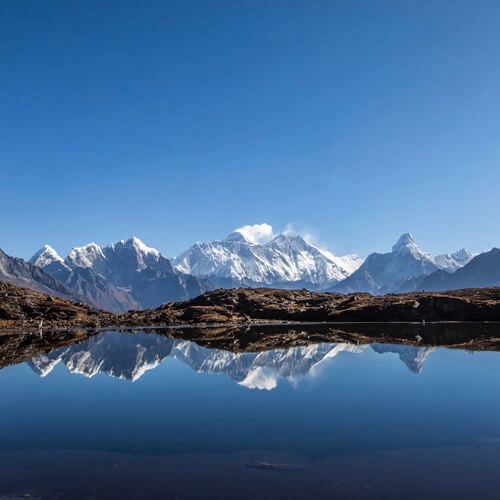
10 Things to do Before Escape Holidays
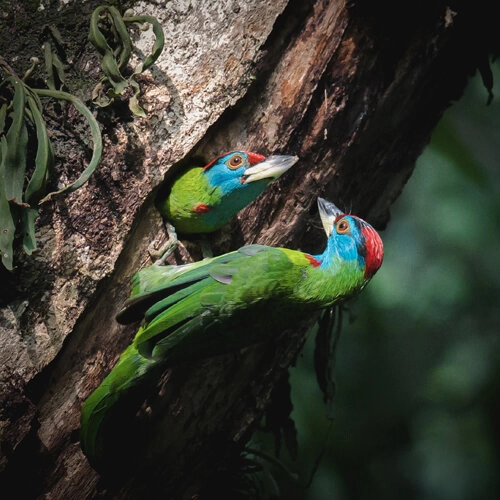
Ten Essentials for an Adventure Trip to Nepal
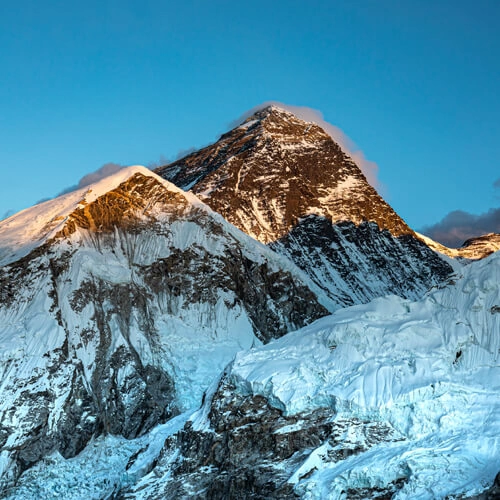
Amazing Mt. Everest View Tour
Send inquiry.
We use cookies to ensure that we give you the best experience on our website.
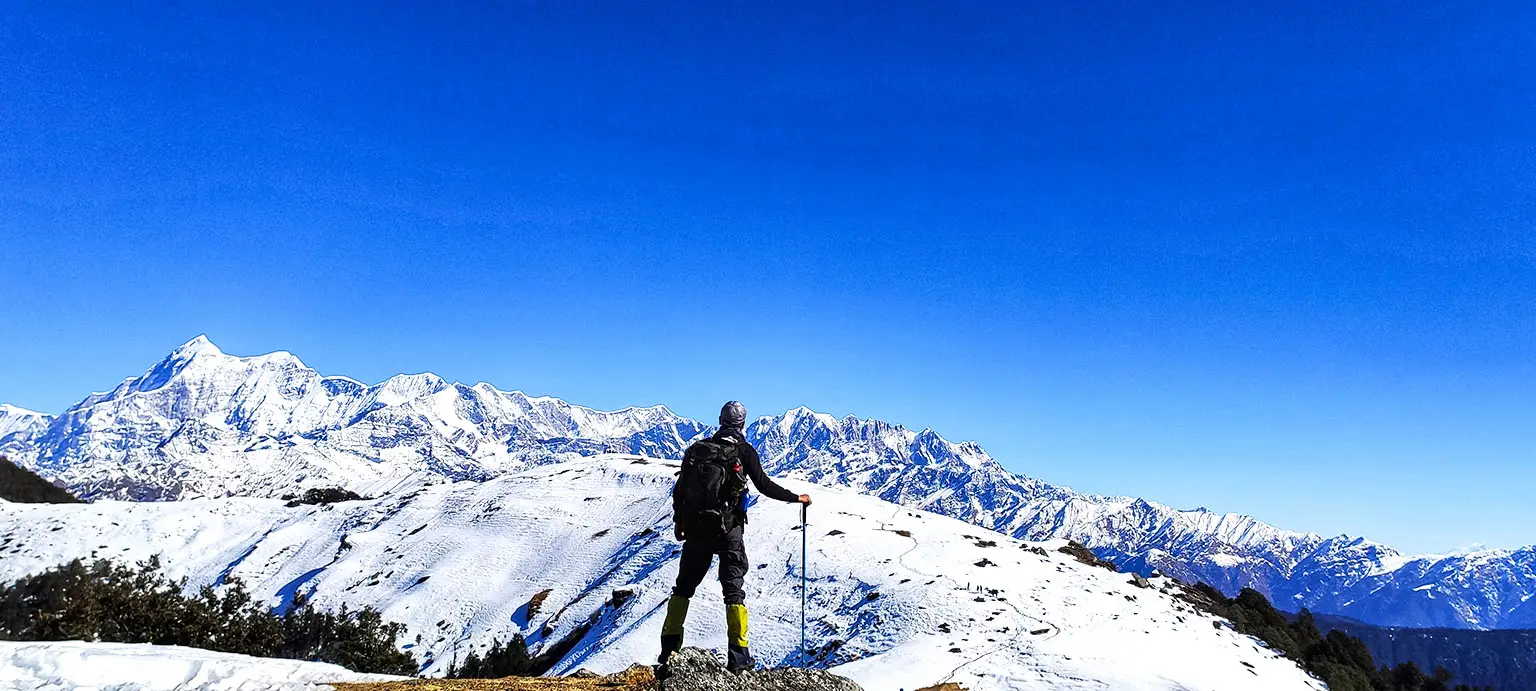
Brahmatal Trek
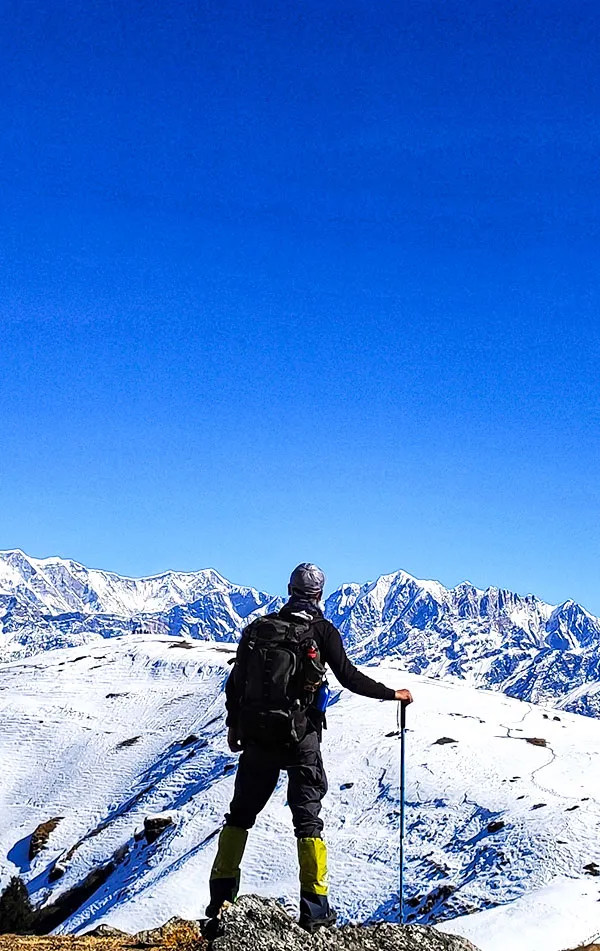
Uttarakhand |
Uttarakhand | India
Max Altitude
Trekking Km
Easy to Moderate
Help & Support
9500 /person $ /person.
- +5% GST (goods and services tax)
- Services Lohajung to Lohajung
Insurance 210
Insurance is Mandatory.
Non-Indian rates are slightly higher. Trek coordinator will provide balance payment link post-booking.
- Get insurance through us or elsewhere. If not through us, email for a refund after booking.
The cancellation policy will be implemented in accordance with the trek cancellation policy.
Transport 1600
Transportation Rishikesh to lohajung & retun is optional
Choose add-ons during booking. If missed, log in and add them later
Book transportation at least 10 days before the trek.
Offload 1200
Backpack offload is optional
Choose add-ons during booking. If missed, log in and add them later.
Book off-load at least 10 days before the trek.
For offline bookings at the base camp, a convenience fee of Rs. 1500 applies.
In the event that you choose to cancel your trek prior to the departure date, you will receive a full refund.
For more information. Please complete this form.
Help & Support
Trek Name: Brahmatal Trek
Adventure Type: Trekking
Base Camp: Lohajung
Season: Spring | Autumn | Winter |
Month: January | February | March | October | November | December |
Country: India
Altitude: 12250 Ft.
Grade: Easy to Moderate
Rail Head: Rishikesh
Stay: Guest house & Camping
Food: Meals while in trek & at Guest house (Veg & Eggs)
Location: Uttarakhand
Distance: 24 Km.
Trail Type: Circle trail | Camping in various locations, starting and ending at the same point.
AirPort: Jolly Grant Airport, which is 21 km away from Rishikesh
Why Brahmatal Is A Must-Do Trek?
- Panoramic vistas include Nanda Ghunti, Trishul, and Chaukhamba, providing a visual feast for nature enthusiasts and photographers.
- Brahmatal Trek in winter transforms the Himalayan landscape into a mesmerizing snow-covered wonderland.
- The frozen lake surrounded by snow-covered landscapes adds a touch of ethereal beauty to the entire trekking experience.
- Brahmatal Trek takes you through untouched alpine meadows blanketed in snow, providing a pristine and serene environment.
- Trekkers get to experience the untamed and challenging side of the Himalayas, making it a rewarding journey for those seeking excitement.
- The combination of challenging terrain, stunning landscapes, and the frozen lake creates memories that last a lifetime.
the region is blanketed in snow, offering a surreal and picturesque setting for the adventure.
The Brahmatal Trek in winter offers trekkers a unique and soul-stirring adventure through a snow-covered wonderland. It's a remarkable opportunity to witness the untamed beauty of the Himalayas while navigating its icy challenges. For those seeking an unforgettable winter trekking experience, Brahmatal is a must-consider destination.
The Brahmatal Lake
During winter, the Brahmatal Lake freezes over, creating a magical and reflective surface, surrounded by snow-covered landscapes.
Stunning Views
The trek offers panoramic vistas of some of the most iconic peaks in the Himalayas, including Nanda Ghunti, Trishul, and Chaukhamba.
- Who can Participate
- Important Links
- How to Reach
- Trek Essential
Who Can Participate
Age; 10 years +.
First timers can apply; previous trekking experience is more appreciated.
The climber must be fit and have sufficient stamina to cover 4 km of distance in 35 minutes without stress.
The climber should be able to carry a 10-12 kg backpack.
Pulse rate at rest must be in between (60 to 90 beats per minute)
Blood Pressure Reading must be in between (DIASTOLIC 70 – 90, SYSTOLIC 100 - 140 mm Hg)
Respiratory rate at rest must be in between (12 to 20 breaths per minute)
Should not have Liver and kidney issues
Should not have Diabetes Mellitus, Bronchial Asthma, Heart problems, Hypertension etc
No pacemaker implant
People with the Sinus issues, Epilepsy please contact to trek coordinator before booking the trek
If your BMI is not normal, Please contact our Trek coordinator before Trek booking.
Medical & Disclaimer Form (Mandatory Documents) Click here to download Medical & Disclaimer Form
- Government Employees can avail the benefit of Special Casual Leave (SCL) when you join us for a trekking expedition. As per the rules of the Pay Commission, Special Casual Leave can be availed for up to 30 days in a calendar year for trekking/mountaineering expeditions through a registered organization. Trek The Himalayas is a registered adventure tour operator by Indian Mountaineering Foundation (IMF) and Ministry Of Tourism (MOT)
- Trekkers have to apply for leave at least 20 days before trek departure date,
- This service is exclusive to Indian government employees and is applicable only for treks within India.
- Do mail at info@trekthehimalayas to apply and mention your booked trek date and trek name.
Junior trekkers (below 15 years) should have a company of parents/guardians.
Trekkers between 15 to 18 years can come solo with the disclaimer form signed by parent/guardian.
- Medical & Disclaimer Form (Mandatory Documents) Click here to download Medical & Disclaimer Form
Exercise For Easy to Moderate
Fitness Regime For:
Calculate Your Bmi
Your BMI value is
Congratulations, your body is in good conditions!
Rishikesh to Lohajung (Drive)
- Altitude: 2,300m/ 7,600ft
- Driving distance: 250km | 10hrs
- Pick-up place: TTH head office (Tapovan, Rishikesh) | Time: 6:00 am
- Transportation Amount is not included in the trek cost
- Local market and network available at Lohajung
- Stay: In a guesthouse
- Route: Rishikesh - Devpryag - Srinagar - Rudraprayag - Karanprayag - Dewal - Lohajung
The journey commences at Rishikesh. Our representatives will pick you up from Trek The Himalayas office in Rishikesh at 6:00 AM and we will drive to Lohajung, the base village for our trek. Lohajung is located in the Chamoli district of Uttarakhand and is 250 km away from Rishikesh. It takes about 10-11 hours to reach the village. Transportation to Lohajung will be arranged by Trek The Himalayas in Tata Sumo or a similar vehicle. Reaching Lohajung you will check into the guesthouse.
From Rishikesh to Lohajung, you will drive across mountain roads, and on a clear day, you can see the Garhwal Himalayas in the distance. Drive along with a tranquil setting with the River Ganga keeping you company. Along the way, you will come across three of the five major holy confluences of the country; Devprayag, Rudraprayag, and Karanprayag. Devprayag sees the confluence of the Alakananda and Bhagirathi Rivers. You can see distinct turquoise and teal colours of two rivers merging together. Passing Srinagar, you will come across Rudraprayag, the confluence of Mandakini and Alakananda River, and about 33 kms from Rudraprayag lies the third confluence on your route, Karanprayag - the confluence of Mandakini and Pindar River.
Lohajung brings you face to face with the majestic Nanda Ghunti peak. If we arrive before sunset, you can catch a beautiful sunset on the mountain peak, painting it in incredible hues. There’s interesting folklore revolving around the naming of the village. The locals say that Goddess Parvati had a ‘Jung’ (war in Hindi) with a demon named ‘Lohasur’ here and hence the naming of the village. Lohajung has a small market as well where you can purchase trek gear and essentials that might be valuable on your trek.
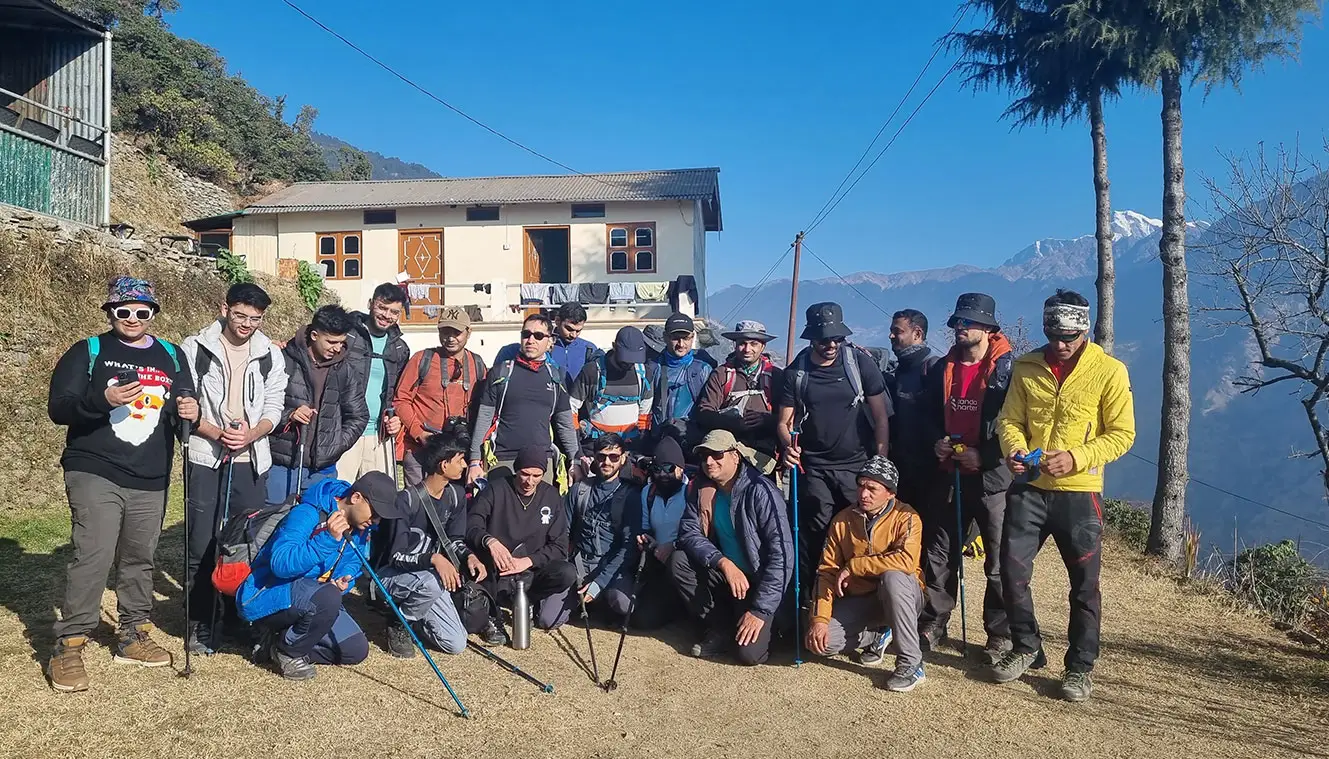
Lohajung is a high-altitude village so you can expect it to be cold, especially at night and it can also be rainy and foggy depending on the season. Pack appropriate clothing to help you adjust to the weather.
Lohajung to Gujreni
- Altitude: 2,800m/9,200ft | Altitude gain: 1,600ft
- Trek distance: 4.5km | 5hrs
- Difficulty: Moderate level of ascent through forest
- One third of the trek is through a village and the rest is through the forest
- Hot lunch at campsite
- Water source: Spring and man made water sources
- On the way view of Kali Valley, where Kali and Pindari Rivers meet
- Campsite is surrounded by Brown oak, Green oak and Rhododendrons
- Birds can also be seen: Asian barred owlet, Himalayan Woodpecker, Solitary snipe, Blue-fronted redstart,
- Stay: in tent (twin sharing)
The trek commences from Lohajung village. You will follow a well laid out manmade trail that will take you upwards towards Gujreni. As you ascend through the upper region of Lohajung, the trail leads you through a charming forest path, punctuated by a few scattered houses. A short trek will bring Mandoli village into view. Keep climbing higher and you will reach the confluence of the Kali and Pindari Rivers, you are now in the beautiful Kali Valley.
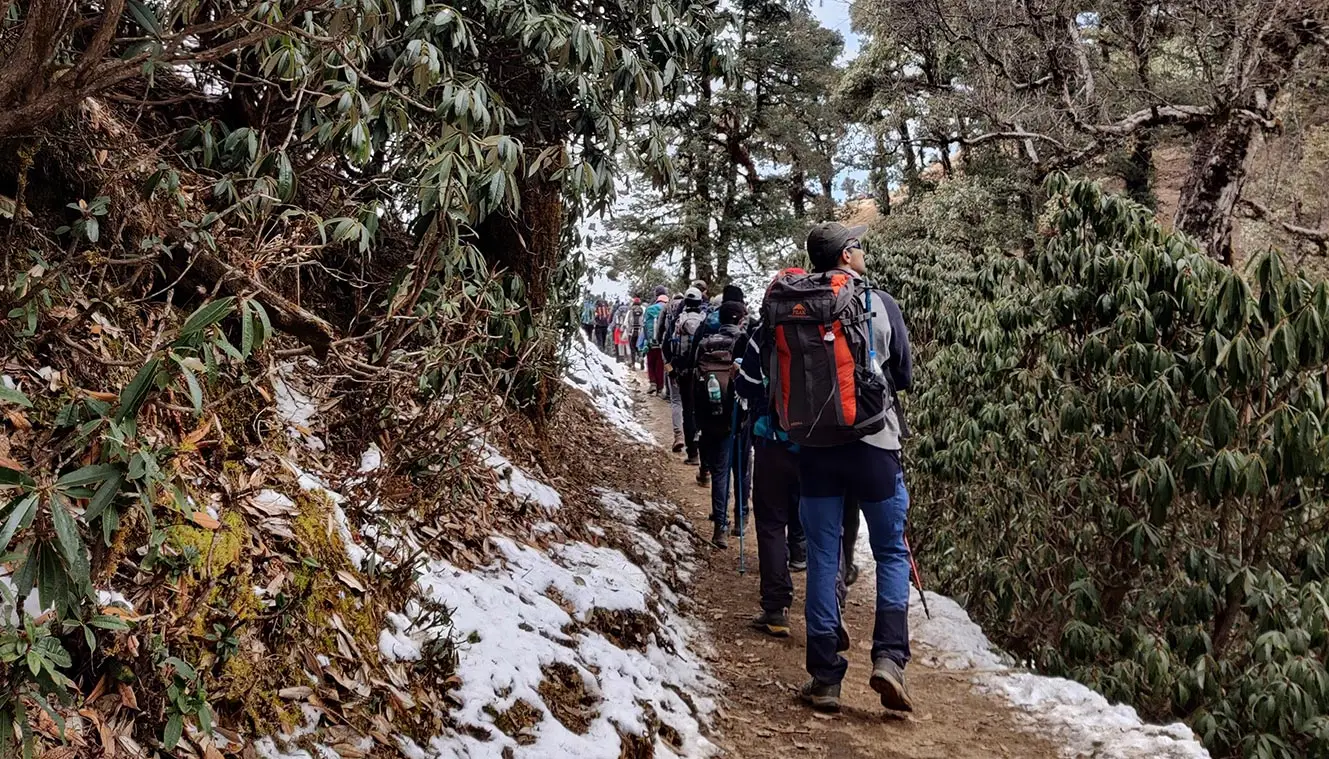
Keep following the water pipes, you'll pass a small cluster of homes. This patch is adorned with exquisite rhododendron trees that transform this part of the trail into a vibrant spectacle from February to March. After a couple of hours of trekking, a well-deserved rest awaits at Begum, a vantage point offering splendid views of Himalayan meadows. About 10 minutes into your walk from Begum, you will arrive at a stream crossing and after about an hour of trekking, you will arrive at the Gujreni stream, your campsite will be nearby the stream. The campsite is surrounded by a dense forest covered with green oak, brown oak, and rhododendron trees. This campsite is also a great spot for bird-watching, you may spot Himalayan avian species like the Himalayan Woodpecker, Asian barred owlet, blue-fronted redstart, and solitary snipe.
Brown Lake Bekaltal is just an hour and a half away. The brown colour of the lake is due to a phenomenon that indicates a high concentration of dissolved organic matter, often observed in lakes surrounded by forests or wetlands.
Gujreni To Tilandi
- Altitude: 3,200m/10,500ft | Altitude gain: 1,300ft
- Trek distance: 3km | 4hrs
- Difficulty: Initially steep then gradual ascent
- No water source on the way
- Visit Bekaltal on the way
- Panorama view of Mt Trishul and Mt Nanda Ghunti with their associated ranges from the campsite
- Best campsite for witnessing Sunset and night sky photography
- Stay: in a tent (twin sharing)
Today’s trek is comparatively shorter than the previous day. After a hearty breakfast, you will start your trek for the day. As you ascend, the trail leads you into the embrace of the Oak and Rhododendron forest with a ridge on your left. When you start walking on the ridge, you will get a stunning glimpse of the valley below as well as Bekaltal.
The meadows along the trek are a vivid interplay of colours. Halfway through your trek, the landscape becomes resplendent with the vibrant hues of Rhododendron trees dotting the region. As the journey progresses, the majestic Oak trees take over, adding an air of serenity to the path. After approximately an hour of trekking through this picturesque forest section, you'll notice the tree line gracefully receding, giving way to the vast meadows that beckon you forth.
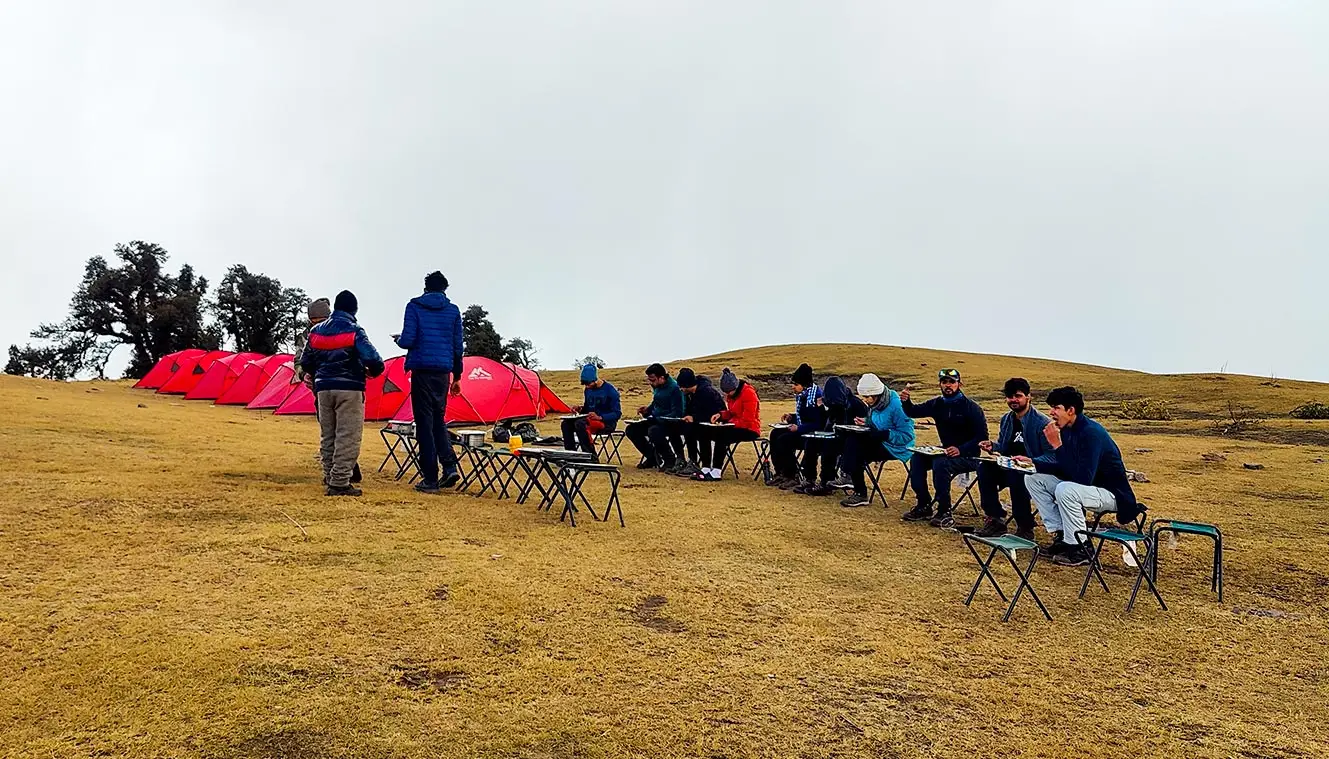
Stepping into the meadows, a sight of unparalleled beauty unfolds before your eyes. The majestic panorama of Mt Trishul and Mt Nanda Ghunti, accompanied by their associated mountain ranges, graces the horizon with their awe-inspiring presence. Natures grandeur is showcased in all its glory, leaving you mesmerized by the majestic peaks of the Himalayas. Our next campsite, Tilandi, is situated on the edge of the meadows. From the campsite, you can see the entire stretch from Lohajung to Wan below and across the valley, one can see the renowned meadows of the Roopkund trail, namely Ali and Bedni Bugyals.
Amidst the mighty Himalayas, this short yet enchanting day on the trail proves to be a captivating experience.
Tilandi To Brahmatal via Jhandi Top & Brahmatal Summit
- Altitude Brahmatal summit: 3,750m/12,250ft | Altitude gain: 1,750ft
- Altitude Jhandi top: 3,400m/11,150ft
- Altitude Brahmatal camp: 3,200m/10,500ft
- Trek distance: 6km | 8hrs
- Difficulty: Gradual ascent
- No water source. Carry at least 2 litres of water
- Hot lunch on the way
- Leve Tilandi campsite early in the morning to get the best views of Mountain ranges
- Do not miss witnessing the Sunrise from the campsite
- The First 180 degrees covers Chaukhamba, Mana, Mandir, Neelkanth, Nilgiri, Nanda Ghunti, Trishul, and Maitoli all the way to the Panchachuli Ranges and the rest are the Shivalik Himalayan Ranges
- Can map the entire Roopkund trail
- Visit Brahmatal lake while descending to the campsite from the summit
- Stay: in a tent (Twin sharing)
Today we will start our trek by walking on a ridge. The trail is mostly surrounded by Oak and Rhododendron trees. Walking amid the forest cover, we will make our way towards Jhandi Top. The closer we get to the vantage point, the more mountain panorama begins to open up and from the top, you will get to see an incredible panorama of Mt.Nanda Ghunti & Mt. Trishul and you can even map the entire Roopkund Trail.
Enjoy the beautiful views from the top for some time before we make our way to Brahmatal. From Jhandi T op, take the trail on the right and you will climb onto another ridge that will lead you to Brahmatal Top. This is the highest point on the trek at an altitude of 12,250 ft. The mountain views from this point are unparalleled. From here, we will descend to the alpine lake, Brahmatal. The first glimpse of the lake is simply awe-inspiring. Adjacent to the lake stands a small Nag Devta Mandir, adding to the ethereal atmosphere. If the lake is not frozen, youll be treated to a clear reflection of the night sky, a sight that leaves visitors spellbound.
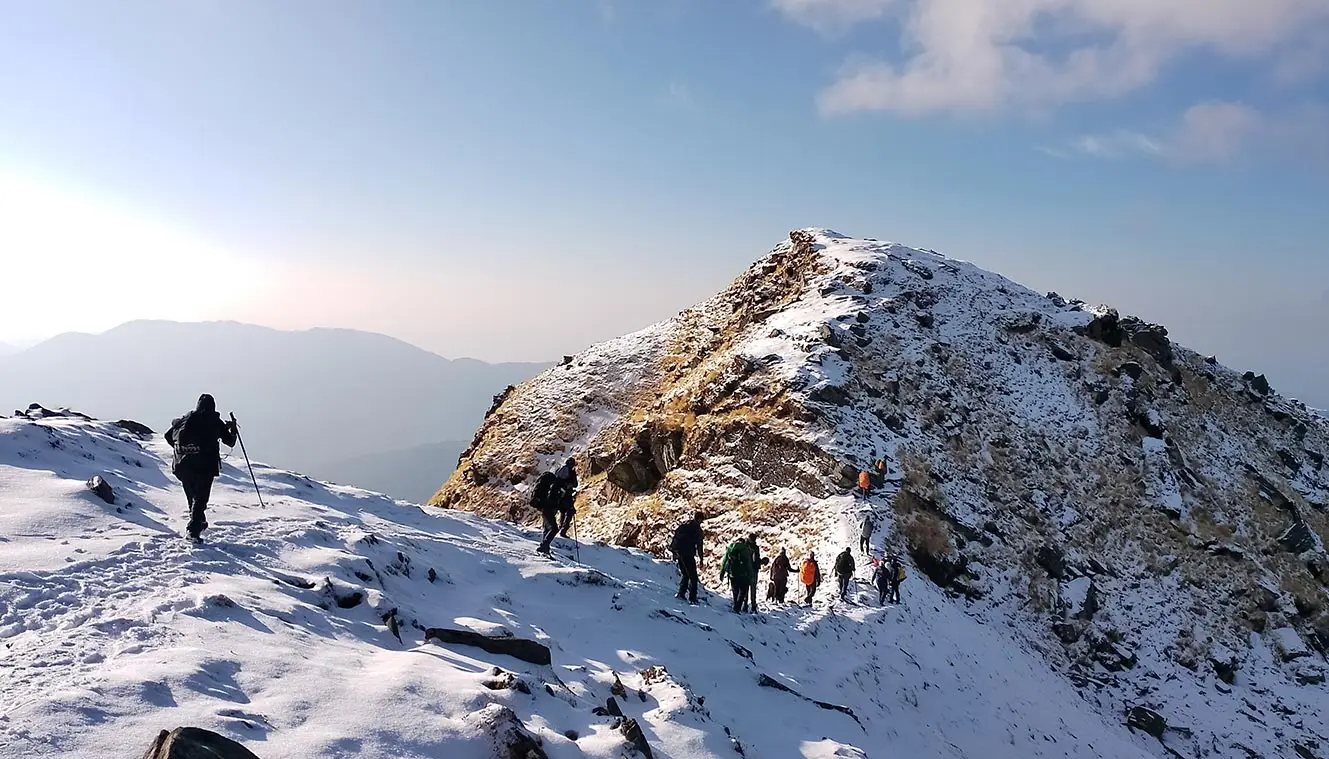
The Brahmatal campsite, situated at 12,250 ft, lies about 500 meters away from the lake on the left side of the slope. Dont miss the chance to witness the magical sunset from this campsite, a breathtaking moment that adds a perfect finishing touch to an unforgettable day on the trail.
Brahmatal To Lohajung
- Altitude: 2,300m/ 7,600ft | Altitude loss: 2,900ft
- Trek distance: 10km | 8hrs
- Difficulty: Moderate level of descent till Lohajung
- Ensure you carry sufficient water for the first half of the trail, as water sources become available only after that point
- Walk across Rhododendron and Oak forest
- Walking stick and knee cap will help a lot
- Packed lunch for the day
- Evening snakes and dinner at guesthouse
- Stay: in guesthouse
Start your descent to Lohajung after a hearty breakfast, following a trail that leads directly from the Brahmatal lake. As you gradually ascend to Jhandi Top, the sparse vegetation gives way to breathtaking mountain views that play a delightful game of hide and seek with you.
From the summit of Jhandi Top, take the left trail to begin your descent towards Lohajung. As you venture onwards, the majestic mountain views will gradually recede behind you. Approximately a kilometer into the descent, the treeline embraces you once more, surrounded by lush Oak trees. Soon, youll come across a serene clearing known as Khorurai, aptly named as Khoru translates to Oak. Take a well-deserved rest here, and if you wish to extend your trek for another day, this delightful spot could serve as a possible campsite.
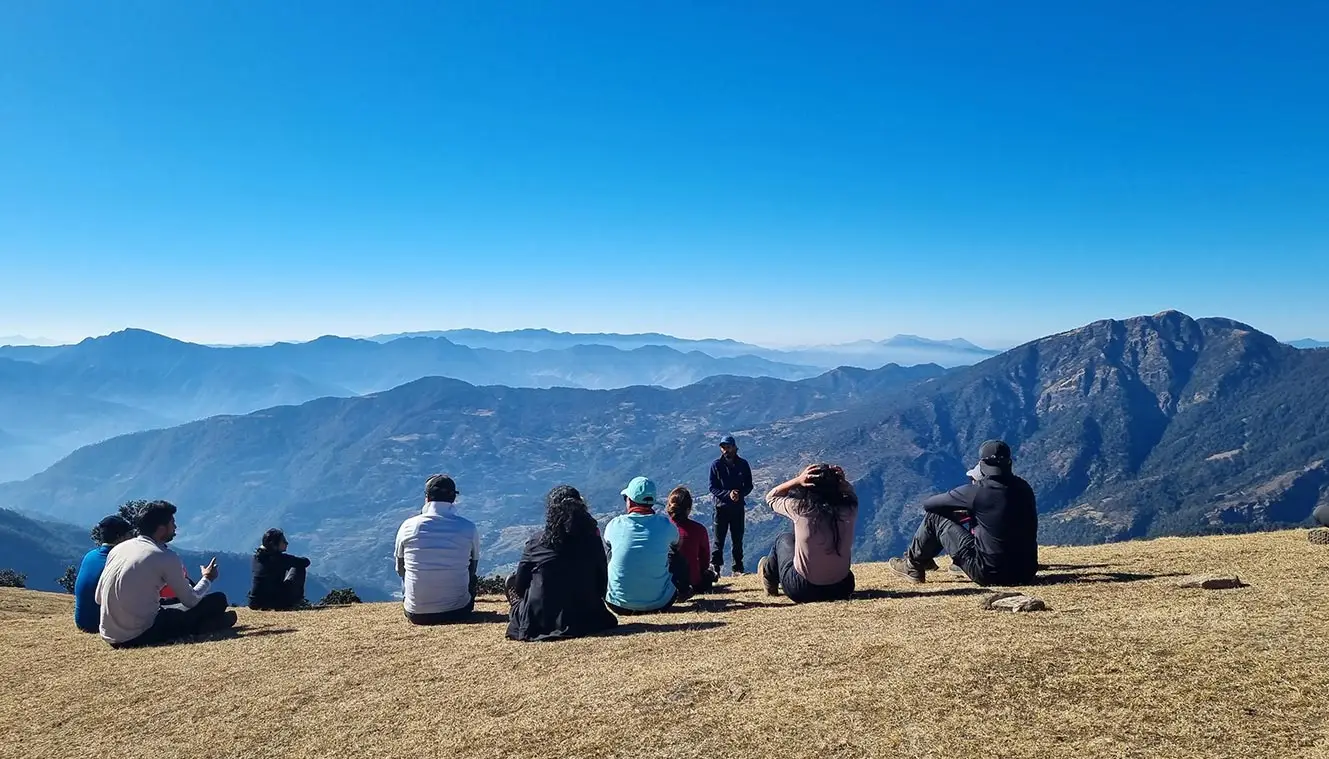
Another 1.3 kilometers of descent will lead you to join the main trail. Continue your journey through the enchanting Rhododendron forest before transitioning to the well-made, man-made trail. This trail serves as a vital connection between the mountain villages leading down to Lohajung.
After approximately an hour from your starting point, youll reach the Shepherd huts, known locally as chawni, where villagers and shepherds tend to their livestock. Continue on the well-laid man-made trail, following the path that connects these mountain villages to the picturesque destination of Lohajung. As you make your way through this enchanting landscape, cherish the memories of the magnificent mountains and valleys that graced your journey, adding to the magic of your unforgettable trekking adventure.
Returning To Rishikesh
- Distance: 250km |10hrs
- After morning tea travel towards to Rishikesh
- Breakfast and Lunch are not included in the trek cost.
- Reach Rishikesh by 5:00 pm
- For the safer side book on word journey after 7:00 pm
Today we will drop you off at Rishikesh marking the end of the incredible trip. Having your final tea with the TTH team, we will head out towards Rishikesh. Rishikesh is 210 km away from Lohajung and it approximately takes 10 hours to drive back. You will reach Rishikesh by 6:00 pm. The time taken to reach Rishikesh may vary depending on the traffic and road conditions. We will drive along the same mountain roads back to Rishikesh. From here on you can book your journey onwards or spend a few more days sightseeing around Rishikesh, Dehradun & Mussoorie. These are great tourist destinations and will not disappoint you.
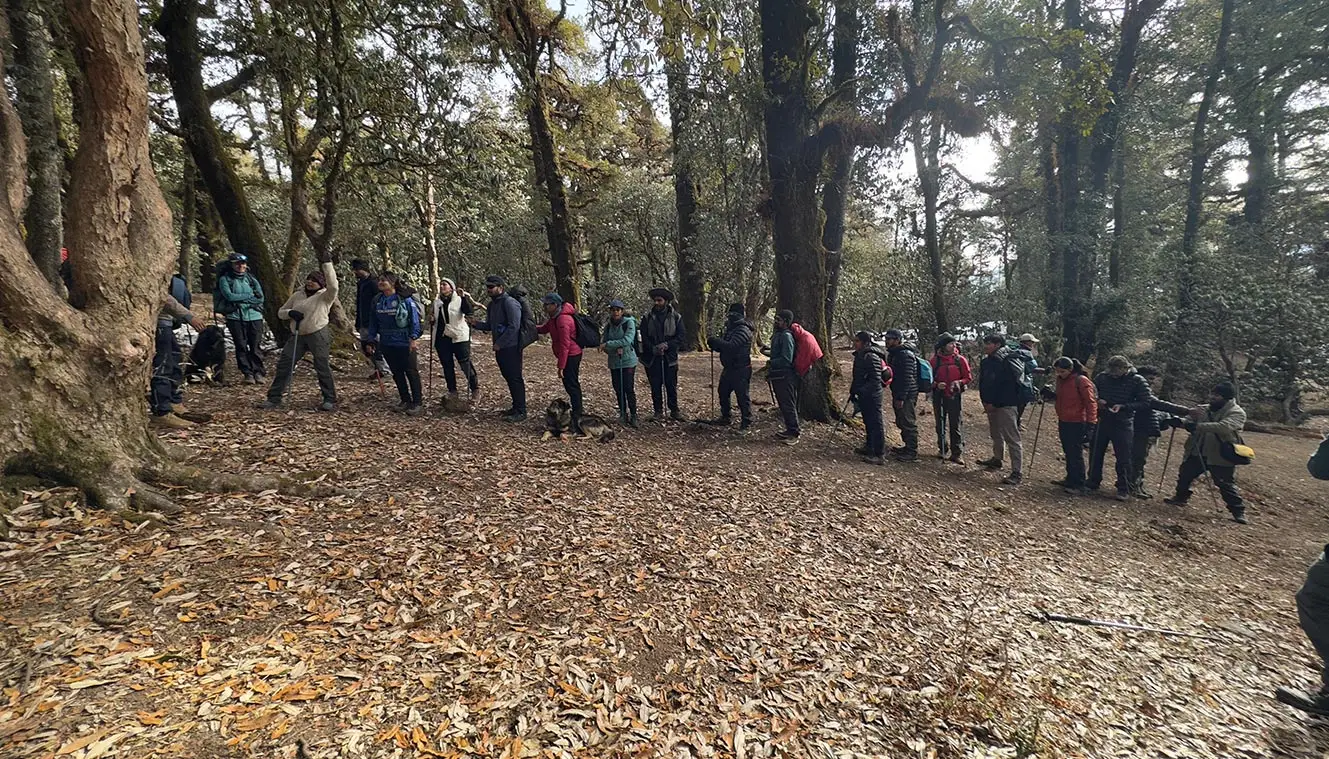
- Keep a buffer day in your travel plan
- If buffer day is not used in the travel then it can be used to Explore Rishikesh
- Read the article Things to do in Rishikesh
- Distance, Altitude, and Trekking hours are approximate and rounded off
- Keep the original and copy of ID proof handy
- Come one day early if planning to come by plane
Day-1: Rishikesh to Lohajung (Drive)
- Pick-up time: 6:00 am
Day-2: Lohajung to Gujreni
- Altitude: 2,800m/9,200ft.
- Trek distance: 4.5km | 5hrs.
Day-3: Gujreni To Tilandi
- Altitude: 3,200m/10,500ft
Day-4: Tilandi To Brahmatal via Jhandi Top & Brahmatal Summit
- Altitude Brahmatal summit: 3,750m/12,250ft
Day-5: Brahmatal To Lohajung
Day-6: returning to rishikesh.
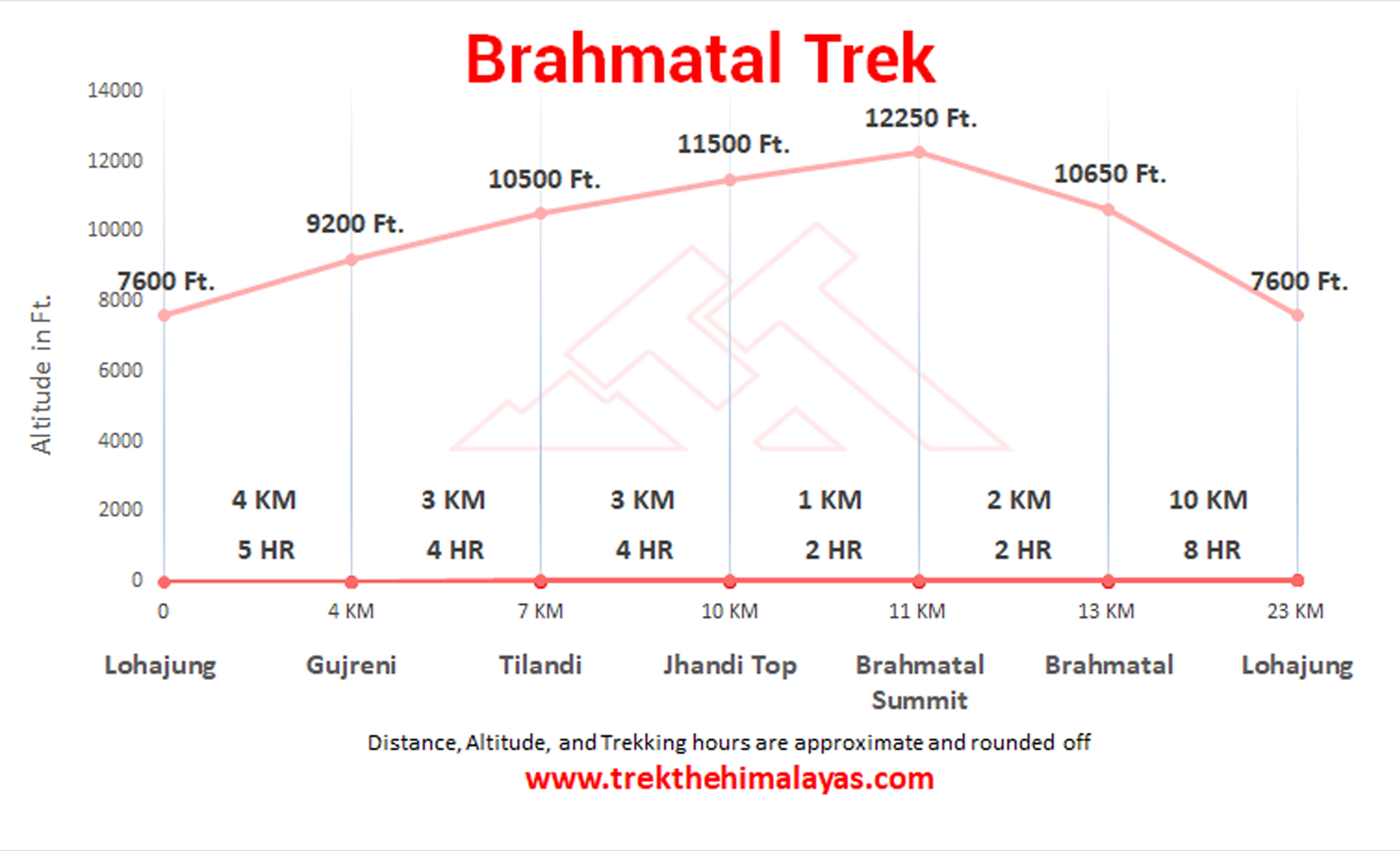
Medical & Disclaimer Form (Mandatory Documents) Click Here.
How To Reach
It is essential for everyone to arrive at Rishikesh (06:00 am)
Trek The Himalayas Head office, Tapovan Laxmanjhula, Landmark -Nainital Bank opposite Shiv Vilas Hotel
Once you have reached Rishikesh, TTH will manage the rest of your travel arrangements, if you have opted for TTH's pick-up service, you can select this option during the booking process by adding it as an add-on.
Options to reach Rishikesh
- Take overnight train/bus to Rishikesh.
- Take overnight train/bus to Haridwar and drive to Rishikesh (35 min drive with normal traffic).
We always recommend going for the govt. Buses over the private ones outside the bus station as based on the experience we have found that there are very high chances of delay involved with private buses. Also, govt. Buses are always more reliable. Whichever bus you choose, just make sure to reach Rishikesh at least by 05:30 am.
3. Board a flight to Dehradun airport (Jolly Grant Airport) (21 km, 30 min). If you're arriving by air, then come one day in advance.
If you prefer to travel independently to Base camp and don't want to take TTH's pick-up service, you can either take a government bus or book a private cab from Rishikesh. Your trek coordinator will provide guidance on how to arrange for the bus or cab booking.
Arrive in Rishikesh by 3:00 to 4:00 pm.
The designated drop-off point is Trek The Himalayas Office (Tapovan | Laxmanjhula).
Please consider planning your subsequent travel arrangements after 7:00 pm.
TTH offers comfortable transportation through Tempo Traveler, Bolero, or equivalent vehicles. If you wish to upgrade your mode of transportation, please contact your trek coordinator for further assistance.
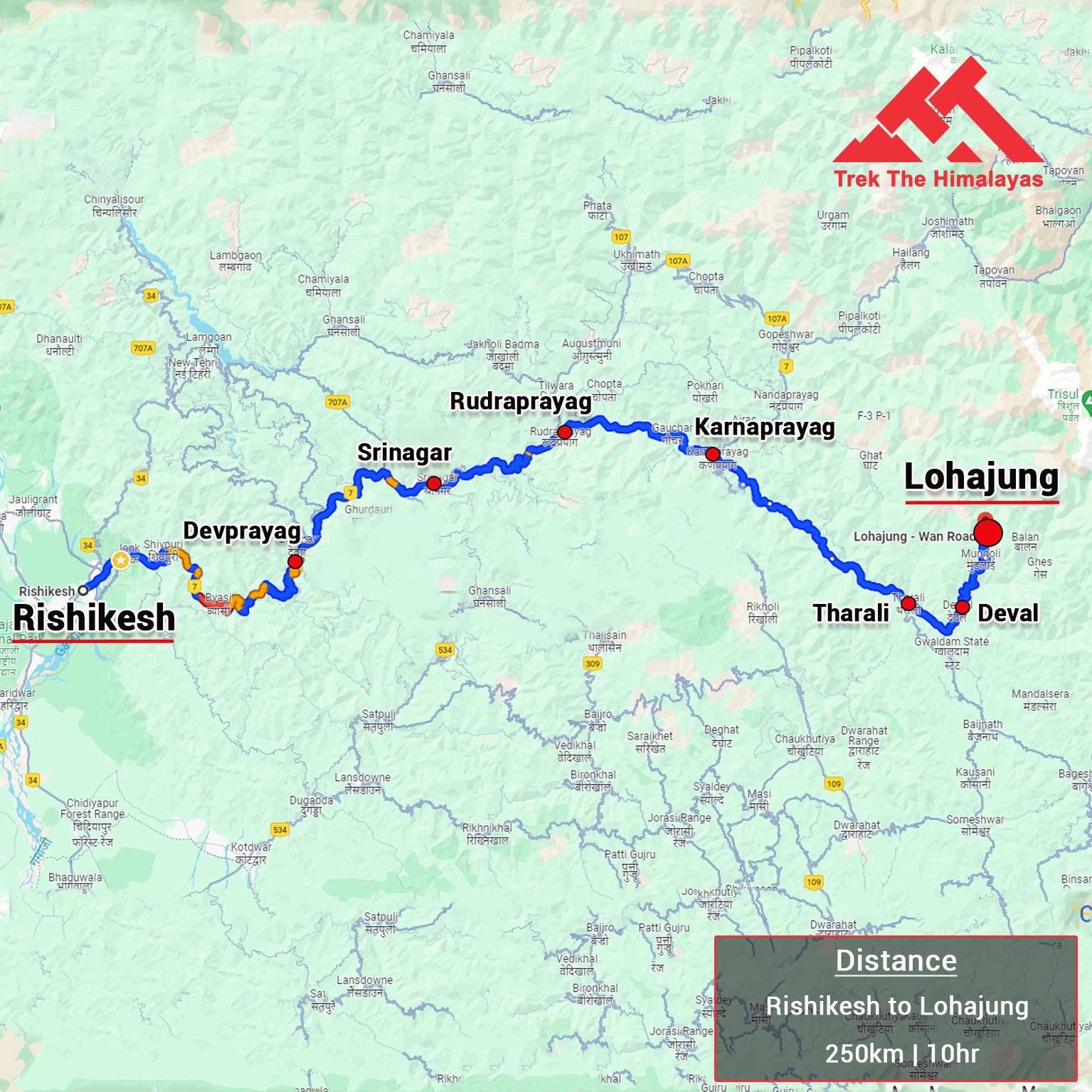
1. Accommodation (as per the itinerary):
- Guest houses on Day 1 & 5 at Lohajung.
- Camping during the trek (Day 2 to Day 4).
2. Meals (Veg + Egg):
- All meals are from Lohajung to Lohajung .
- Day 1 to Day 5 Dinner.
3. Support:
- 1 Versatile base camp manager: handles communication and deploys extra manpower in emergencies.
- 1 Mountaineering & First aid qualified professional expedition Leader.
- 1 Experienced high altitude chef.
- Local experienced guides (Number of guides depending on the group size).
- Enough support staff.
4. Trek equipment:
- Sleeping bag, Sleeping liners (if required), Mattress, Utensils.
- 3 men all season trekker tent (twin sharing), Kitchen & Dining tent, Toilet tent.
- Camping stool, Walkie talkie.
- Ropes, Helmet, Ice axe, Harness, Gaiters & Crampon (if required).
5. First aid:
- Medical kit, Stretcher, Oxygen cylinder, Blood pressure monitor, Oximeter, Stethoscope.
6. Transportation (as per the itinerary):
- Rishikesh to Lohajungi & return (If booked through TTH, available upon booking in add-ons).
7. Clock room service at base camp. 8. Mules/porters to carry the central luggage. 9. All necessary permits and entry fees, Upto the amount charged for Indian. 10. Services from Dehradun to Dehradun.
1. Insurance (Mandatory). 2. Food during the transit. 3. Any kind of personal expenses. 4. Mule or porter to carry personal luggage. 5. Emergency evacuation, hospitalization charge or etc. 6. Anything not specifically mentioned under the head Inclusion. 7. Transportation (Rishikesh to Lohajung and return, if not booked through TTH).
Things can be provided on demand and availability (participant has to pay extra for these things).
1- Satellite phone/set phone - is a type of mobile phone that connects via radio links via satellites orbiting the Earth instead of terrestrial cell sites like cellphones. Therefore, they can operate in most geographic locations on the Earth's surface.
2- Gamow/PAC HAPO Bag (Portable Hyperbaric Bag) - is a unique, portable hyperbaric chamber for the treatment of acute mountain sickness (AMS), also known as altitude sickness.
3- AEDs (Automated External Defibrillators) - are portable life-saving devices designed to treat people experiencing sudden cardiac arrest, a medical condition in which the heart stops beating suddenly and unexpectedly.
Special Offer
Make a single payment and trek the number of times you want.
If you book a trek with Trek The Himalayas and cannot complete it, or if you've successfully completed the trek and wish to do it again, you can repeat it multiple times at no additional cost.
Terms and conditions
- This offer is non-transferable.
- This offer is valid for Trek The Himalayas limited fixed departures.
- This offer is valid for 5 years from the date of booking.
- This offer is not valid if the participant has received a cash refund or voucher at the time of cancellation.
- Participants don’t have to pay for the trek cost but have to pay for transportation and trek permit costs.
To reserve a spot for a trek or adventure program, you can either utilize our online booking form or call us at the provided number. For your confirmation, a deposit must be wired, including the initial payment.
Cancellation terms:
Cancellations prior to 25 days from the start of the Trip
Refund options
- 5% deduction of trek fee
- 100% cash voucher for any trip till one year
- Transfer your trek (any trek, any date) to your friend
Cancellation between 24 days and 15 days to the start of the Trip
- 30% deduction of trek fee
- 100% cash voucher for same trip till one year
- 85% cash voucher for any trip till one year
- Transfer your trek (same trek, any date) to your friend
Cancellation between 14 days and 10 days to the start of the Trip
- 50% deduction of trek fee
- 80% cash voucher for same trip till one year
- 70% cash voucher for any trip till one year
- Book the same trek, in the same season, with any other batch
Cancellation less than 9 days to the start of the trek
- No cash refund
- 20% cash voucher for the same trip till one year
- 10% cash voucher for any trip till one year
- Transfer your trek (same trek, same date) to your friend
Note- If a booking is made using a voucher or discount code, the policies related to vouchers and discounts cannot be modified.
In the unlikely event that TTH cancels a trek prior to the scheduled departure date:
While it is extremely rare for TTH to cancel a trek, we understand that unforeseen circumstances or natural disasters may occasionally require us to do so before the scheduled departure. These circumstances could include continuous rain or snow, thunderstorms, snowstorms, landslides, floods, earthquakes, or any other natural calamity that poses a risk to the safety of our trekkers. Additionally, unforeseeable events such as local riots, curfews, pandemics, lockdowns, government orders, or any similar situations that compromise the safety of the trekking experience may also necessitate a cancellation.
In the event of such a cancellation, TTH will provide you with a voucher equivalent to the amount you paid for the trek. This voucher can be redeemed for any of our treks within the next year, allowing you to still enjoy an adventure with us at a later date.
The issuance of a voucher is not applicable in situations where you are required to descend from the trek for any reason. The trek leader may make the decision to send you down from the trek due to factors such as insufficient fitness level, symptoms of Acute Mountain Sickness (AMS), high blood pressure, exceeding the designated turn-around-time, health concerns, or if you are found smoking, drinking, or violating the rules set for the trek. In such cases, the provision of a voucher does not apply.
In the rare event that TTH shifts a trek:
We would like to emphasize that weather conditions in high-altitude areas are highly unpredictable and can undergo sudden changes at any time, irrespective of the day. Additionally, circumstances beyond our control, such as natural disasters, political unrest, pandemics, and lockdowns, may impact the feasibility of conducting a trek. In cases where we are unable to proceed with an event due to such circumstances that are beyond our direct control, we will make every effort to provide you with an alternative trek that is safer and more suitable.
In such situations, we will issue a voucher to offset the cost difference between the originally scheduled trek and the alternative trek. This voucher can be redeemed at any time within one year from the date of issue. Please note that a refund fee or reimbursement of the cost difference is not applicable in these cases.
- Change of trek batch is dependent on the availability of seats in the batch
- In case of transferring a trek to a friend, he/she should satisfy all the mandatory requirements put forward by TTH
- TTH holds the right to change/cancel the policies, without prior notice
- Cash refund is applicable only in case of bookings made without using any promotional offer code or vouchers
Cash Voucher Terms:
- This is a non-transferable voucher
- The voucher cannot be merged with any other offer of Trek The Himalayas
- The voucher is valid for Trek booked directly with Trek The Himalayas in India
- To avail the voucher please use your register phone number or e-mail id
- All the other Terms of booking a trek with Trek The Himalayas are applicable to the voucher
- Trek The Himalayas holds rights to add/remove any of the Terms and Conditions without prior notice
Itineraries are based on information available at the time of planning and are subject to change. "Trek The Himalayas" reserves the right to change expedition dates, people or itineraries as conditions warrant. If a trip must be delayed or the itinerary changed due to bad weather, road conditions, transportation delays, government intervention, airline schedules, sickness, or other contingency for which TTH or its agents cannot make provision, the cost of delays and/or other changes are the responsibility of the participant. TTH reserves the right to decline, or accept, any individual as a trip member for any reason whatsoever.
Trek Essentials
PDF Of Trek Essential Download
Frequently Asked Questions(FAQ)
How to register/create an account with tth.
To register with TTH, visit our website - www.trekthehimalayas.com and create your account. To create your account you will need to use your email address and fill in all the details, set your unique password and your account is ready to use.
How to book a trek?
- To book a trek with TTH, you first need to register with us and create an account.
- Choose the trek that you want to do and click on available dates.
- You will land at the login page, fill in the required details.
- Add Participants, choose add-on services click on the Pay now button, choose your preferred payment method, and make the payment. TTH accepts multiple payment options, including credit/debit cards, net banking, and UPI.
- You will receive a confirmation email from TTH with all the necessary details about the trek, including the meeting point, transportation, accommodation, and other important instructions.
Made a payment but did not receive any confirmation.
please send an email to us at [email protected] or reach out to the numbers provided in the Help and Support section of your Trek Page. We will ensure that your issue is promptly resolved.
How to book off-load luggage and transportation?
To book services such as off-load luggage and transportation, you can find them listed as add-ons. These additional services can be booked at the time of your initial booking. If you miss booking add-ons during the initial reservation, you can log in anytime and easily book 4 days before the departure date add-ons through the platform.
If I have booked the wrong trek or date, how can I make changes?
In such a situation, please log in to your account and transfer your trek or date to the desired one within 12 hours or drop us an email at [email protected] 10 days before the departure date of the trek. After the initial 12-hour period, any changes will be processed according to the cancellation policy.
I am a beginner and confused which trek to book.
We recommend visiting our "Suggest Me a Trek" page. By filling out the form, our experts will contact you with the best possible trek options based on your preferences and experience level. Alternatively, you can reach out to us via email at [email protected] or give us a call using the numbers provided on our website for personalized assistance and recommendations.
How is family trek different from regular trek?
Family treks differ from regular treks by focusing on ease of difficulty, offering shorter durations for younger participants, Kid-friendly and easily digestible foods, child-friendly activities, maintaining a higher guide ratio for diverse age groups, and implementing additional safety measures for families.
Ideal treks for children.
Family Trek with Kids recommendation Only Dayara Bugyal and Chopta Chandrashila Trek.
Minimum age for children to trek with TTH.
Minimum age for TTH treks is typically 7 years, though this may vary depending on the specific trek.
Can we take children to high altitudes with their guardian?
Yes, you can take a kids to a high-altitude trek with a parent. Discuss with a trek expert before booking a trek.
Can we send kids without Parents/guardian?
Medical & Disclaimer Form (Mandatory Documents) Click here to download medical and disclaimer form
How to prepare a child for a high altitude trek?
Physical Fitness: Ensure your child is physically fit. Engage them in regular exercise, outdoor activities, and hikes to build stamina and endurance. Hydration: Emphasize the importance of staying hydrated at high altitudes. Encourage your child to drink water regularly, even if they don't feel thirsty. Proper Nutrition: Provide a well-balanced diet with sufficient carbohydrates for energy and foods rich in iron to prevent altitude sickness. Adequate Sleep: Ensure your child gets enough sleep in the days leading up to the trek. Quality rest is crucial for altitude adaptation. Educate on Altitude Sickness: Teach your child about the symptoms of altitude sickness, such as headache, nausea, and dizziness. Encourage them to communicate any discomfort immediately. Appropriate Clothing and Gear: Dress your child in layers to adjust to changing temperatures. Ensure they have appropriate trekking gear, including sturdy footwear. Positive Mindset: Foster a positive mindset. Encourage your child, and let them know it's okay to take breaks when needed. Medical Check-Up: Schedule a medical check-up before the trek to ensure your child is fit for high-altitude activities. Consult with a healthcare professional about any potential health concerns.
Kind of food will be served during the trek for children.
TTH takes special care to provide wholesome and nutritious food for children on treks. Here are some of the foods that are typically served for children: Breakfast: For breakfast, TTH serves a variety of options like porridge, cornflakes, bread, butter, jam, honey, boiled eggs, omelettes, and pancakes. Children can choose from these options to fuel themselves for the day's trek. Lunch: For lunch, TTH serves lunch which includes rotis, vegetables, rice, dal, and salad. The rotis are usually made fresh on the trek and are a good source of carbohydrates. The dal and vegetables provide protein and other essential nutrients. Snacks: TTH provides healthy snacks like fresh fruits, dry fruits, energy bars, cookies, and biscuits to keep the children energized throughout the day. Dinner: For dinner, TTH serves a hot and wholesome meal which includes soup, rice, dal, vegetables, and a non-vegetarian dish (if requested in advance). Children can also choose from a variety of desserts like custard, jelly, and fruit salad. Dietary requirements: If a child has any special dietary requirements, TTH can cater to those needs as well. For example, if a child is lactose intolerant or allergic to nuts, the kitchen staff can make arrangements to accommodate those requirements.
How to choose the right trek?
Choosing the right trek for a beginner can be a bit overwhelming as there are many factors to consider such as distance, elevation gain, terrain difficulty, weather, and time of year. Here are some tips that can help you choose the right trek for a beginner:
1. Determine fitness level: Assess the fitness level of the beginner to understand their physical capabilities. This will help you select a trek that is challenging but not too difficult.
2. Choose a well-traveled trail: A well-traveled trail will have more amenities such as signposts, water stations, and shelter. It is also safer as there will be other hikers on the trail.
3. Consider the length of the trek: For beginners, it is recommended to start with a shorter trek that can be completed in a day or two. This will help them get acclimatized to trekking and build their confidence.
4. Look for gradual elevation gain: Choose a trek with a gradual elevation gain rather than steep ascents. This will make the trek easier and more enjoyable.
5. Check the weather: Check the weather forecast before selecting a trek. Avoid treks during the monsoon season or winter when the trails can be slippery or dangerous.
6. Research the trail: Read about the trail to get an idea of the terrain, altitude, and difficulty level. This will help you select a trek that is suitable for the beginner.
7. Consult with an expert: If you are unsure about which trek to choose, consult our trek expert Mr. Nitin (+91 70600 59773) between 10 AM to 6 PM (Tuesday - Friday). Mr. Nitin will provide you valuable advice and guidance.
Overall, it is important to choose a trek that is enjoyable, challenging but not too difficult, and suitable for the beginner's fitness level and experience.
Can a beginner choose a tough trek?
It is not recommended for a beginner to choose a difficult Himalayan trek. Trekking in the Himalayas can be physically and mentally challenging, especially if you are not used to the high altitude, steep slopes, and rugged terrain. Choosing a difficult trek without the proper experience, fitness level, and preparation can be dangerous and put you at risk of altitude sickness, injury, and other hazards.
If you are a beginner, it is recommended to start with an easier trek and gradually build up your skills and experience. This will help you understand the challenges of trekking in the Himalayas, and also prepare you physically and mentally for a more difficult trek in the future. It is also important to choose a trek that matches your fitness level, experience, and interest.
What is the age limit for a beginner trekker?
There is no specific age limit for a beginner trekker. However, it is important to consider your physical fitness, health condition, and personal interests before embarking on a trek. Trekking in the Himalayas can be physically and mentally demanding, and requires a certain level of physical fitness and endurance.
If you have any pre-existing medical conditions or are above a certain age, it is recommended to consult with a doctor before embarking on a trek. It is also important to listen to your body and take breaks as needed during the trek to prevent exhaustion or injury.
If I am solo, can I join the trek in a group?
Yes, you can join the trek. We have fixed departure groups where you can simply book your trek and we will take care of curating a group.
How does my family get updated about my Trek?
Before you start the trek, it is recommended that you make all the necessary phone calls as during the trek you may or may not receive network coverage, once you come back to the Base Camp, you can reconnect with your family via phone once again. You can share your trek coordinator contact detail with your family members to get the latest updates about your trek batch.
What food can I expect?
At TTH, we provide wholesome and nutritious meals during the trek. The food is vegetarian and includes a variety of dishes such as rice, dal, vegetables, chapati, paratha, pasta, noodles, and soup. We also offer snacks such as biscuits, and salty, and dry fruits during the trek. Special dietary requirements such as vegan, gluten-free, or Jain food can also be arranged if informed in advance.
I am allergic to some foods.
If you are allergic to some foods, you need to let us know in advance so that we can make arrangements accordingly.
How safe is trekking with TTH?
TTH is a trekking company that prioritizes the safety of all its participants, including women trekkers. They have a comprehensive safety system in place, which includes a dedicated team of experienced and trained trek leaders and support staff who are equipped to handle emergency situations and provide first aid.
TTH also takes specific measures to ensure the safety and comfort of women trekkers. They have a separate tent accommodation for women trekkers, female trek leaders, and support staff. They also provide separate toilet facilities for women and encourage a safe and respectful environment for all trekkers.
Moreover, TTH has a strict policy against any kind of harassment and has a zero-tolerance policy towards such incidents. They have a designated Internal Complaints Committee (ICC) to investigate and address any complaints related to harassment or misconduct. Overall, TTH has a good reputation for safety and responsible trekking practices, and women can feel comfortable and safe while trekking with them.
How TTH will manage if I am the only woman in the group?
In case you are the only women in the group, we provide a single sleeping arrangement. Also, during the trek, the trek leader will always remain by your side to provide optimum safety and reassurance.
How can I know that other women are in the batch?
You can reach out to the trek coordinator to inquire about the number of female trekkers and their respective states who have booked the trek. Please note that the trek coordinator cannot disclose personal details of any trekker. Once you've confirmed your booking, a WhatsApp Group will be created for all the trekkers in your batch. This allows you to connect with fellow trekkers before the trek begins.
Can I know in advance, which trek is led by a women Trek Leader?
While many of our treks are led by female trek leaders, however, it is not possible to know which trek leader is assigned to which group. But nonetheless, whether the trek leader is male or female you can be completely assured of your safety and security with us.
Can I trek with periods? If yes, then where can I dispose of the sanitary pad?
Yes, it is possible to trek with periods. However, it is important to take some extra precautions and preparations to ensure a comfortable and safe trekking experience.
Here are some tips that can help you trek during your period:
1. Use menstrual hygiene products that you are comfortable with, such as tampons, pads, or menstrual cups. It is recommended to carry enough supplies for the entire duration of the trek.
2. Pack wet wipes, hand sanitizer, and plastic bags to dispose of used hygiene products.
3. Wear comfortable and breathable clothing that allows for easy movement and reduces friction. Avoid wearing tight or restrictive clothing that can cause discomfort.
4. Carry pain relief medication, such as ibuprofen or acetaminophen, in case of menstrual cramps.
5. Stay hydrated and maintain a balanced diet to support your energy levels and overall health.
6. Take breaks as needed and listen to your body. If you feel uncomfortable or experience any unusual symptoms, seek medical attention immediately.
It is also recommended to consult with a doctor before going on a trek during your period, especially if you have a pre-existing medical condition or are taking medication. By taking necessary precautions and being prepared, you can have a safe and comfortable trekking experience even during your period.
We provide proper disposal facilities for sanitary pad disposal during the trek.
How will the accommodation be during the trek?
We offer three person tents with twin-sharing for optimum comfort. A woman trekker will share a tent with another woman trekker and if you are the only woman in the group, you will be given a single accommodation for your comfort and privacy.
Are trek poles, Jackets and other equipment available for rent from Trek The Himalayas?
Yes, we do provide gears on rent. You can book it using you TTH account directly.
Who will be with us on the trek from Trek The Himalayas?
Mountaineering qualified Experienced and first aid certified Trek Leader, First Aid Certify local guide, Cook, helpers and supporting staff.
Who can not join the trek?
People suffering from Bronchitis, Asthma, High blood pressure, Epilepsy (got faints), TB , Heart problem or on higher BMI side are strictly not allowed to go on any Himalayan trek. Apart from this if you had any medical history, please let us know.
When it gets really cold can I consume alcohol?
No. Alcohol and smocking isn’t allowed while on trek. It is totally misconception that it will keep you warm. Your body need to acclimatize properly and for that eat properly and drink enough water; these things will keep you warm.
What type of toilet facility is TTH providing at the trek?
Toilet tents provide a convenient solution for answering nature's call in the great outdoors. Dry toilets, in particular, offer a highly sanitary approach. By digging a pit and utilizing mud and a shovel, you can easily cover up your waste. This method ensures cleanliness and hygiene while camping or exploring in the forest.
Remember to pack essential toiletries to complete your outdoor bathroom kit and maintain proper personal hygiene during your adventures. With these practices in place, you can enjoy nature while also respecting it.
How do I manage the negative temperatures on the trek at higher camps? Do I need special jackets?
Layer Up From Head To Toe Eat Full Meals, never sleep empty stomach You can keep warmee (if you’re more susceptible to cold). Use sleeping bag in right way and don’t leave free space in sleeping bag.
For upper body – Thermal layer – T-shirt (full-sleeves) – Fleece T-shirt (for extreme colds) – Fleece layer – Thick Jacket/Down Jacket – Waterproof or Windproof layer (outermost layer, when it is snowing or raining) - For Lower Body – Thermal layer – Hiking pants (normal) or Winter hiking pants
Based on how warm you feel you can skip any of the above layers. Your outer later should be windproof since it is windy at high altitude. The idea behind layering is that the more insulation you have the less cold you feel, and instead of wearing a very thick jacket if you wear multiple layers, your body will be better insulated against the cold.
Do you provide crampon/micro spikes and gaiters?
Yes, we provide micro spikes and gaiters, if required.
What documents need to carry on trek?
Mandatory documents: 2 xerox of ID having address (addhar card/driving license), 2 Passport size photographs, hard copy Medical form signed & sealed by doctor, disclaimer form sign by trekker and high altitude insurance.
If we come prior the trek date, Do you provide accommodation?
No. We don’t but we can suggest you good hotel/Stay nearby pick up location.
Do we get enough water for drinking?
Yes, trekker must carry 2 water bottles 1 litre each so they can refill it at campsite for drinking and keep themselves hydrate.
What kind of shoes we should buy for the trek?
You should buy shoes which has these three features –Good grip, Ankle Support and additional water resistant layers. Generally, we advise Quechua Trek 100, MH 500 and MH 100.
How do we get back after the trek?
Your return transport is also included in trek fee if you're opting for service Dehradun to Dehradun ; we use Tempo Traveller/ Tata Sumo/Max/Boloero kind of vehicle.
What happens if some members of the team need to turn back before the summit?
No one is forced to go on. There is always enough staff to split the party according to need and regroup later at the camp. Most people have no trouble reaching the highest campsite. If some members decide not to climb the final distance they can wait for the climbers to come back down the same way or take a lateral path to the descent route.
What kind of help is available in case of emergency?
We always have a first aid kit close at hand. Serious injuries are rare. Porters will assist injured climbers to the base of the mountain and onward to a clinic or hospital. Kilimanjaro International Airport is very near Marangu Gate if evacuation to the US or Europe is advisable.
What kind of accommodation we’ll get in this trek?
During the trek in the guest house, it will be on triple/quad sharing bases male and females separate and during camping, we provide twin sharing tents with all-season tents. We will provide sleeping, tent, mattress. It is among the central equipment.
How many trekkers do you take in a group?
To run a batch we need 7 people and maximum batch size 25 people.
What is the age limit?
We allow minimum 7 years kid in this trek and maximum depend on trekker’s fitness.
Is there an option to offload my backpack on this trek?
Yes, Offloading facility is available. You should book it in advance and pay us Rs.1200/- in total or book it after reaching there, and for that you need to pay Rs.1800/- in total. Bag weight should not more than 11 kgs.
What kind of shoes we should buy for Brahmatal trek?
You should buy shoes which has these three features –Good grip, Ankle Support and additional water resistant layers. Generally, we advise Quechua Trek 100, MH 500 and MH 100
Is Brahmatal trek advisable for beginners?
The Brahmatal trek is ideal for both beginners and experienced trekkers. The Brahmatal trek can get a bit rigorous for first-timers. Therefore, it is recommended to the first timers to maintain good physical stamina and read extensively. Any experienced trekker would love to go on this trek for the love of its views and trekking.
How to reach at pick up location?
At first you have to reach Rishikesh, after that TTH will take care of your further travel plan.
Our Pick-up place
1. Take overnight train/bus to Rishikesh.
2. Take overnight train/bus to Haridwar and drive to Rishikesh (35 min drive with normal traffic).
We always recommend to go for the govt. Buses over the private ones outside the bus station as based on the experience we have found that there are very high chances of delay involved with private buses. Also, govt. Buses are always more reliable. Whichever bus you choose, just make sure to reach Rishikesh at least by 05:30 am positively.
3. Take the flight to Dehradun airport (Jolly Grant Airport) and drive to Rishikesh (20 km, 30 min), if coming by flight then come one day early.
- Date and Price
Rent A Gear
Trek Articles
Quick Links
Trekking & Hiking
Mountaineering
Multi Sports
Himalayan Pilgrimage
Website Privacy
Terms & Condition
Contact Info
Get in touch with us. E-mail us Monday-Saturday (10 AM to 6 PM)
Address: Trek The Himalayas, Kaintura Plaza, Badrinath Road Tapovan, Rishikesh - 249201 Uttarakhand
Phone: 8191004846
Email: [email protected]
2010 Trek The Himalayas. All rights reserved

IMAGES
COMMENTS
The Mera Peak Expedition in Nepal is a hidden gem, offering a thrilling ascent to its summit at 6,476 meters (21,247 feet). Located in the Khumbu region, this trekking peak provides a challenging yet accessible opportunity for mountaineers. The journey begins with a scenic flight to Lukla, followed by a trek through picturesque Sherpa villages ...
Know Us Better. We are Trek The Himalayas, India's leading Himalayan trekking company founded in 2010. With over a decade of experience we expertise in trek leading, mountaineering expeditions, cycling tours and other adventure activities. We organise trekking and peak climbing expeditions in Jammu & Kashmir, Himachal Pradesh, Uttarakhand and ...
Nepal lies almost in the middle of the Himalaya and while it's a small country it hosts 8 of 14 of all the world's mountains over 8000m. #1: Everest Base Camp. This has to be our all time favorite trek in the Himalayas. Great views of Everest, a good trail, wonderful tea houses to stay in and almost continuous views of some of the tallest ...
By Gautam Singh. 2023-12-28. H ere are the 22 best Himalayan treks to do this year. Although it was not easy to pick the best Himalayan treks as every trek is beautiful in its own way, we have put together the best Himalayan treks that we think you should not miss! Beginner-friendly treks like Dayara Bugyal, Brahmatal and Kedarkantha are great ...
Trek The Himalayas. We are one of India's leading organizations for Trekking in the Himalayas. We are known for our well-organized programs following proper safety standards and conduct of cleanliness. TTH was founded in 2008 by highly experienced and passionate trekkers and mountaineers.
Since the first ascent of Mount Everest, 60 years ago next week, the Himalayas have become far more accessible to walkers. Ed Douglas round up this amazing region's best treks, across Nepal, India ...
We are pioneers of treks in India. We are pioneers in trekking. Since 2007, we have brought out treks that have become India's most famous treks: Roopkund, Rupin Pass, Buran Ghati, Kedarkantha, Kashmir Great Lakes, Tarsar Marsar, Brahmatal, Phulara Ridge—the list goes on. In 2023 alone, we brought out five new treks in Indian trekking.
But nontechnical trekking through the Himalayas is much, much more reasonable on the same lower altitude paths used by professional mountaineers. Nepal is a long way away, but it's reachable on points, too, putting it well within reach for savvy points travelers. Once there, it really is possible to live on $30 a day or less while trekking ...
Trek The Himalayas. 68 reviews. #3 of 53 Transportation in Rishikesh. Adrenaline & Extreme ToursTaxis & ShuttlesBike Tours Equipment HireHiking & Camping Tours. Closed now. 10:00 AM - 5:00 PM. Write a review. See all photos. About.
The enchanting trek in the Himalayas takes you to the most beautiful Bughyals (high altitude meadows), bubbling streams, sprawling grasslands and offers mind-blowing views of the Trishul Parvat, Bandarpooch, Black peak, Gangotri range and the Greater Himalayas. It has been described as the fairy-tale trek in the Himalayas which offers some ...
We, Trek The Himalayas leading company of Indian, are the team of well Experienced & Equipped personnel, we have been organizing treks, and mountaineering, we are the local leader for Himalayan ...
At The Mountain Company, we have a passion for exploring off-the-beaten-track treks in the Himalayas. Our favourite trekking holidays in the Himalayas are camping-style trips.Whereas the more popular trails in Nepal use a network of teahouse lodges.As a result, the Everest Base Camp trek and Annapurna Base Camp trek will be very busy with lots of walkers during the peak seasons.
About Treks of Himalaya. With over two decades of experience and expertise in trek leading, mountaineering expeditions, high pass crossings, learning-based camp programs, cycling tours, snow skiing, and more, we are the Top-rated trekking company in the Himalayas. Our qualified and experienced team of local guides, trek, expedition leaders, and ...
Trekking in Himachal Himalaya is a different experience altogether, with its lovely trekking trails, dotted with rhododendron & apple orchards, sprawling meadows, ancient villages & lakes, which can be explored with treks like Hampta Pass Trek, Pin Parvati Pass Trek & Friendship Peak trek.
An explored trek located amidst the himalayas, Tungnath Trek is one of the most thrilling short treks in Himalayas, located at the height of 12,000 feet. It is an easy to moderate level trek ideal for amateurs as well. You hike through the world's highest Shiva temple to feel the utmost serenity. Surrounded by greenery and forests, catch a ...
Kedartal is a glacial lake in the Himalayas, in Uttarakhand, at an altitude of 15,580 ft.The Kedartal Trek is a challenging 9 km trek that starts at 11,000 ft and reaches 16,000 ft over 3-4 days. The trail is rocky, with steep ascents and descents.
Trek The Himalayas is a registered adventure tour operator by Indian Mountaineering Foundation (IMF) and Ministry Of Tourism (MOT) Trekkers have to apply for leave at least 20 days before trek departure date, This service is exclusive to Indian government employees and is applicable only for treks within India.
Trekking in the Garhwal region and exploring the Pushtar Bugyal is an extraordinary experience. Trek Information. Pushtar Bugyal Altitude 11581 feet above sea level. Best months to visit May and June as well as August to October. Trek Duration 7 to 10 days. Trek level Moderate.
The trek is a moderate Himalayan trek starting at Dhaula in Uttarakhand. You have to reach Dehradun from where Dhaula is approximately a 10-11 hours' drive. The trek ends at Sangla in Himachal Pradesh. Three Passes trek | Nepal. By Juozapas Žygas from Nomad Joseph. Three Passes hike in Nepal is the ultimate trek in Himalayas.
WELCOME TO TREK HIMALAYAN. Trek Himalayan is a leading adventure travel and outdoor company specializing in a wide array of services throughout the Himalayan regions of Nepal, Tibet, Bhutan and India.If you are looking for an exciting holiday trip in the spectacular Himalayas, we deliver outstanding, specialized, packages to suit your interest, time, and budget.
Day-4: Kedarkantha base to Kedarkantha peak; descend to Hargaon camp. Altitude: 11,250 ft - 12,500 ft - 8900 ft. Trek Distance: 6 km (7 hrs approx.). Altitude Loss:- 700m/ 2,350ft. Spend some time at the summit and descend back to basecamp for lunch. Post lunch descend to Hargaon. Stay in tents, twin sharing.
Lets Trek Himalayas, with a team of professional experts who can assist you in overcoming trekking obstacles. We not only keep you safe on your travels, but we also provide you with a unique experience of holidays. Share the Goals, Trek the Himalayas! locally based professionals. Freedom for your plan. Small and flexible groups.
Brahmatal Trek in winter transforms the Himalayan landscape into a mesmerizing snow-covered wonderland. The frozen lake surrounded by snow-covered landscapes adds a touch of ethereal beauty to the entire trekking experience. Brahmatal Trek takes you through untouched alpine meadows blanketed in snow, providing a pristine and serene environment.
12 likes, 0 comments - rajesh_rajeshneupane on April 26, 2024: "Annapurna circuit with Tillicho lake Trek. #travelphotography #bikelife #himalayas #helicopter # ...